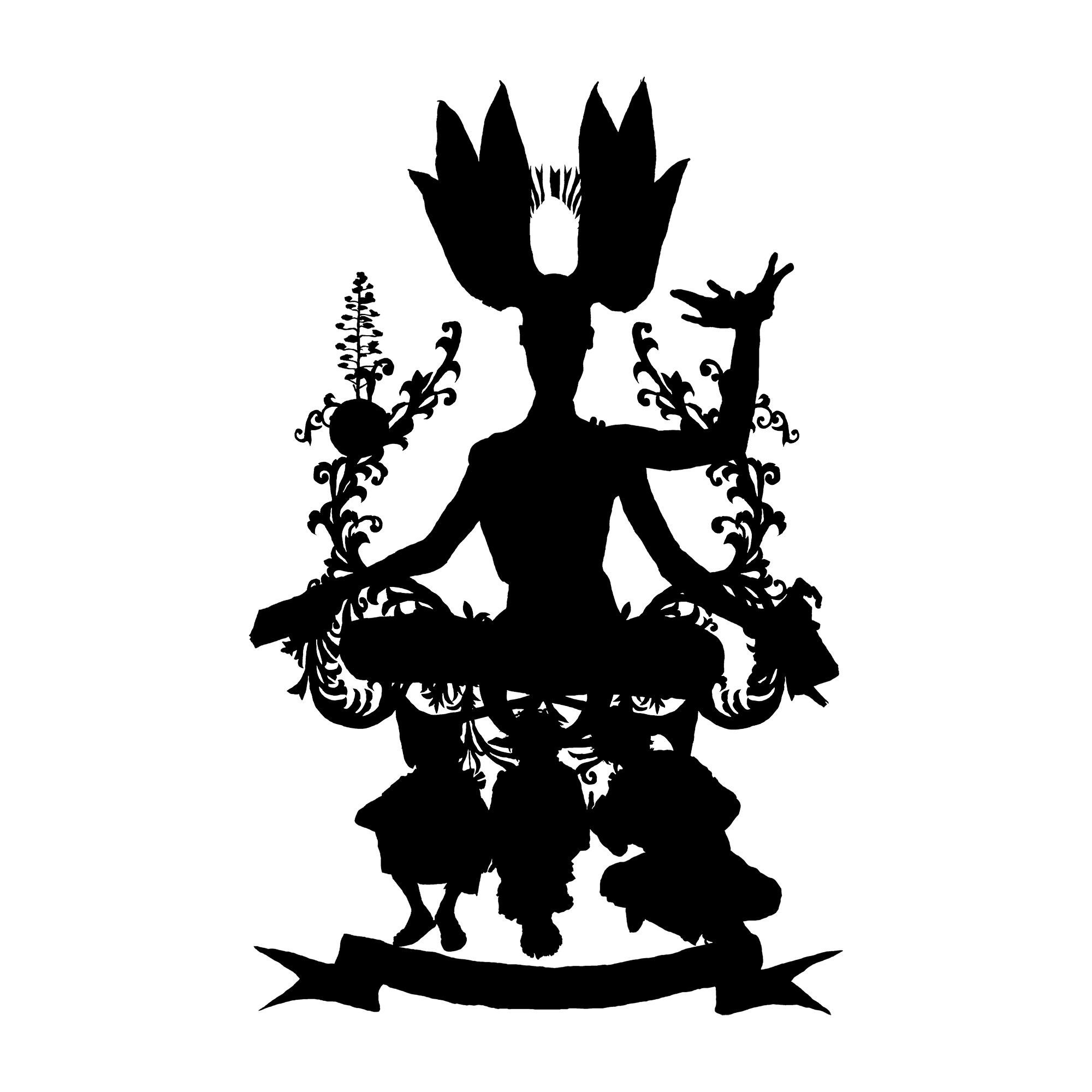C. M. Kosemen
Artist and Researcher
***
Illustration
Digital and traditional-media works of palaeoart, speculative evolution, and associated subjects.
Visit here for a selection of my licenseable scientific illustrations.
Visit here
to commission creature illustrations from me.
Visit here for a tutorial of my illustration process.
An intelligent river dolphin

Illustration of an intelligent river dolphin descended from extant Iniid Amazonian river dolphins. Not a real animal but an exercise in speculative evolution, designed for the Orion's Arm Universe Project.
***
Speculative "Herreravian"

Study of a Herreravian, a hypothetical creature from a bird-like clade which palaeontologist Greg S. Paul once proposed for Herrerasauridae + Protoavis.
***
"Pale crawler" cryptid re-imagined
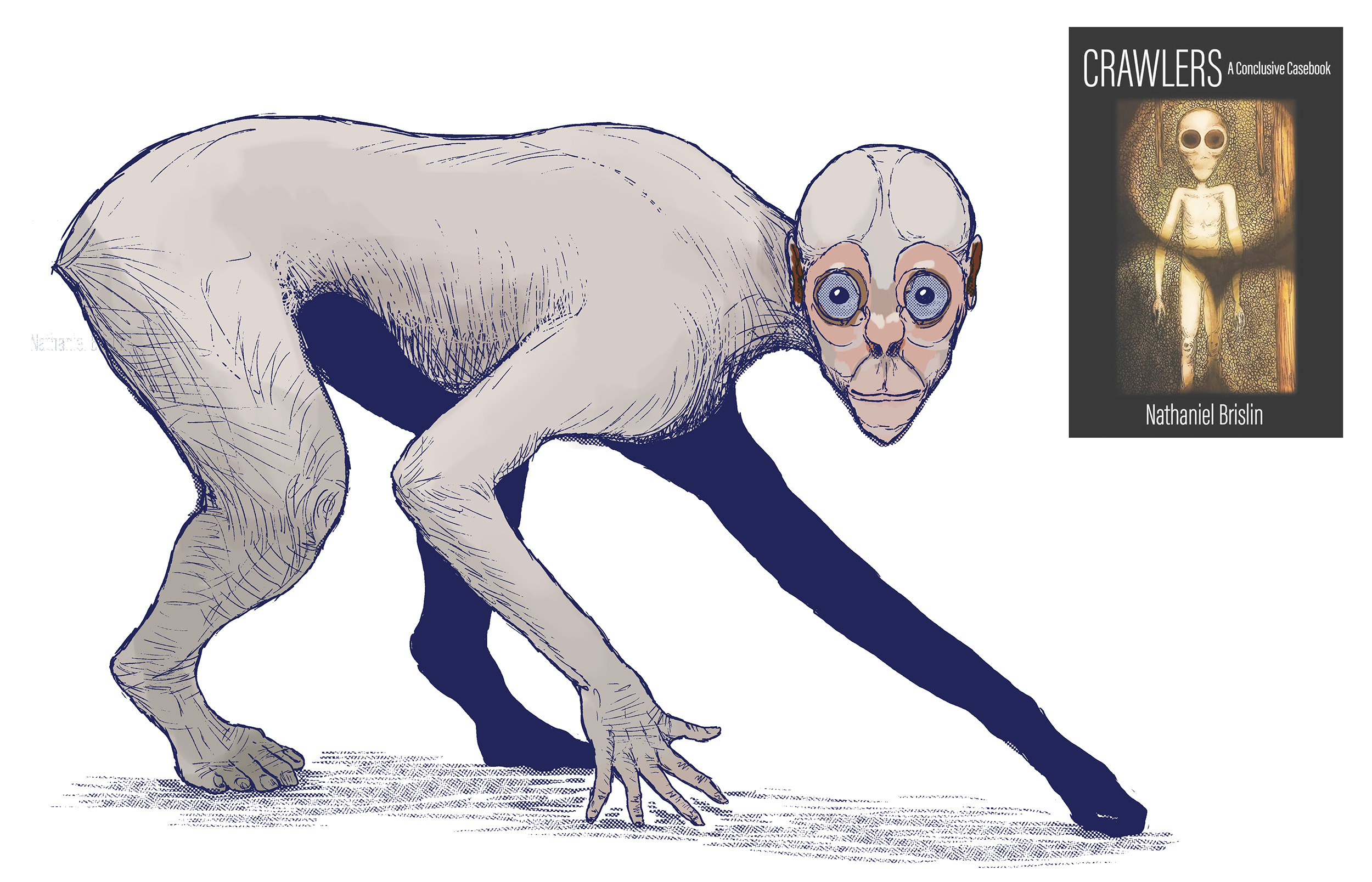
Illustration of an infamous North American "pale crawler" cryptid, realistically imagined as a tailless, boreal form of New World monkey. Created to accompany Nathaniel Brislin's book, Crawlers: A Conclusive Casebook (ISBN: 978-1955471701).
***
Sauropod portraits
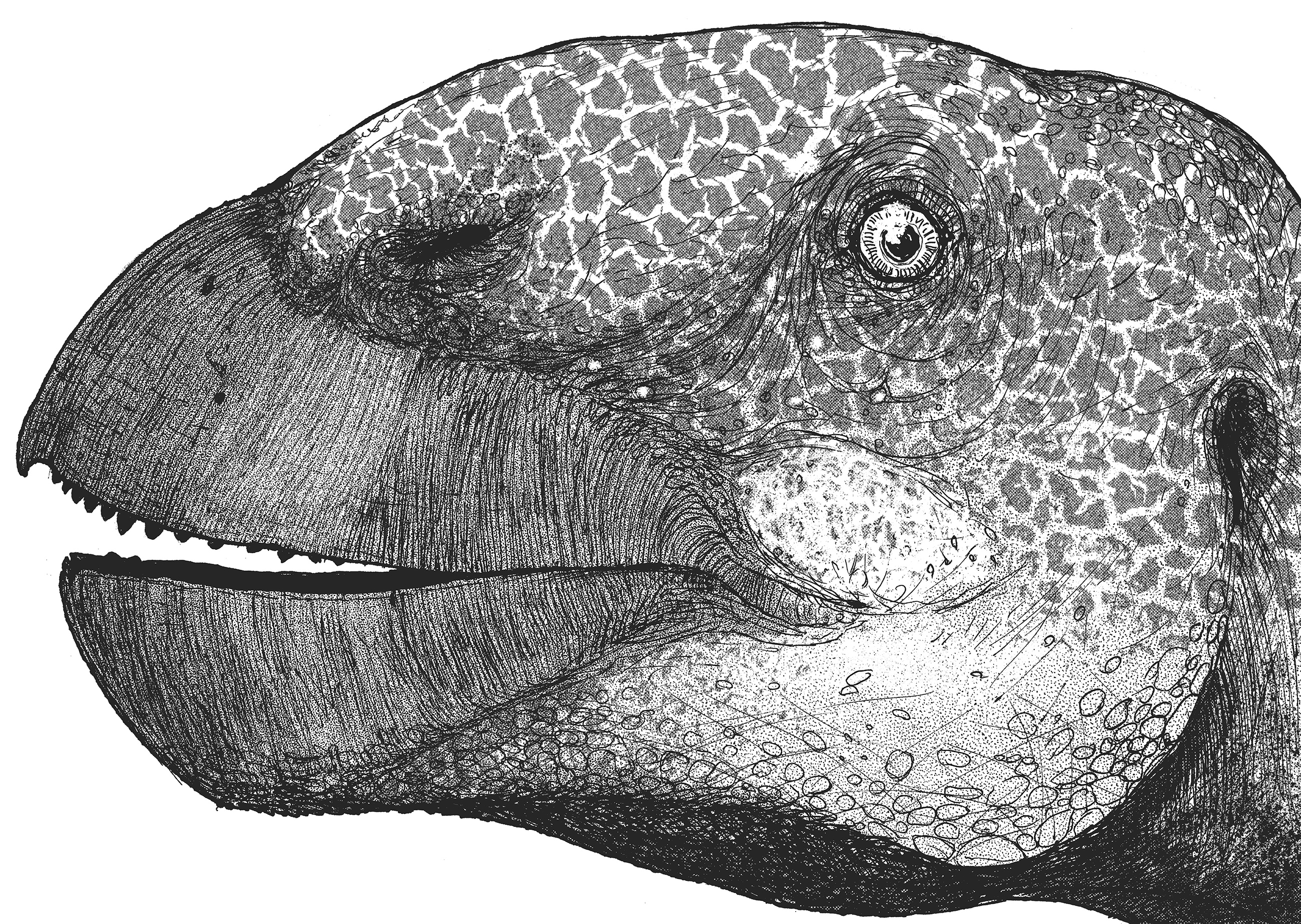
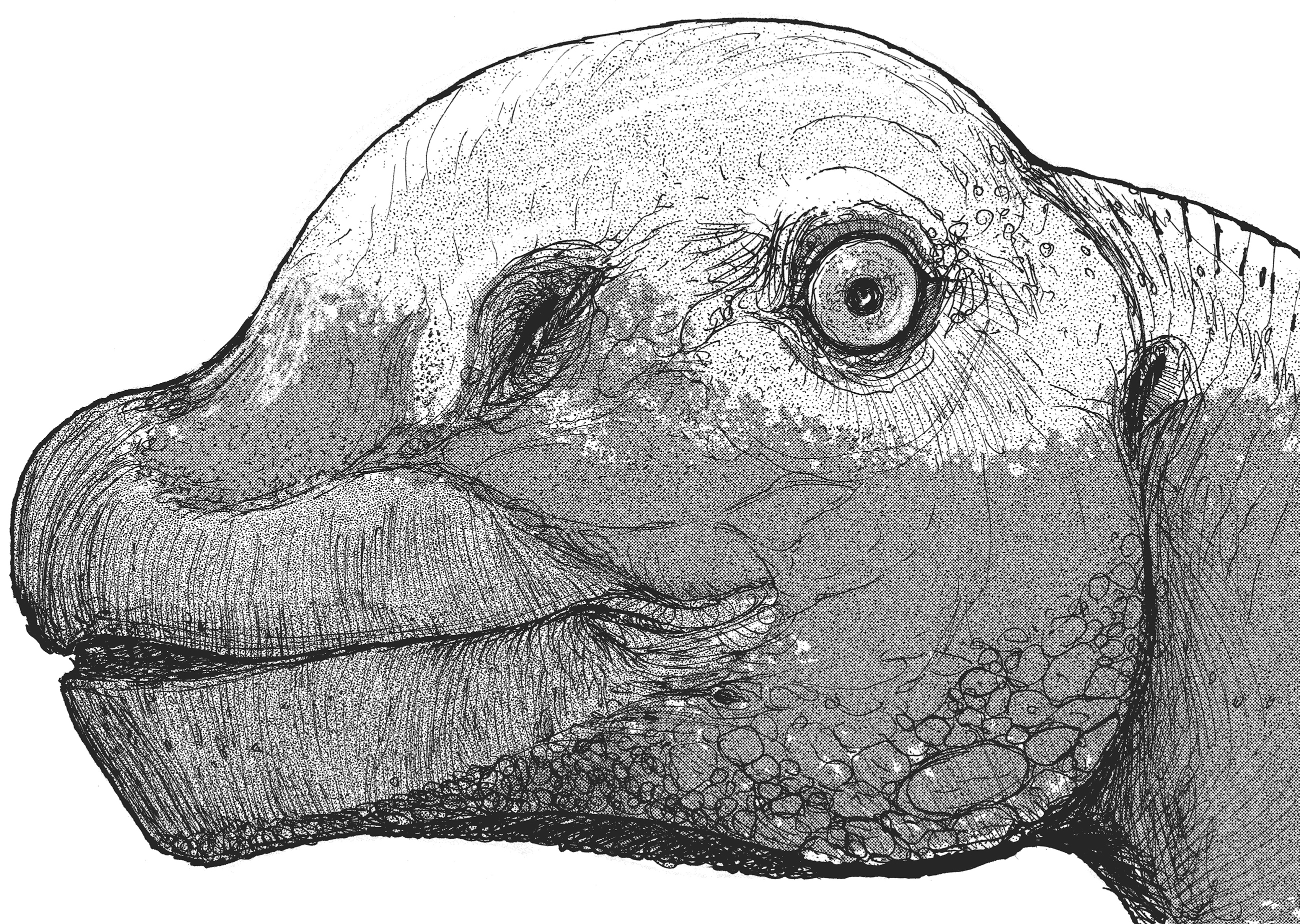
Portraits of Shunosaurus and Brachiosaurus; two members of the long-necked sauropod dinosaur lineage.
***
An alien dragoon
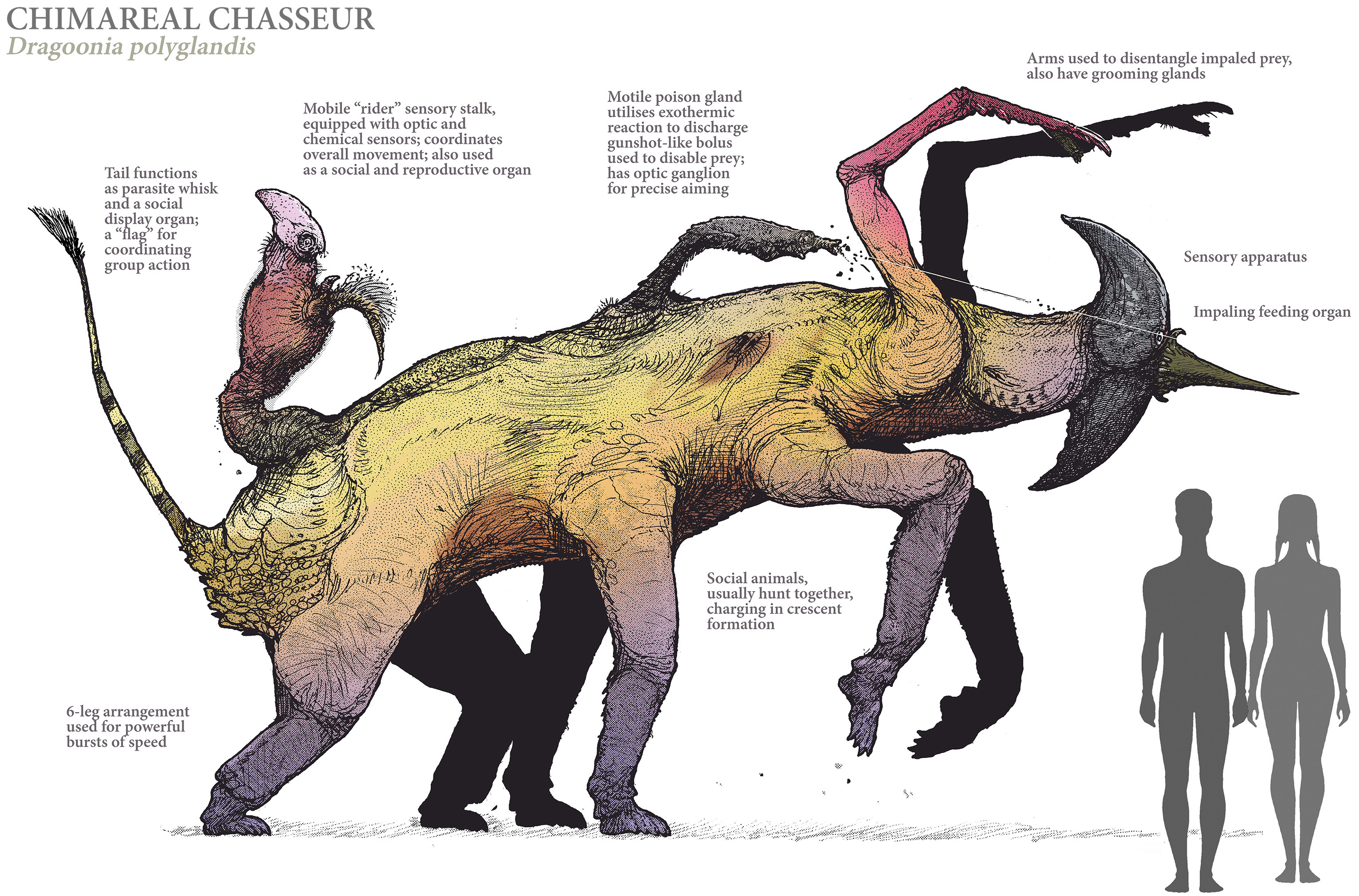
Labeled concept art of a monstrous chimareal chasseur, Dragoonia polyglandis, created for the Phtanum B speculative evolution project.
***
Deconstructing Spinosaurus
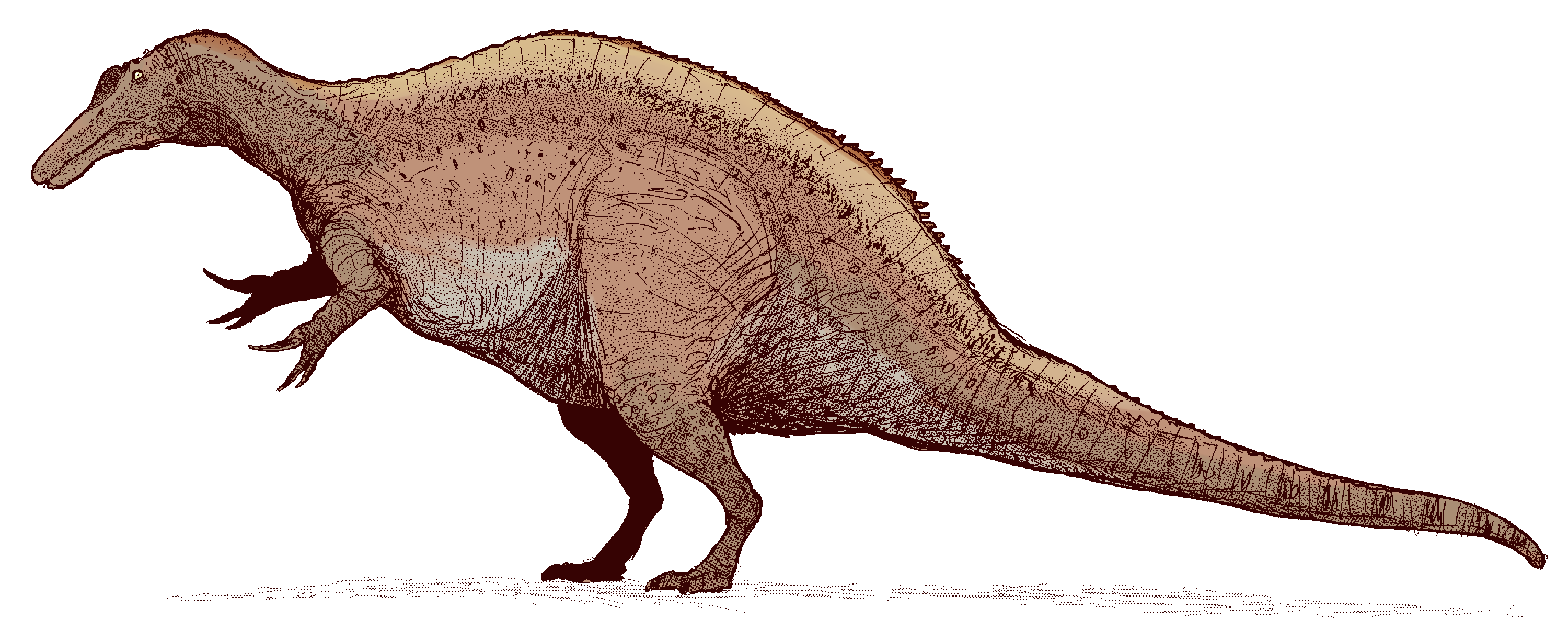
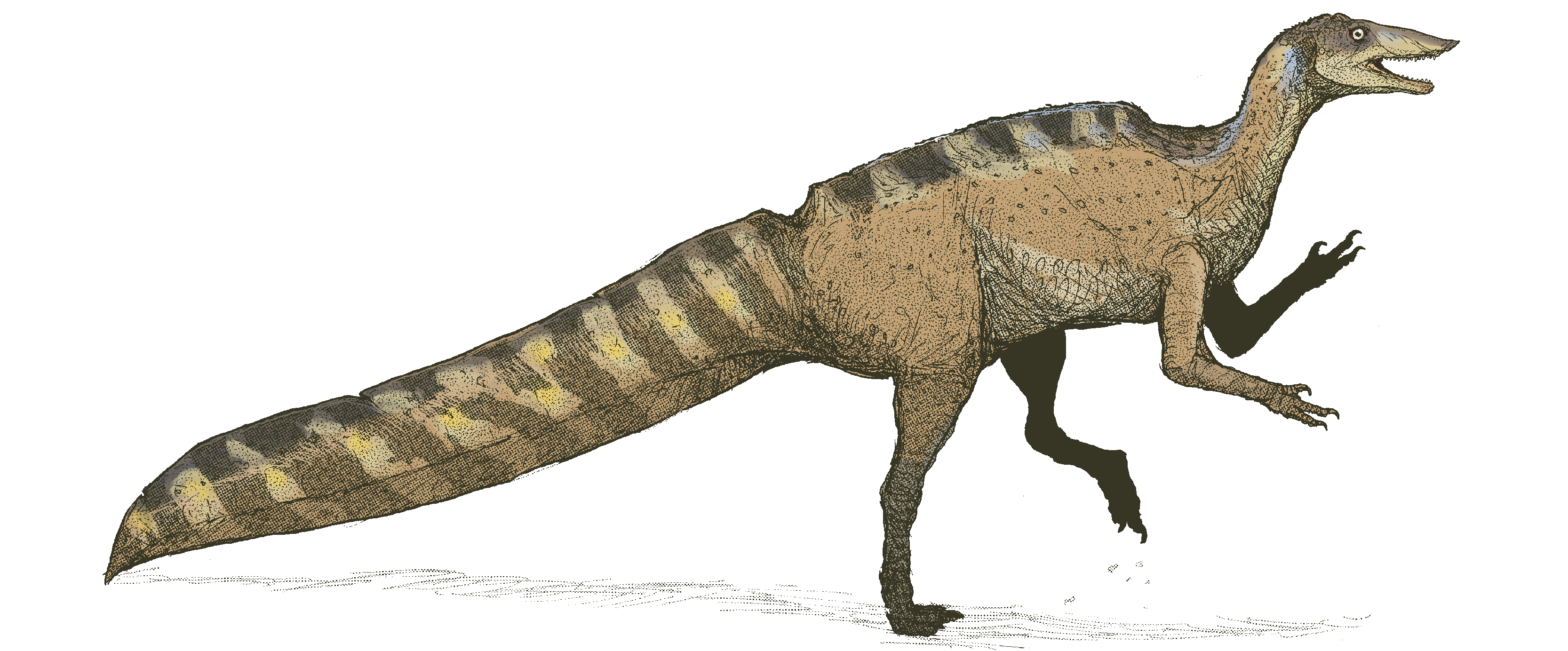
I personally suspect that Spinosaurus is a chimera. The tall spines initially described by Ernst Stromer
in 1915 clearly come from a tall-spined, Baryonyx-or-Suchomimus-like animal - perhaps a bear-like littoral generalist. The deep tail with paddle-like projections, described in 2020, on the other hand - has scant evidence connecting it to the larger animal. Clearly, many strange semi-aquatic dinosaurs shared the habitat Spinosaurus lived in. Why must every unusual fossil from there be lumped into Spinosaurus?! I thus split the 2020 tail into a new animal, speculatively named Kryptonatator vexilluros, more closely related to lithe, Deltadromeus-like predators. A properly aquatic swimmer, Kryptonatator would have sported specialisations for swimming which would later, independently be echoed in waterfowl-like, tail-powered swimming theropods such as Halzskaraptor.
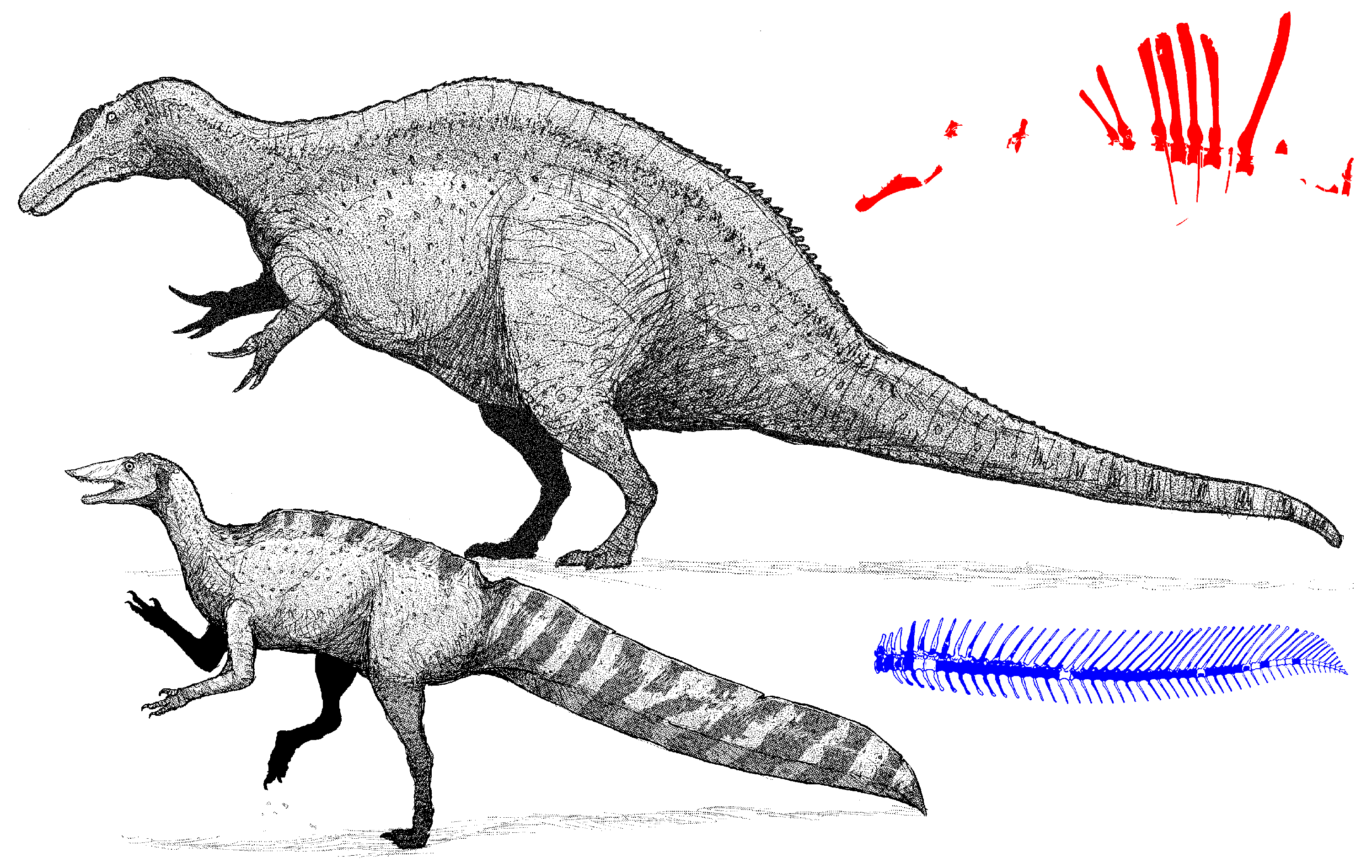
***
Anatorhynchus

Illustration of an Anatorhynchus - a small, duck-billed water serpent. Created as the result of a prize draw among various concepts submitted by my Twitter friends. Not a real animal, but the result of an exercise in speculative evolution.
***
An Ahulph from Jack Vance's Durdane series
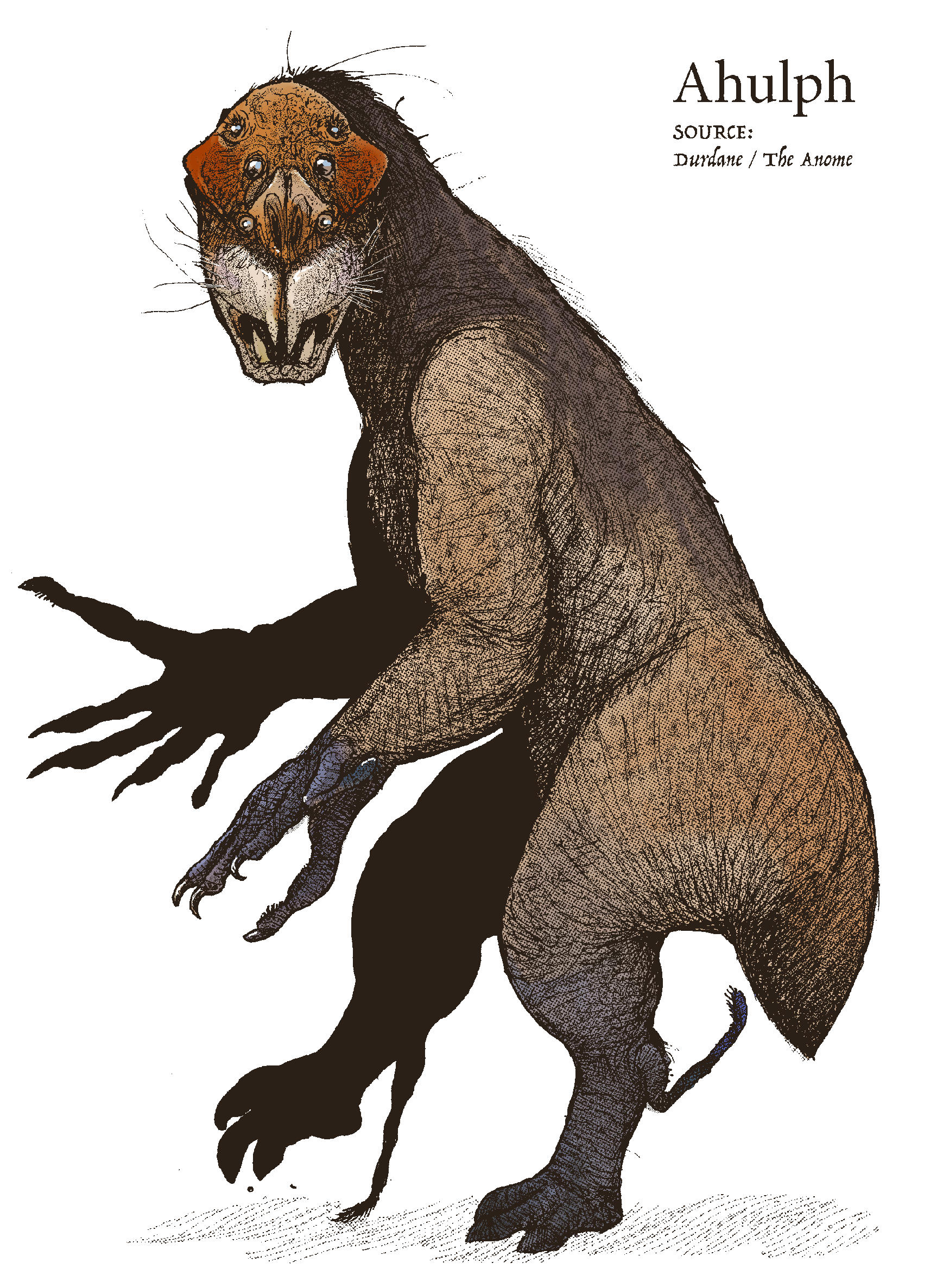
Illustration of an Ahulph - a dog-and-spider-like indigene to the world of Durdane. The thin digits on its legs are scent organs that help it track its quarry.
***
Mastigaunt
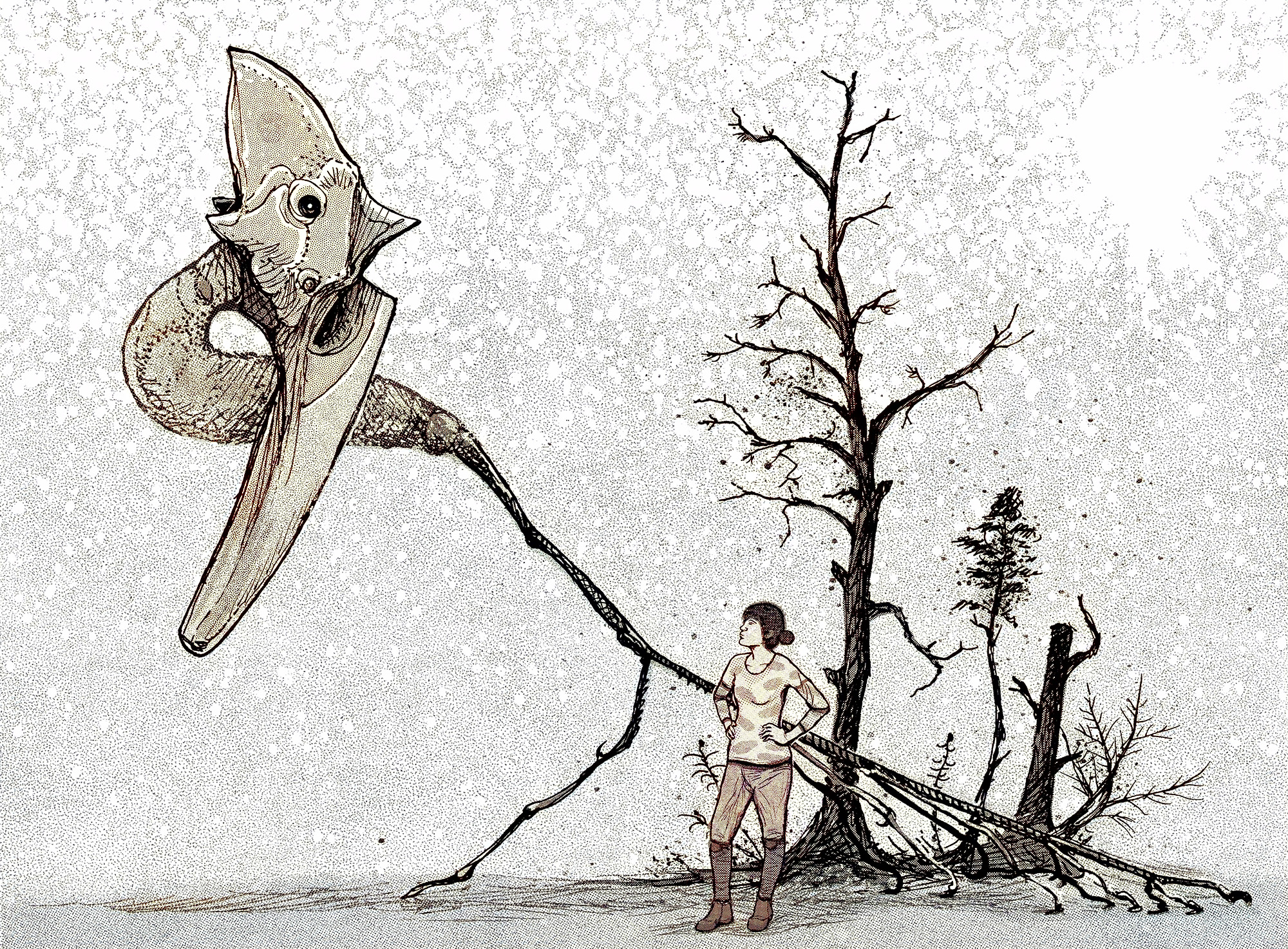
Illustration of a woman encountering a Mastigaunt - a strange, crescent-shaped quasi-machine that hovers above the ground thanks to its long, grounding tail filaments.
***
A mistaken Macrauchenia
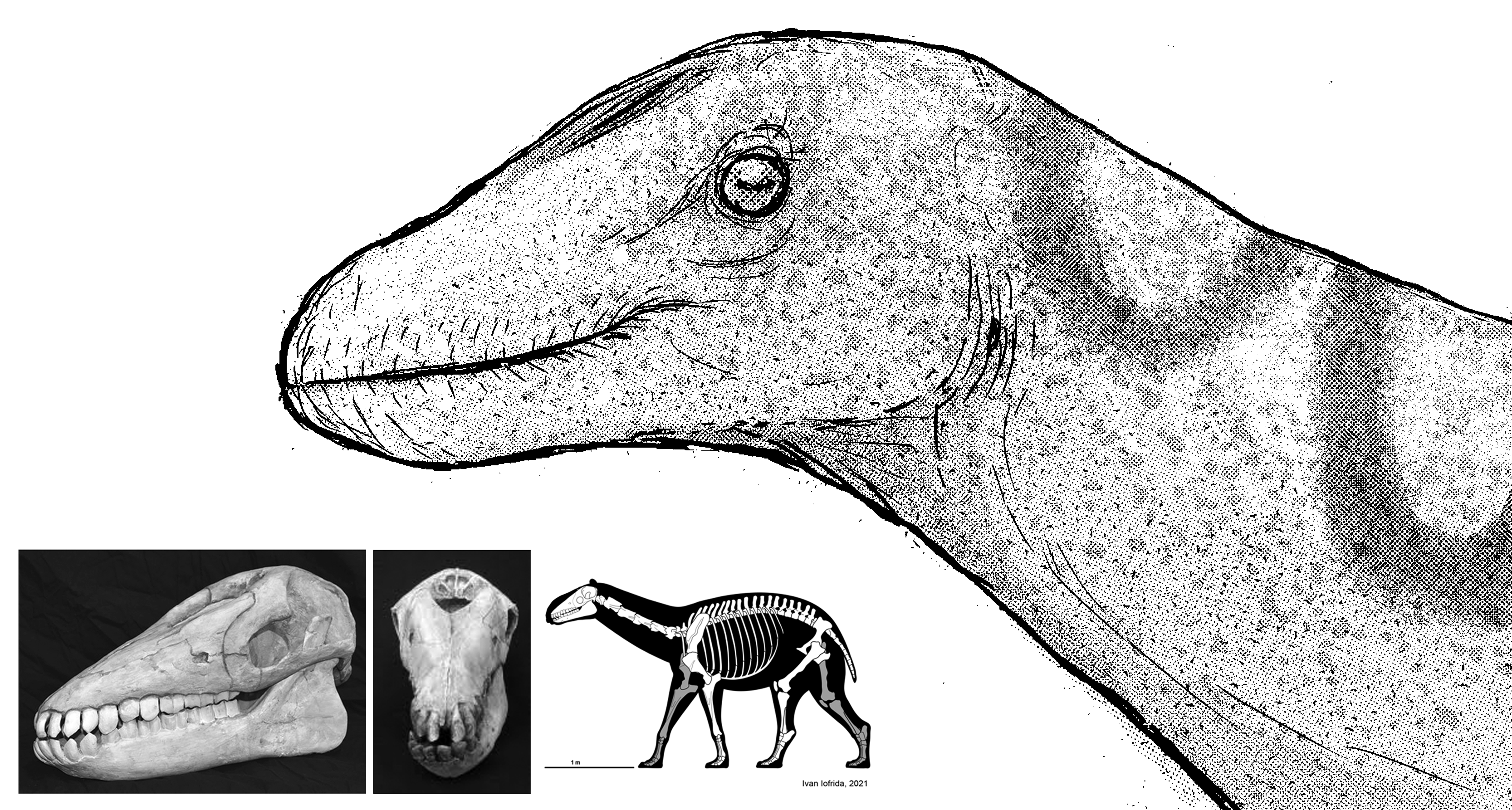
Purposefully-mistaken reconstruction of the strange herbivorous mammal Macrauchenia; portraying its strange, almost sauropod-like skull (see lower-left-side corner) as that of an aquatic, quasi-reptilian herbivore.
***
Atrociraptor
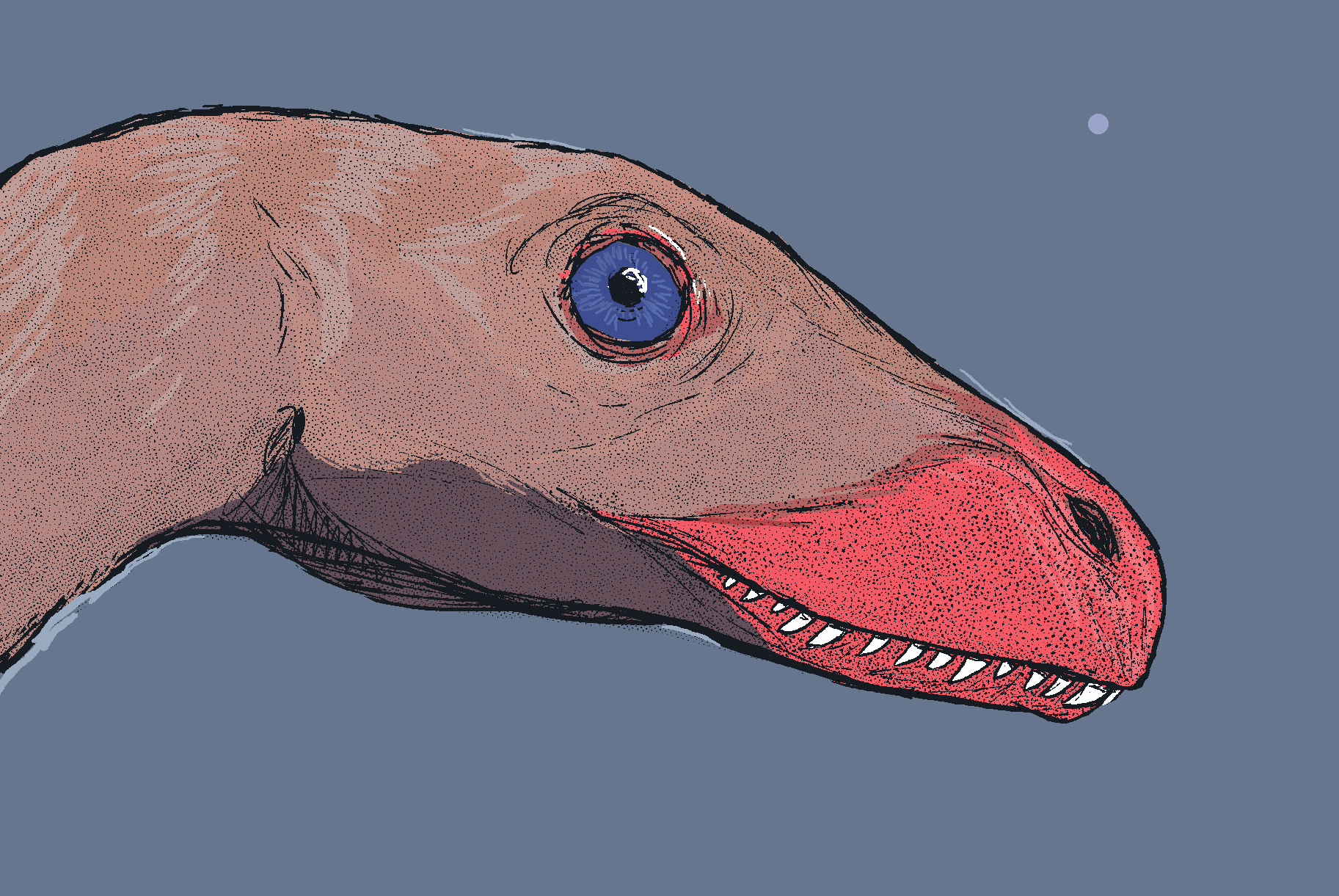
Illustration of the predatory dinosaur Atrociraptor, known from jaw fragments relatively robust when compared to similar forms.
***
Eotyrannus
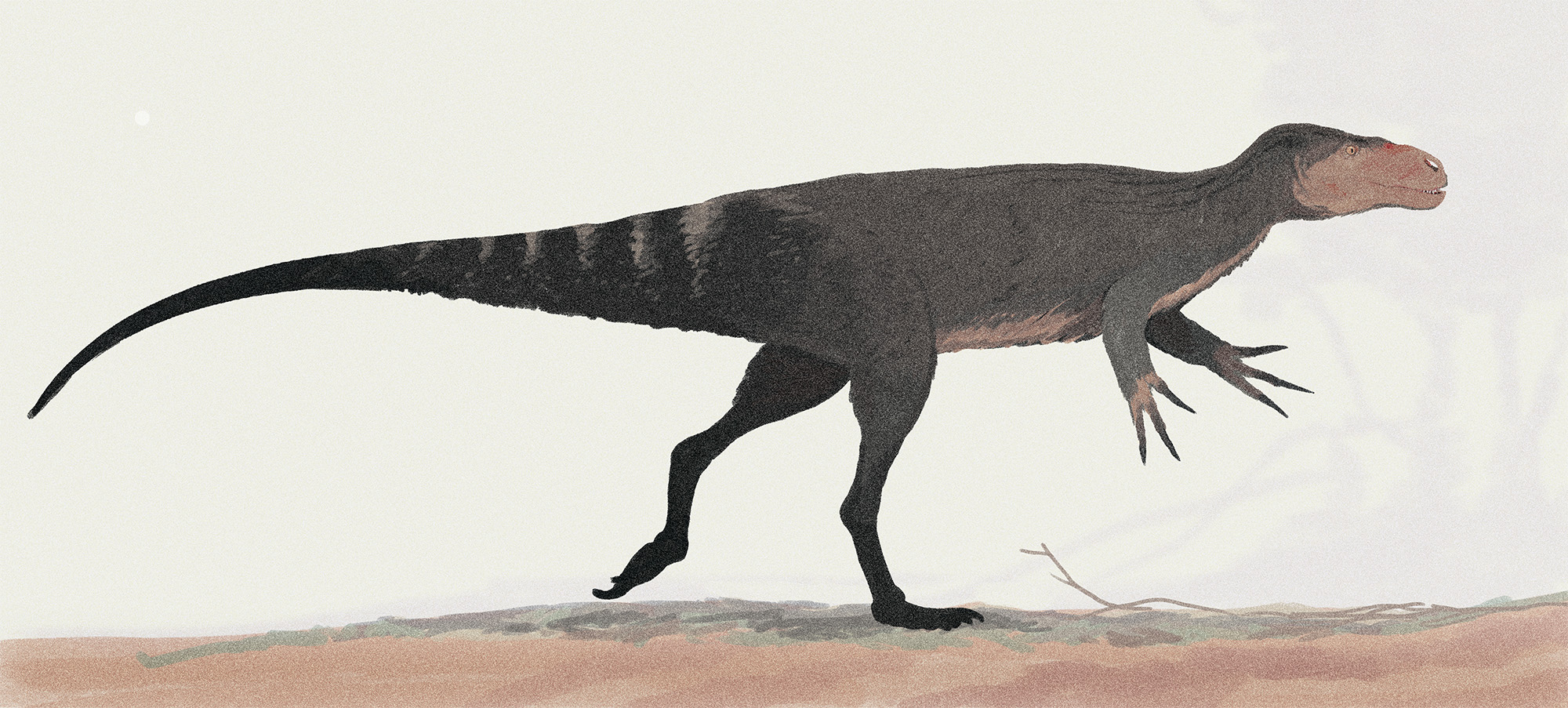
Illustration of the predatory dinosaur Eotryrannus, an early relative of tyrannosaur dinosaurs.
***
Omeisaurus
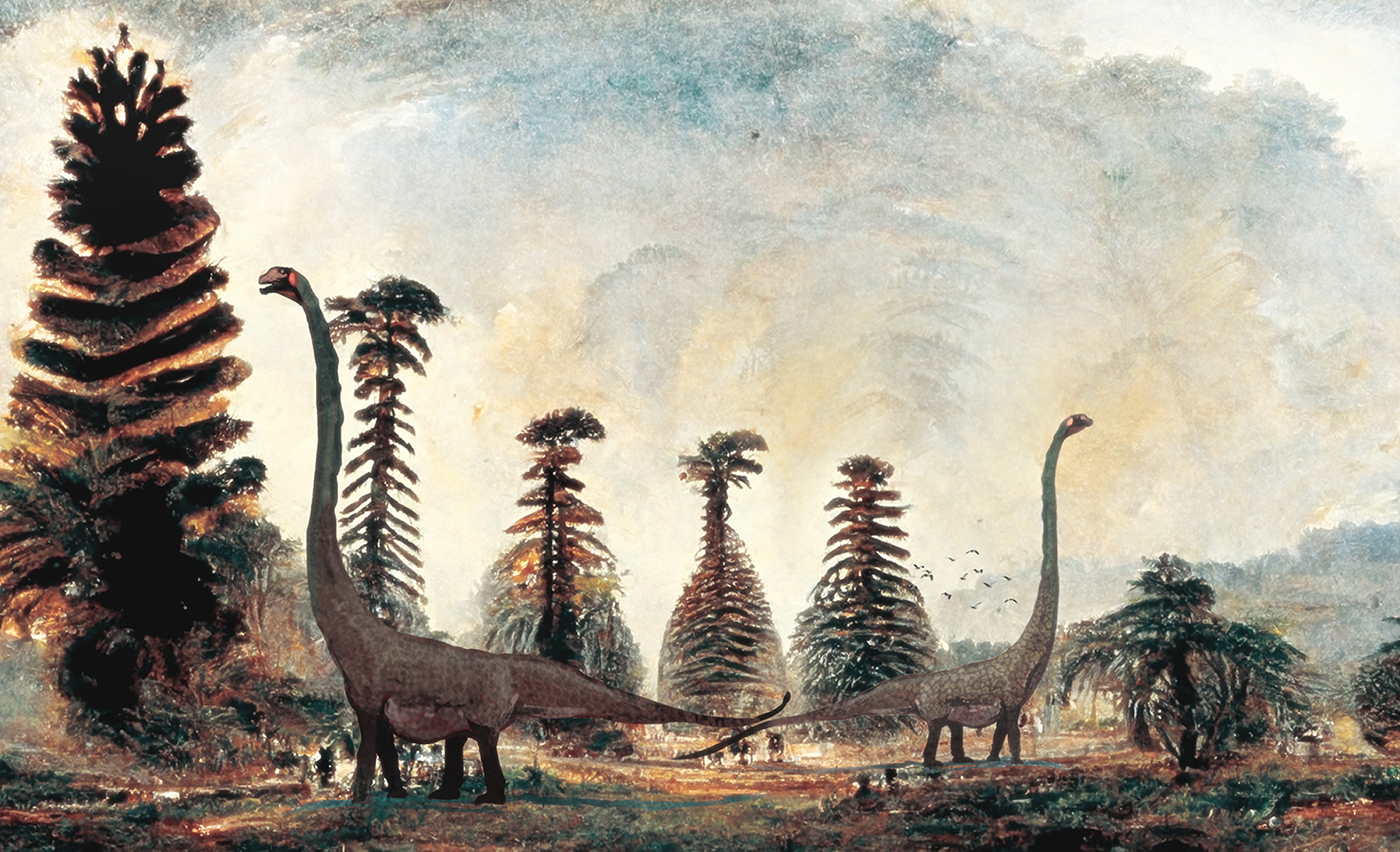
A male and female Omeisaurus, plant-eating dinosaurs with outlandishly-elongated necks, wander through a lush mid-Jurassic-era forest. Various background and foreground elements in this image were generated by the Midjourney A. I. program.
***
Ophiacodon
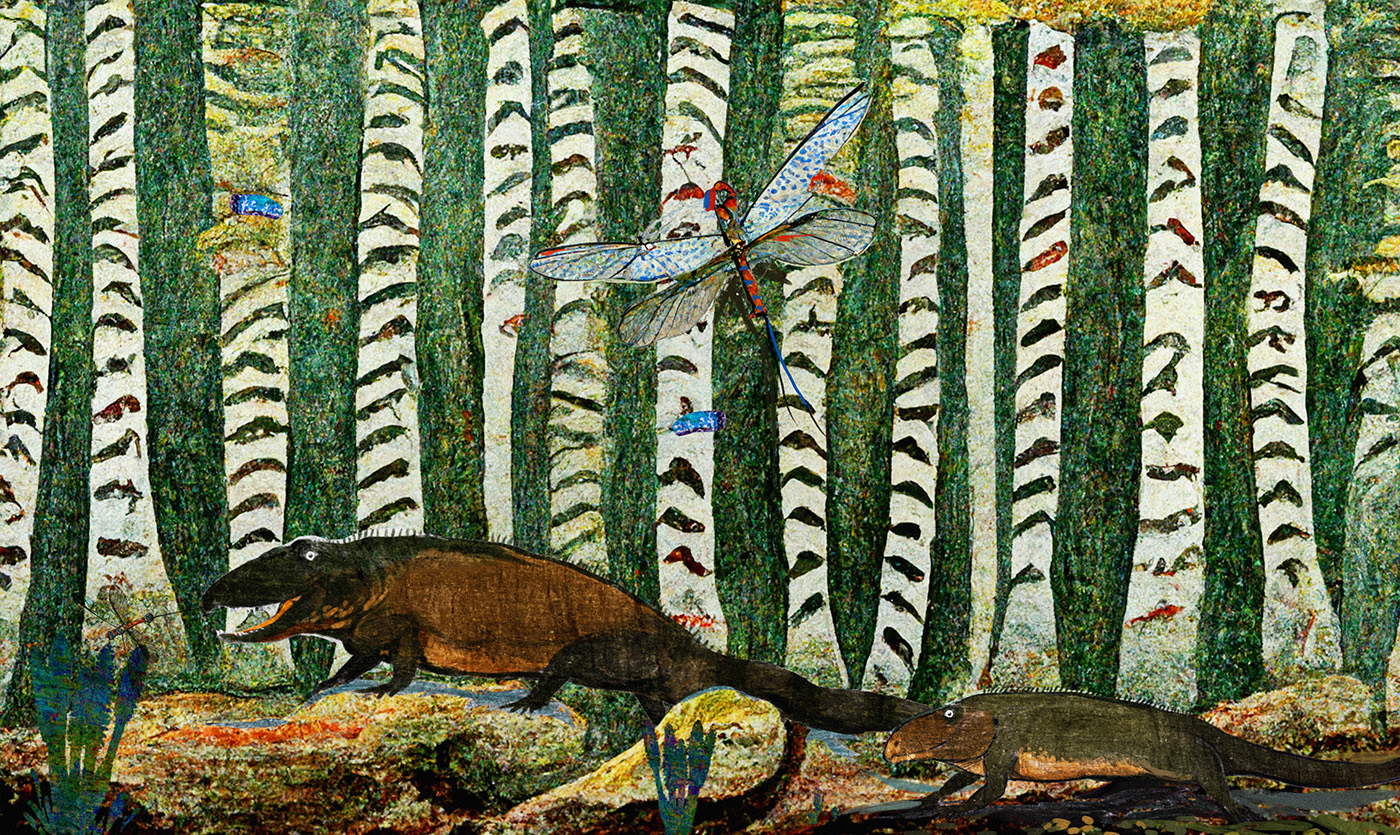
A male and female Ophiacodon, early mammal-like reptiles, wander through an impressionistic Carboniferous-era forest. Various background and foreground elements in this image were generated by the Midjourney A. I. program.
***
Velociraptor
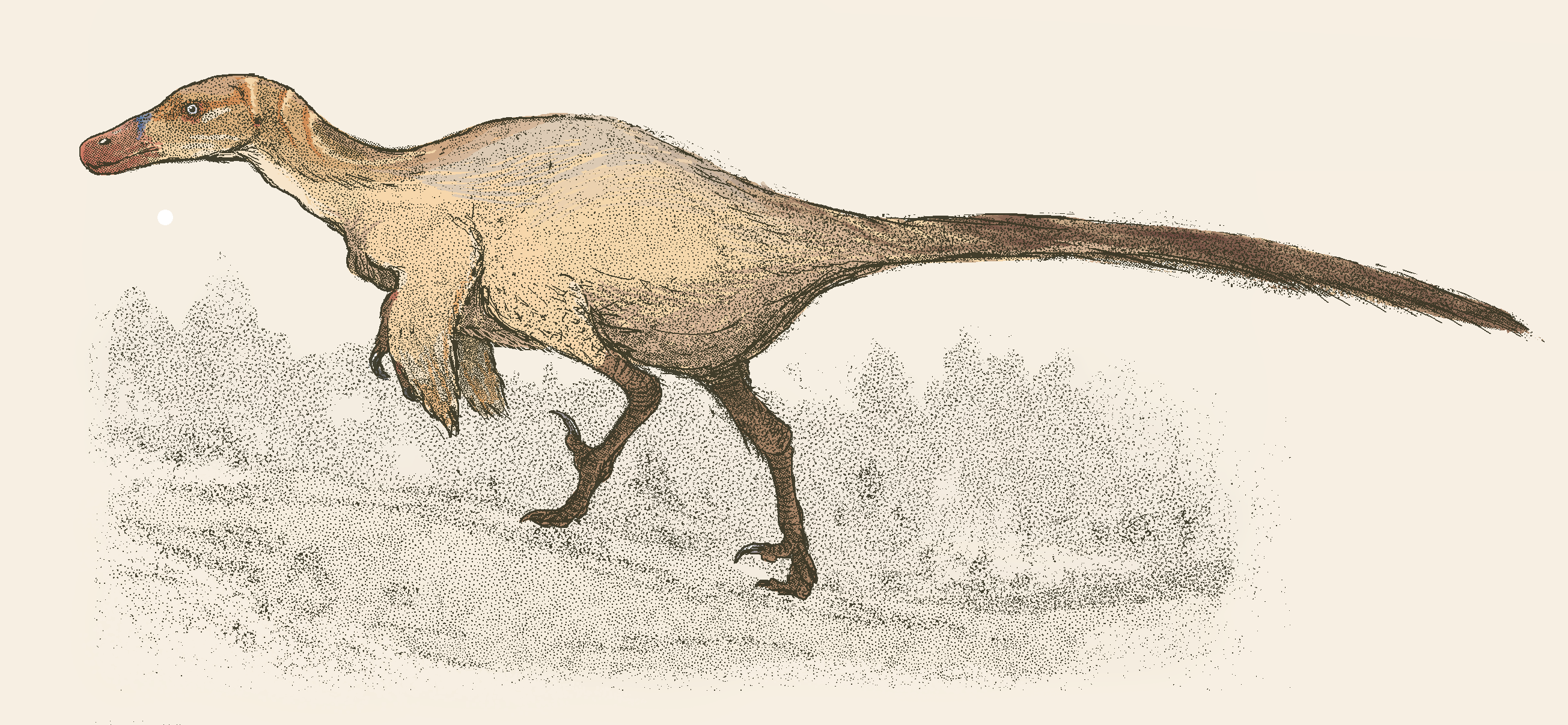
A colour drawing of the popular dinosaur Velociraptor in the style of Sir William Jardine's (1800-1874) Naturalists' Library.
***
Speculative dinosaur skull portraits generated by an A.I.
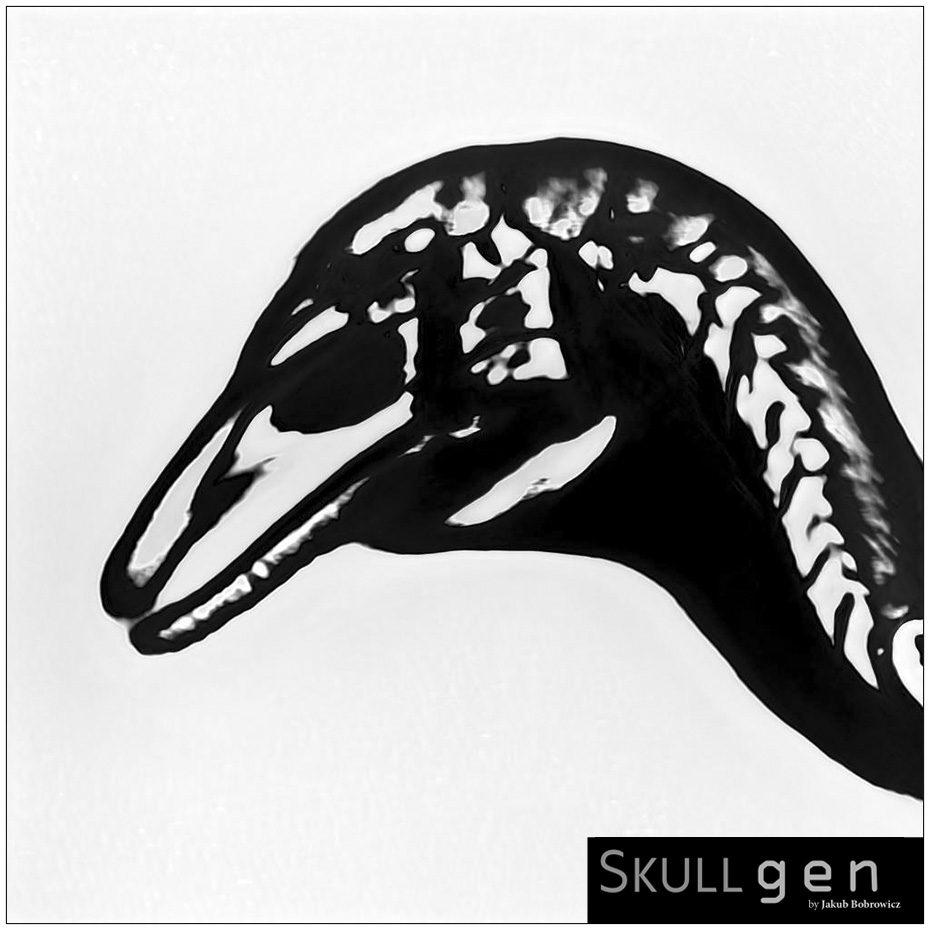
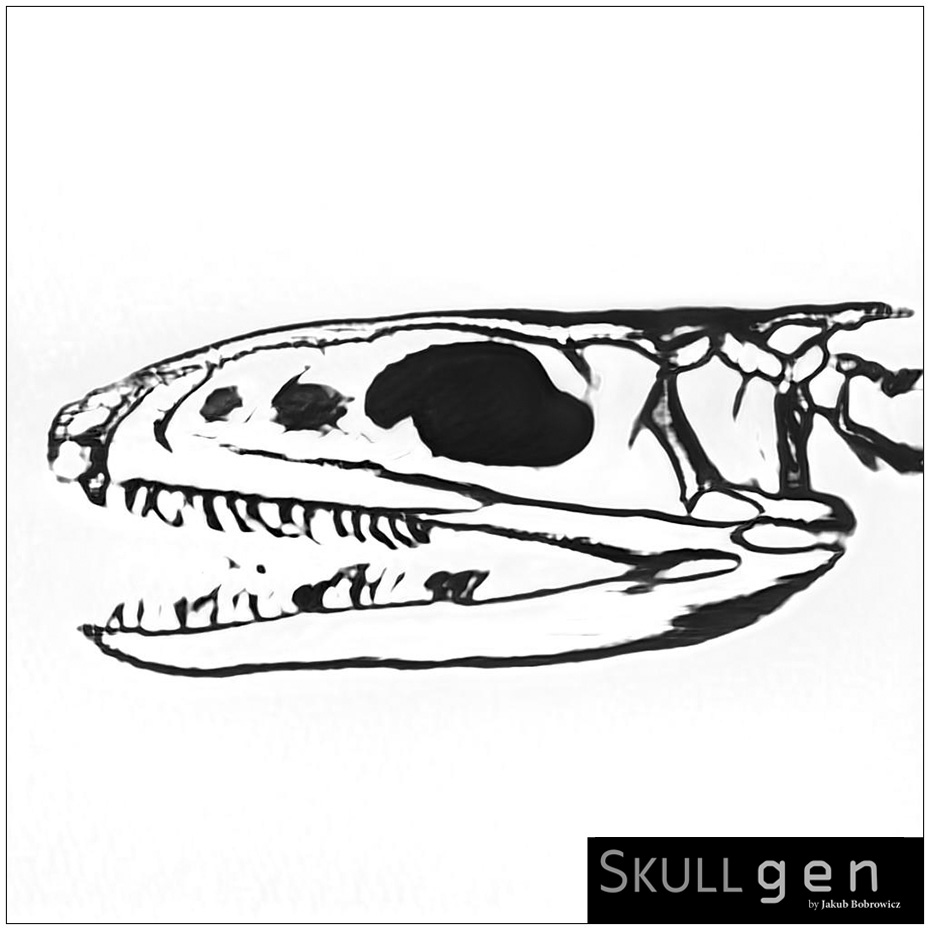
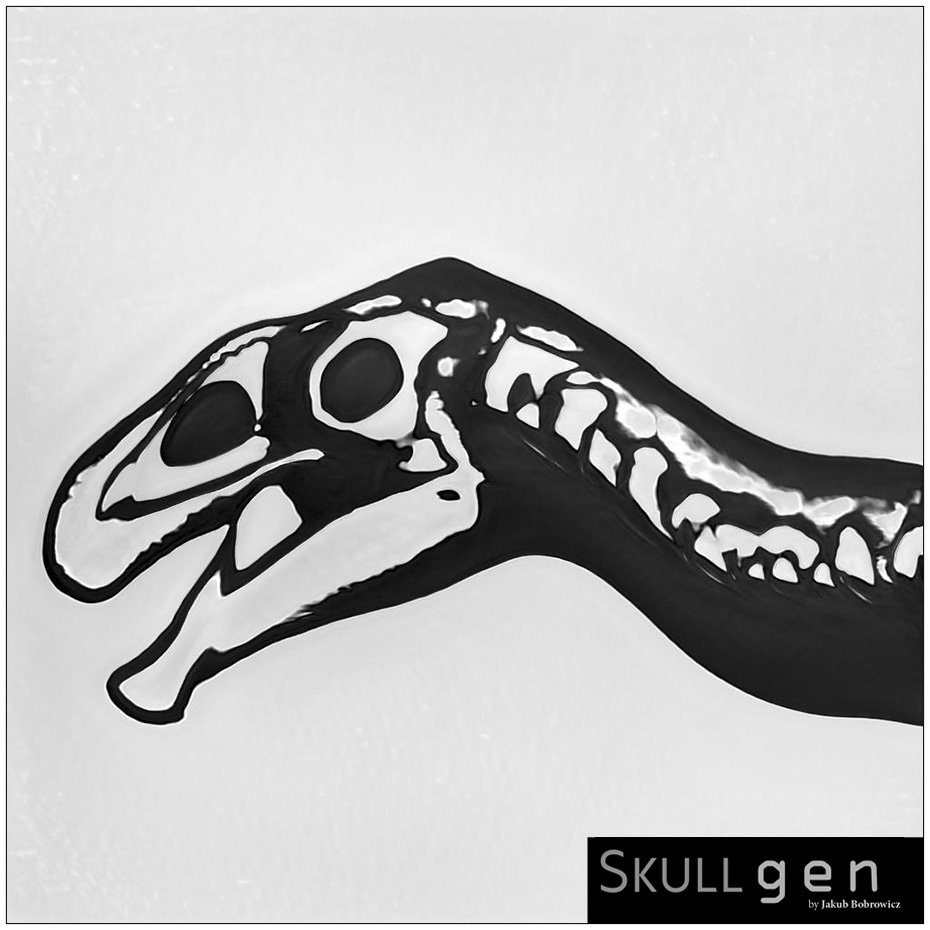
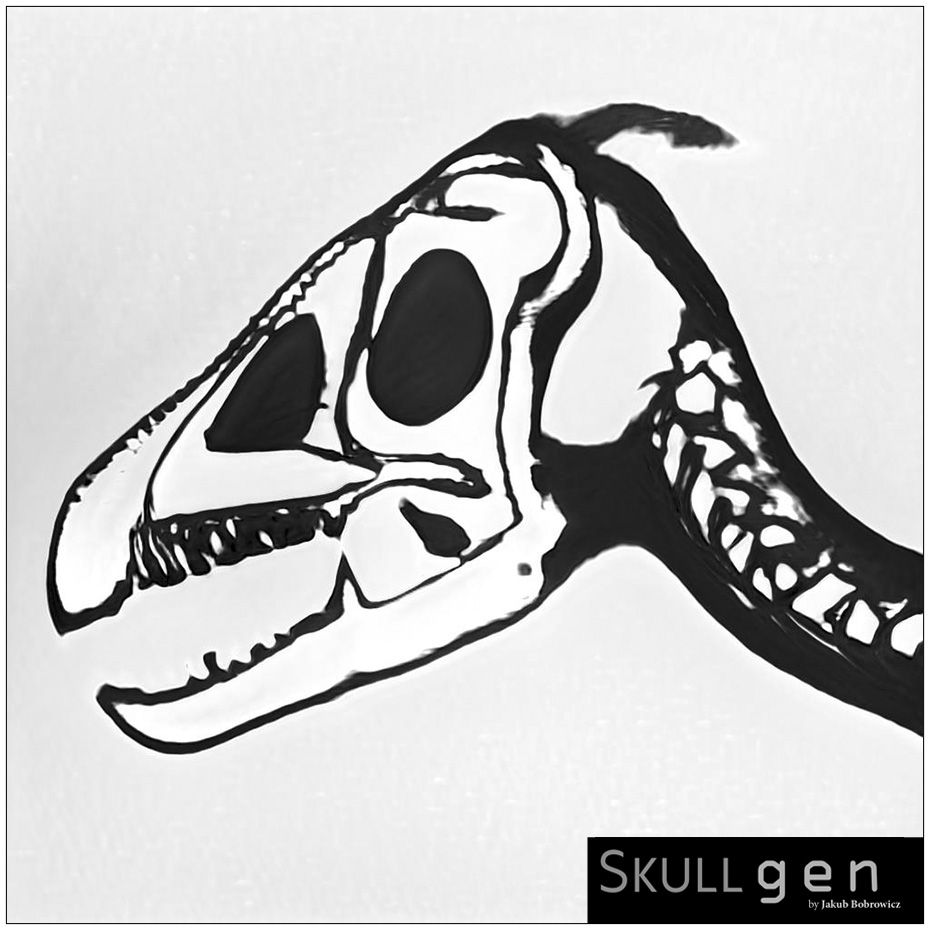
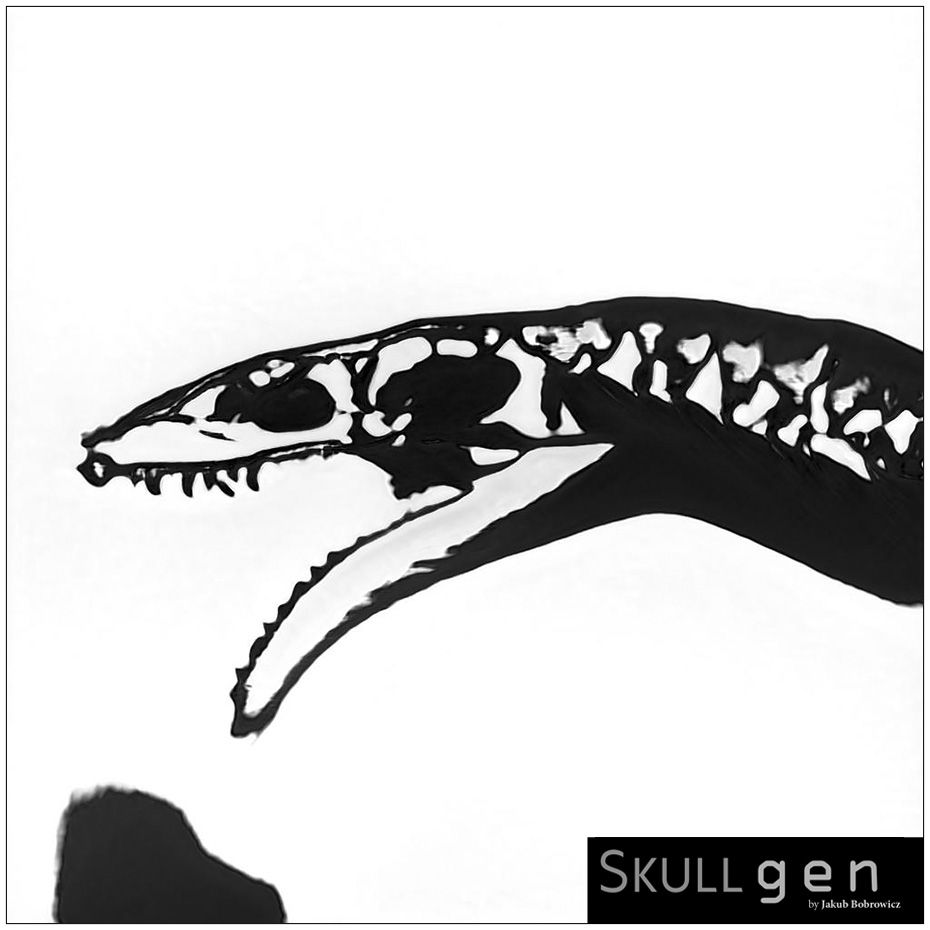
My friend Jakub Bobrowicz and I trained an A.I. to generate random dinosaur skull diagrams. I reconstructed five of the results below, and tried to imagine their phylogenetic affinities. Visit this link for a total collection of skull images and skeletal drawings generated by Jakub Bobrowicz's algorithms.
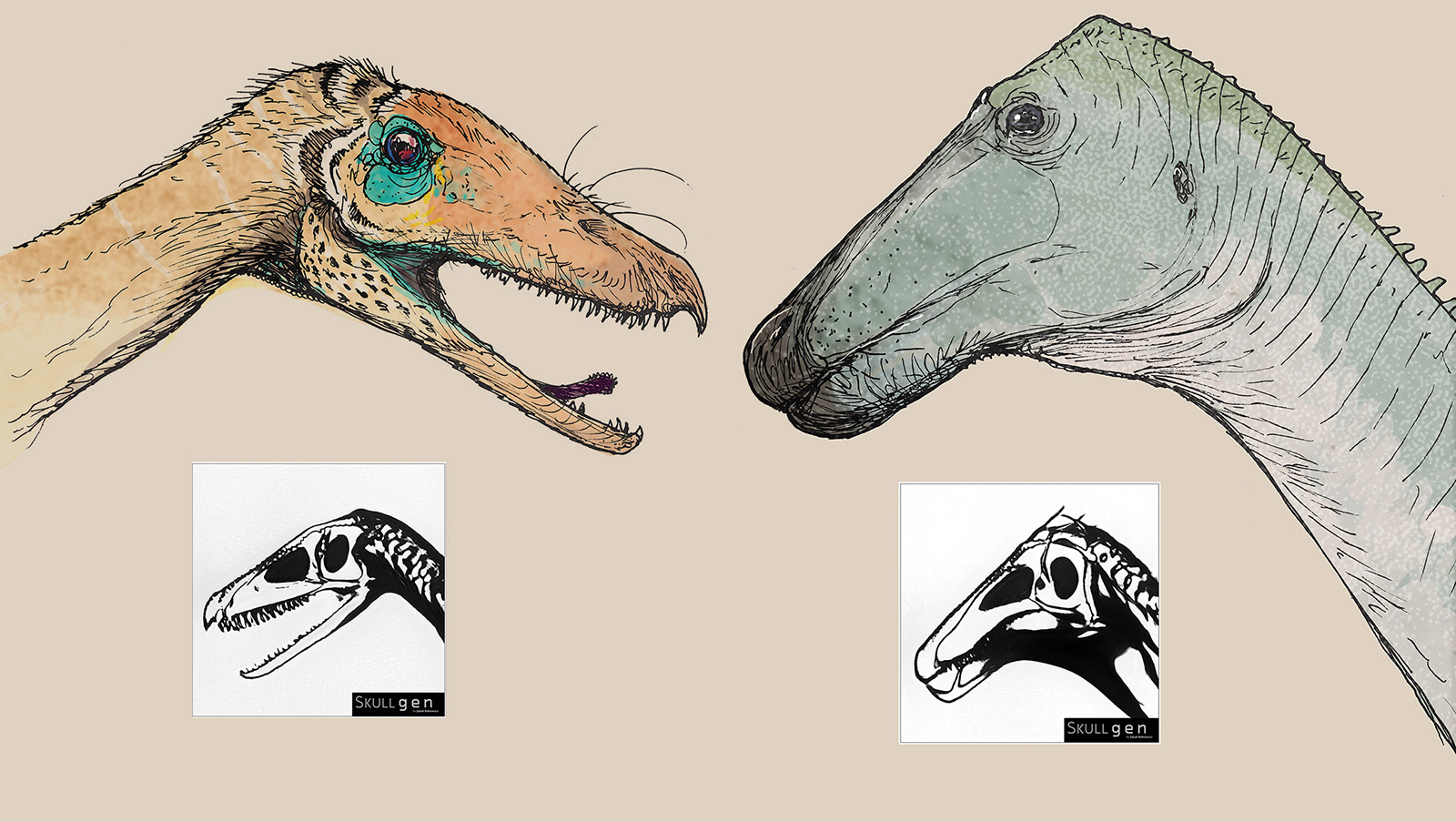
Proteodactylus, an early pterosaur relative.
Equops, a long-necked iguanodont with a horse-like face.
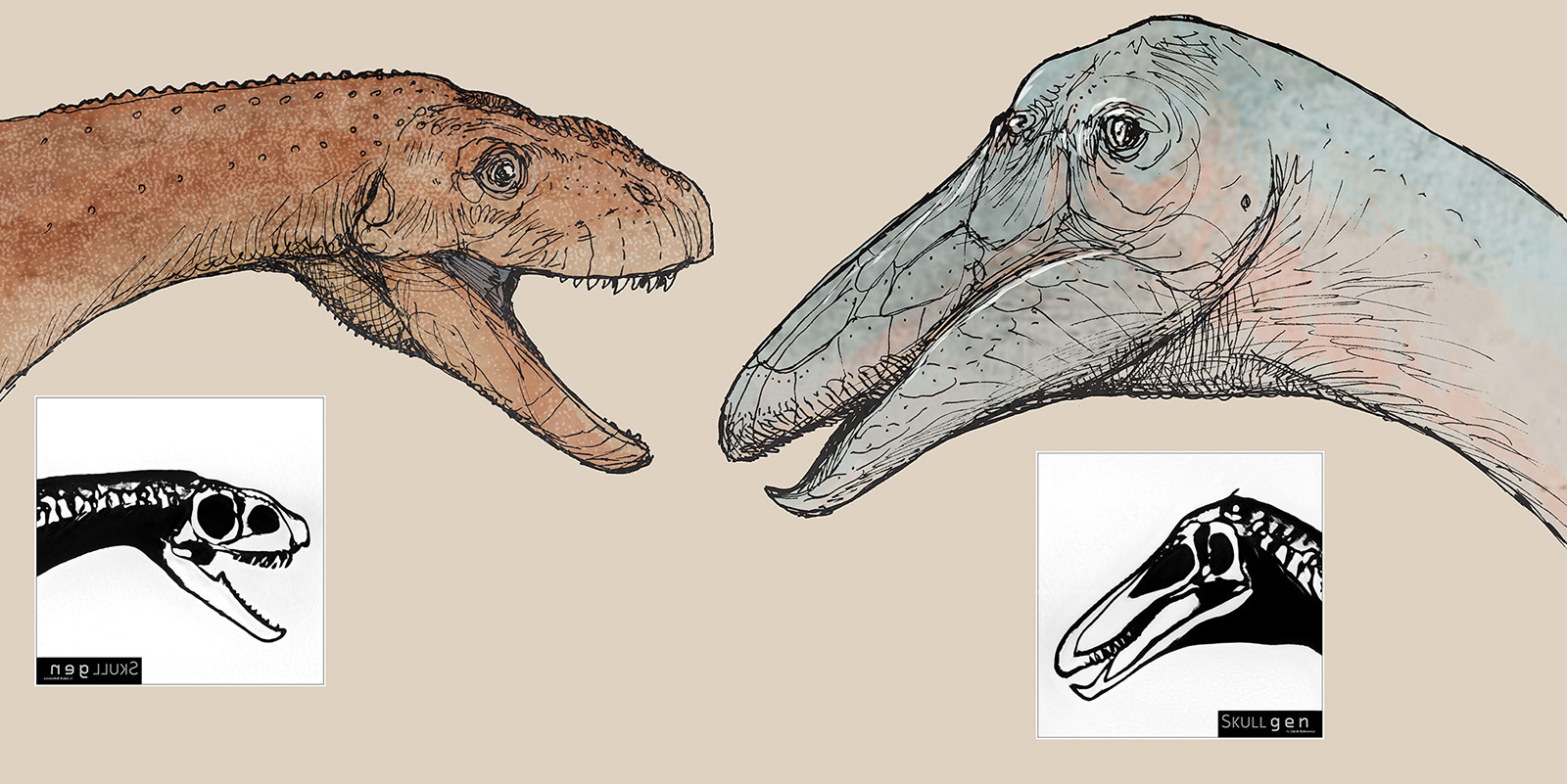
Ugrodon, an omnivorous archosaur of uncertain affinities.
Cetiopsis, an aberrant, filter-feeding? theropod.
***
Reconstructing dinosaur skeletal drawings generated by an A.I.
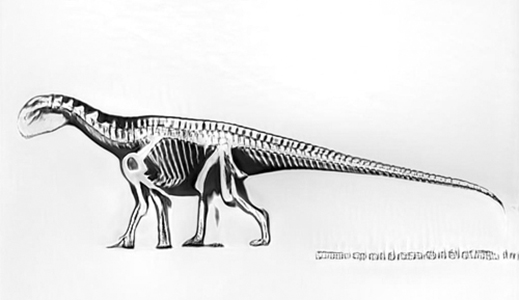
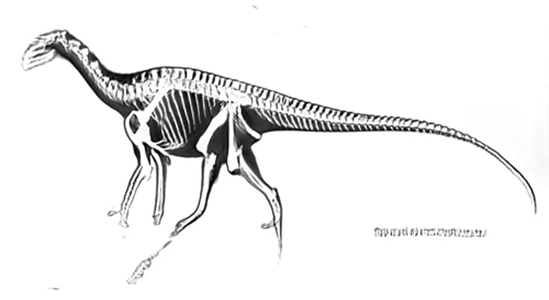
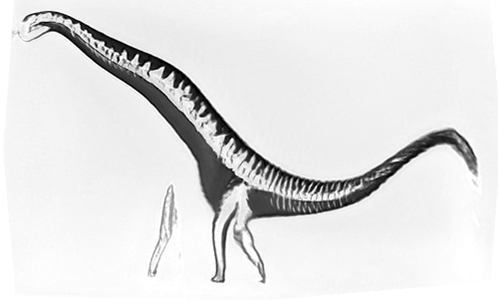
My friend Jakub Bobrowicz trained an A.I. to generate random dinosaur skeletal drawings. I illustrated five of the results below. Some look surprisingly realistic! Just for fun, I tried to imagine their phylogenic affinities. Visit this link for a total collection of skeletal drawings and skull images generated by Jakub Bobrowicz's algorithms.
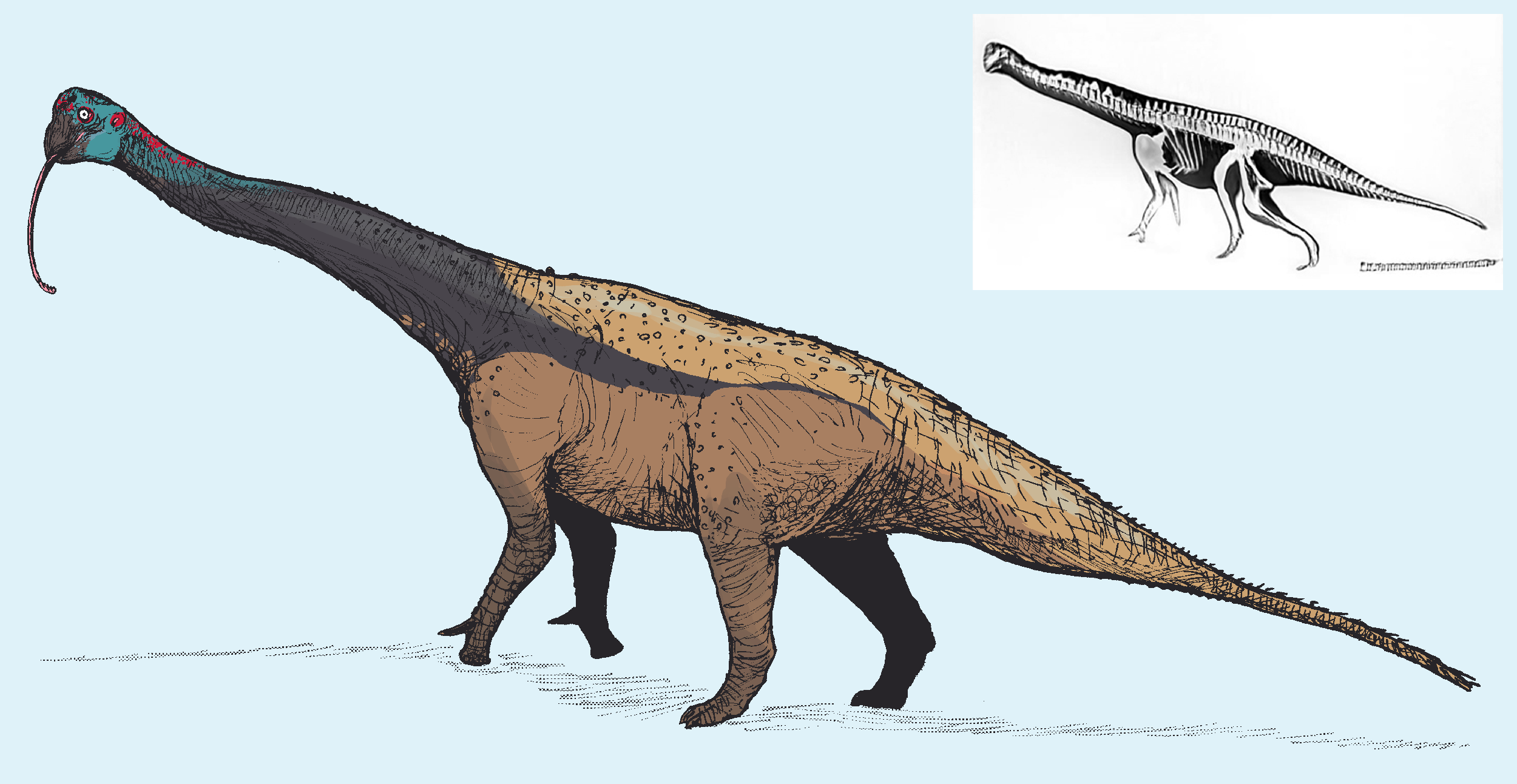
Glossosaurus, a derived early sauropod.
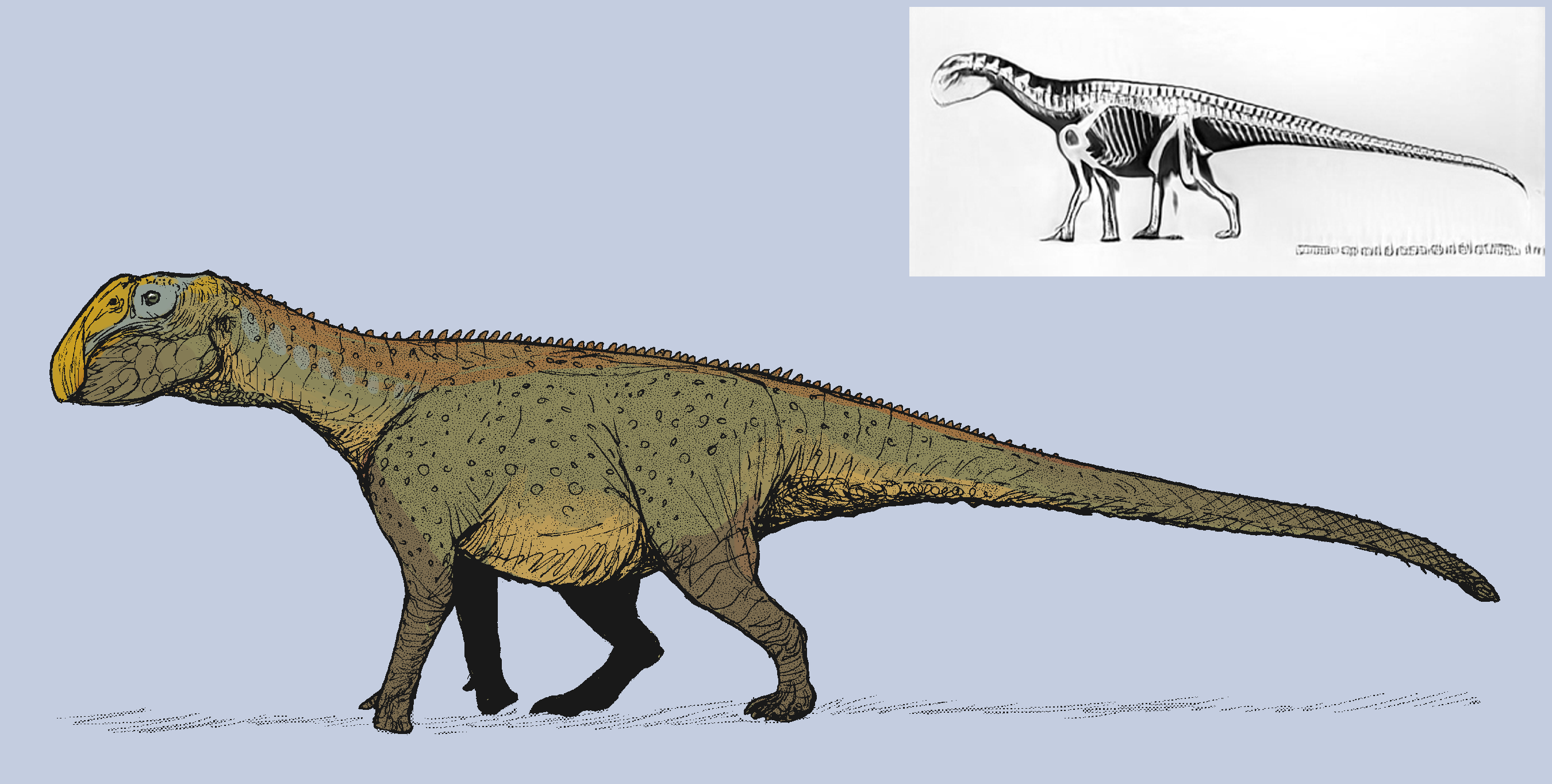
Magnacephalosaurus, a very-large headed relative of the iguanodonts.
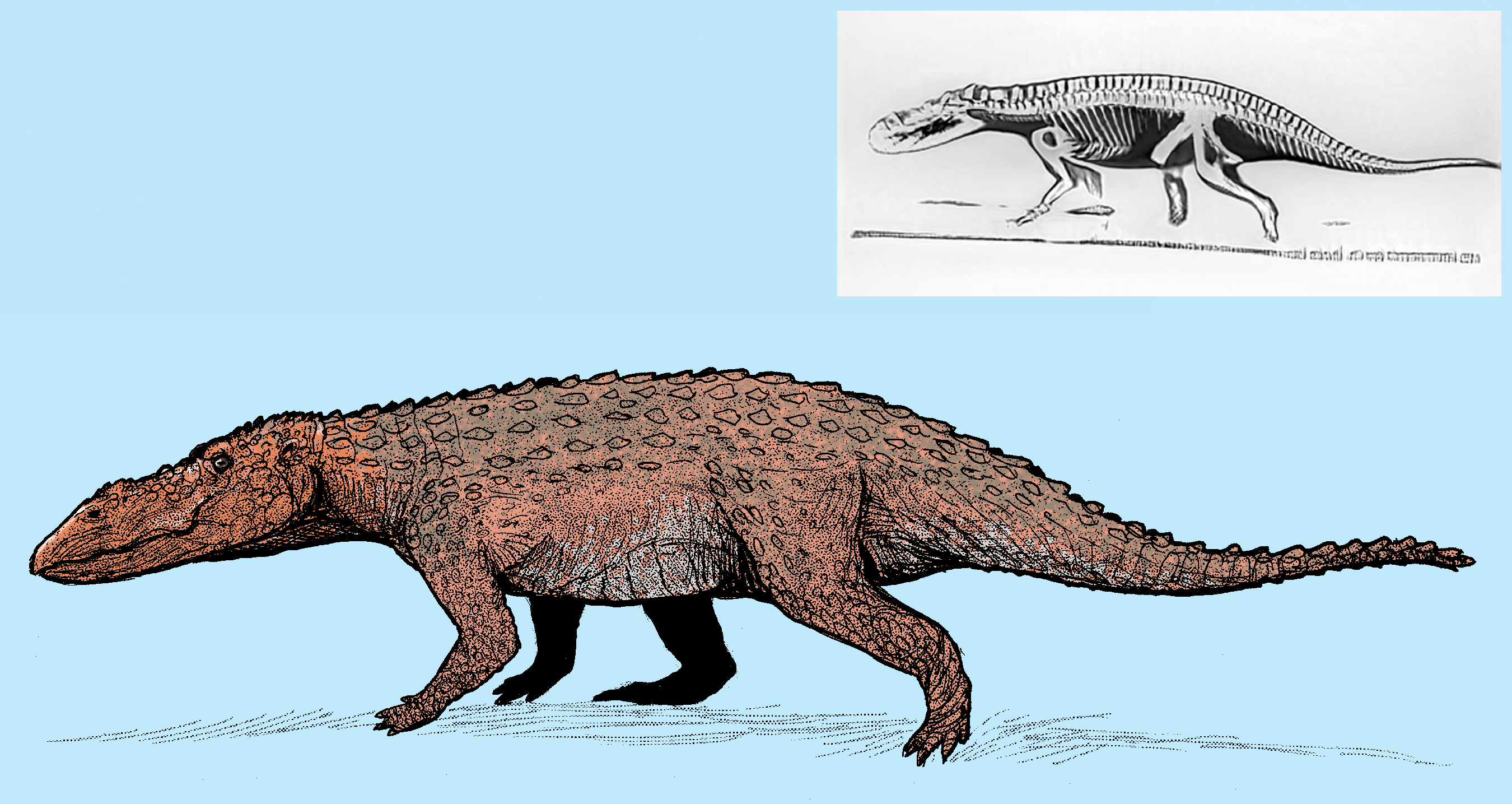
Potamosuchoides, a river-dwelling animal of uncertain affinities, perhaps a very aberrant marginocephalian.
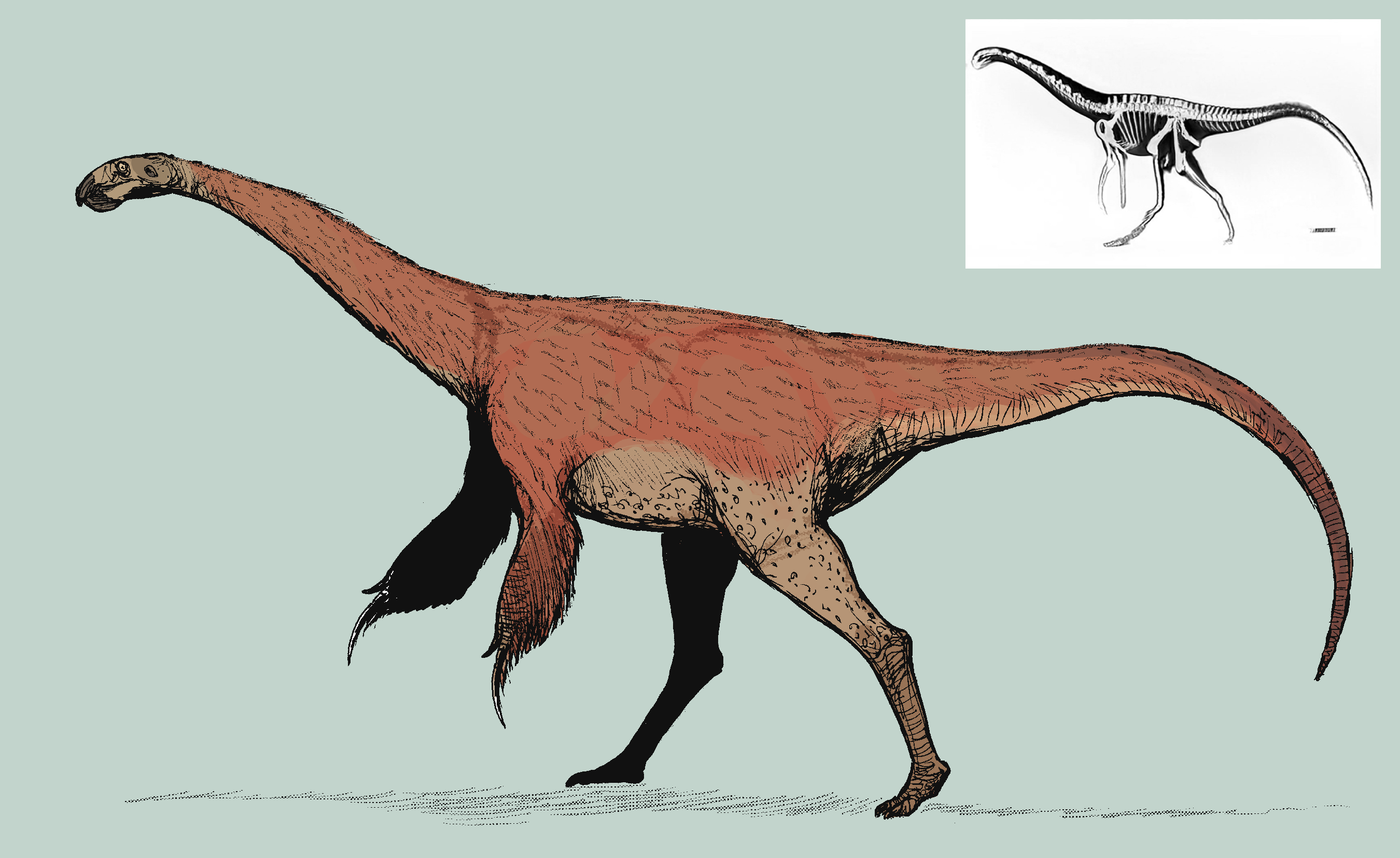
Megadactylosaurus, a gigantic relative of the enigmatic Chilesaurus.
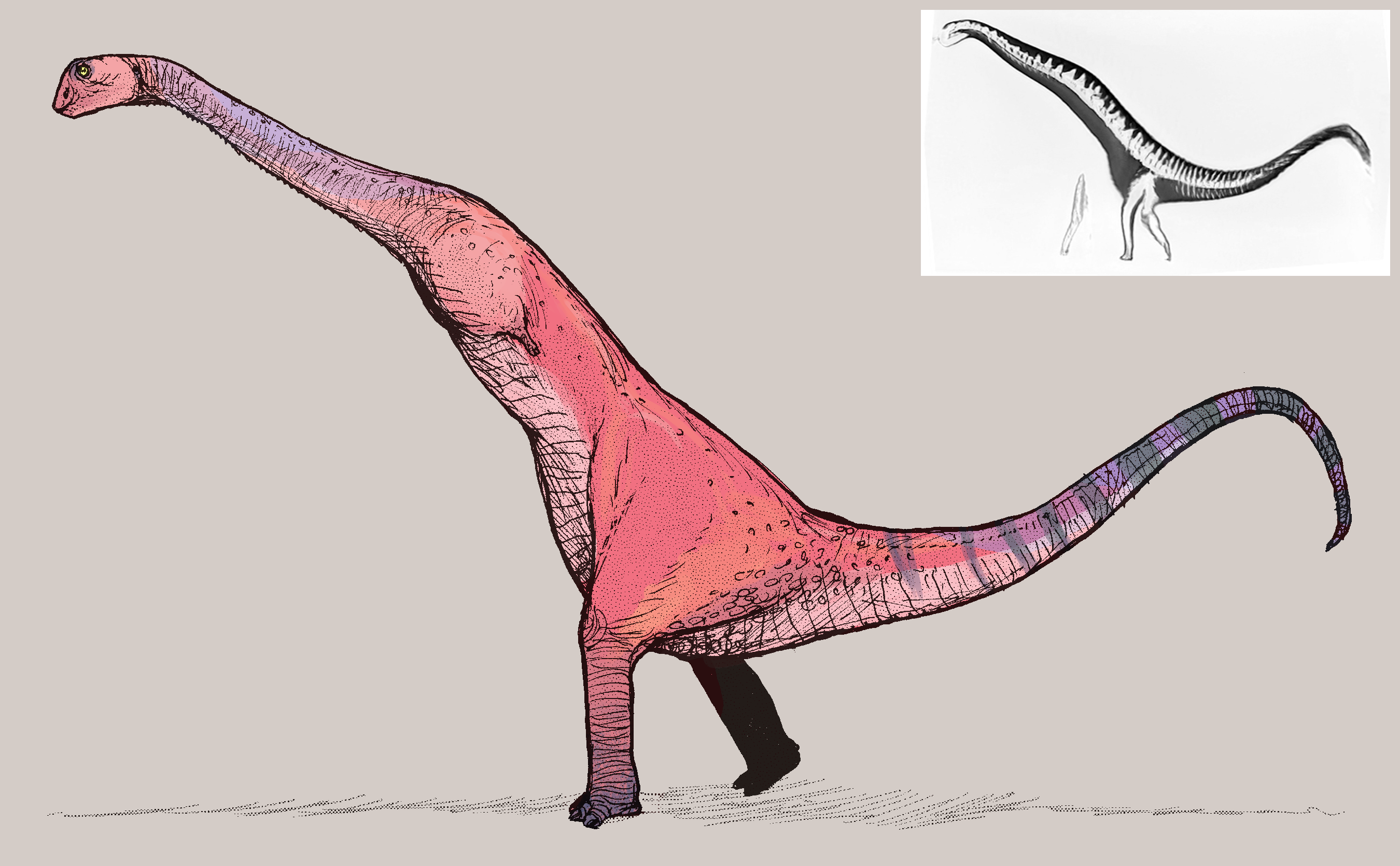
Limutitan, a very silly animal; an island-dwelling, gigantic, graviportal descendant of the small-headed abelisaurs.
***
Creatures for the Alien Biospheres project

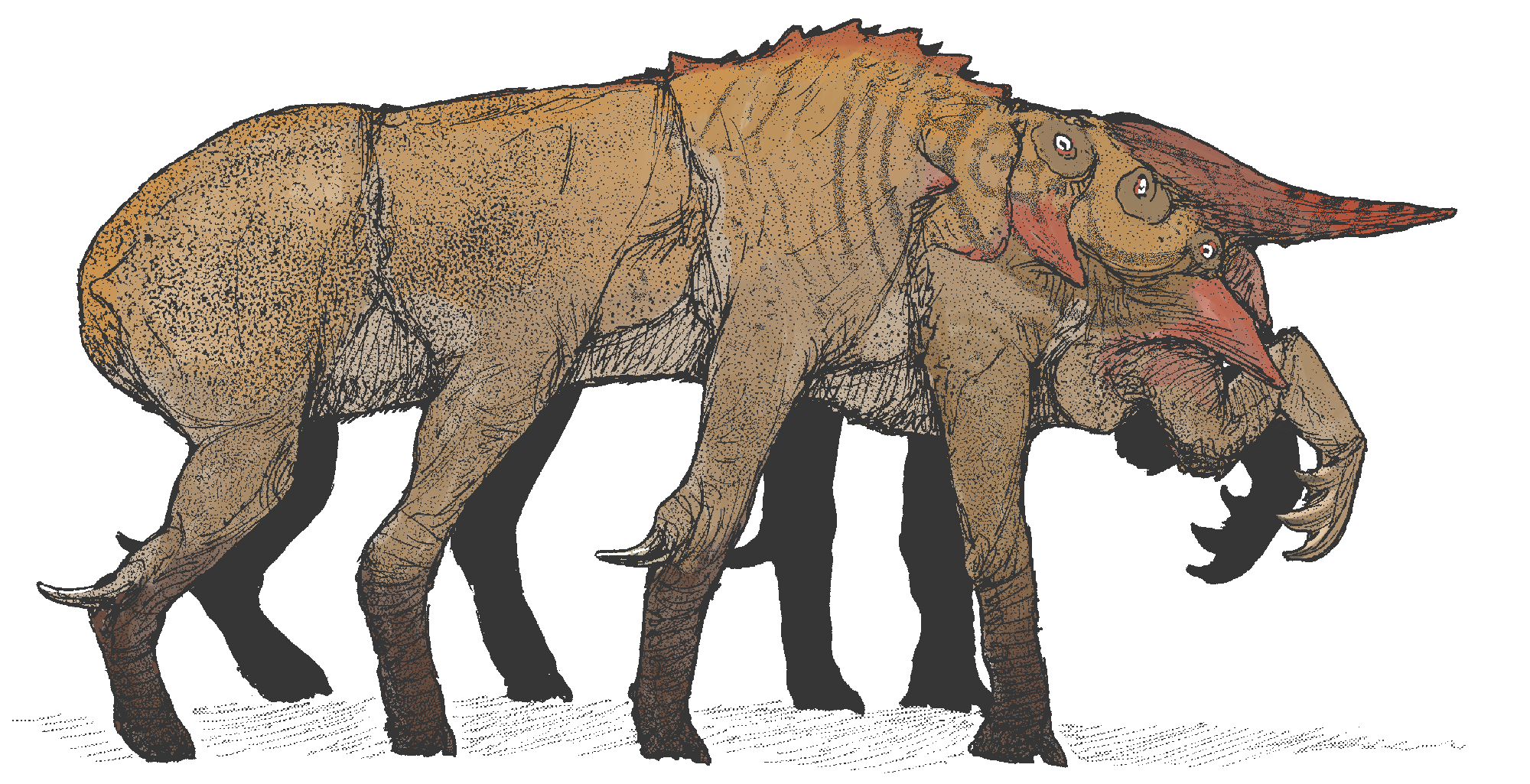
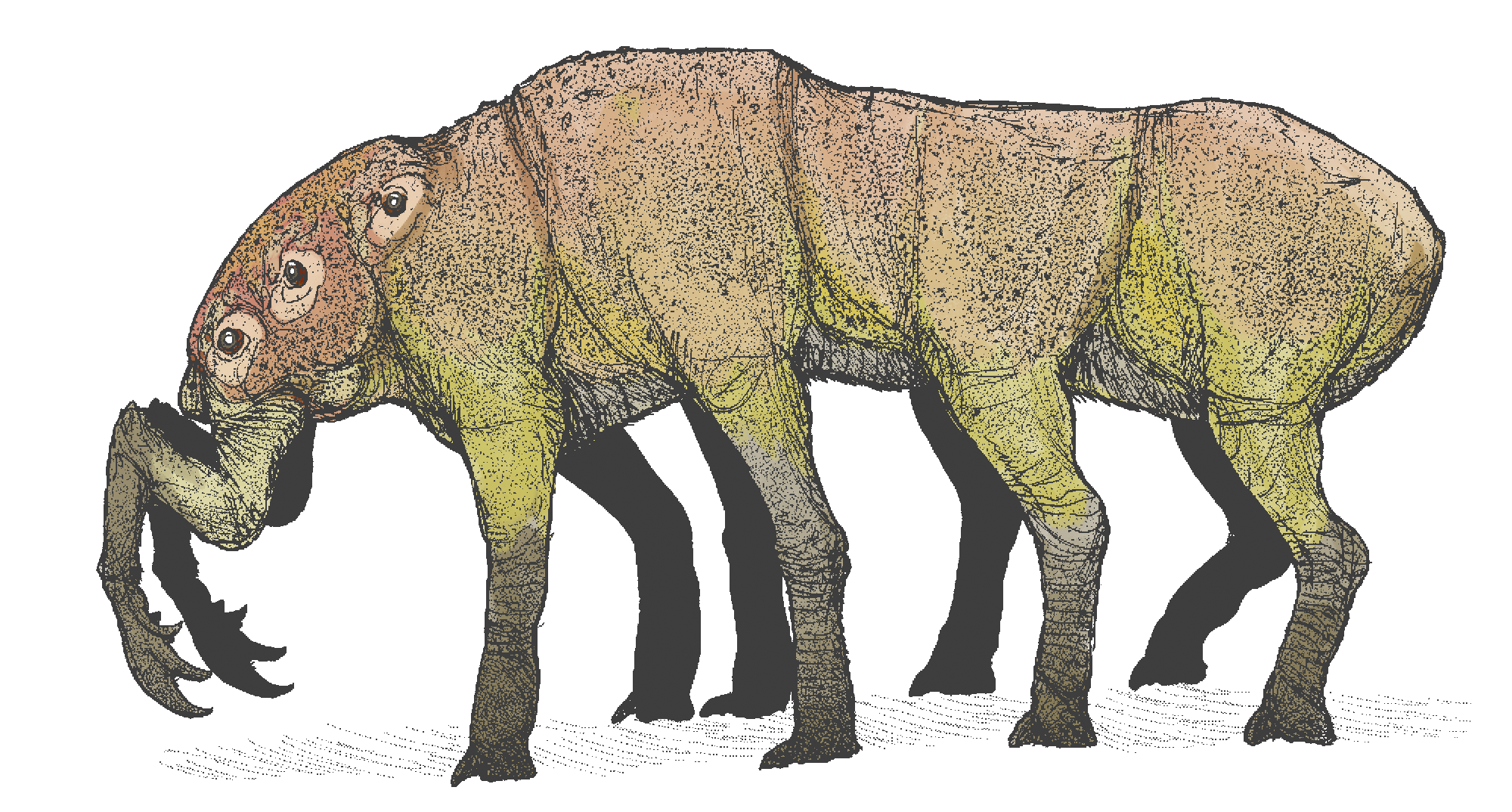
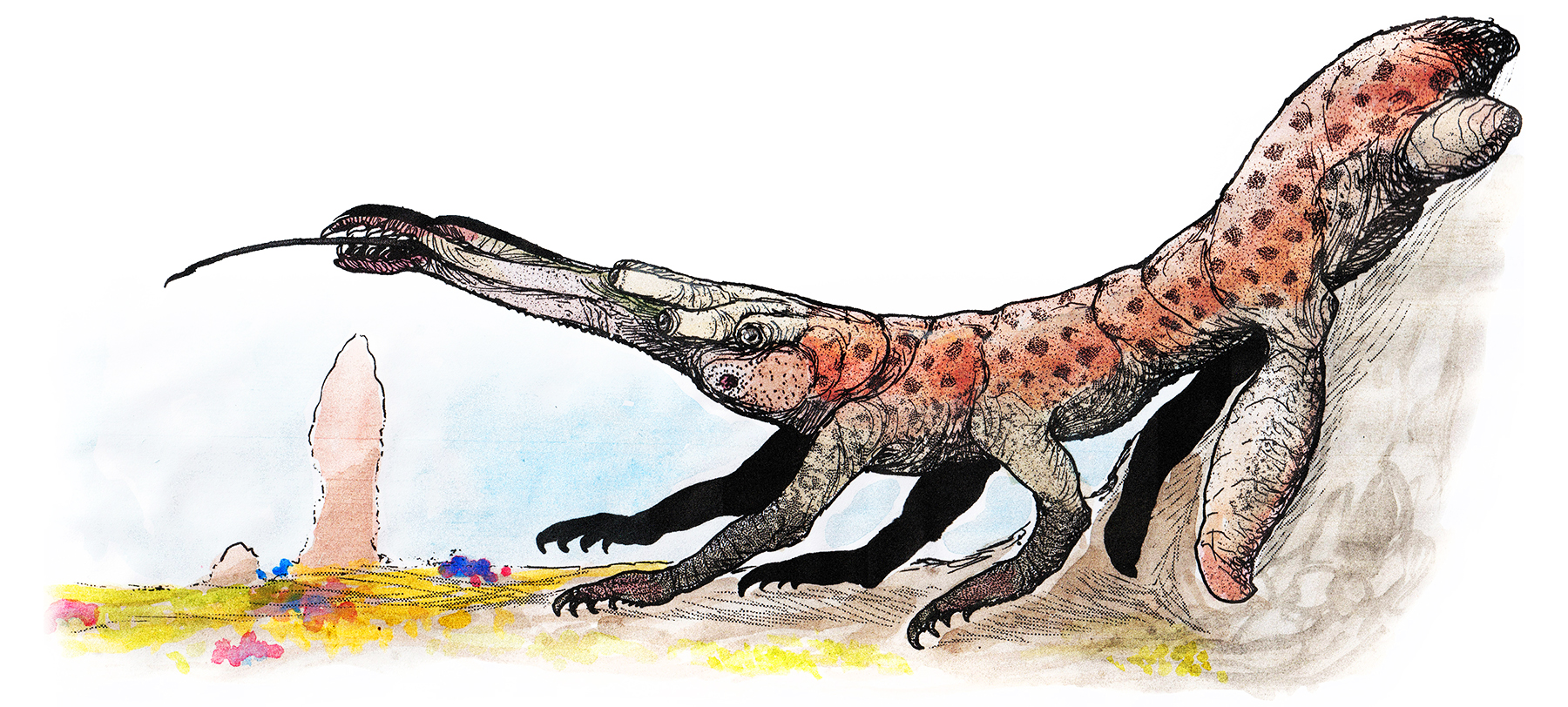

Illustrations of a predatory teratocheirid and its nanopod prey; a male and a female sphenoceratan; a parasitic deinoglossid; and an intelligent paleotecton for the Youtube-based Alien Biospheres project created by Biblaridion, my long-time online friend.
***
Berthasaura, the wayward abelisaur

Watercolour-on-inkjet print study of Berthasaura, an abelisaur trying really hard to be a psittacosaur.
***
Anhanguera with keratinised beak sheaths
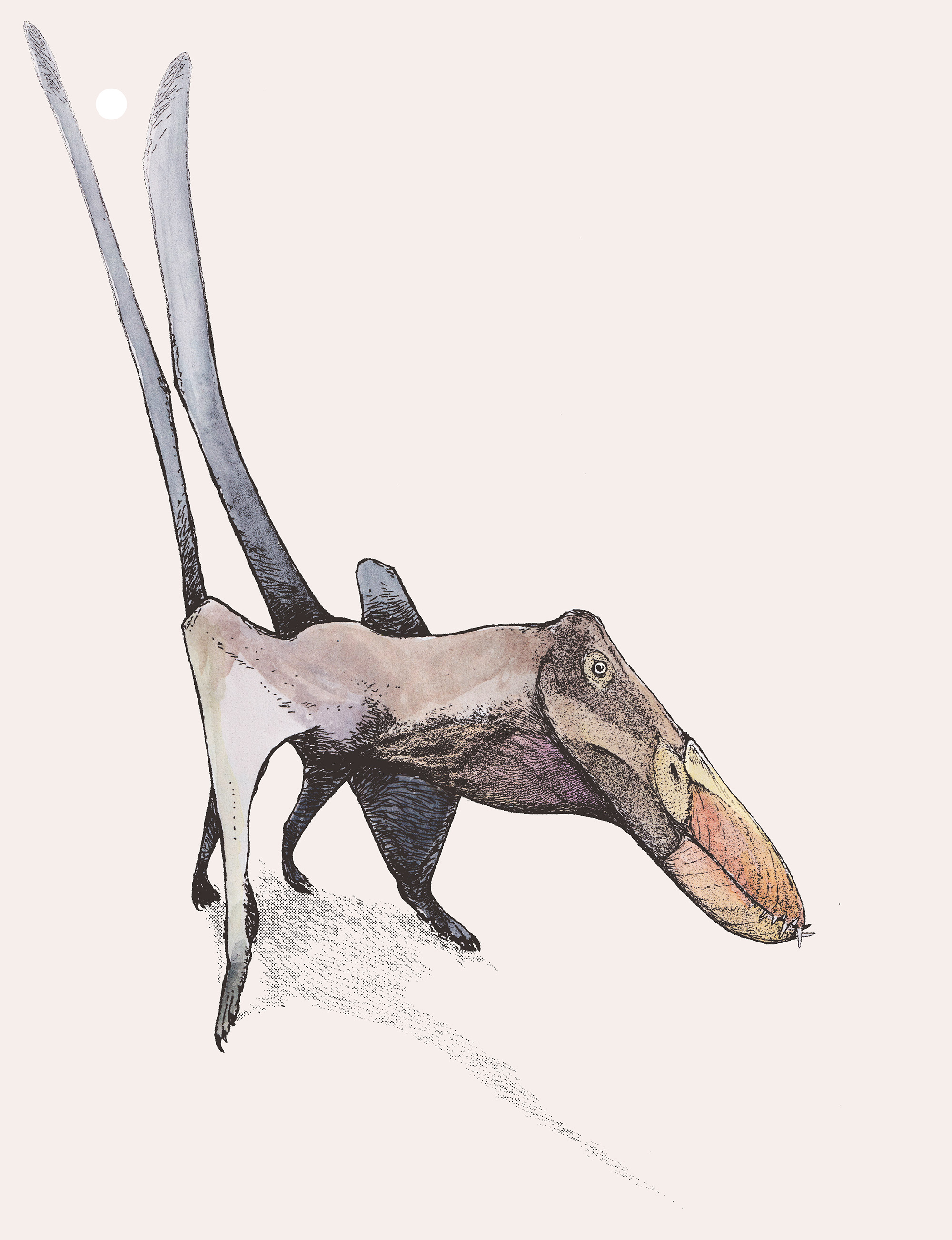
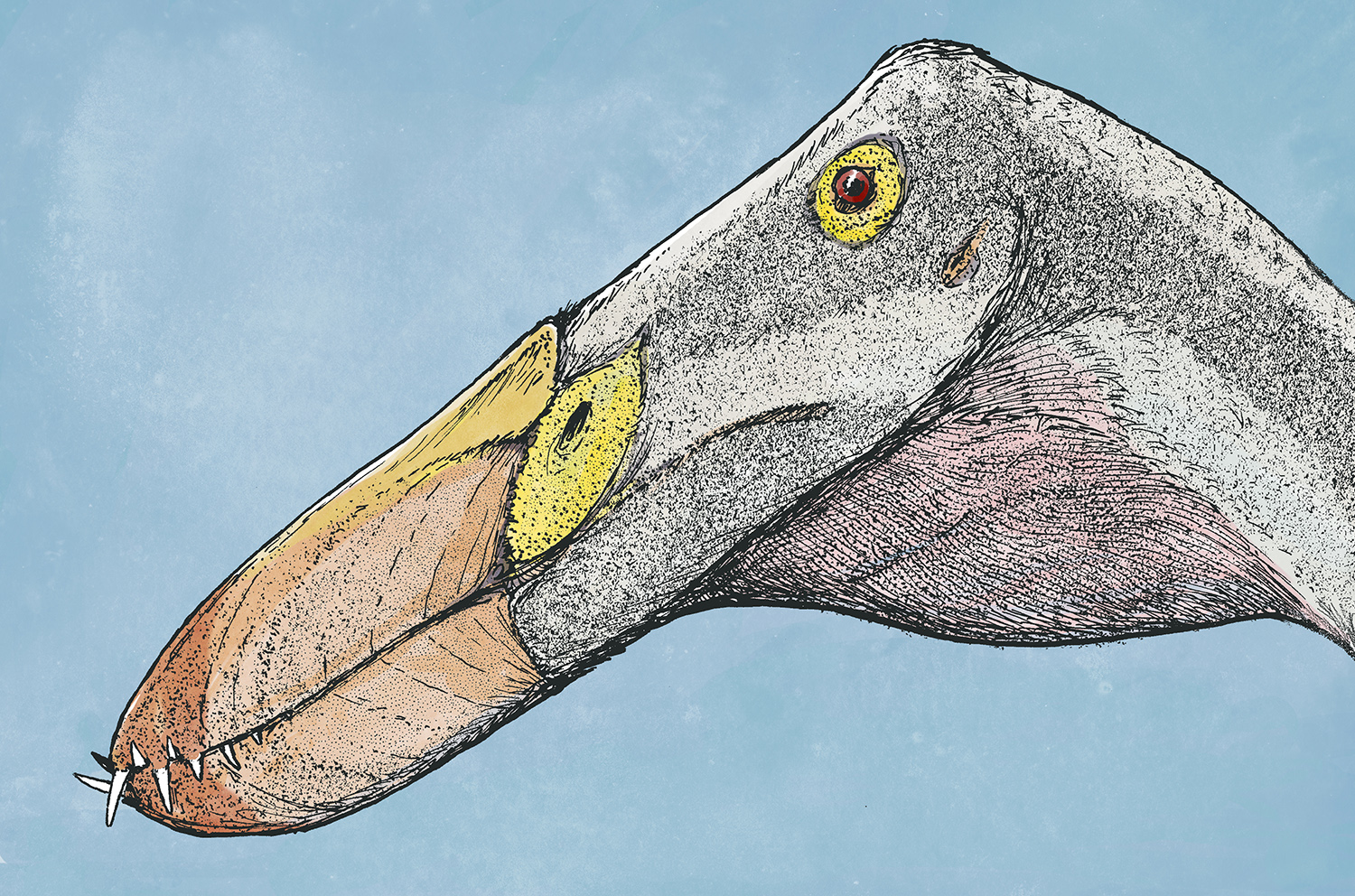

Illustrations of the large pterosaur Anhanguera with keratin sheaths, integument and muscles obscuring the "crest" on its skull. The skulls of an Anhanguera and a present-day puffin, Fratercula sp., are shown below.
***
Speculative early Cretaceous drepanosaur
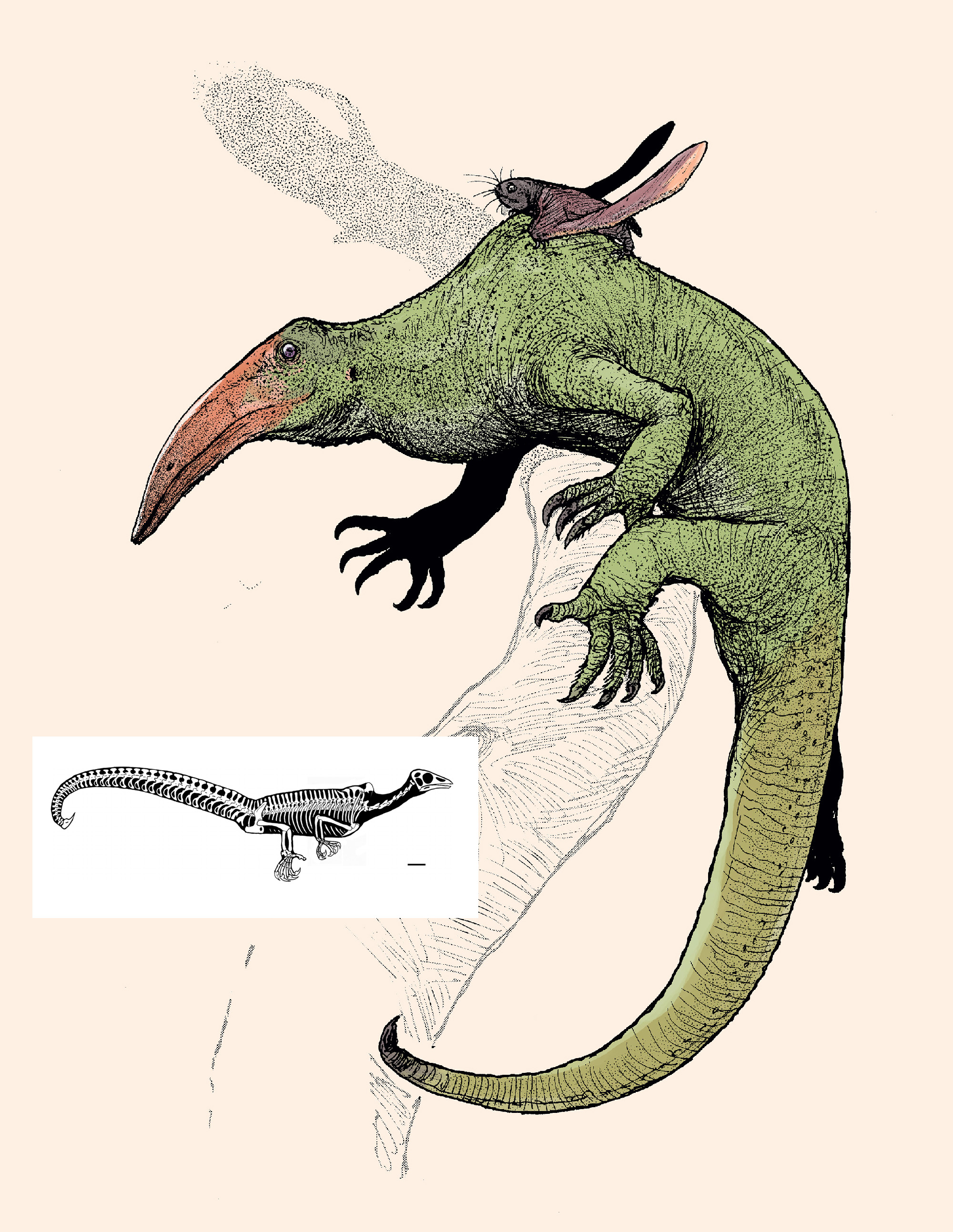
Illustration of a large, secondarily fruit-eating drepanosaur with a commensal anurognathid. This work is an exercise in speculative evolution, but the animal lineages depicted here were real. Drepanosaurs were a strange group of reptiles with extraordinary adaptations for an arboreal lifestyle. The inset image shows the skeletal reconstruction of Megalancosaurus, a species of drepanosaur. Anurognathids were small, tailless, wide-mouthed pterosaurs known from many different fossils.
***
Pterodactylus as a sea-turtle-like monotreme relative
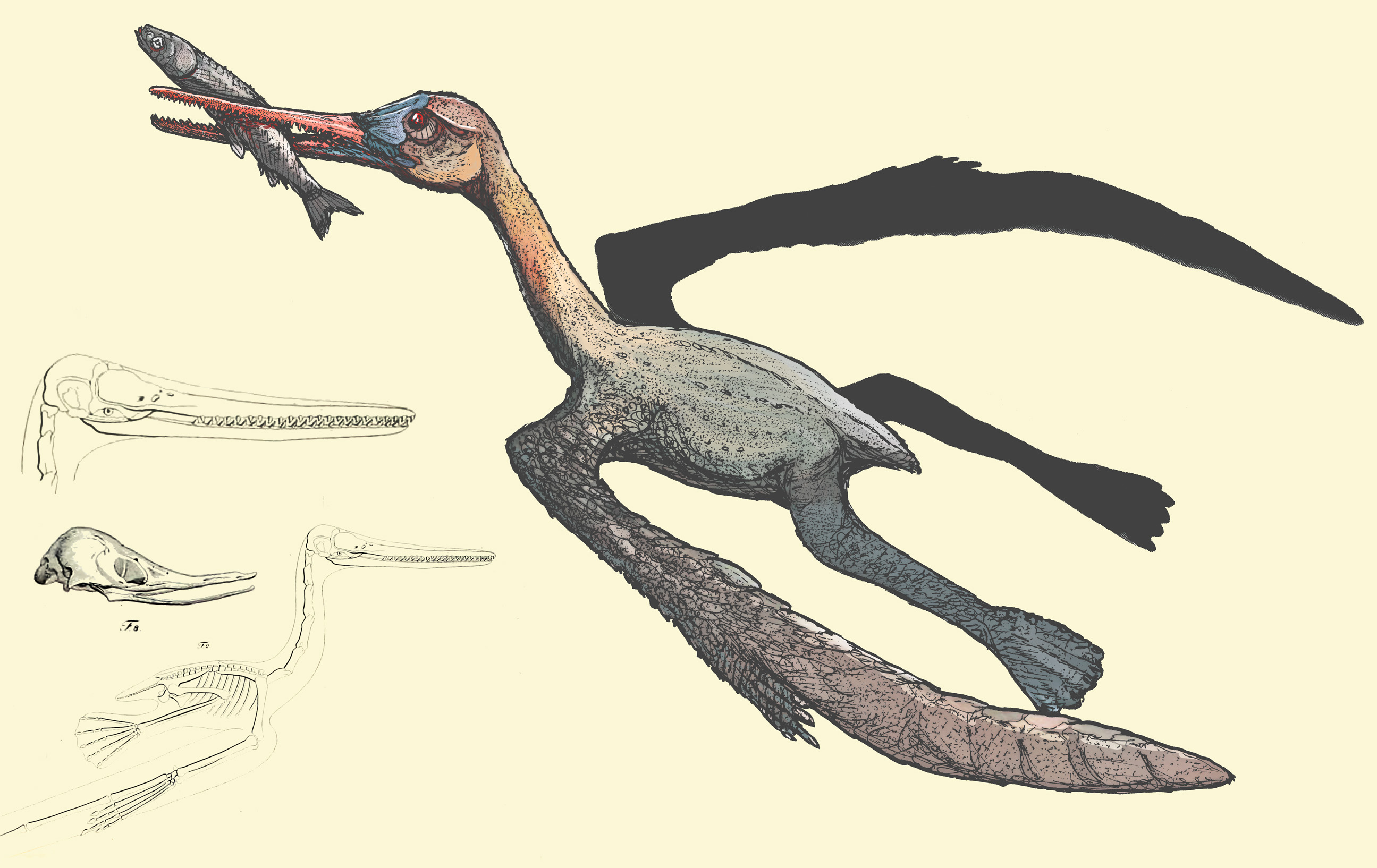
Illustration of Pterodactylus, as imagined by Johann Wagler (1800-1832) in his 1830 work “Natürliches System der Amphibien, mit vorangehender Classification der Säugethiere und Vögel. Ein Beitrag zur vergleichenden Zoologie”. The skeletal reconstruction seen on the lower-left corner comes from this aforementioned work. Wagler saw pterosaurs; alongside ichthyosaurs, plesiosaurs, and present-day monotremes; as members of a unique vertebrate "class" known as Gryphi.
***
Dalatias licha, the kite shark

Illustration of a Dalatias licha shark, swimming in the abyssal dark.
***
Oxynotus centrina, the angular rough shark
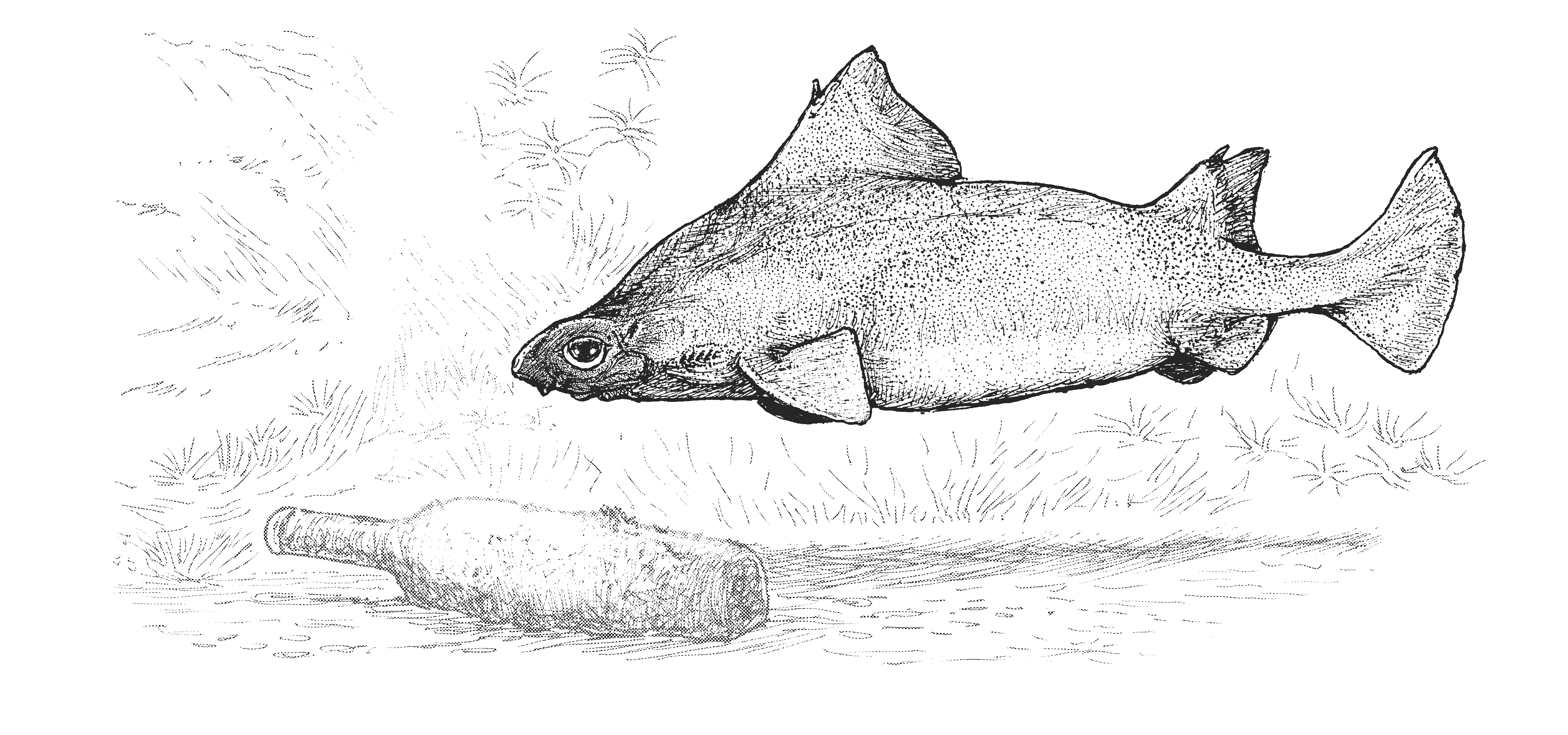
Illustration of an Oxynotus centrina shark, swimming near an old glass bottle at the bottom of the sea.
***
Oculudentavis
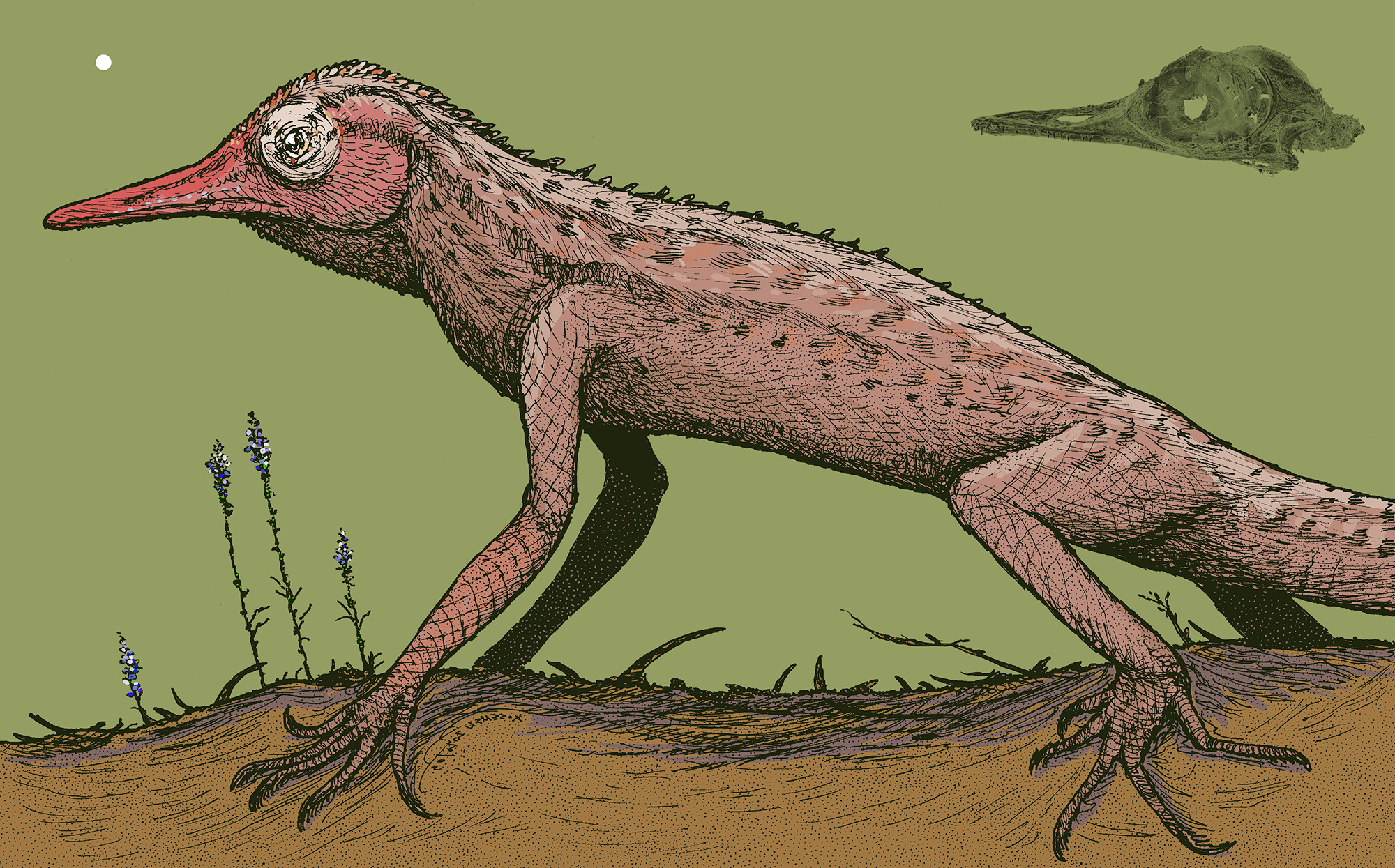
Illustration of Oculudentavis, an enigmatic lizard-like reptile originally thought to be a bird, known only from a skull trapped in amber (see inset). Click on image to see uncoloured line-art.
***
Chilantaisaurus
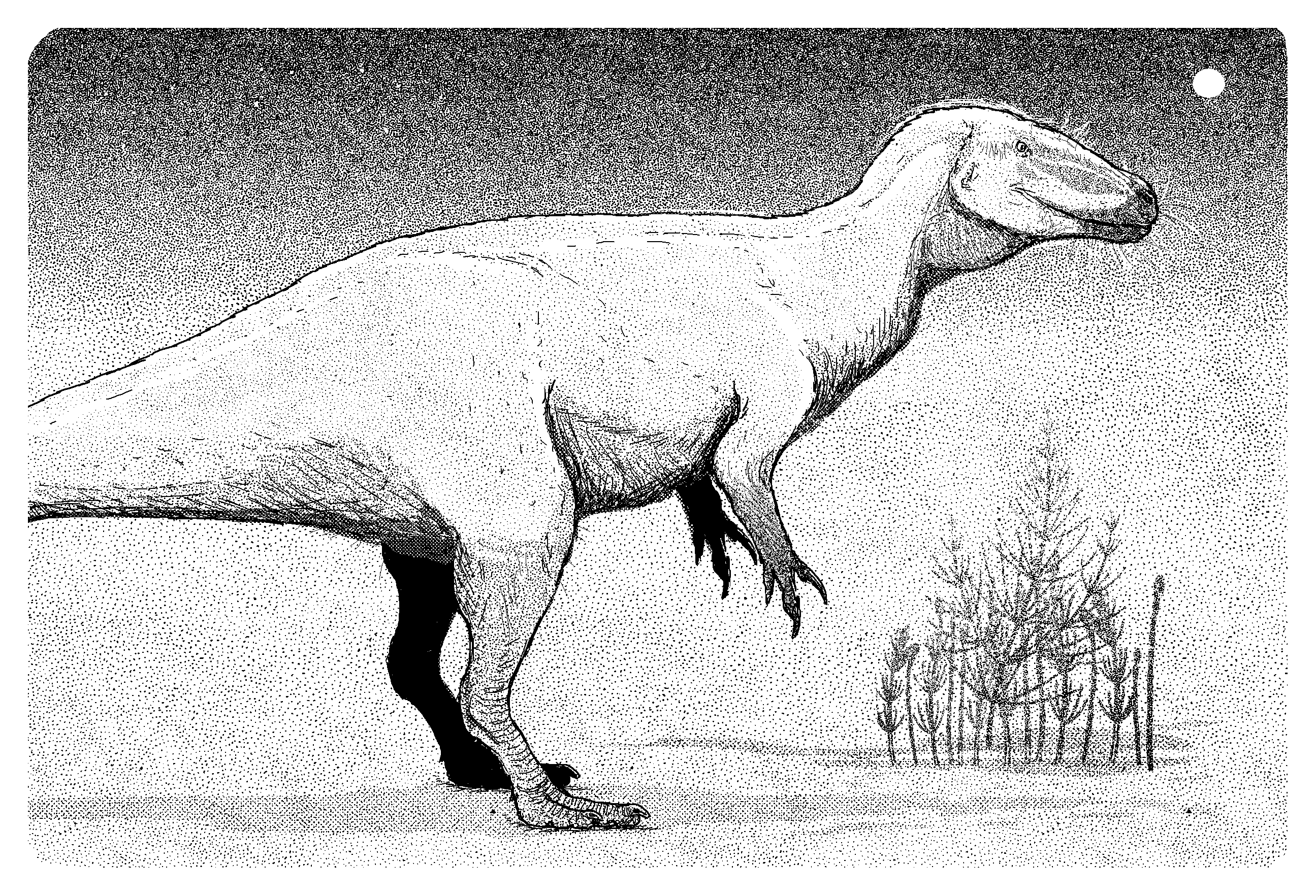
Illustration of the predatory dinosaur Chilantaisaurus, from the late Cretaceous Ulansuhai Formation of China.
***
A raptorial pterosaur
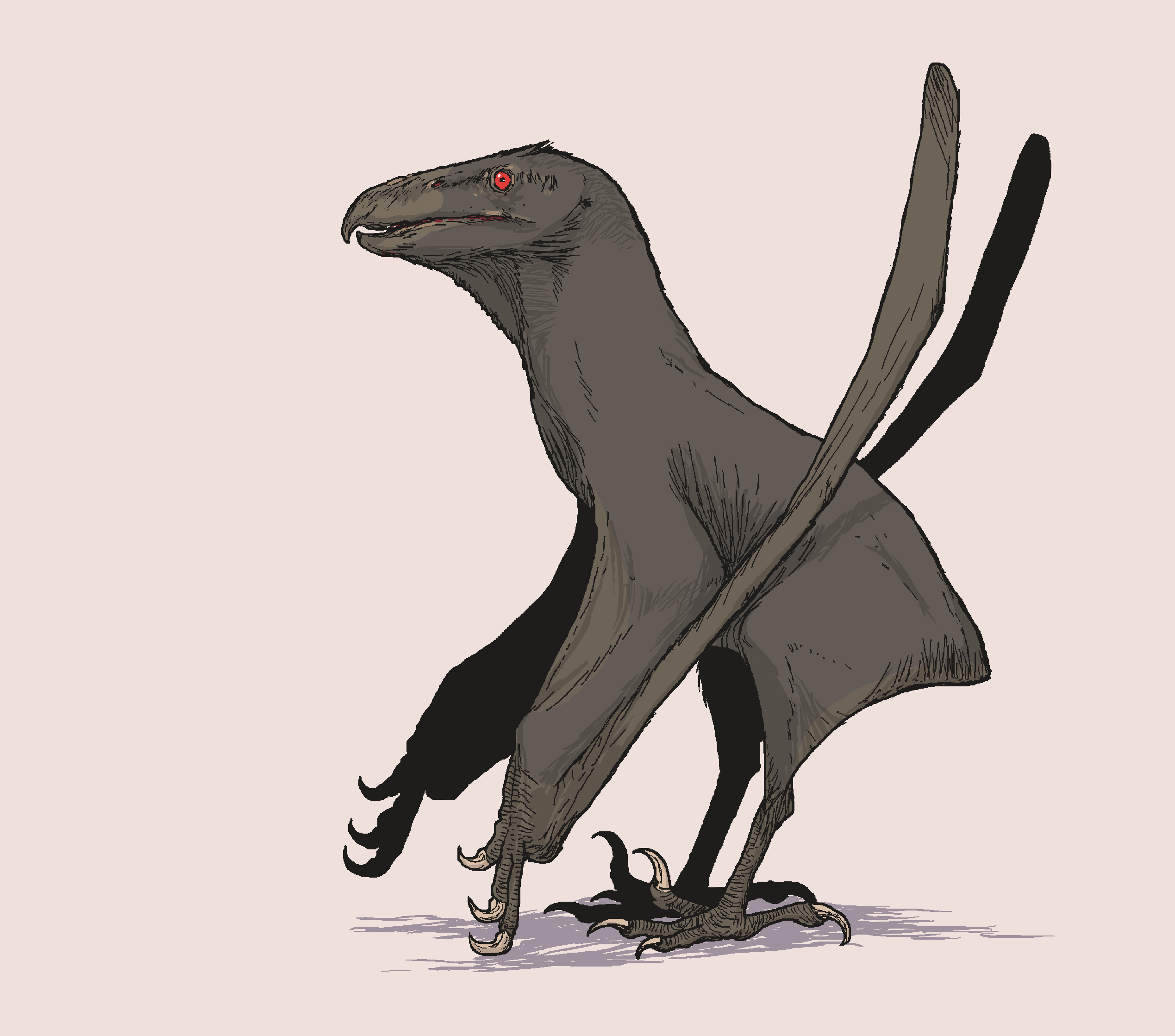
Illustration of a speculative "falcon pterosaur", sporting raptorial hand claws and pseudo-zygodactyl feet claws. This is my take on how a pterosaur would evolve if it were to mirror the predatory birds on our current timeline. Not a real animal, but an exercise in speculative evolution.
***
Moabosaurus
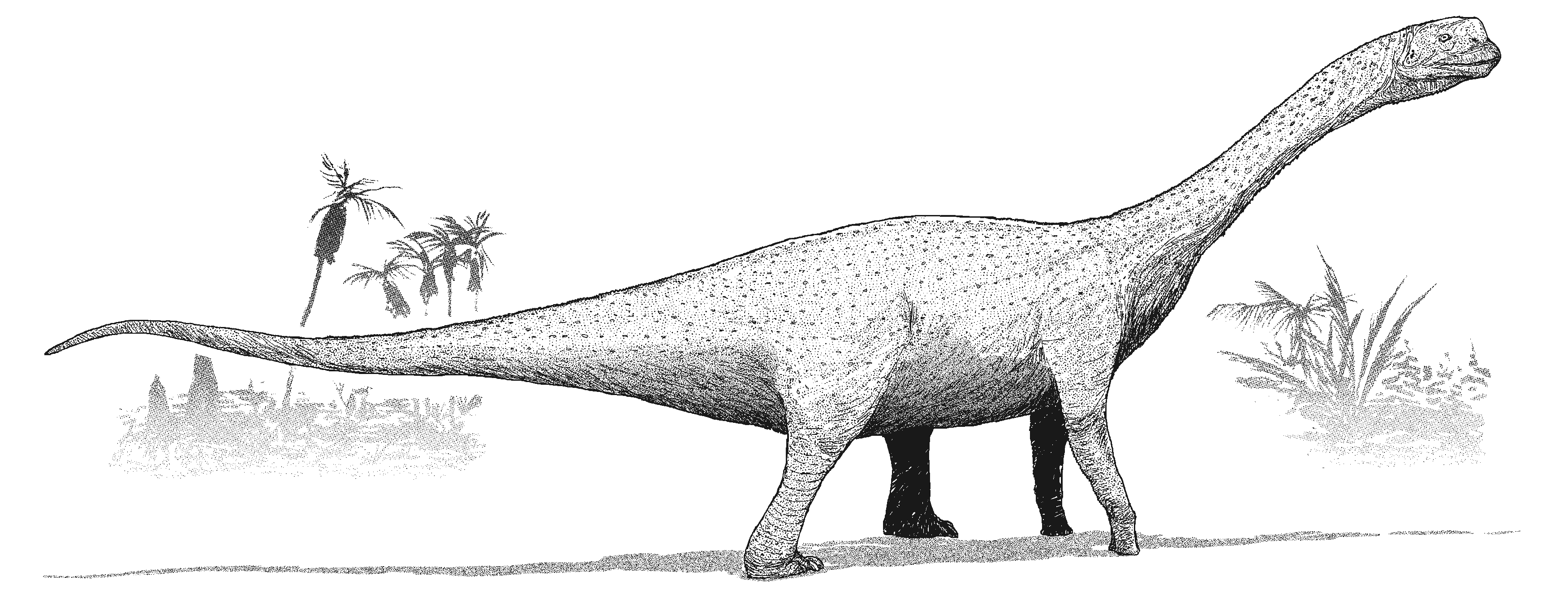
Illustration of Moabosaurus, a sauropod dinosaur of the turiasaur lineage. It lived during the Early Cretaceous period in what is now Utah, United States.
***
Ubirajara
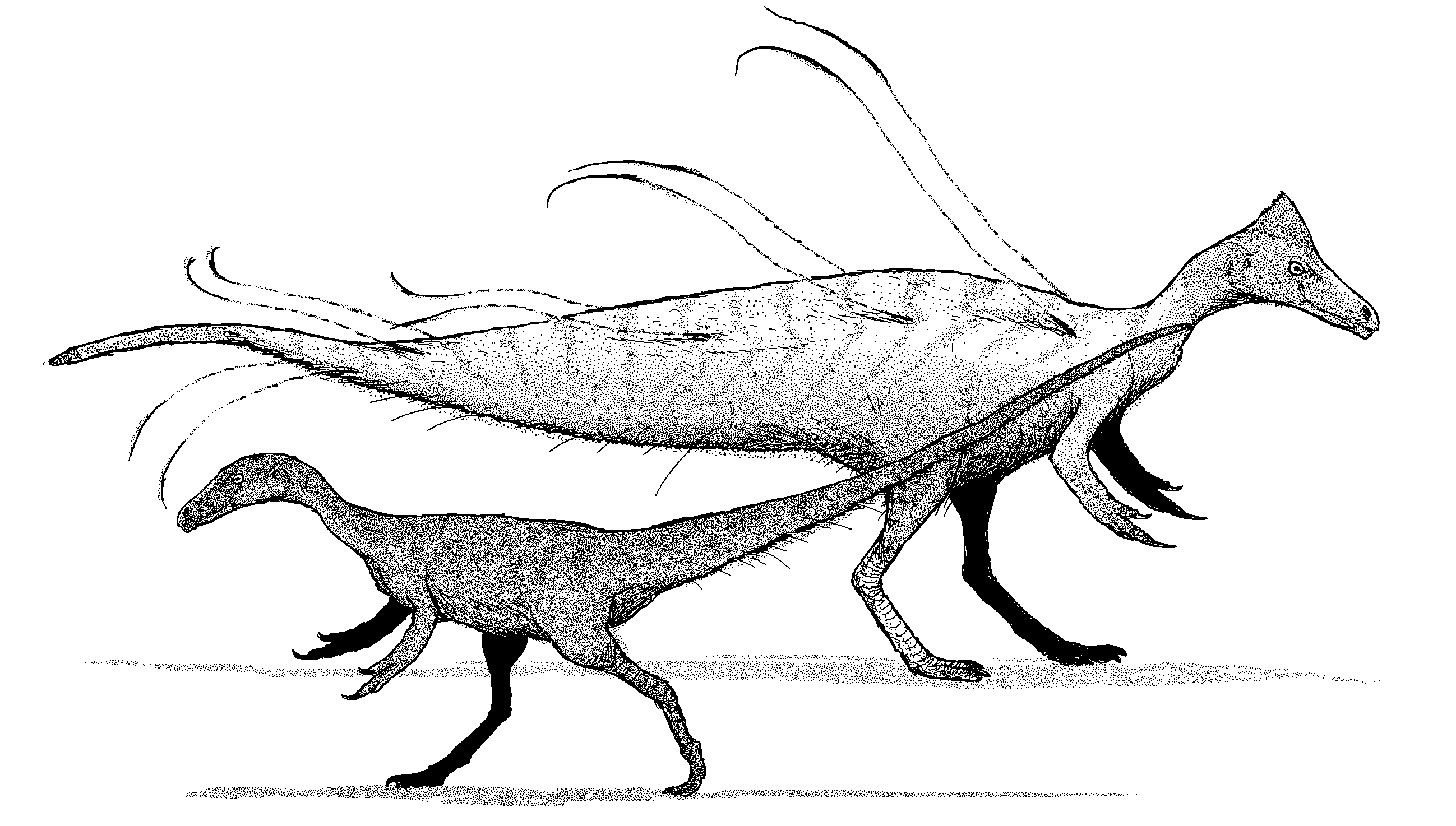
Illustration of a male Ubirajara displaying at a passing female. The fossil of this dinosaur has been discovered with evidence of flamboyant display structures on its body.
***
Robotic panther
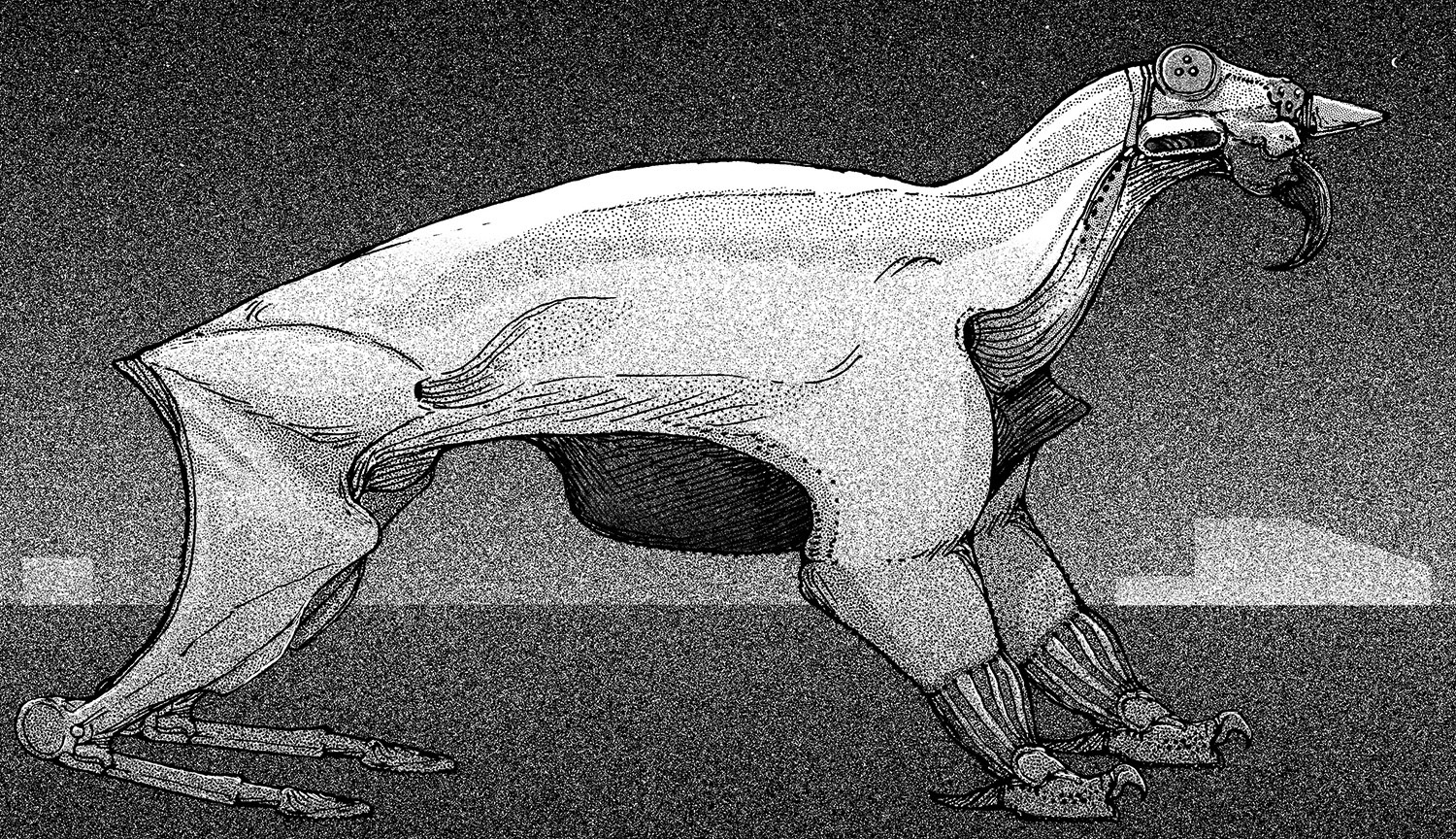
Illustration of a robot panther on a futuristic battlefield.
***
Dilophosaurus 2020
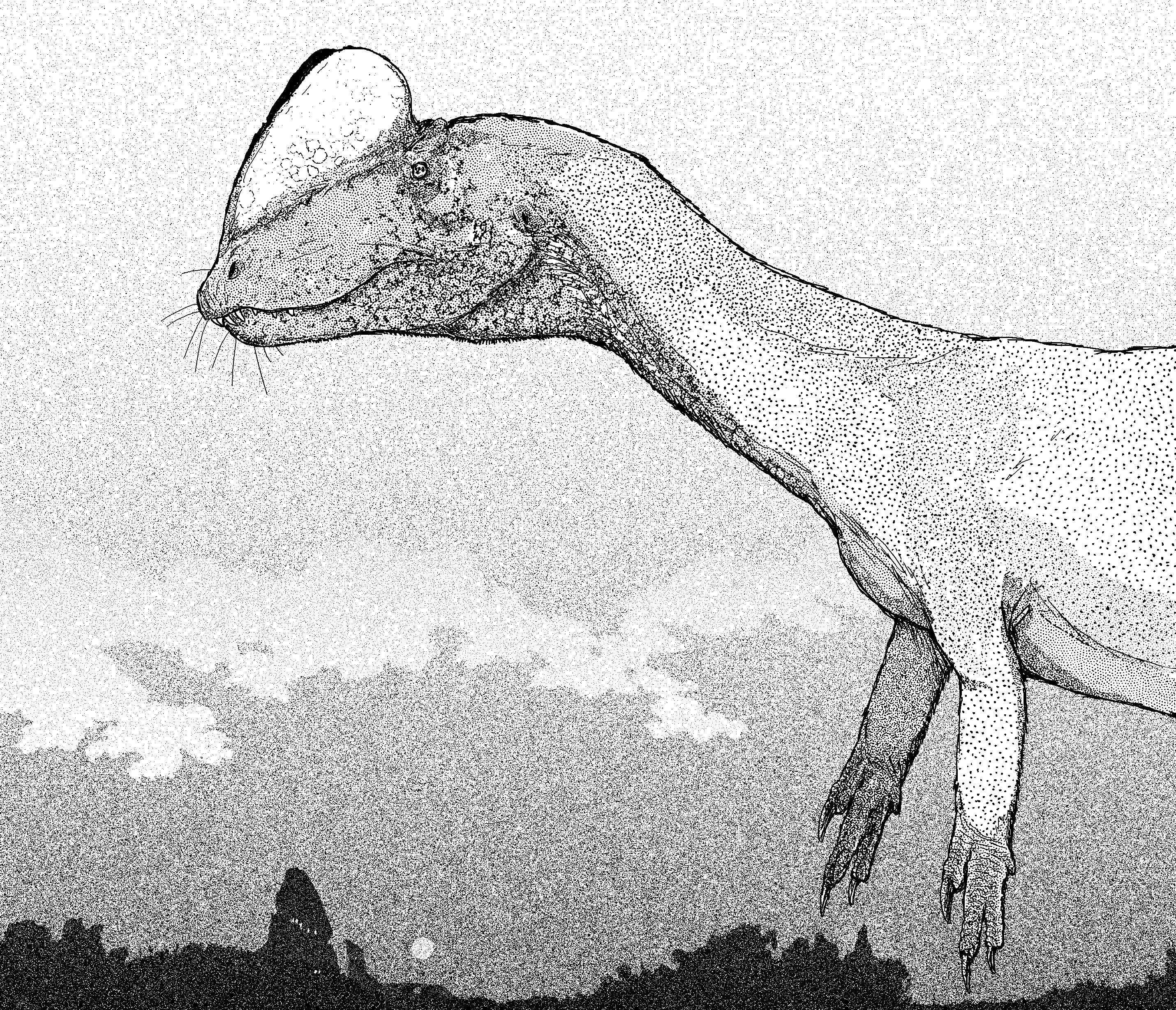
An illustration of Dilophosaurus, the well-known crested predatory dinosaur that was comprehensively re-described in 2020. This animal was thought to be a gracile, lightly-built predator. We now know that Dilophosaurus was a more robust creature, with a more solidly-built skull and a bigger crest than previously assumed.
***
An "Angel" of the Old Testament
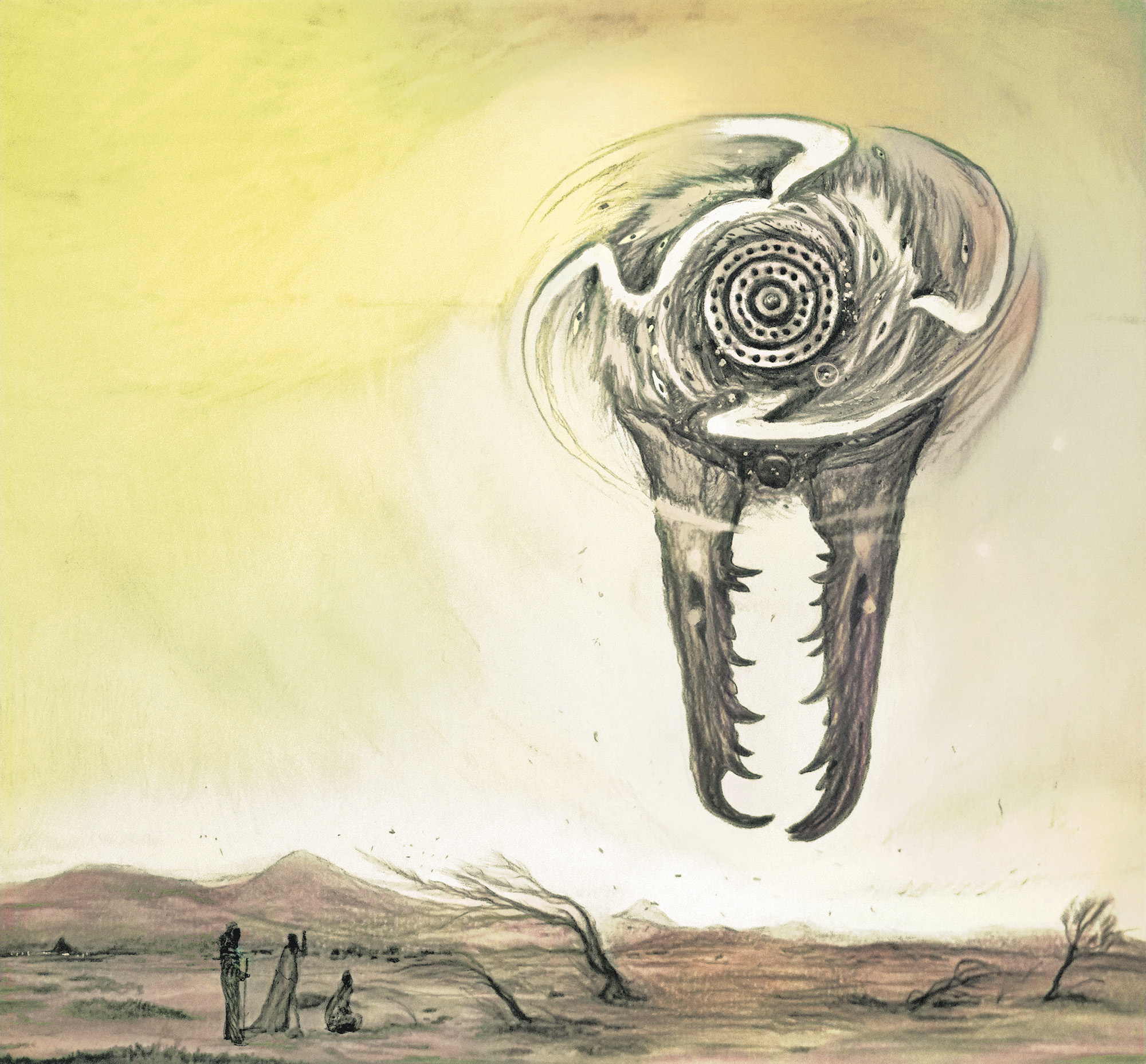
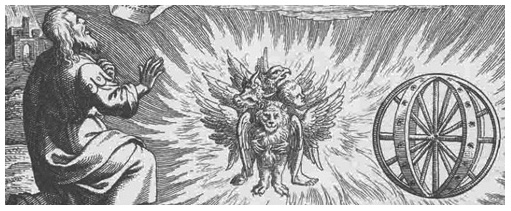
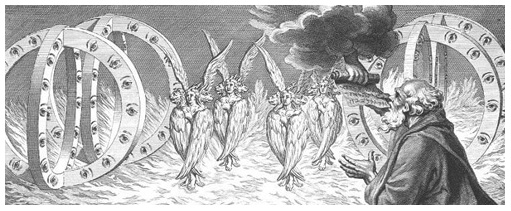
Angels described in the Old Testament are a far cry from the relatable, winged humans we know from later depictions. I tried to design a terrifying, insect-toothed Old Testament Angel of my own. Who it is talking to, and what it is saying, is anybody's guess.
***
Biomechanical asilid motorbike girl
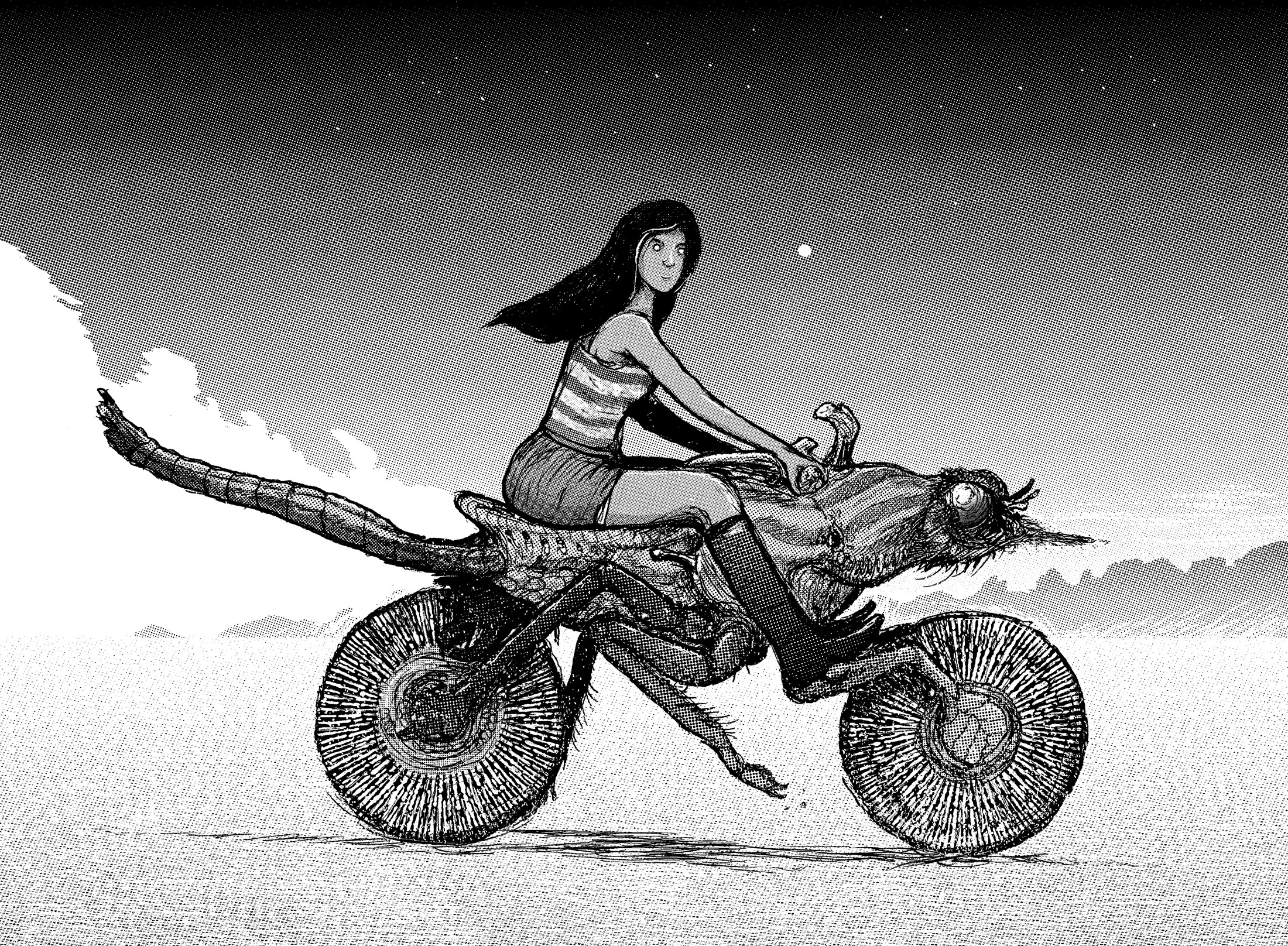
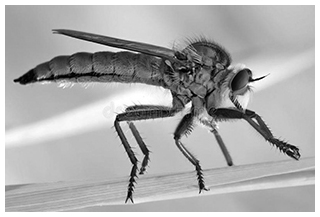
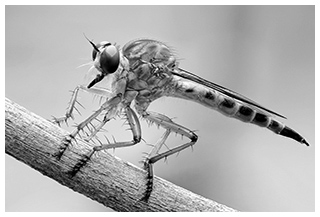
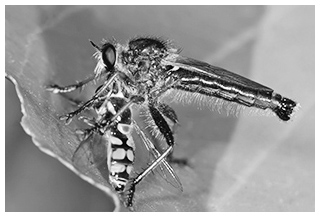 A frivolous fantasy; an attractive fantasy girl rides bio-mechanical motorcycle derived from Asilid robber-flies (sample images below, not by me). Click on the image to see a colourised version.
A frivolous fantasy; an attractive fantasy girl rides bio-mechanical motorcycle derived from Asilid robber-flies (sample images below, not by me). Click on the image to see a colourised version.
***
Aliens from Johannes Kepler's Somnium (1634)
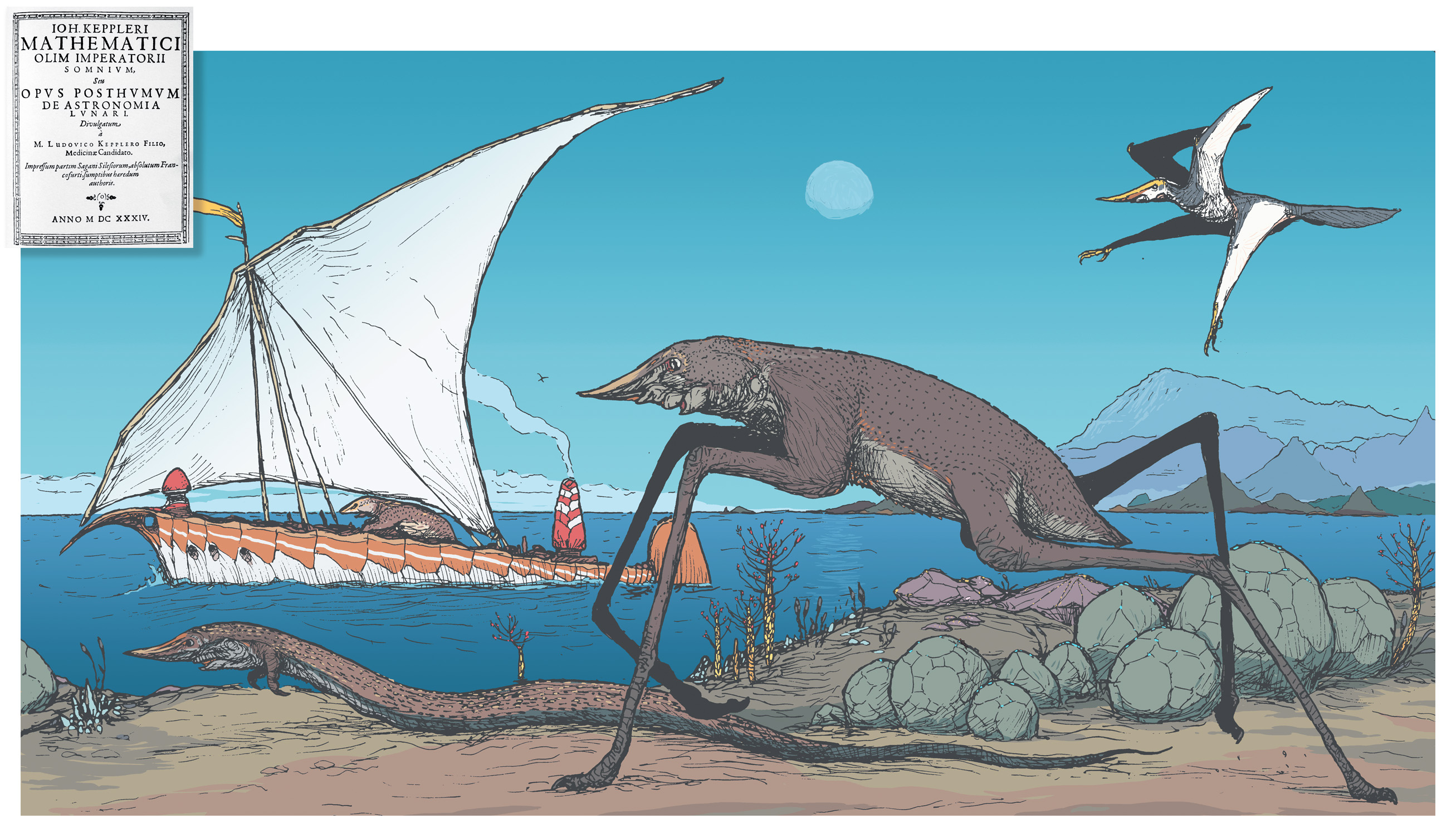
A vision inspired by the aliens portrayed in Johannes Kepler’s posthumous 1634 book Somnium (“The Dream”), arguably one of the first works of world-building science fiction.
In this book; our moon, referred to as “the island of Levania”, is inhabited by various creatures that are hazily described as being snake-like; bird-like; and “with legs far superior to those of camels”. Some Levanians are also able to build and sail boats.
I loosely interpreted them as a variants of a single polymorphic species, able to cross the surface of Levania rapidly via air, land or water in order to avoid the extreme shifts of temperature. The plants were a homage to the polyhedral shapes Kepler illustrated in his Harmonice Mundi (1619). Click on image for a detailed view.
***
Tupuxuara
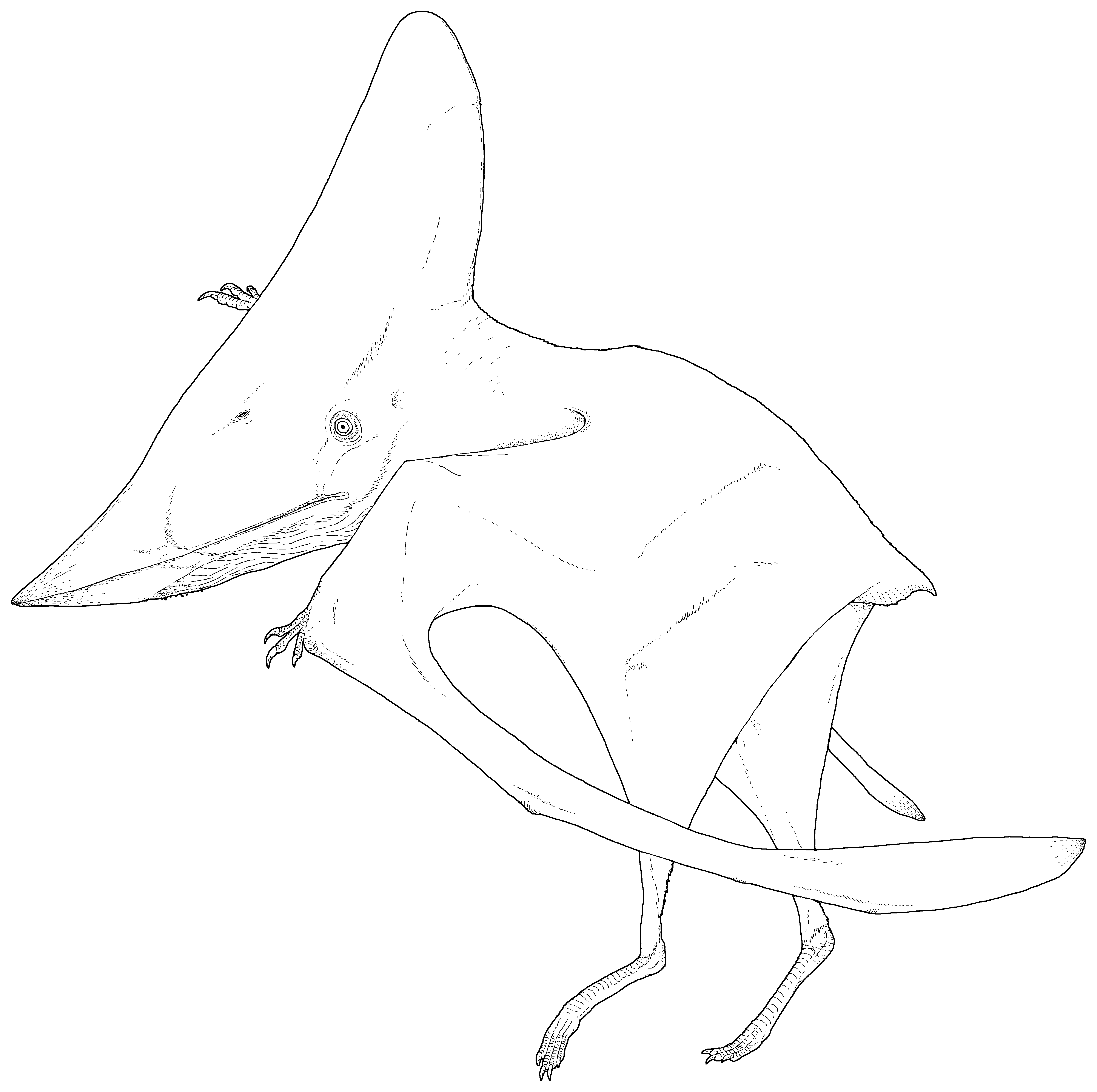
Illustration of Tupuxuara, a prehistoric flying reptile with a flamboyant crest. Click on image for a detailed view.
***
Torosaurus
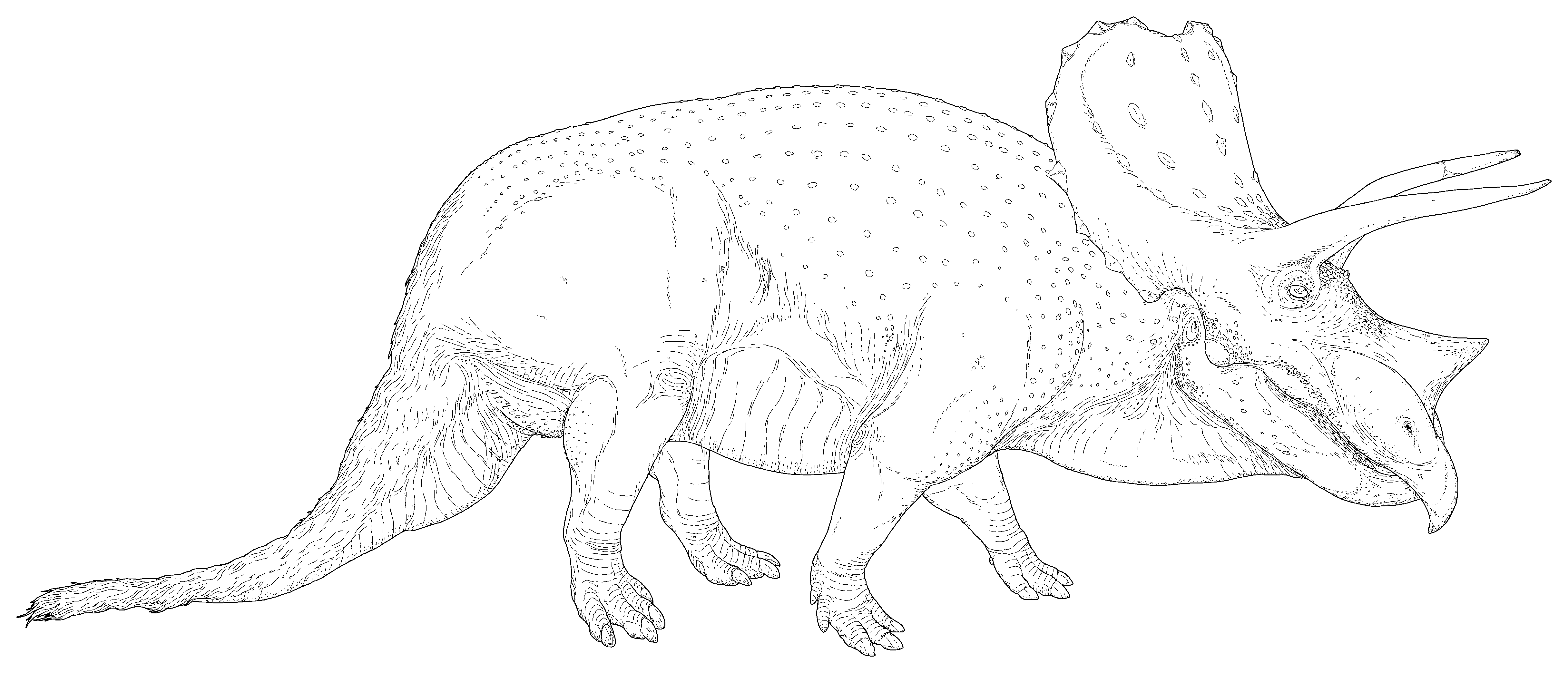
Illustration of Torosaurus, a large ceratopsian dinosaur. Click on image for a detailed view.
***
Lambeosaurus
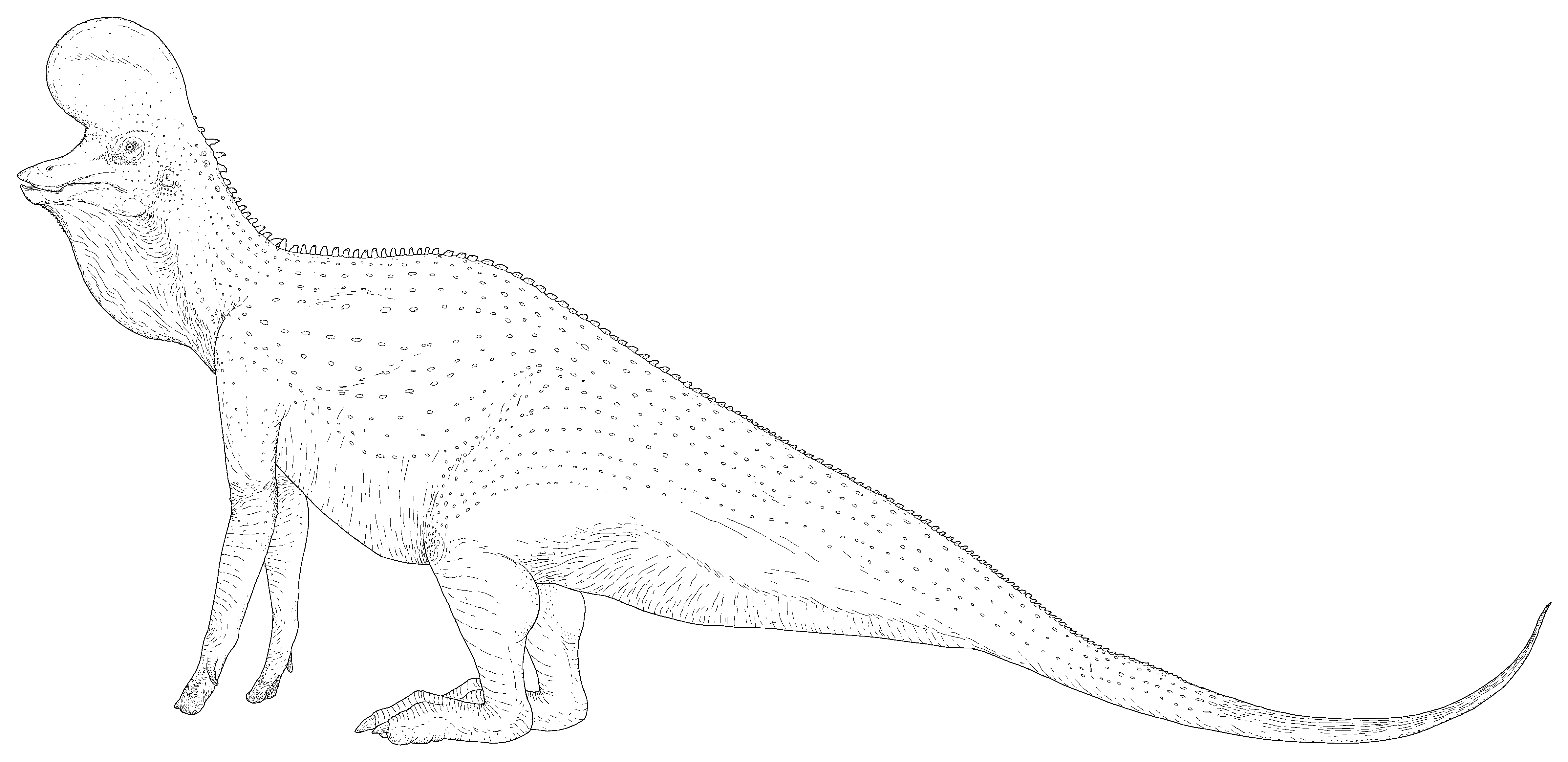
Illustration of Lambeosaurus, a large and elegant duck-billed dinosaur. Click on image for a detailed view.
***
A realistic take on the Star Wars Krayt Dragon
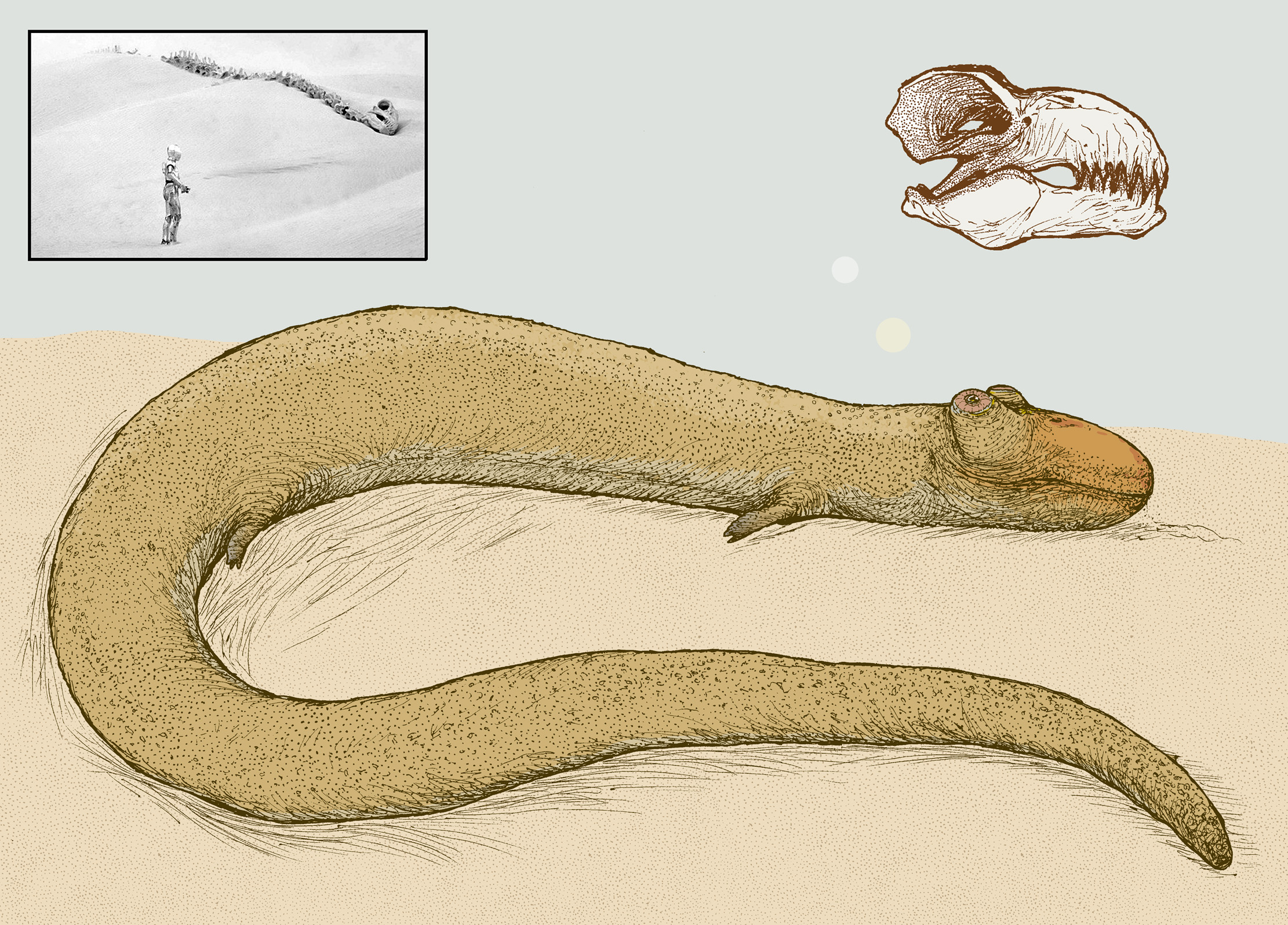
I tried to reconstruct the famous "Krayt Dragon" from the original 1977 Star Wars by focusing only on the skeleton seen in one particular scene (see inset). The original prop was in part based on casts of sauropod dinosaur bones. I interpreted the Krayt dragon as a massive, skink-like reptile with eyes nestled in fleshy, mobile turrets, which help the animal peer out when buried in sand.
***
Completing Benjamin Waterhouse Hawkins' "Labyrinthodon"
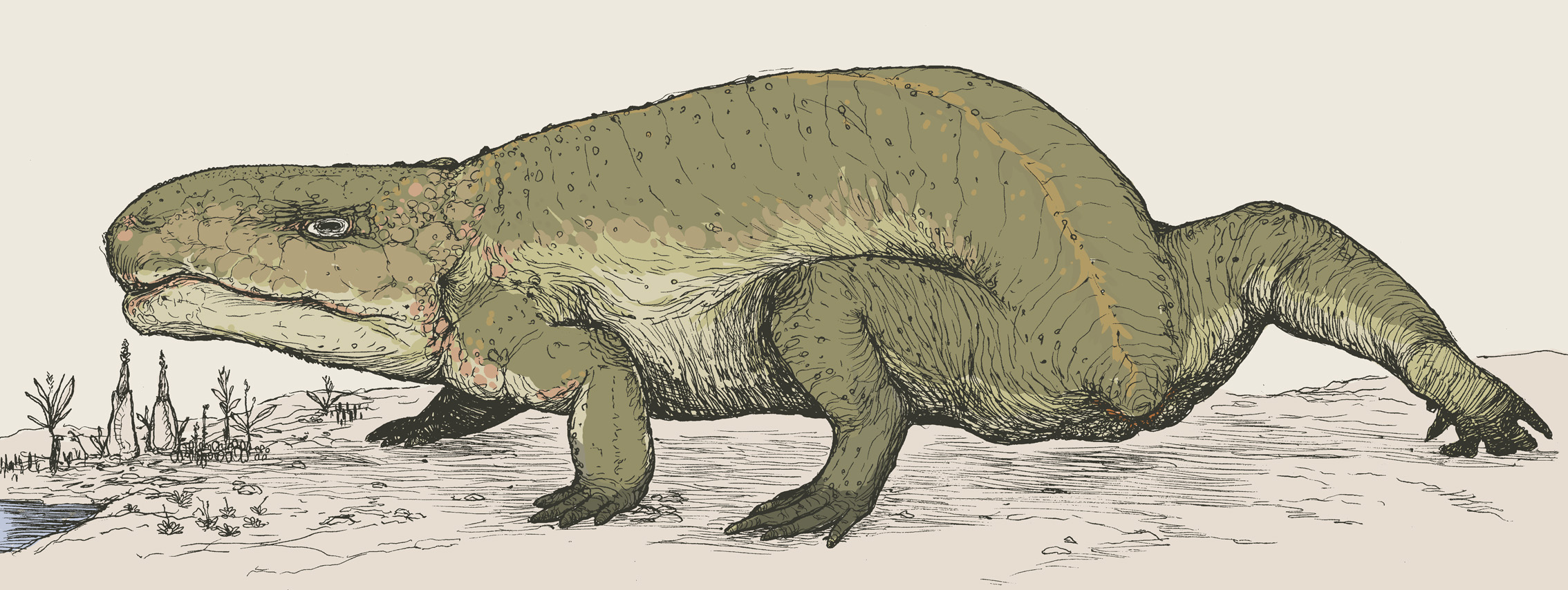
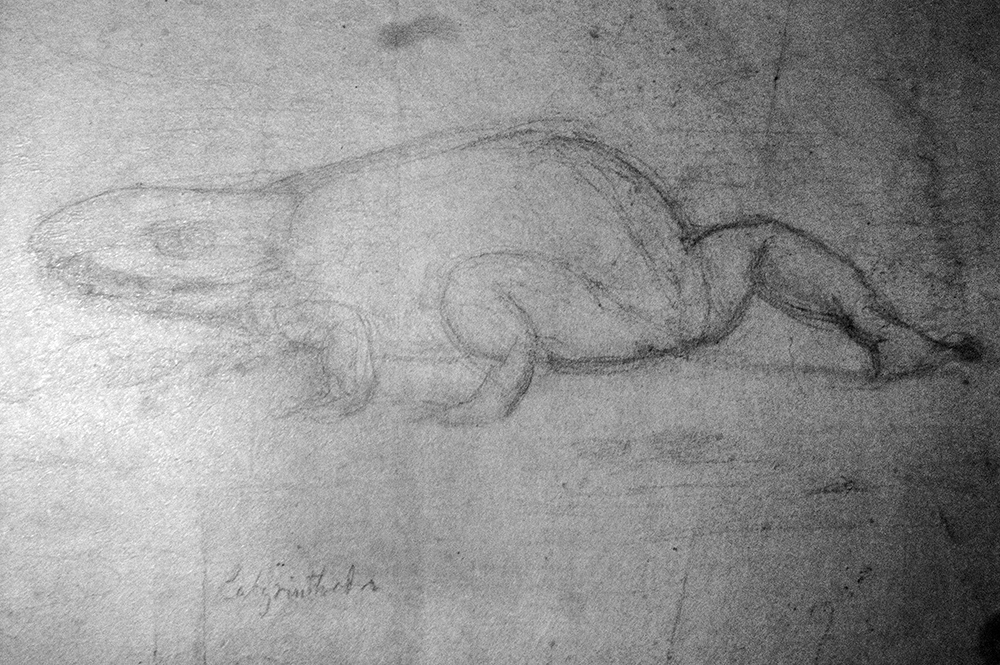
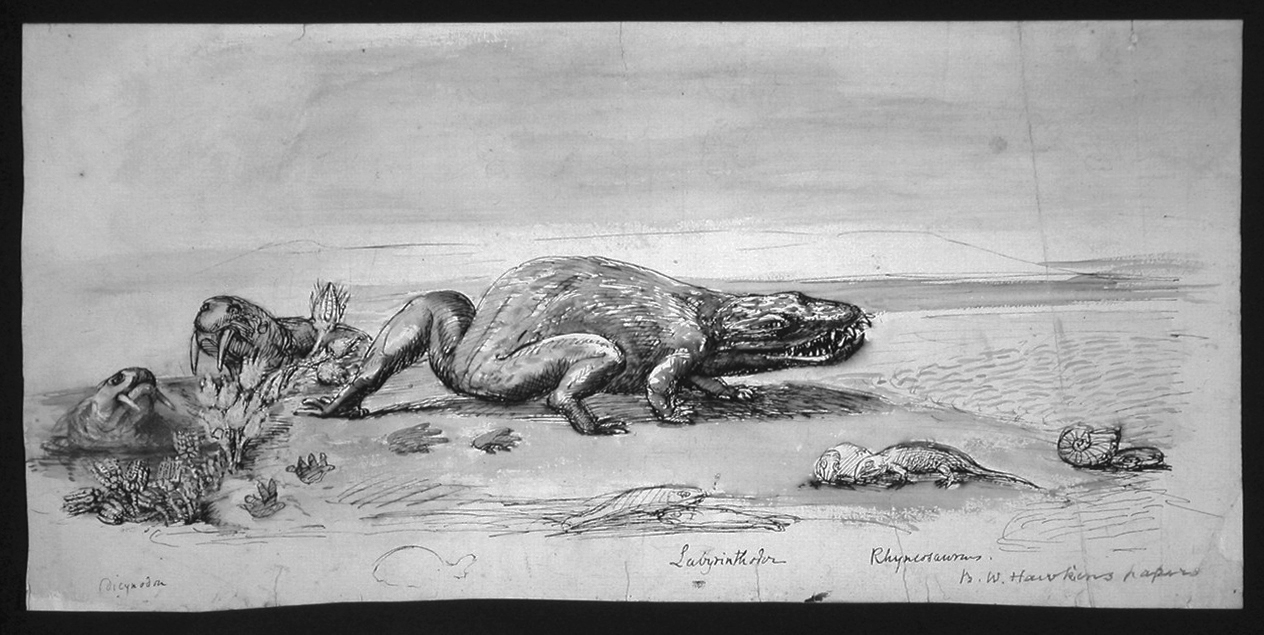
In 2008, I studied illustrations belonging to Benjamin Waterhouse Hawkins (1807-1894) in the collections of the British Museum. One work had a faintly-drawn pencil sketch of an animal named "Labyrinthodon" behind it (below left). I later found a more refined study of this image made by Hawkins online (below right). "Labyrinthodon" was supposed to represent a grotesque, frog-like animal which Hawkins thought was responsible for a set of large, unusual, prehistoric footprints. More than 150 years after it was first sketched, I humbly tried to restore Hawkins' faded "Labyrinthodon" in my own technique.
***
An insectoid "wheel-lock pistol"
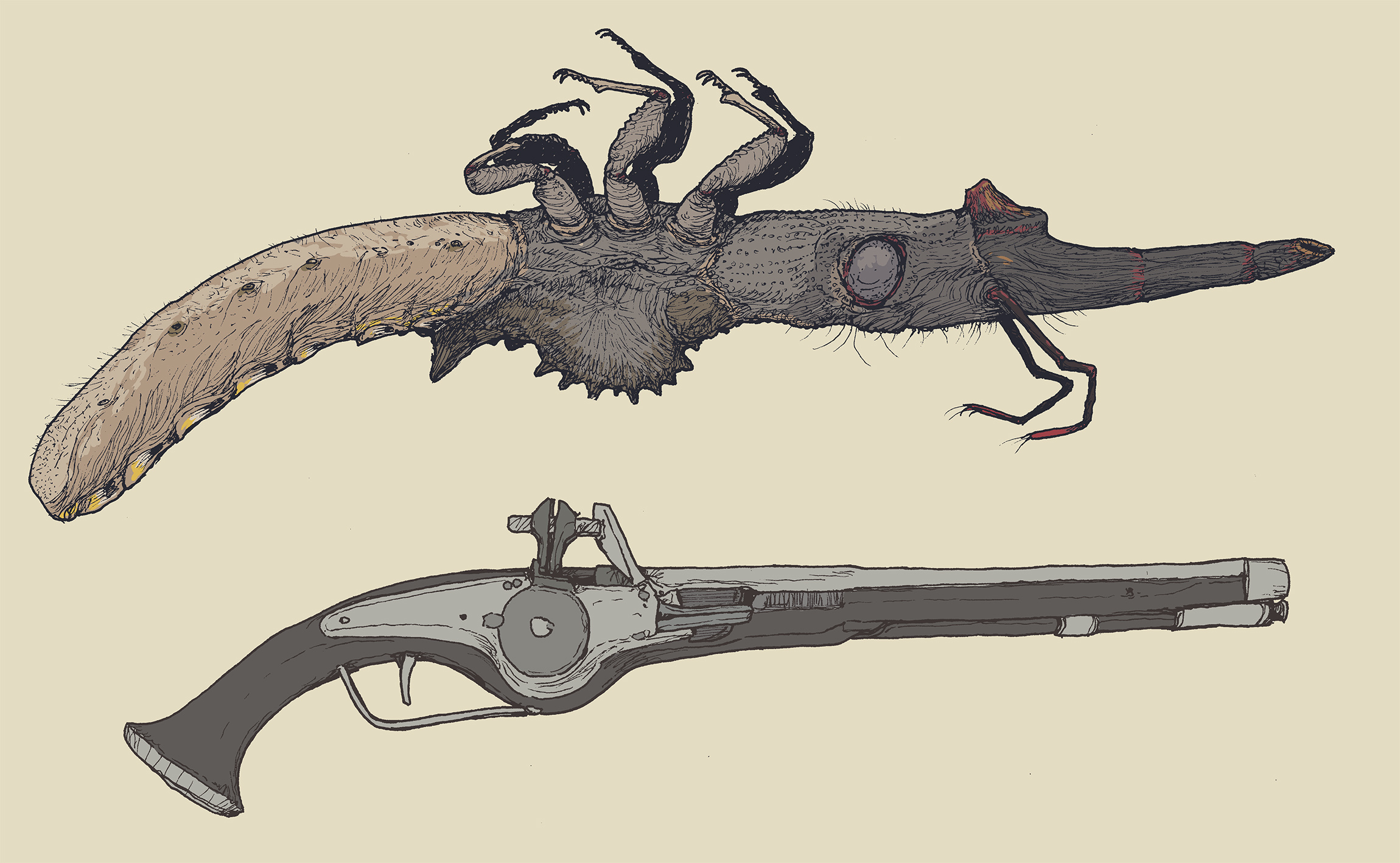
A frivolous exercise in speculative evolution - I took a wheel-bug (Reduviidae sp.) and imagined a weapon that resembles wheel-lock pistol, derived from this organism. The resulting "wheel-bug pistol" shoots venomous saliva up to a range of ten metres, and is better used as a stabbing weapon.
***
Scutellosaurus and the monument
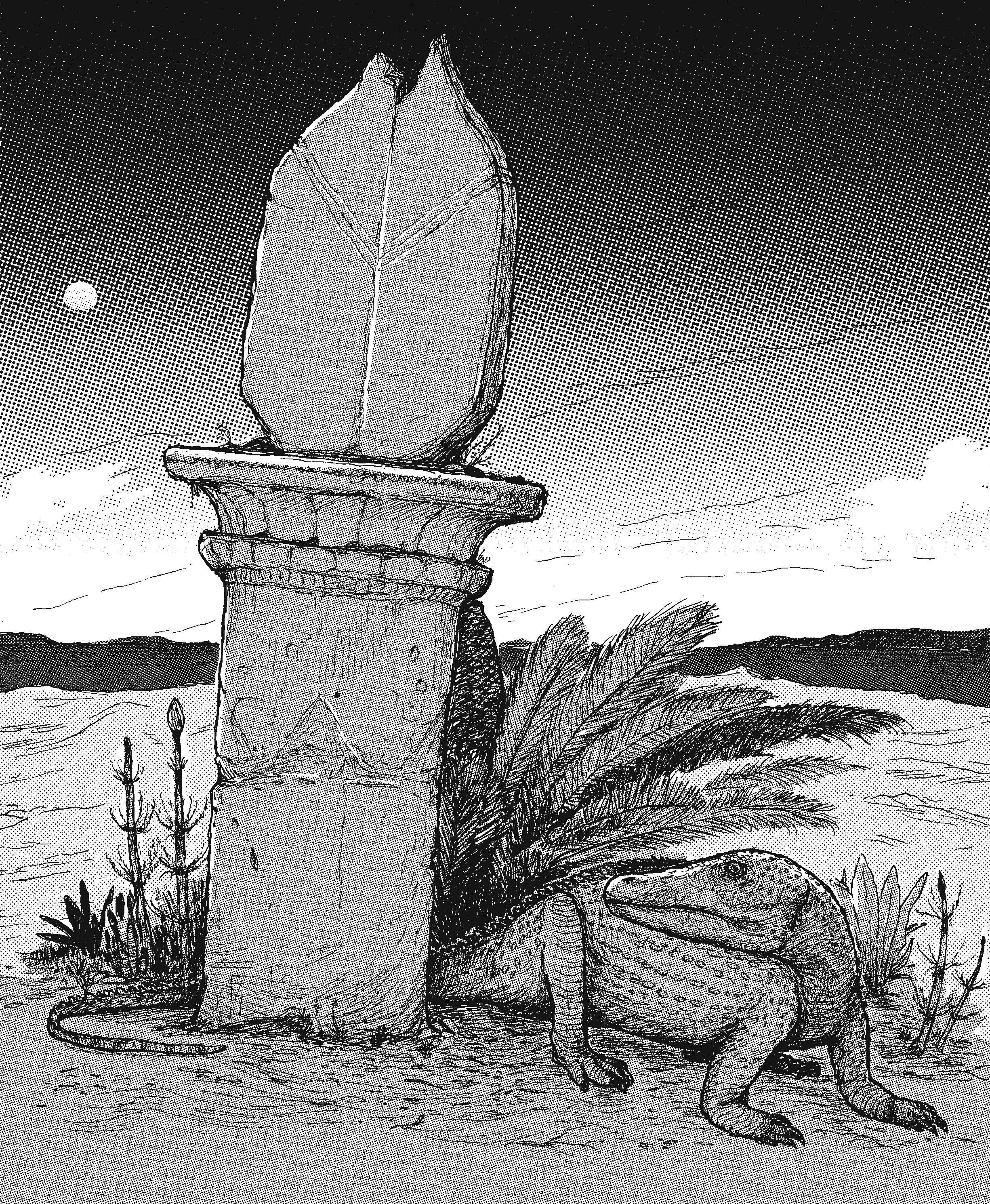
A Scutellosaurus, an early form of armoured dinosaur, rests beneath one of the last remnants of a lost civilisation. This is illustration depicts a fictional scenario, but the Scutellosaurus has been reconstructed as accurately as possible.
***
Gun-headed statue
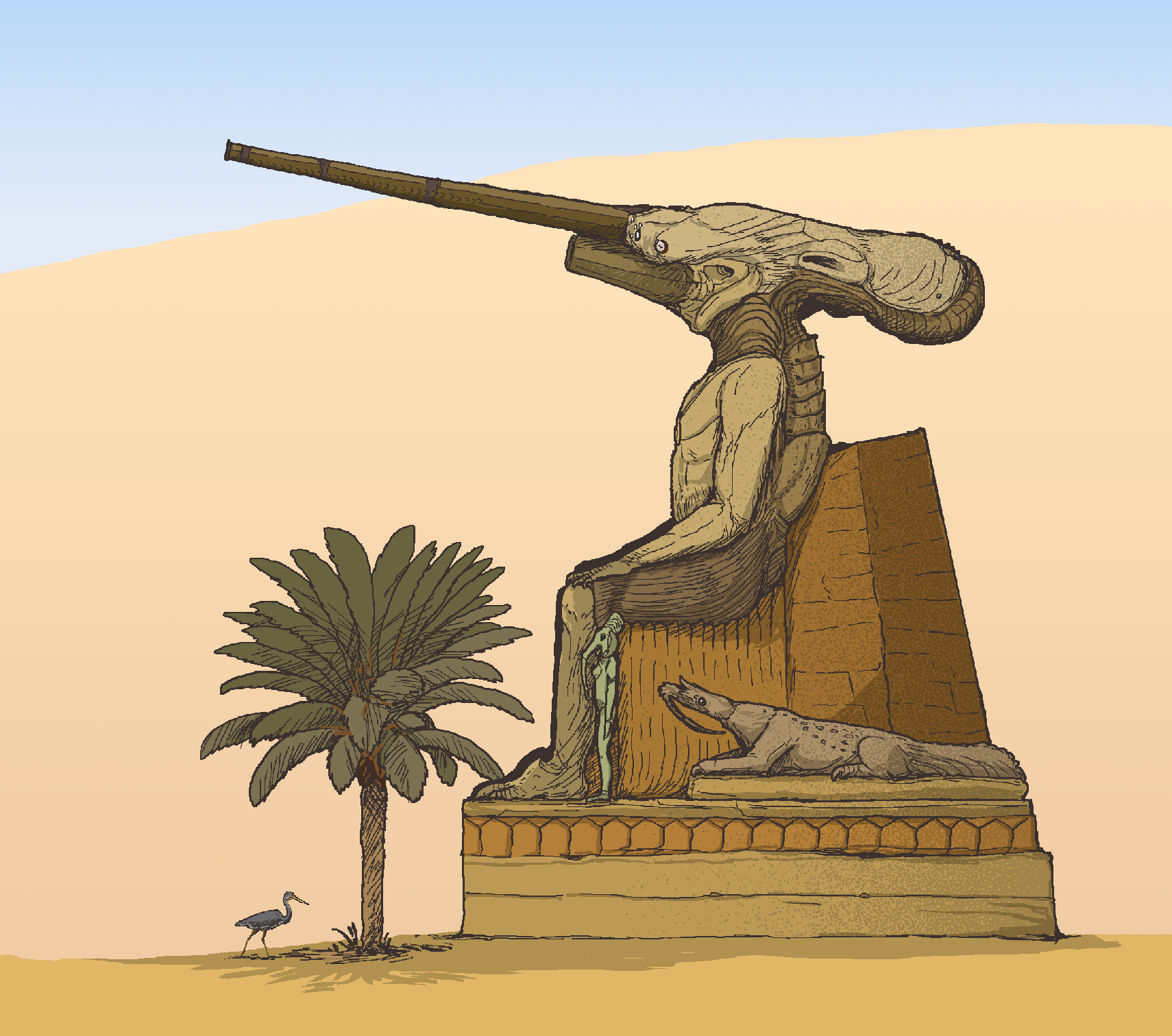
A colour study of a fantastic, gun-headed colossus. I drew it straight after seeing it in a dream. Is it a statue, a weapon or a god? What unknown foe was it built to vanquish?
***
Nilotic landscape
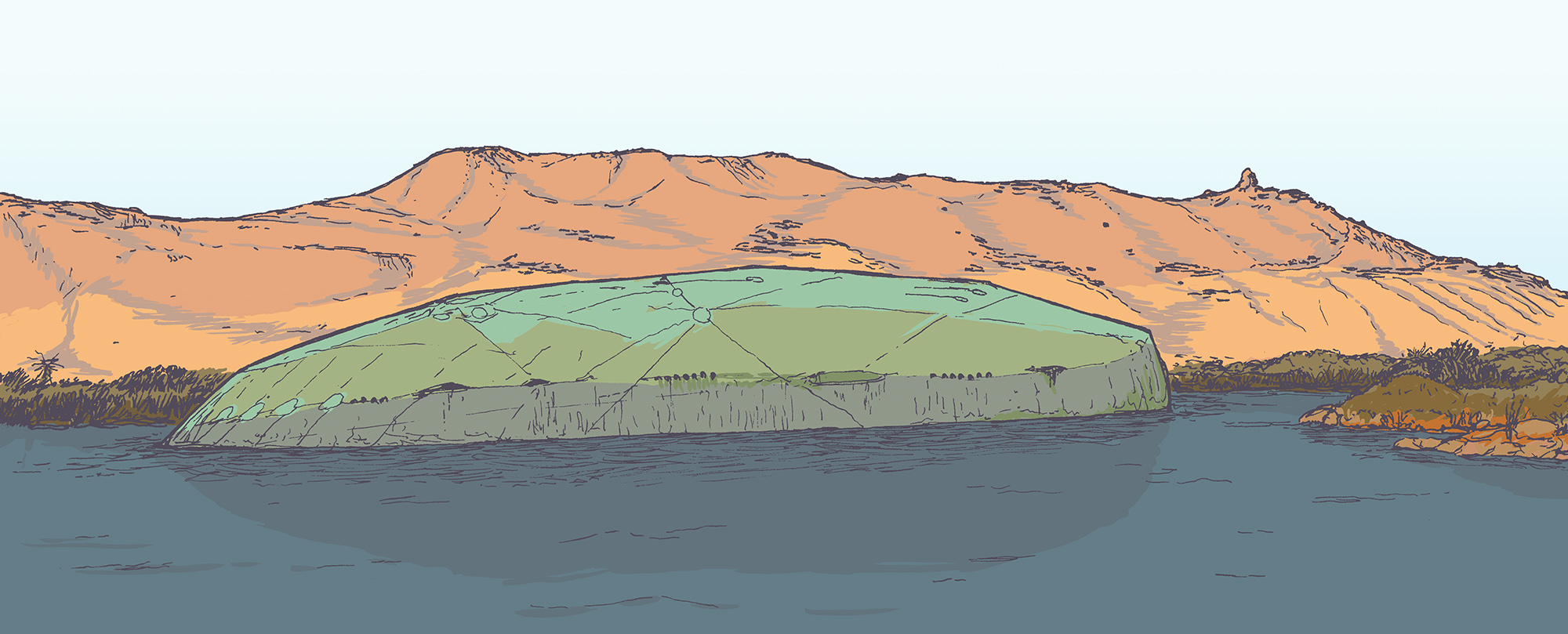
A colour study of a crystalline vessel of unknown origin, listing along the banks of the Nile.
***
Flying gekkotans
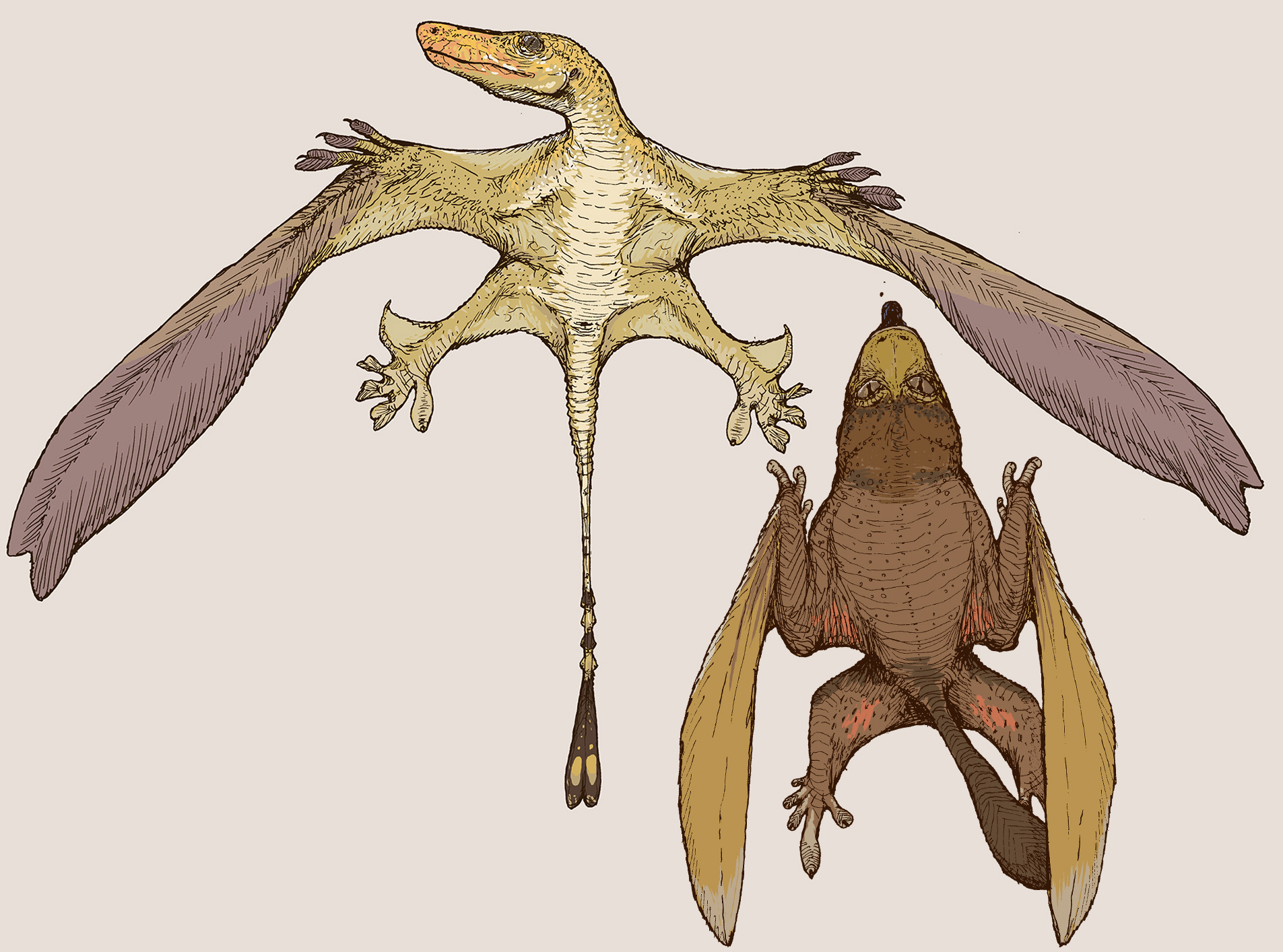

What if gecko-like lizards could evolve powered flight? I used references of gliding geckos, Ptychozoon sp., and various close-ups of gecko feet (see images below) to imagine a line of flying gekkotan lizards. The "wings" have been derived from a single, asymmetrically-hyper-extended toe pad, with the hair-like setae secondarily adapted into air-catching folds. The two representative flying gecko species seen here are Fulgurgekko (left), a daylight-loving forest canopy flyer that eats small animals and fruit; and Batrachogekko (right, below), a bat-like, nocturnal hunter of insects. These are not real animals, but the results of an exercise in speculative evolution.
***
A "termite gun"
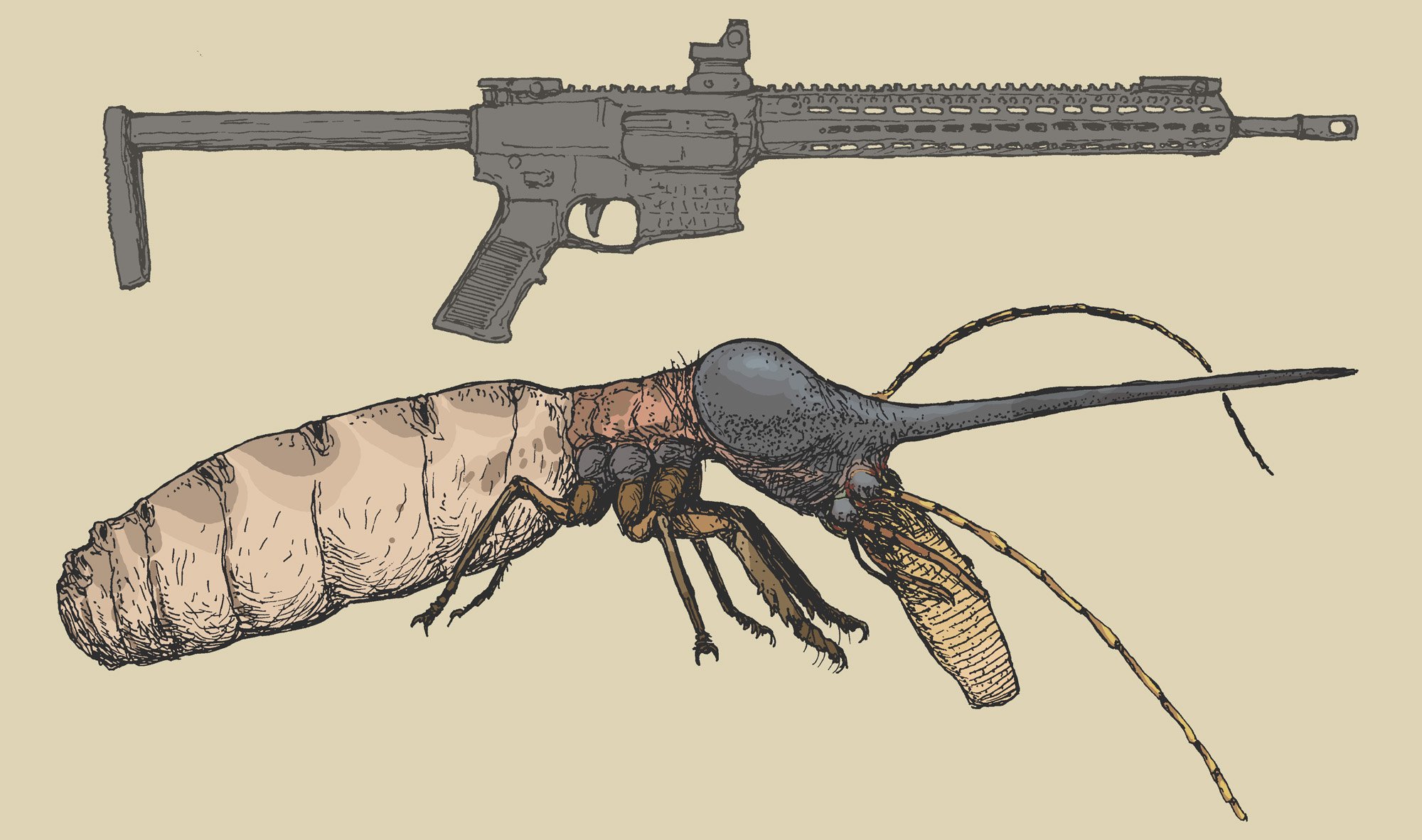

I imagined an "organic rifle", and came up with this idea of a gigantic termite, scaled up to the size of an AR15 rifle. The termite gun's barrel is derived from the surprisingly gun-like nasus organ that develops among the soldier castes of certain termite species (see above). The termite gun is fired by tickling the back of its neck; and charged by feeding it an energy rich "ammo clip", actually an ootheca (egg purse) laid by another form of genetically-manipulated insect. For all its seriousness, this is actually a frivolous concept - I don't think that a civilisation advanced enough to turn insects into rifles would actually need such weapons.
***
Revisiting my Decal Creature
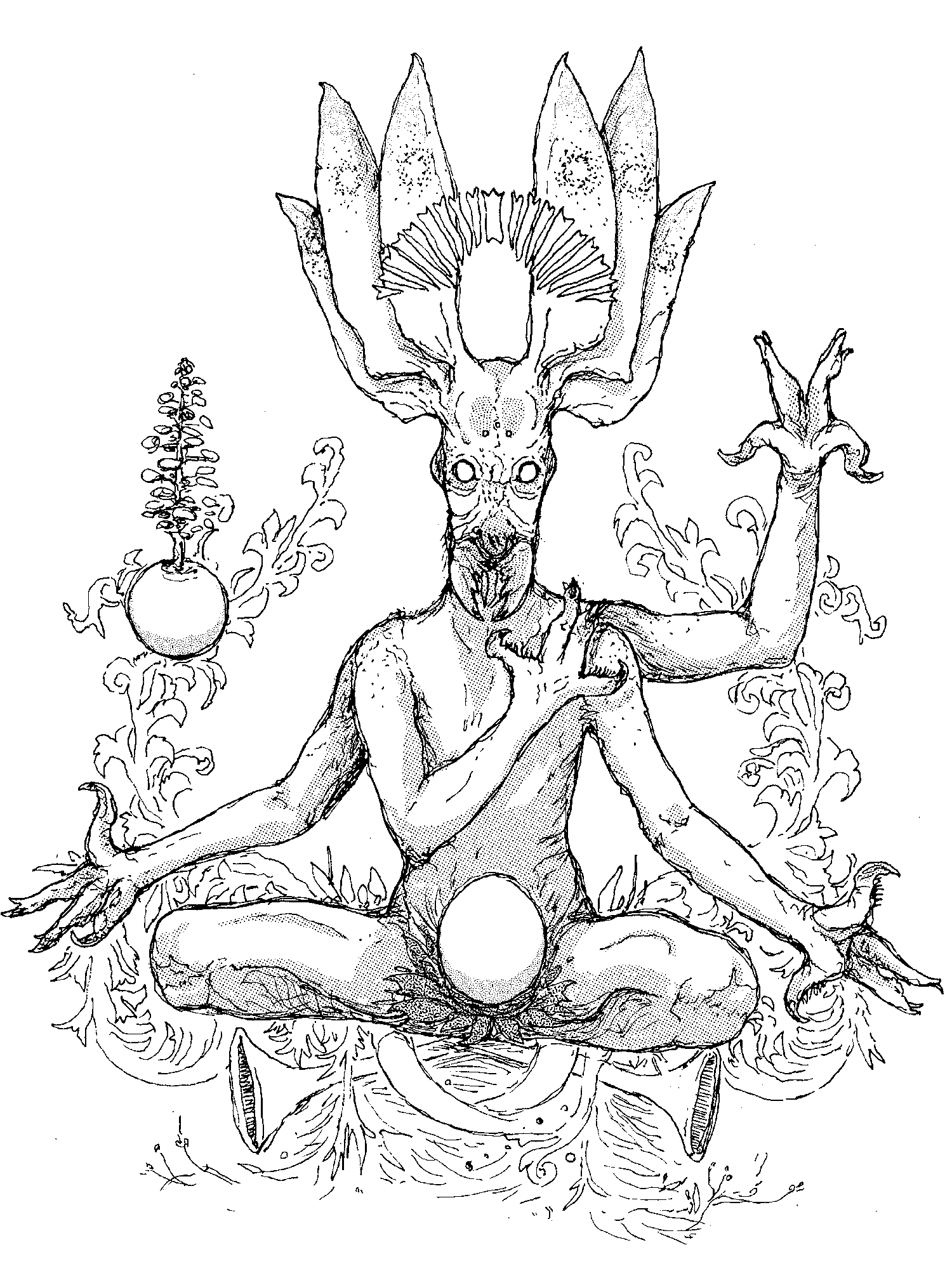
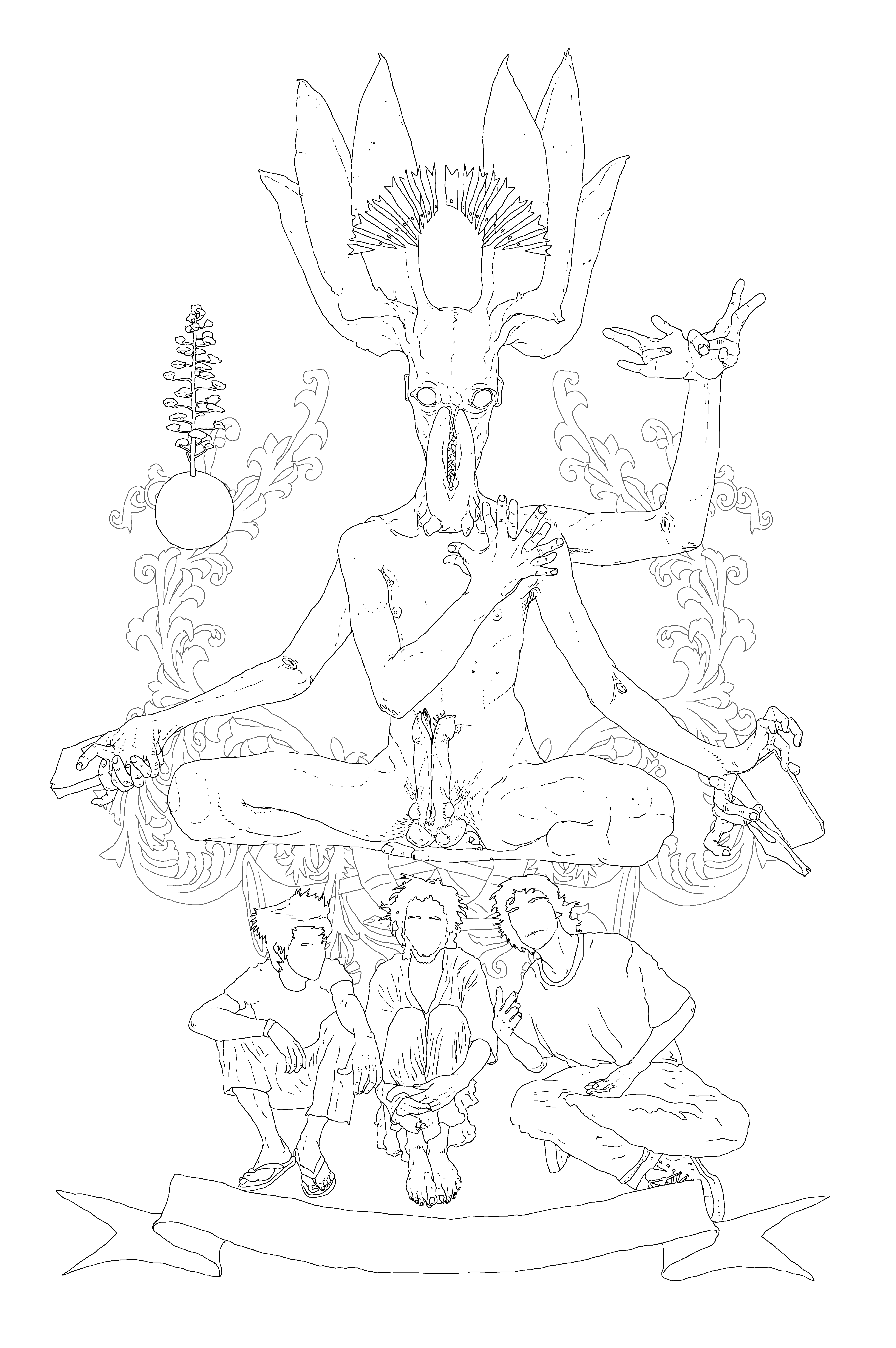
In 2006, on a whim, I drew the macabre creature seen on the right. With its exact (but weightless) lines; its edgy (but tasteless) display of genitalia; alien (but imprecisely referenced) anatomy; it encapsulated many facets of my psychology at the time. In a short time, I started using it as a personal logo.
In 2019, I drew the Decal Creature again in order to celebrate the launching of this website. Now its lines are less precise, but carry more weight. A cosmic egg has replaced the embarrassing erection. Its anatomy still doesn’t make sense; but at least it is a bit more plausible, and stands as its own thing rather than a tracing of photographs… I guess I grew up a bit.
***
Organic houses


I drew and painted a lot of organic houses between 2014 and 2018. Visit here for a full gallery.
***
Pteranodon with a filamentous tail
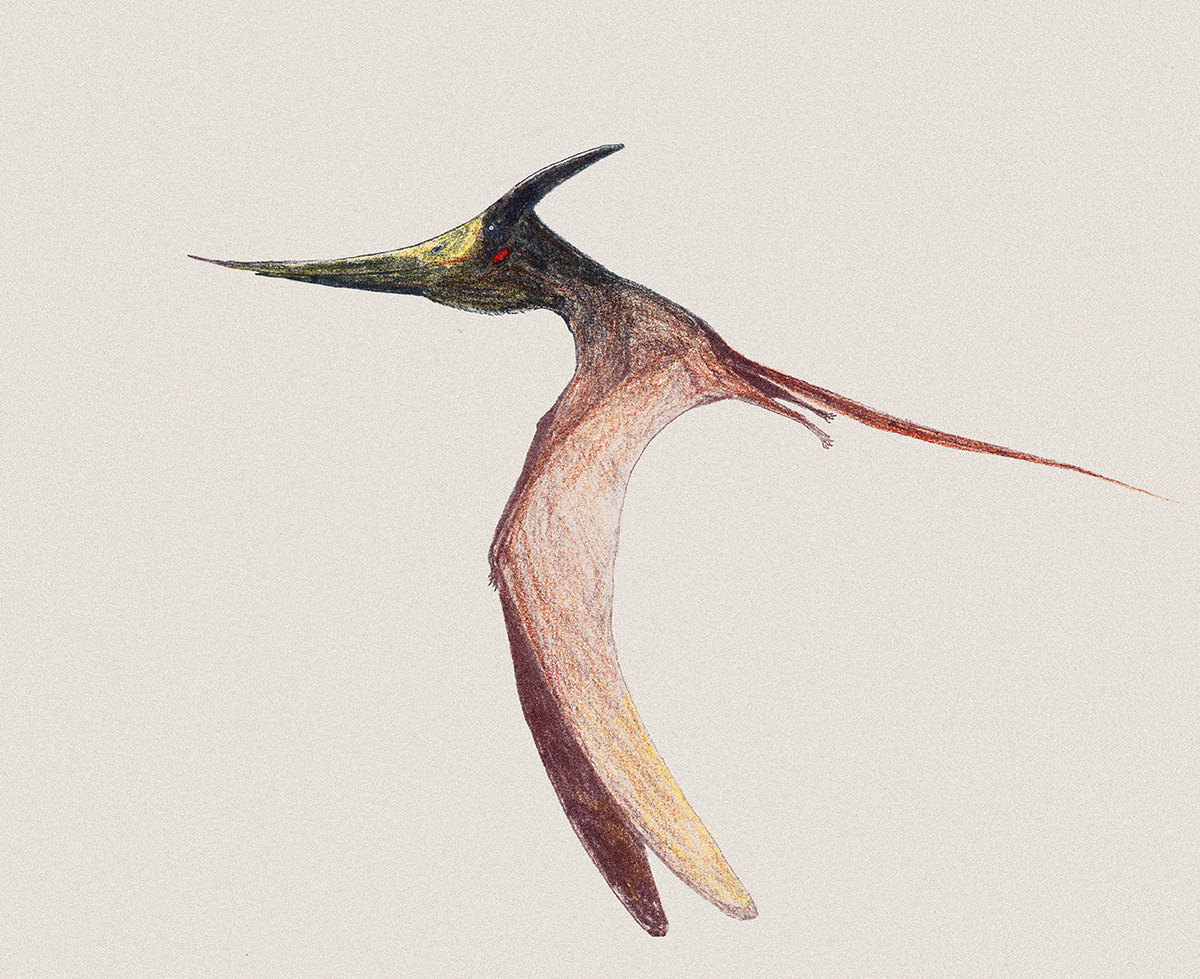
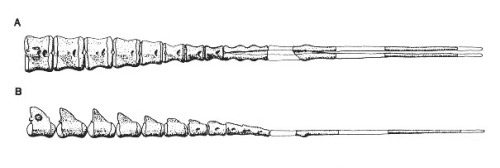
The flying reptile Pteranodon had unusually flattened, pronged tailbones (see above). Perhaps they supported a filamentous tail?
***
The creature responsible for the Flatwoods incident
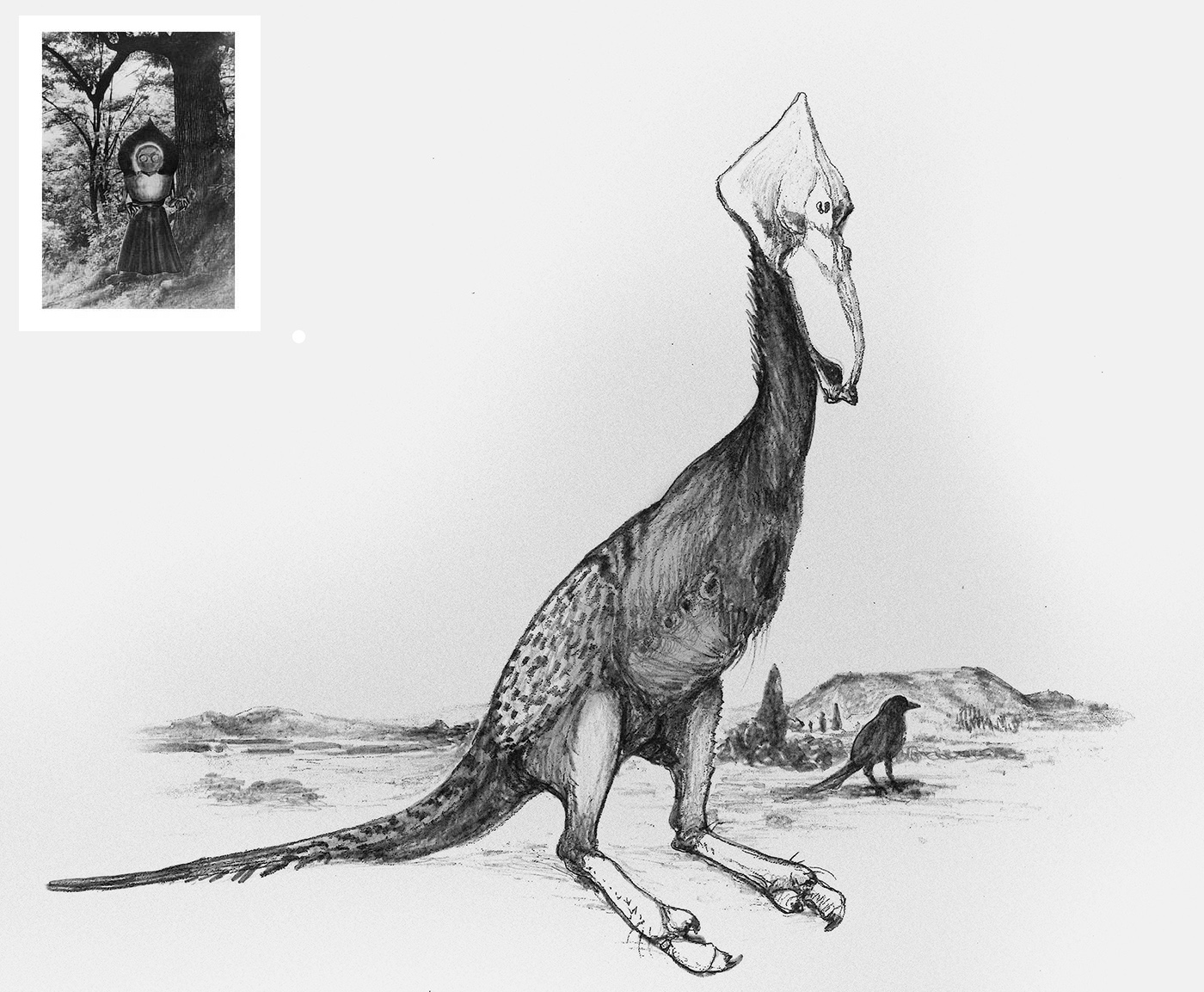
A creature with arachnid, humanoid and dinosaurian features; loosely inspired by the so-called Flatwoods Monster (see inset picture). An exercise in speculative evolution.
***
Birds with lips
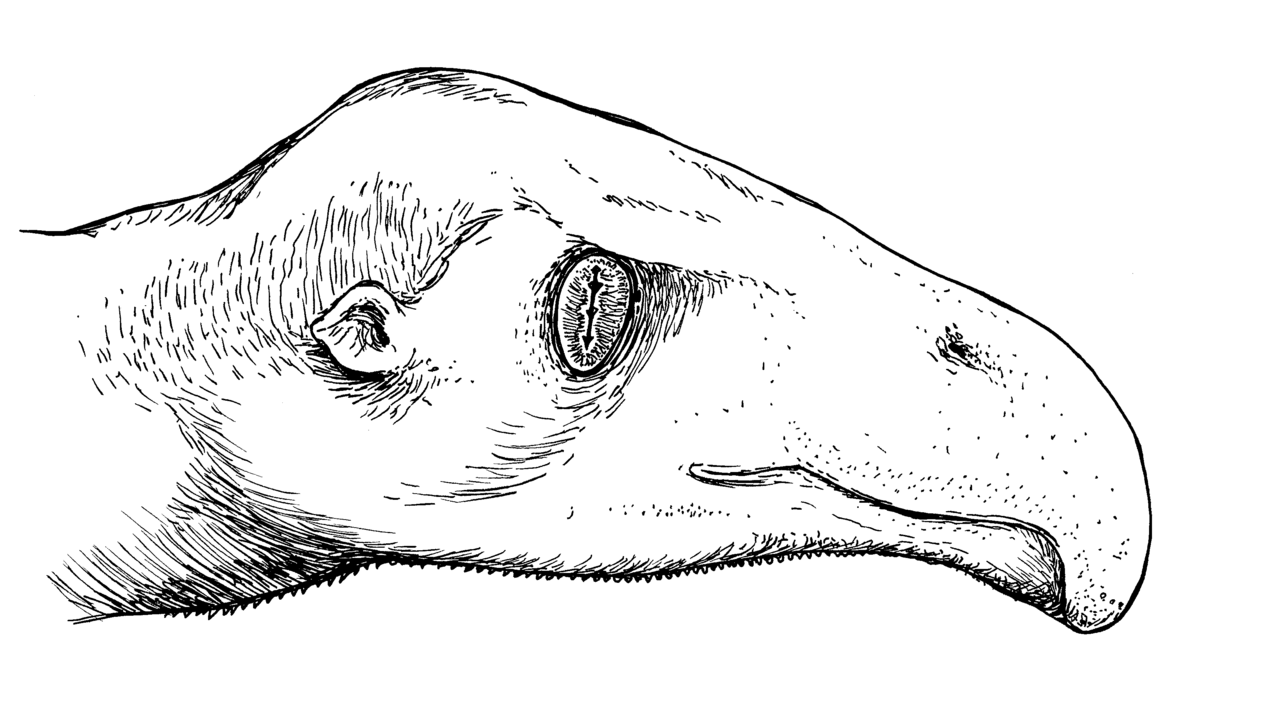
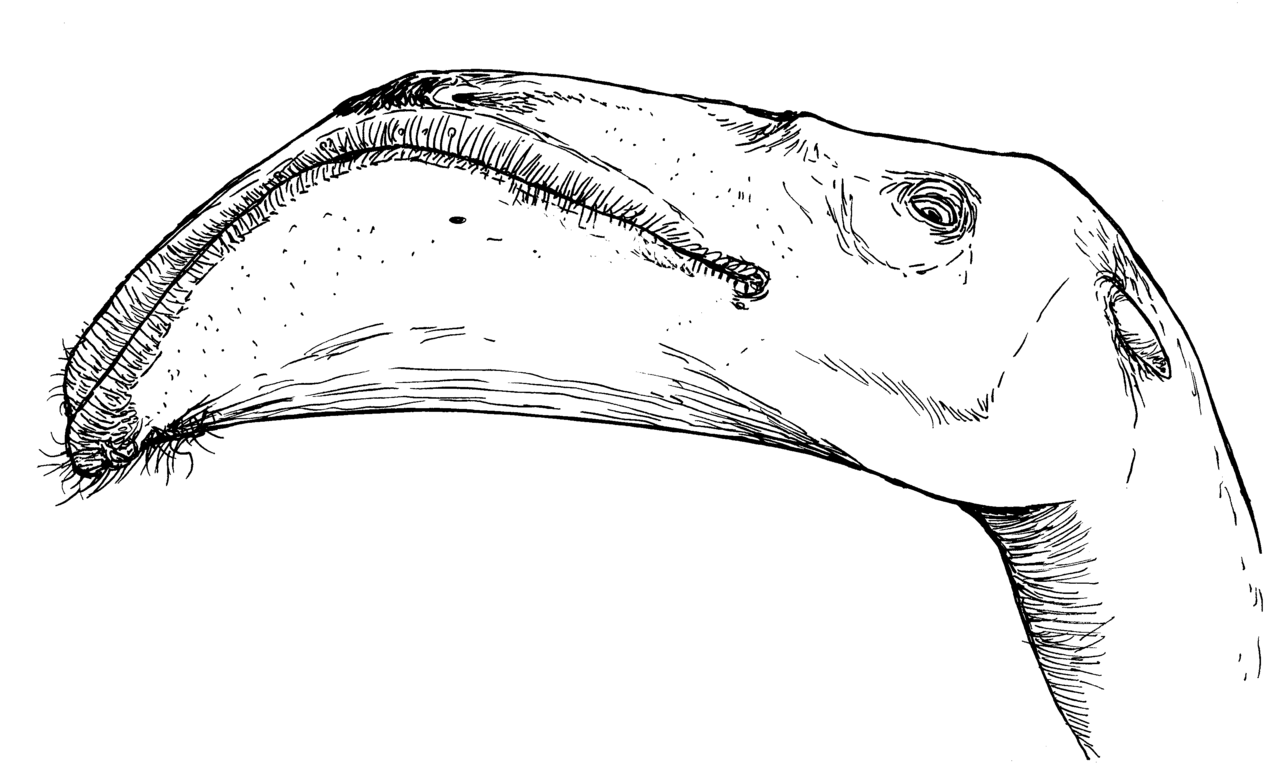
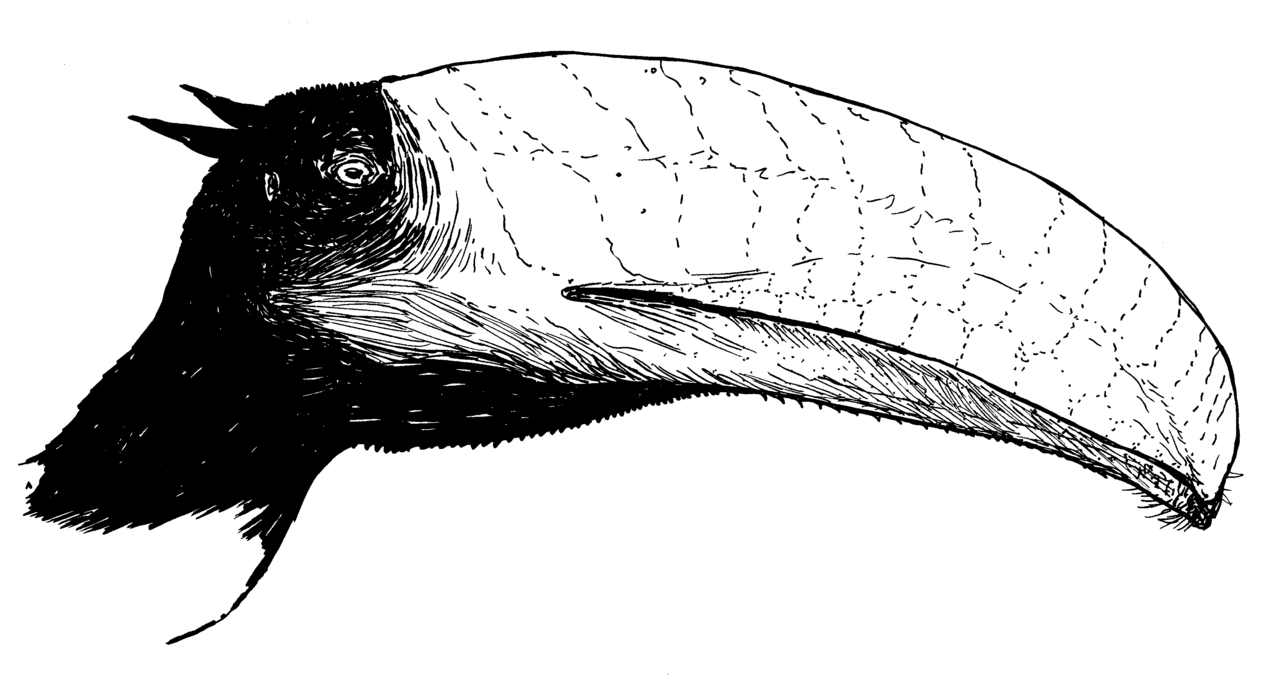
There has been strong debate on the extent of gum and mouth tissues on dinosaurs and relatives. Long story short; the professional consensus is towards some sort of covering that rendered the teeth mostly invisible when viewed from the outside. But this new interpretation may also be mistaken. Crocodiles and birds, living relatives of dinosaurs, have mostly “bare” mouth tissues. I played a little game and illustrated some contemporary bird species; an eagle, a flamingo and a toucan, with the same sort of liberal oral dressage applied to dinosaur reconstructions today. They look equally ridiculous and feasible. The debate on facial tissue continues, and will likely never end.
***
Quetzalcoatlus
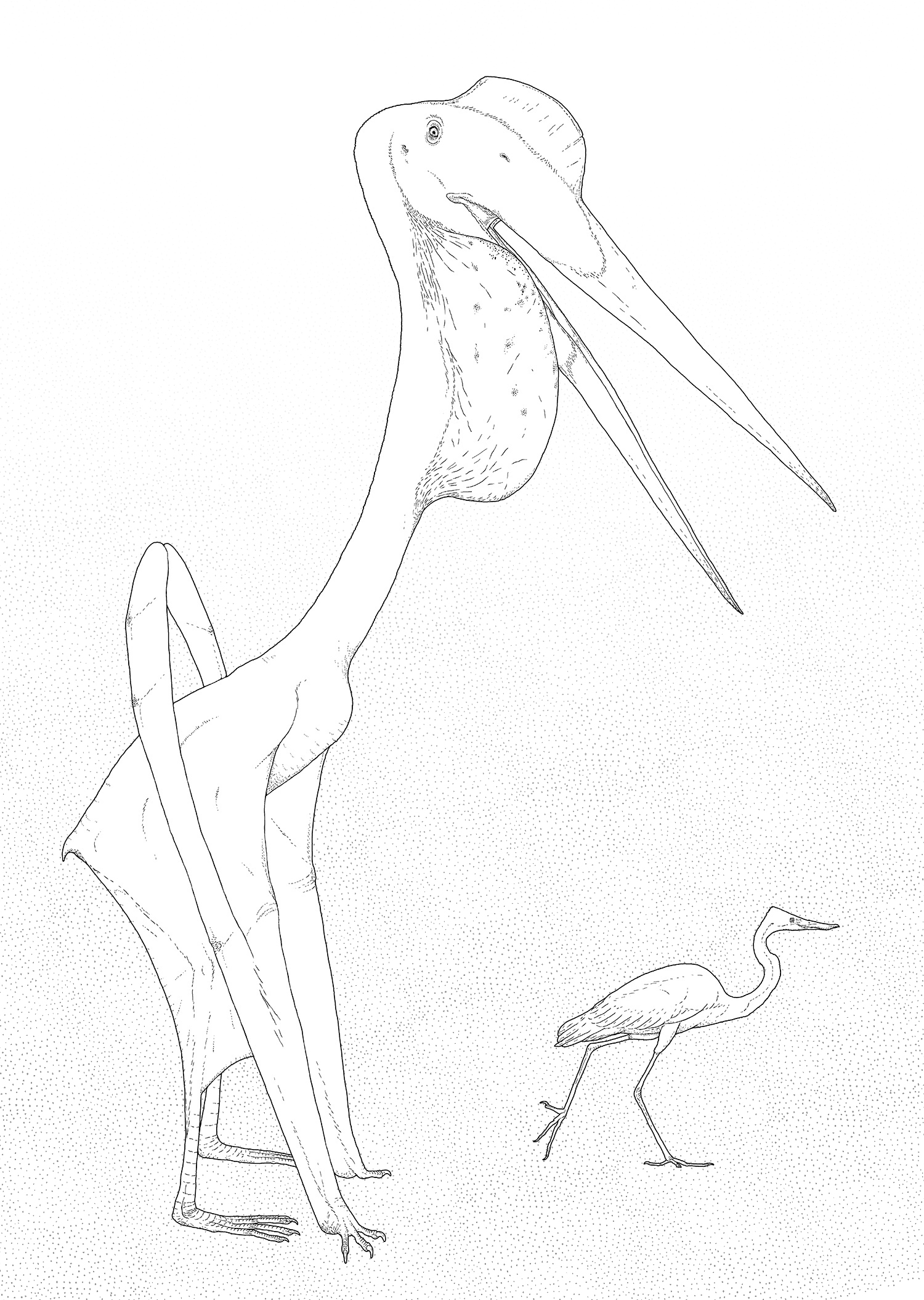
Illustration of the giant, graceful pterosaur Quetzalcoatlus, next to an ancient waterbird.
***
Anhanguera
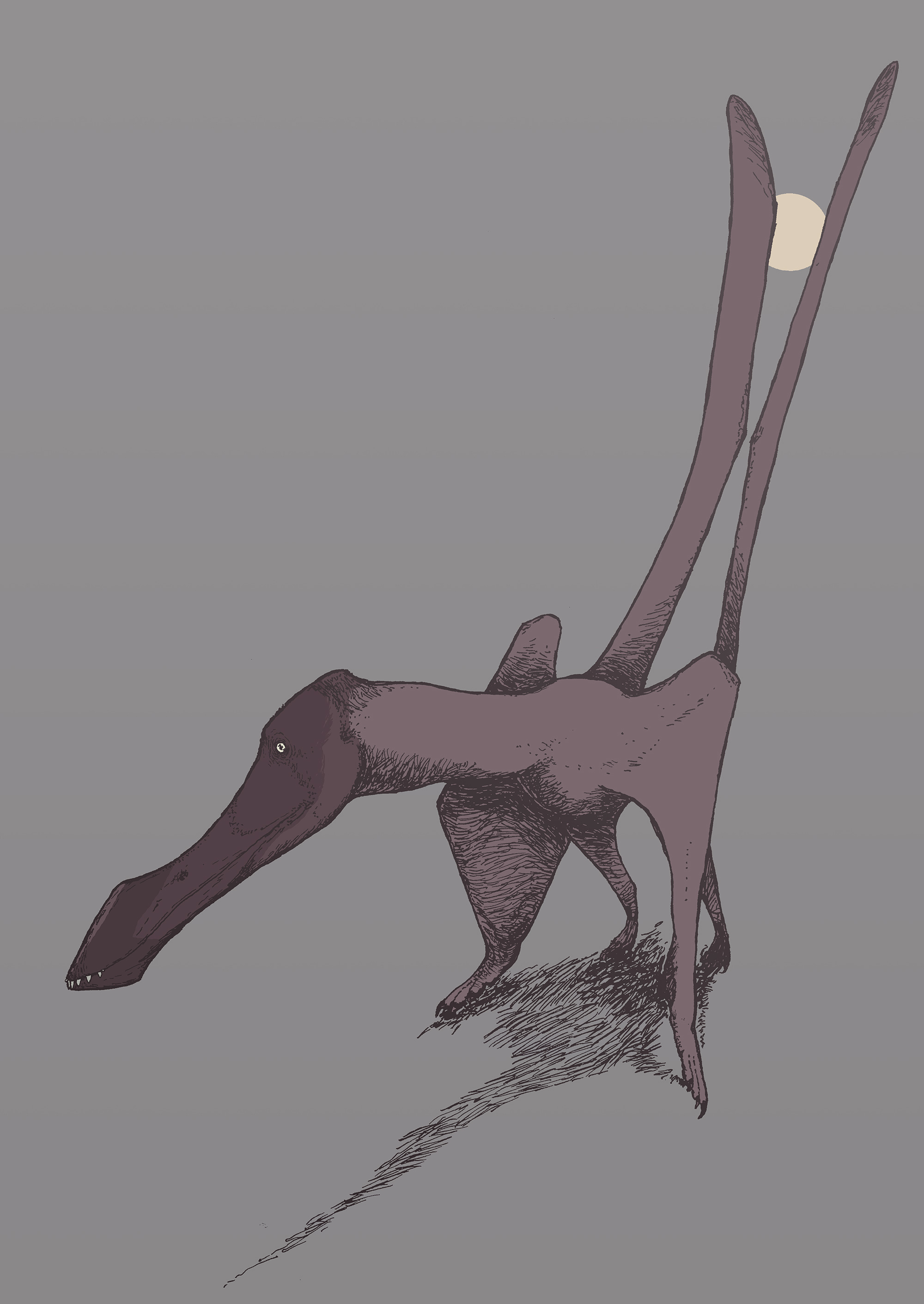
An illustration of Anhanhguera, the majestic flying reptile whose fossils were destroyed in the September 2018 fire at Brazil's National Museum.
***
A realistic look at a fake fossil
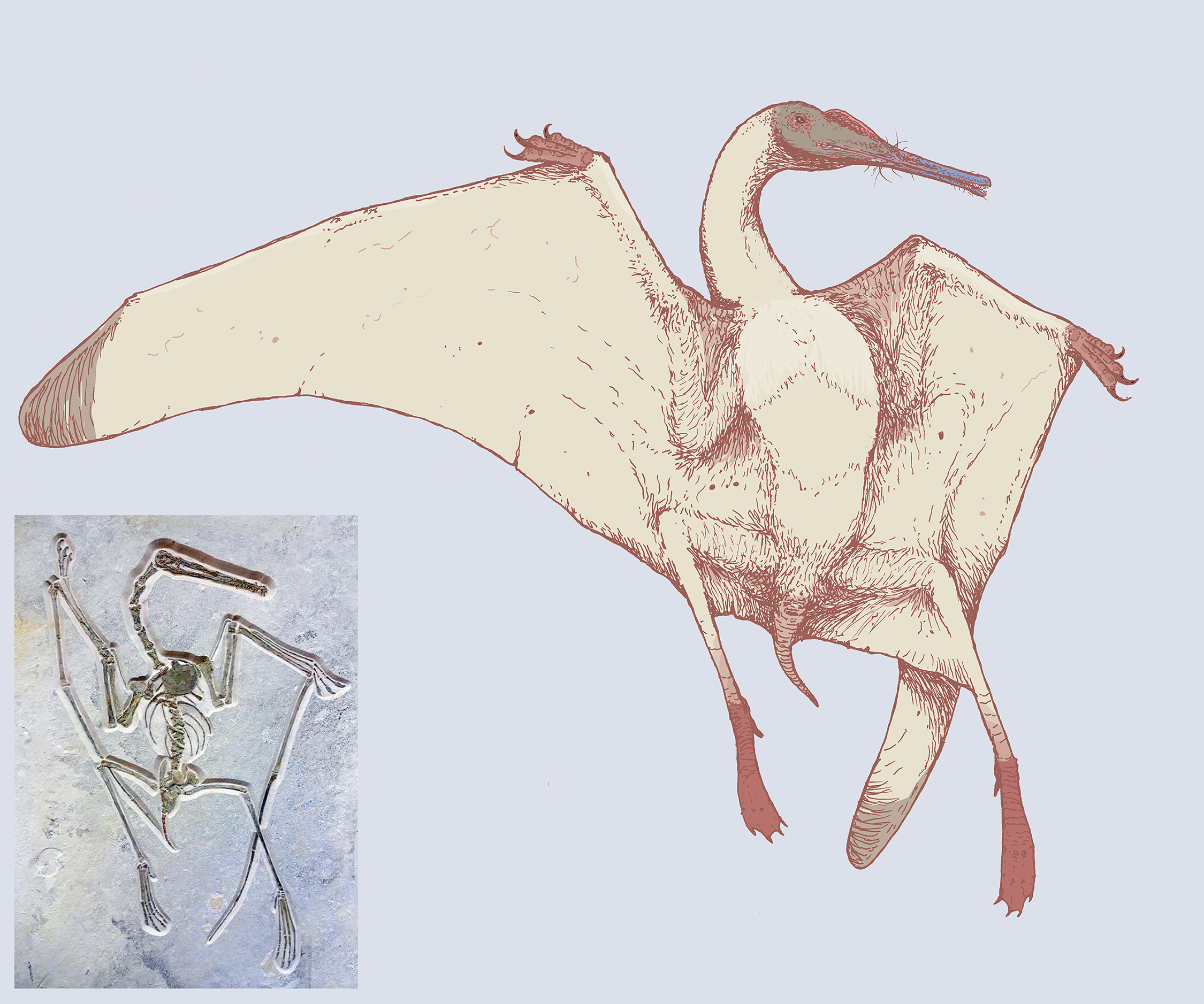
The reconstruction of an unusually-small-headed pterosaur fossil, seen in the inset photograph. I later learnt that this fossil was possibly a fake, made by Chinese fossil dealers.
***
Eopiscator, an imaginary dinosaur
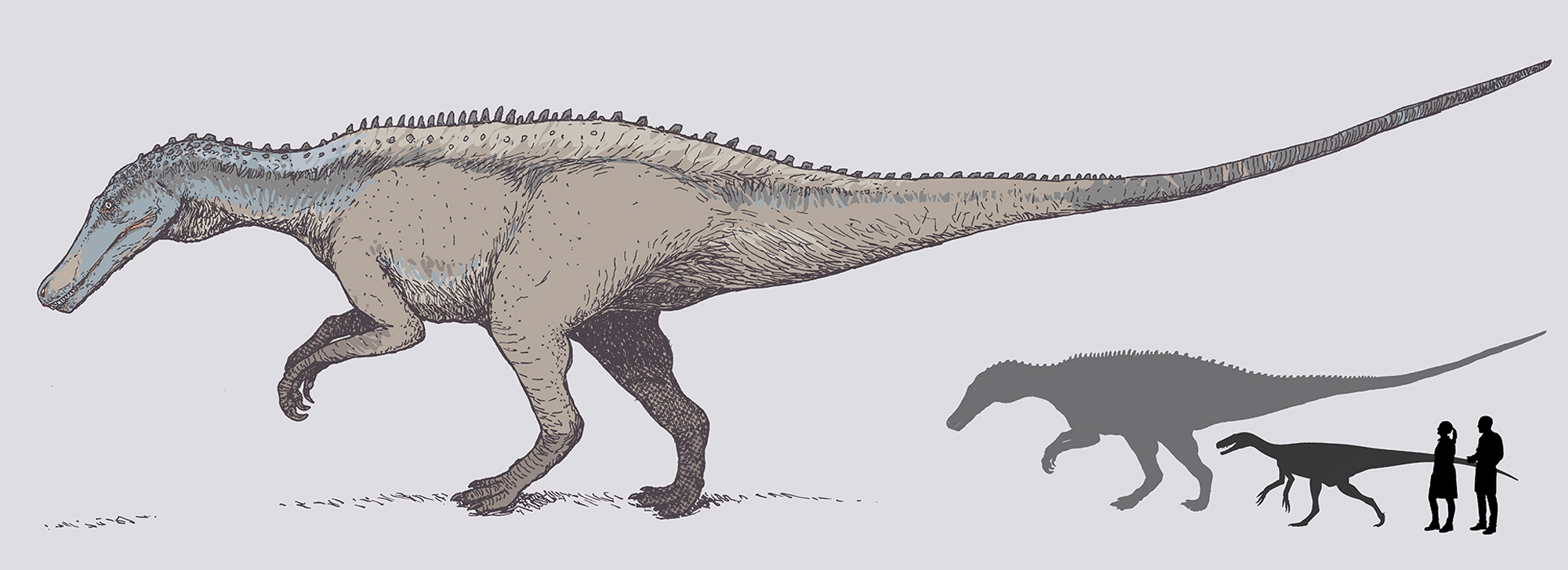
Illustration of Eopiscator, a large descendant of the proto-theropod Herrerasaurus (shown as silhouette on the lower right), specialised for a mainly fish-eating diet. This animal is a concept of speculative evolution, but I would not be surprised if something like it was discovered in the fossil record. In reality, the sail-backed Spinosaurus and the big, thin-headed “raptor” dinosaur Austroraptor also had similar specialisations for a mostly fish-eating lifestyle.
***
Coelophysis
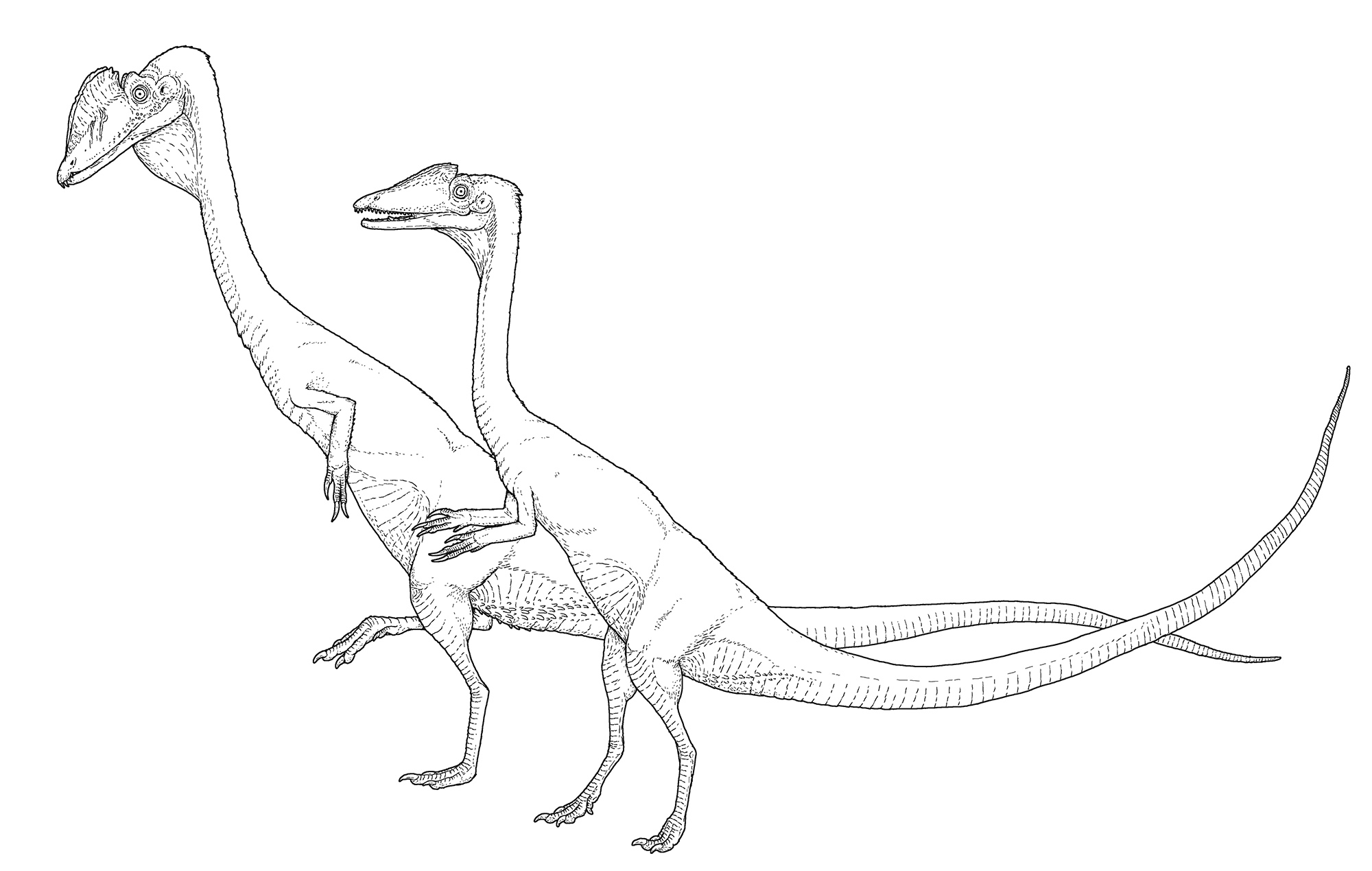
Two males of the early dinosaur Coelophysis engaging in social competition. The picture above was drawn in 2011. In 2018, I illustrated Coelophysis again. You can see the result below.
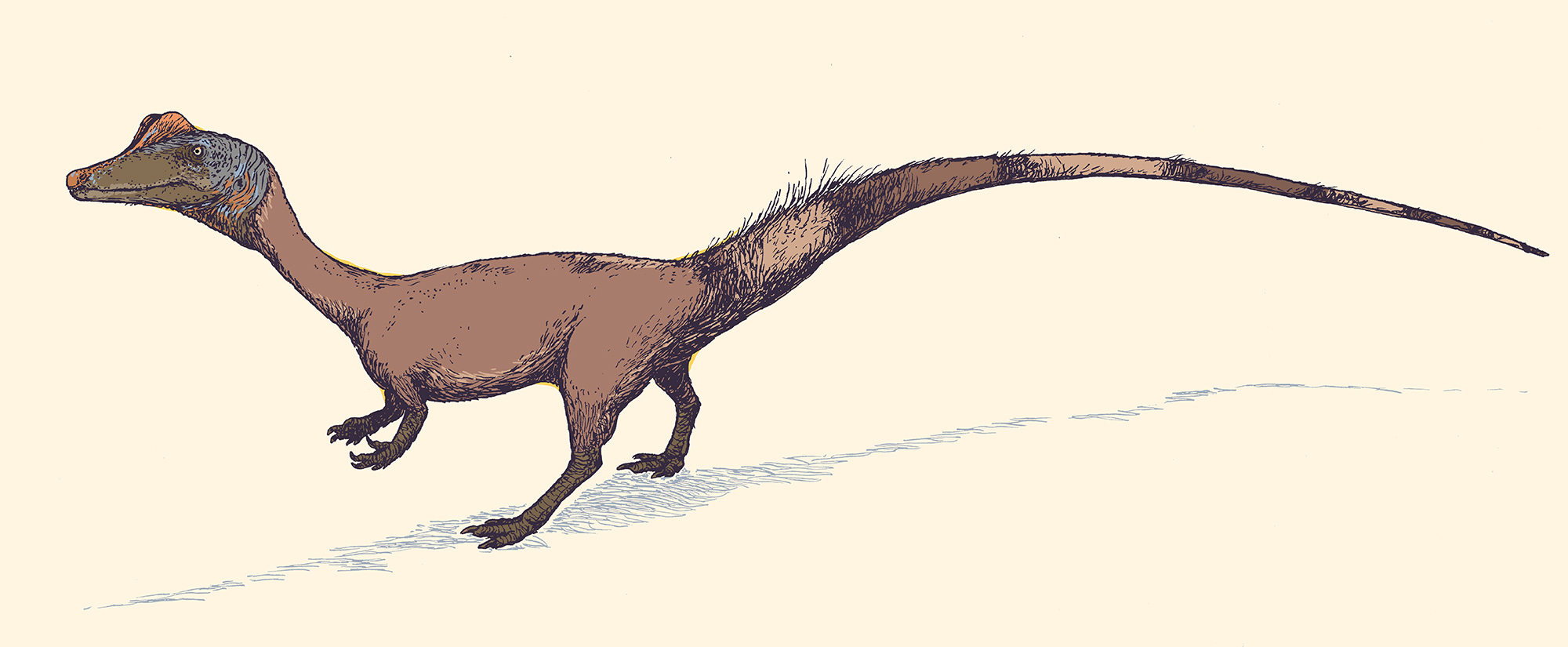
***
Club-bearing predatory animals

I have been thinking about why the simplest weapon - the club, almost never evolved in terrestrial vertebrate predators in our timeline. So I came up with a lineage of “clobberers”, strange creatures descended from early tetrapods with club-like forelimbs. Here are three species:
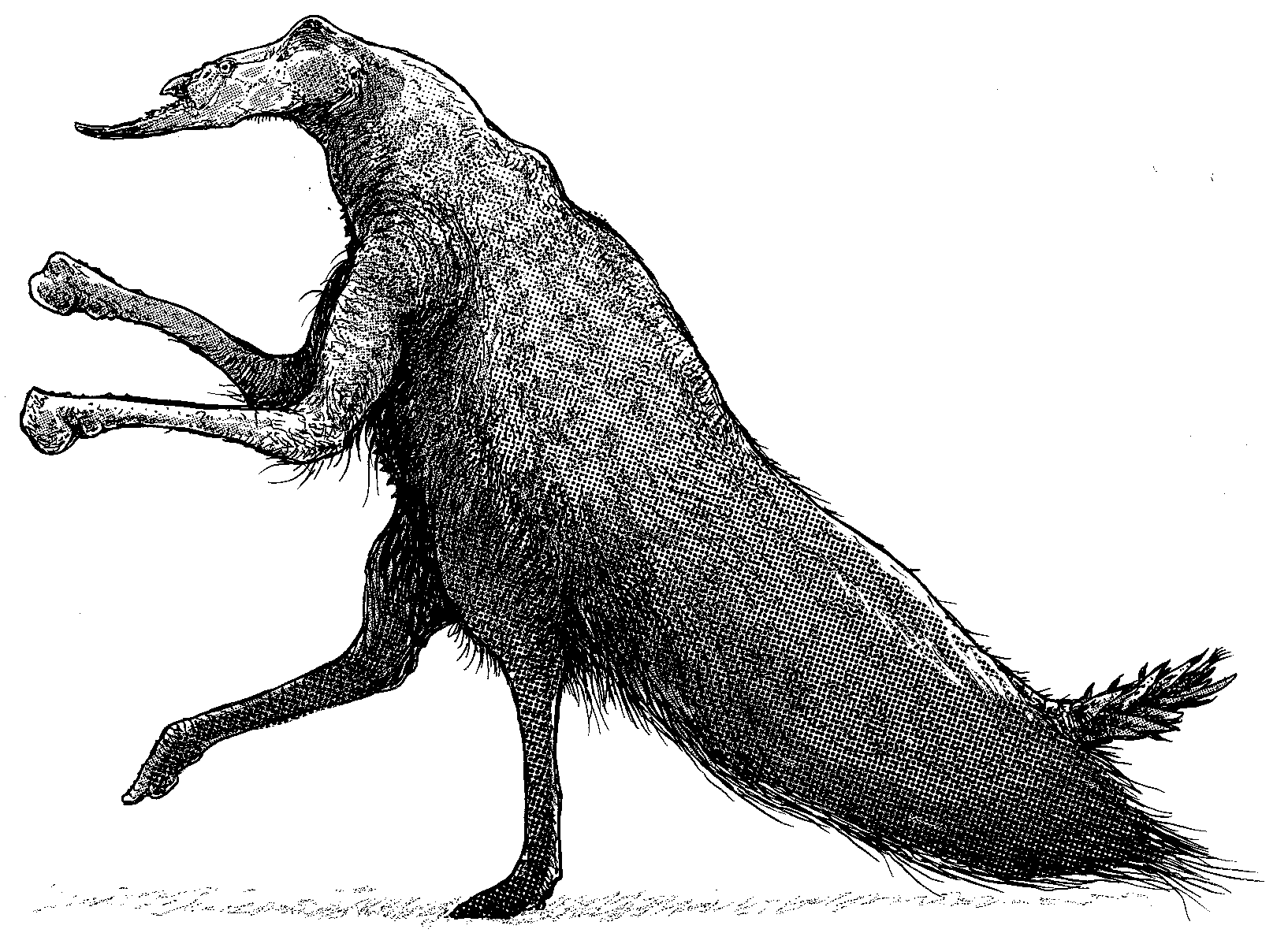
Oganodon heteromorphophyllum
A gigantic form, feeds on plants as well as meat. Often knocks the trunks of giant fig trees and feeds on the rain of fruit. Aggressive and rarely seen. Associated with a certain “terrifying musky odour”.
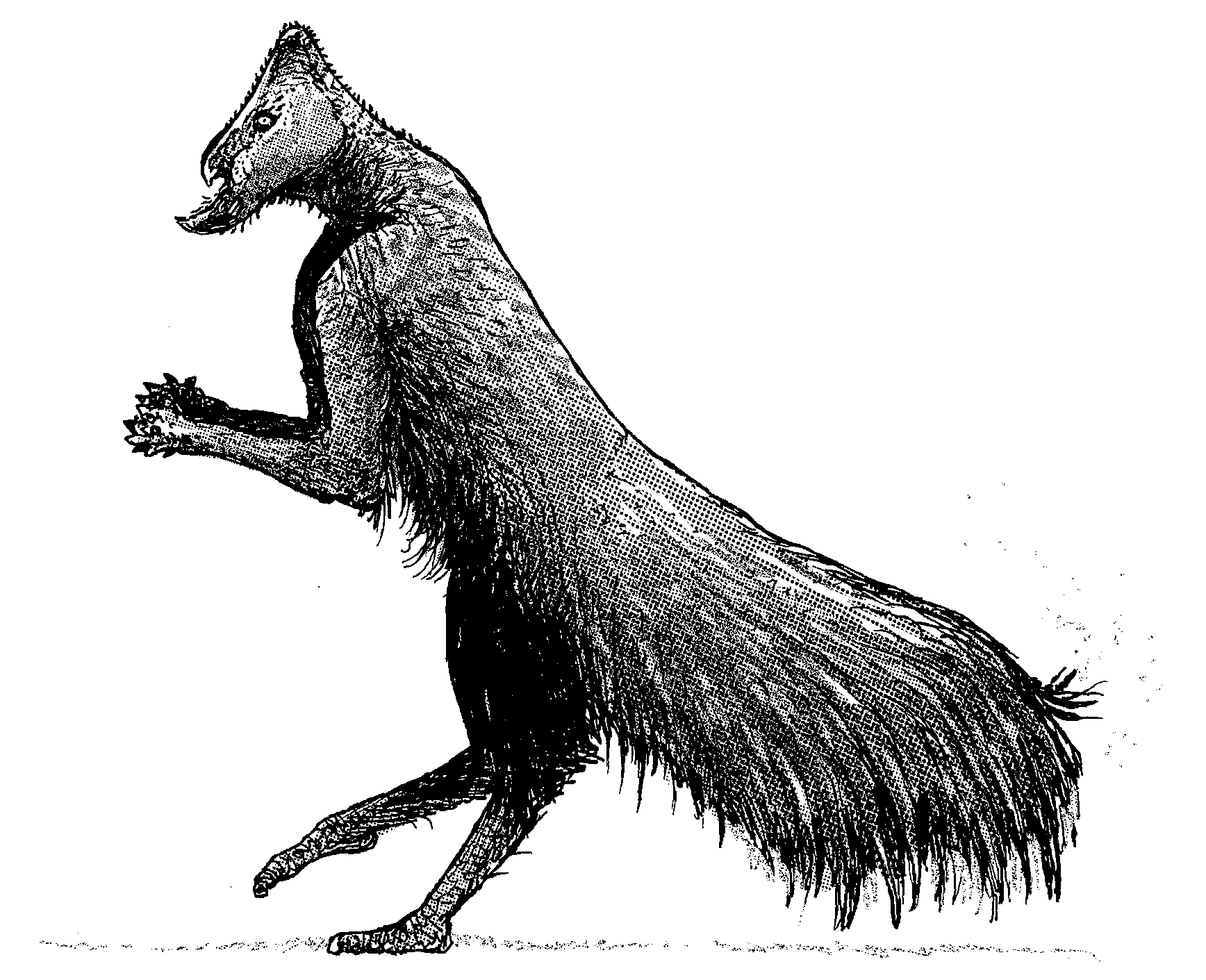
Pusatrobrachis tartarus
An ancestral form, its arms still preserve vestiges of its fingers as spike-like projections. A cursorial hunter, does not rely as often on sit-and-wait tactics.
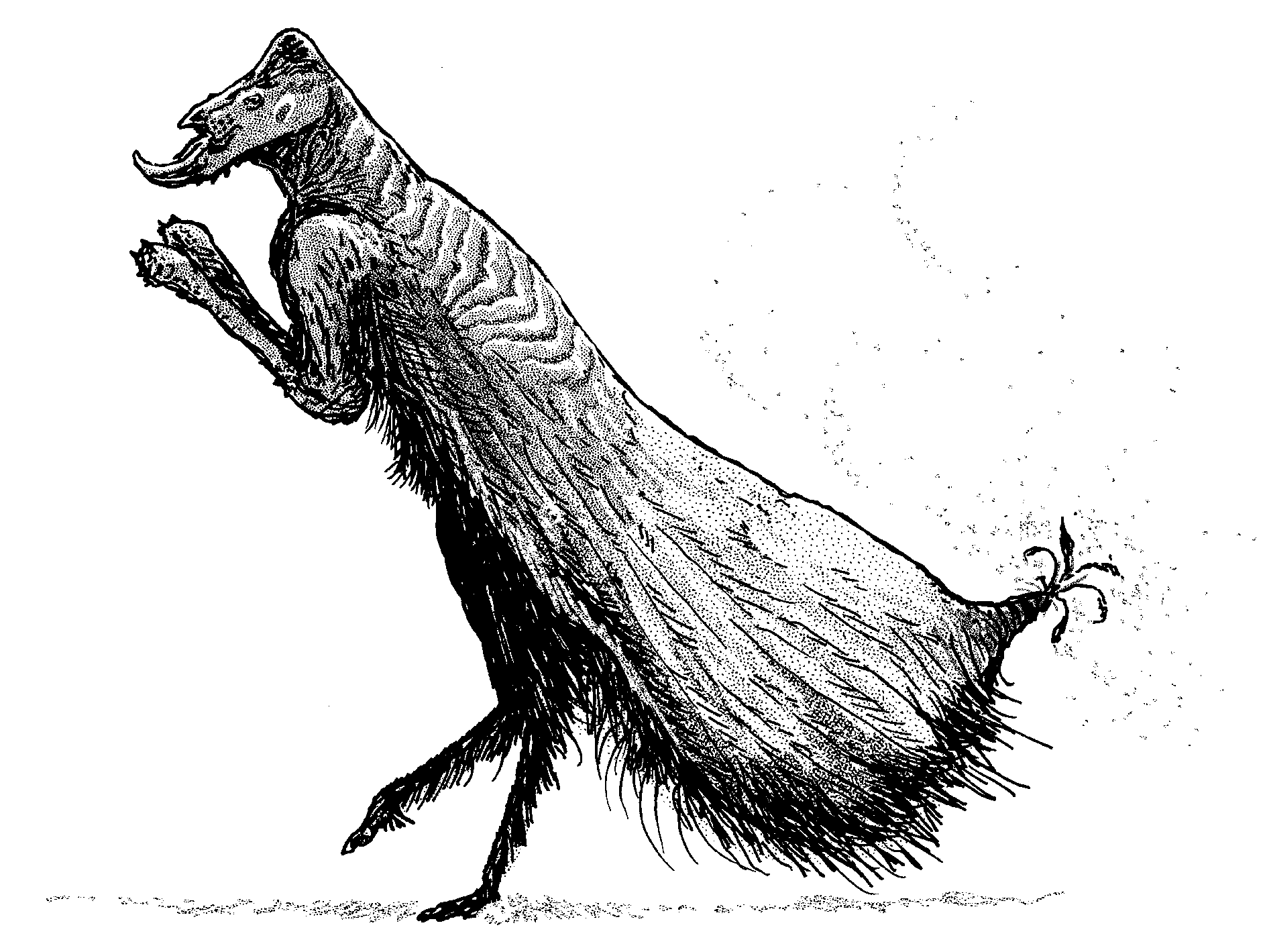
Phermonophorodon lamiae
The smallest form of clobberer, lives in forests and bush thickets. Lures its prey by scent, and an uncanny ability to imitate voices.
***
A pack of zero-gravity space creatures
After reading Larry Niven and Jerry Pournelle's Integral Trees series, I designed a set of animals which may have evolved in a zero-gravity environment.
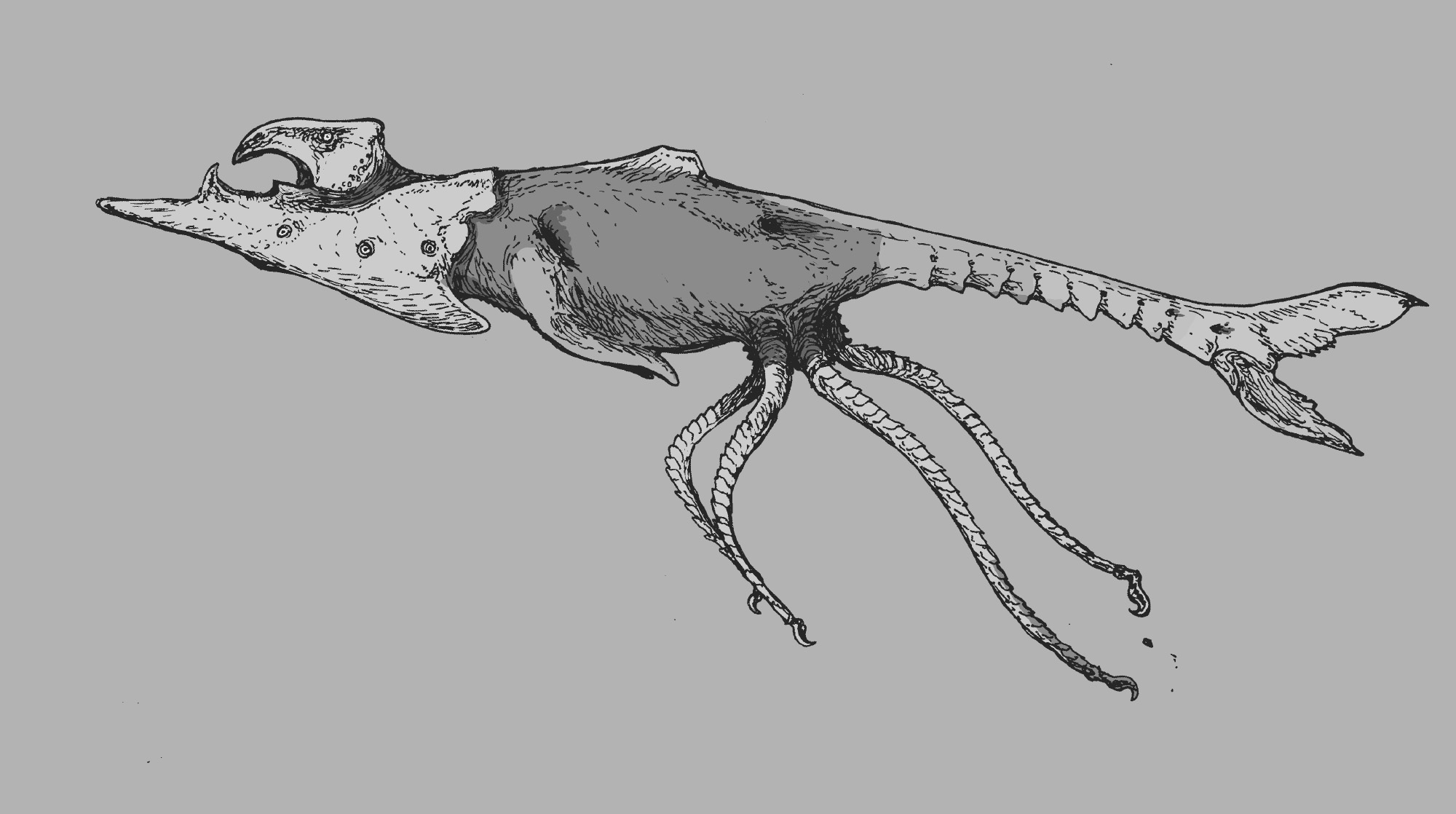
Prow-nosed cuttleshark, Amphiselachus rotatus:
Fish-like predators that can operate omni-directionally in the void; these animals usually inhabit dense clusters of asteroids, from which they push themselves out towards their prey. Multiple eyes enable them to watch out simultaneously for prey, danger and mates. Silicone-based lifeforms, evolved independently in gaseous ecosystem. Length: 4-6 metres.
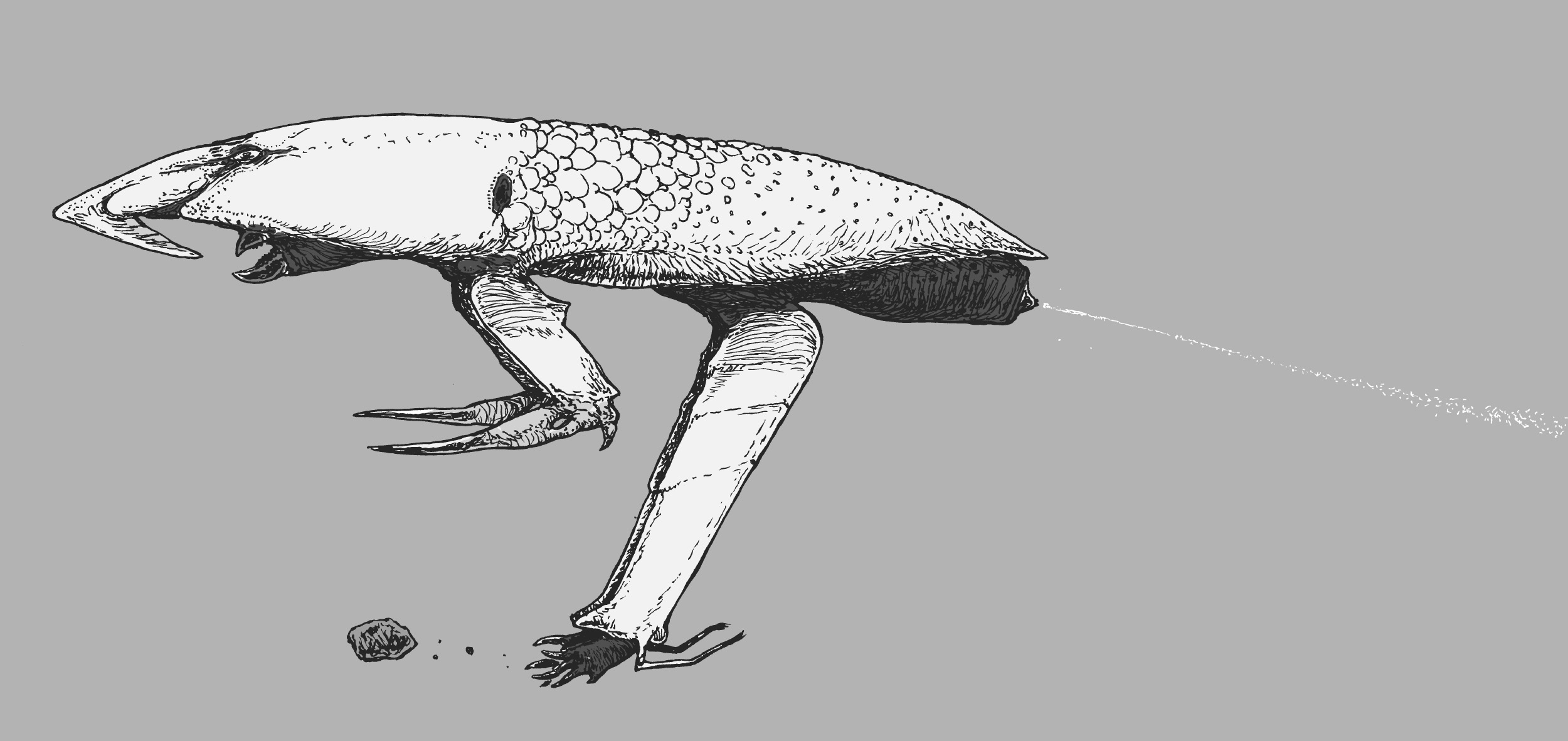
Space-chuck, Bombardozoon paradoxus:
Rocket-powered tribal omnivores, perhaps with a limited form of intelligence. Usually inhabit smoke-forests, from which they sally out in small bands to hunt and forage. Have a notorious habit hiding above gravitational wells and chucking stones at passing vessels - the missiles can reach dangerous speeds in a short time. Carbon-based beings, may even be ultra-derived Earth tetrapods; evidently introduced to this region of space at an unknown date in the past. Length: 4-5 metres.
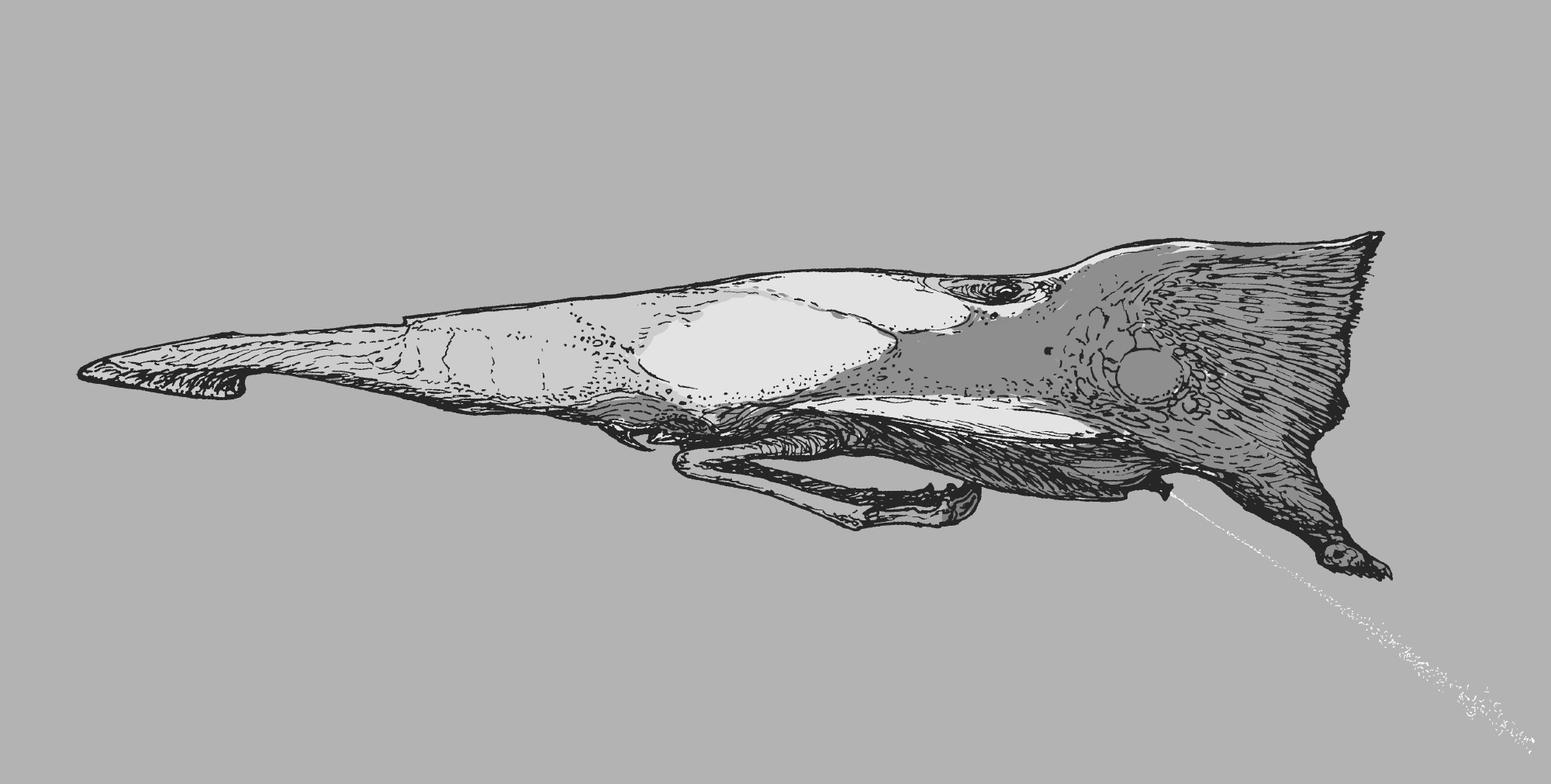
Greater hortenopter, Hortenopteryx major:
The largest known species of a widespread group of airplane-like animals, also known as “speed demons”. Can achieve great speeds, powered by a mix of muscular wings and gland-derived rocket exhausts. Predators on smaller flyers. Carbon-based, but from a non-Terran line of evolution. Length: Up to 3 metres, usually smaller.
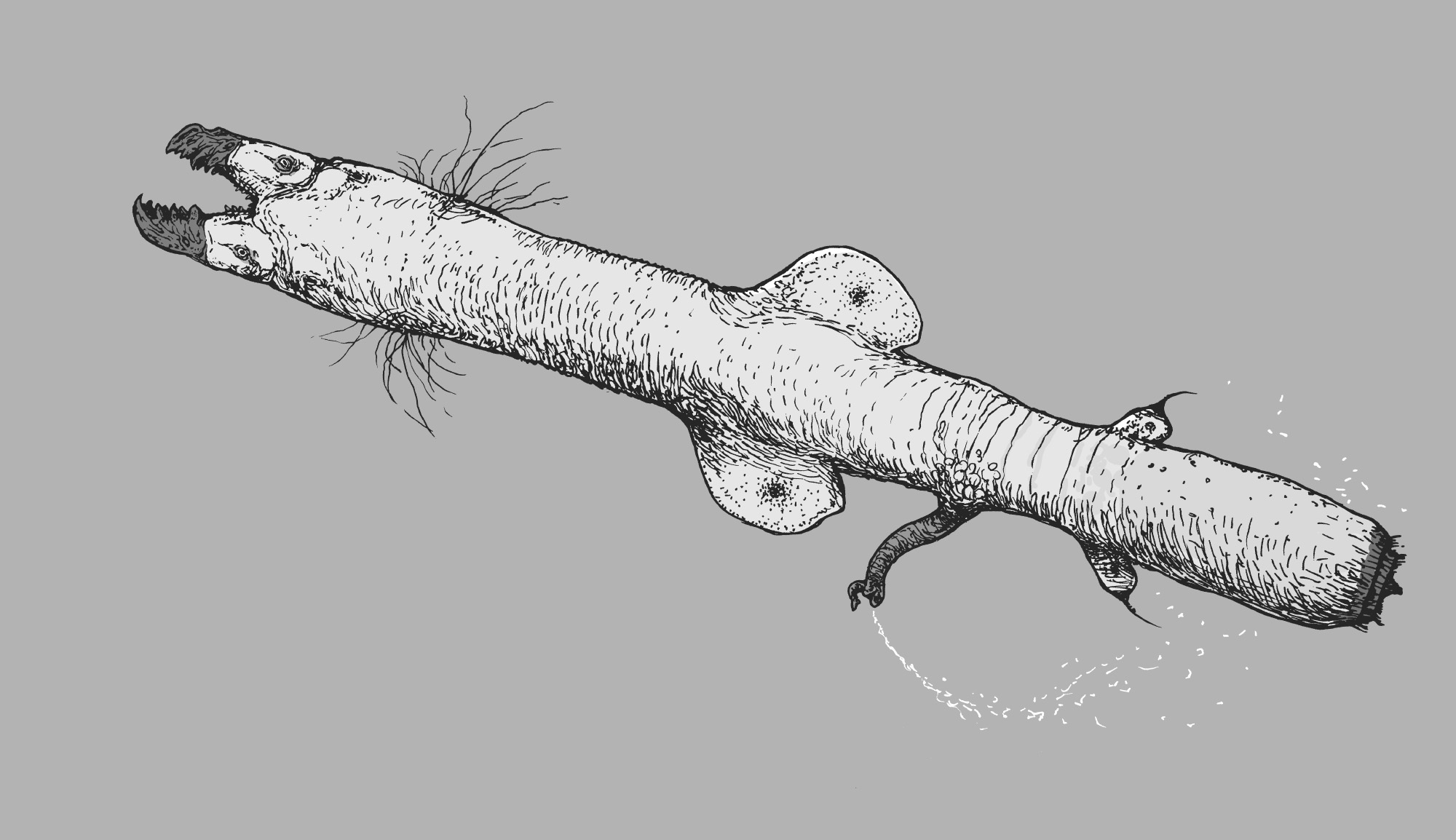
Tooth-missile, Odontofurnix phobetor:
A terrifying hunter, able to survive in the wastes of blank space thanks to its unique set of long-enduring biological pulse-engines. Will usually hit its targets at enormous acceleration, or bite body parts off by executing “death rolls” powered by a versatile, siphon-like secondary rocket exhaust. These animals pose great danger to shipping lanes, and have been described by pilots as “biological cruise missiles.” They are also known to communicate with each other with biologically-produced laser light. Unique body chemistry based on carbon, fluorine and crystalline germanium; extremely derived, or may even be artificial in origin. Length: Up to 13 metres, usually smaller.
***
Real-life Sirrushim
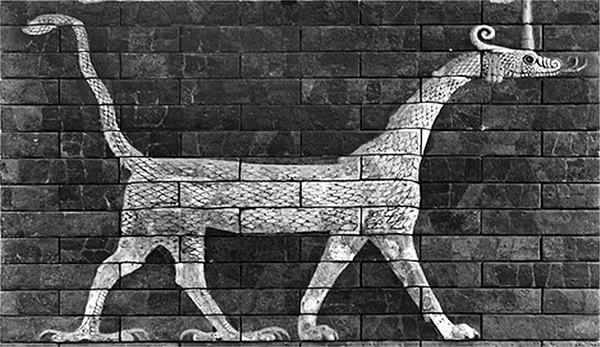
I tried to imagine the famous Sirrushim, or the Mushussu of Babylonian lore, as real-life animals.
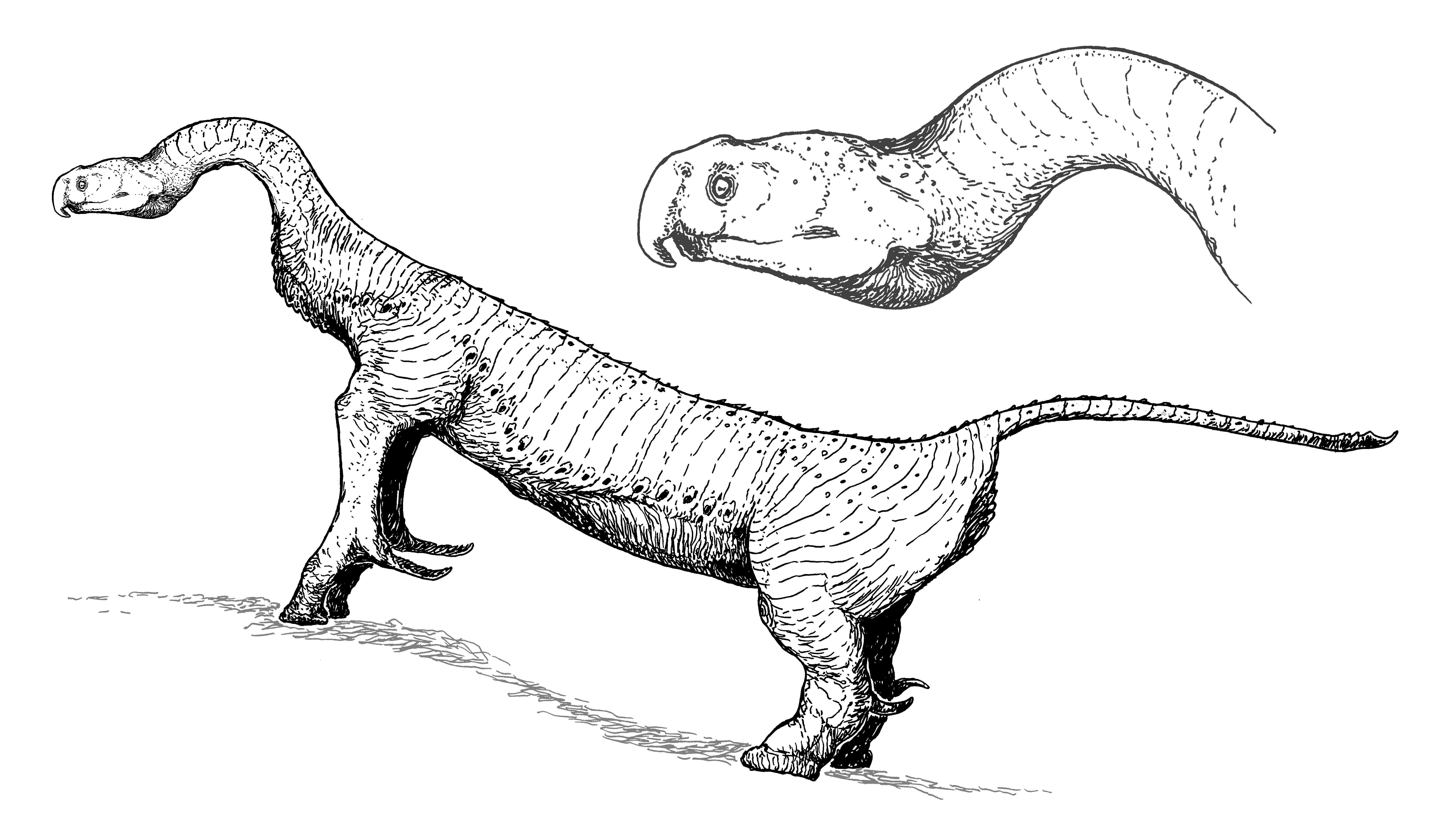
Just for fun, I imagined them as the descendants of shark-like fish in a wildly tangent line of evolution. This gave me an excuse to experiment with unusual limb, digit and joint arrangements. The form above was Hoplocarcinus, an armoured insect-and-fruit eater...
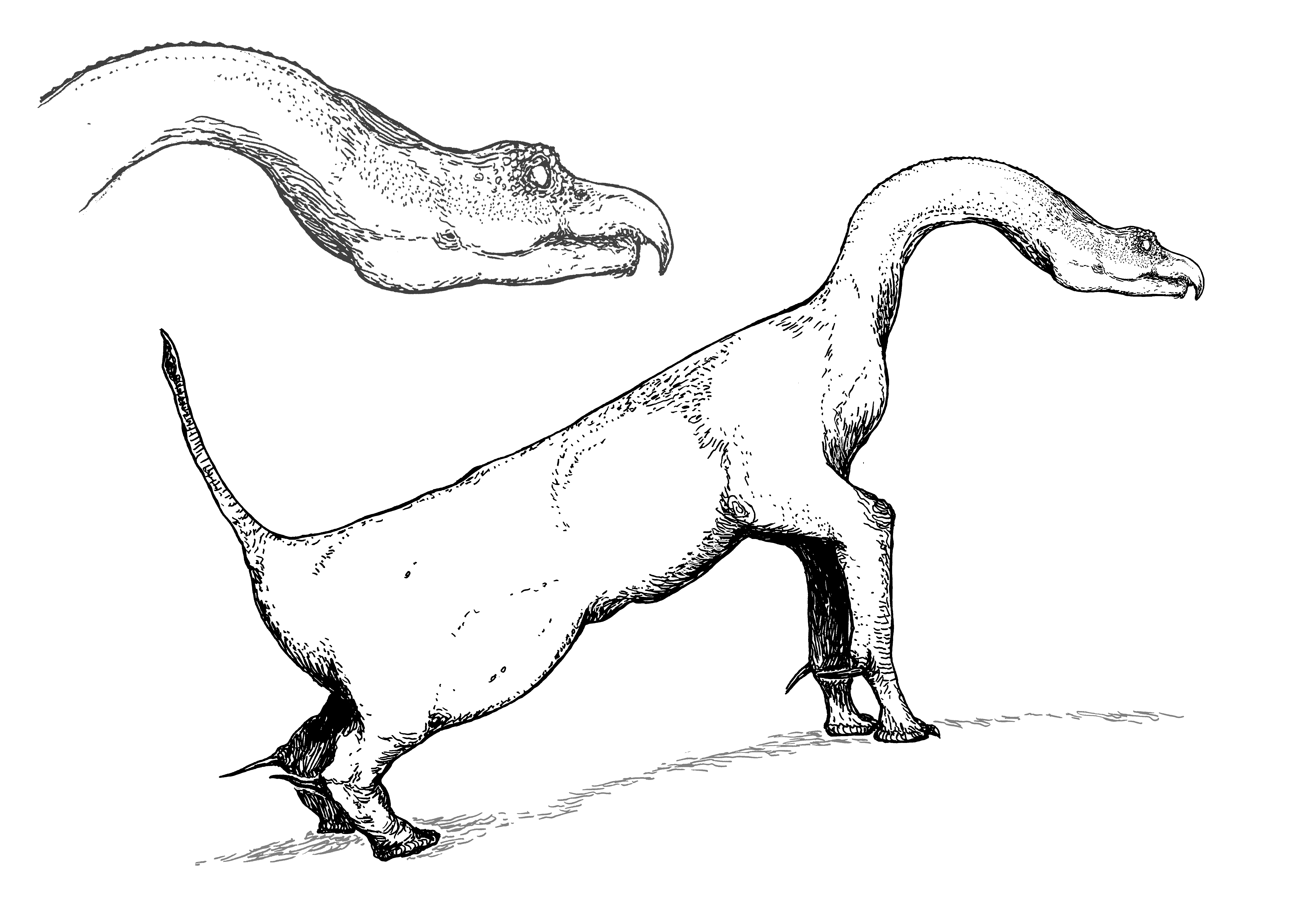
...while this beast, which I named Nyctovenator, was a nocturnal predator of small-to-medium-sized animals.
***
The speculative evolution of marine pterosaurs
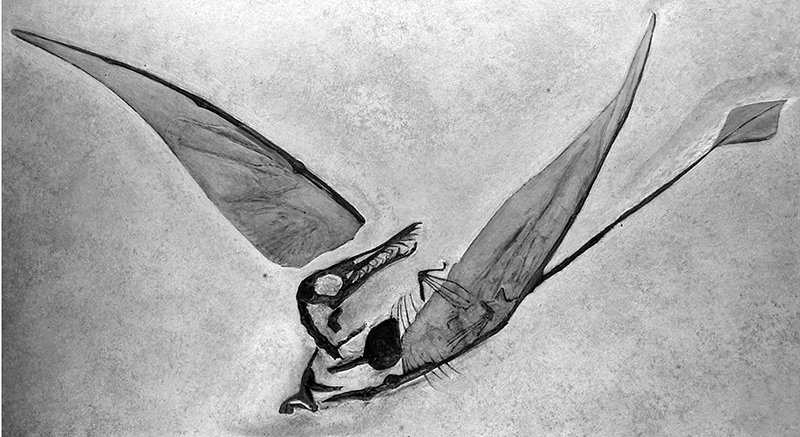
Many fossils of the well-known flying reptile Rhamphorhynchus have been found in marine deposits, so much that some have speculated it to be an aquatic creature. I took this idea to its logical conclusion and designed a lineage of purely aquatic Rhamphorhynchoids.
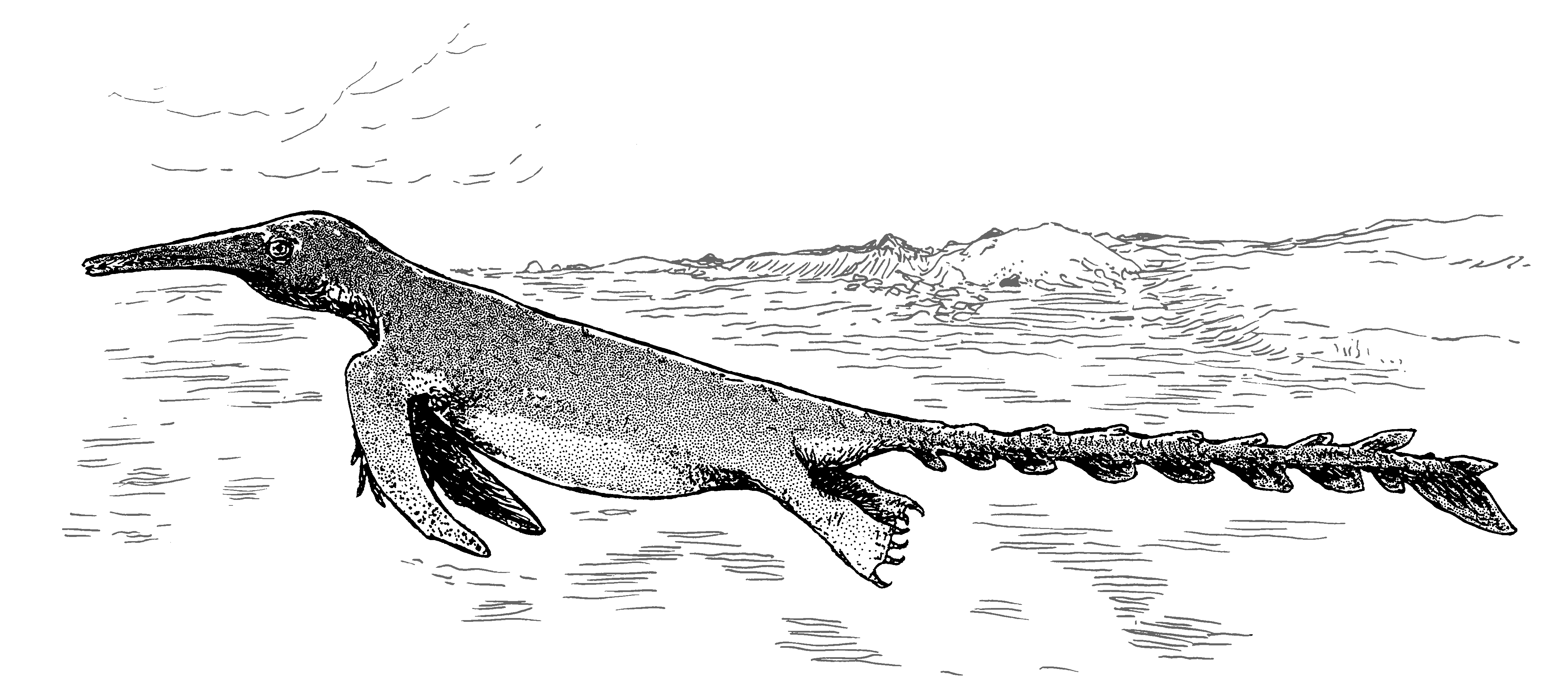
First came Ichthyopteryx, an otter-like form with tiny wings modified into flippers...
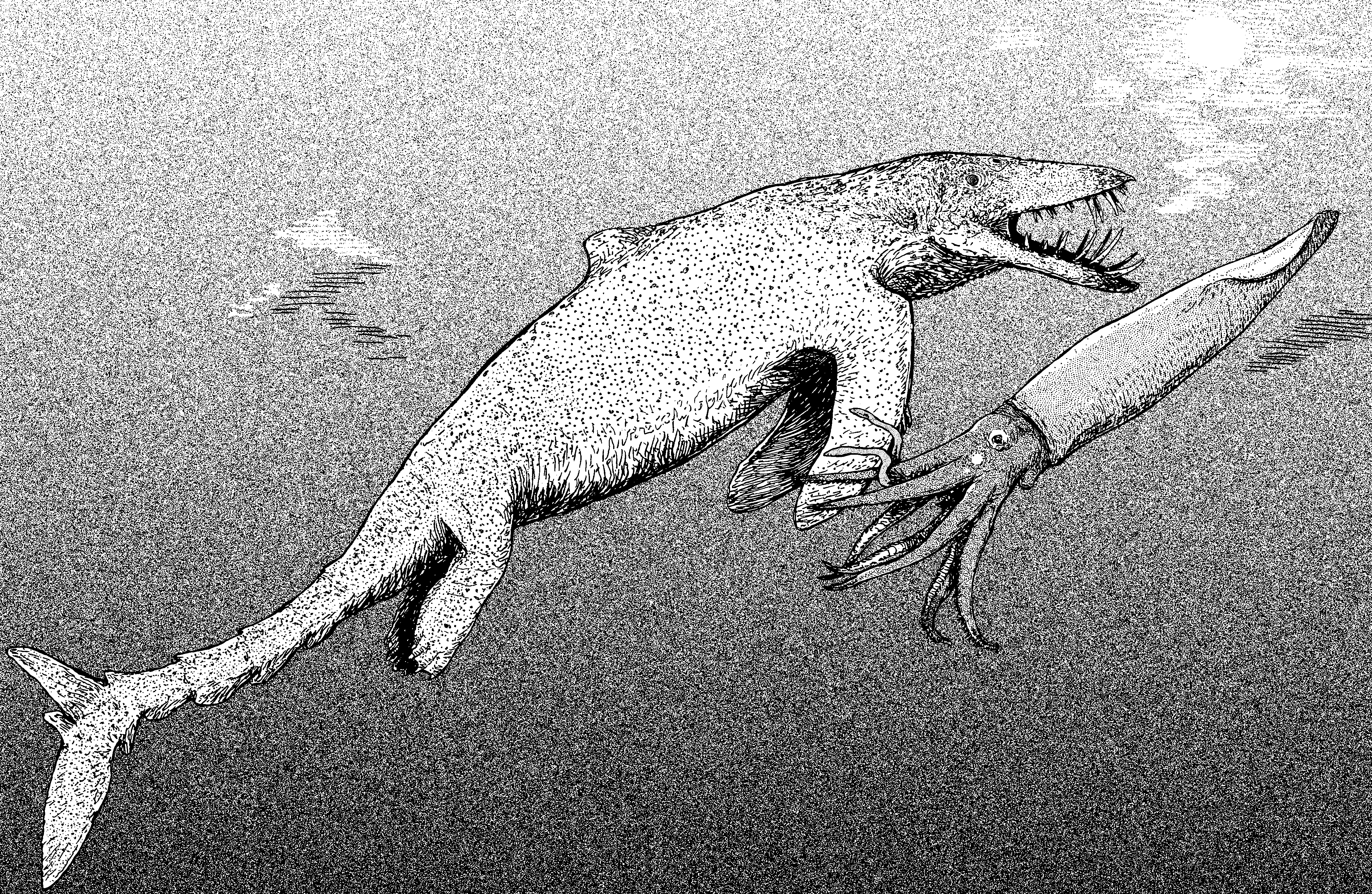
...then came Occidodon, a large, powerful, predatory species with long, knife-like teeth that help it capture giant squid, its favourite prey. Both animals are products of an exercise in speculative evolution.
***
Titananolis
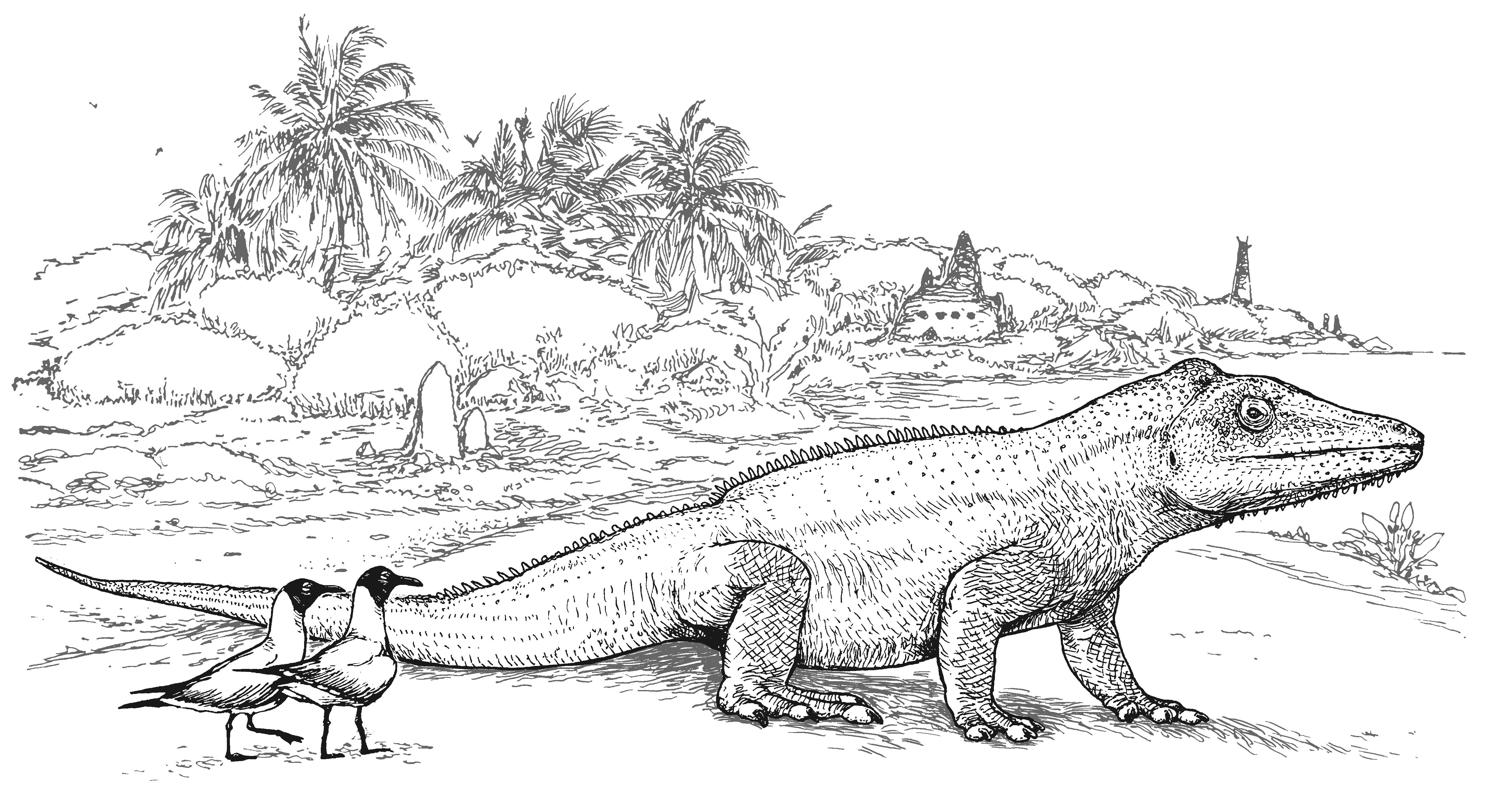 Illustration of Titananolis; a hypothetical, gigantic anole lizard, from a world where evolution took a different path in the last 20-million years.
Illustration of Titananolis; a hypothetical, gigantic anole lizard, from a world where evolution took a different path in the last 20-million years.
***
A world of Parareptiles
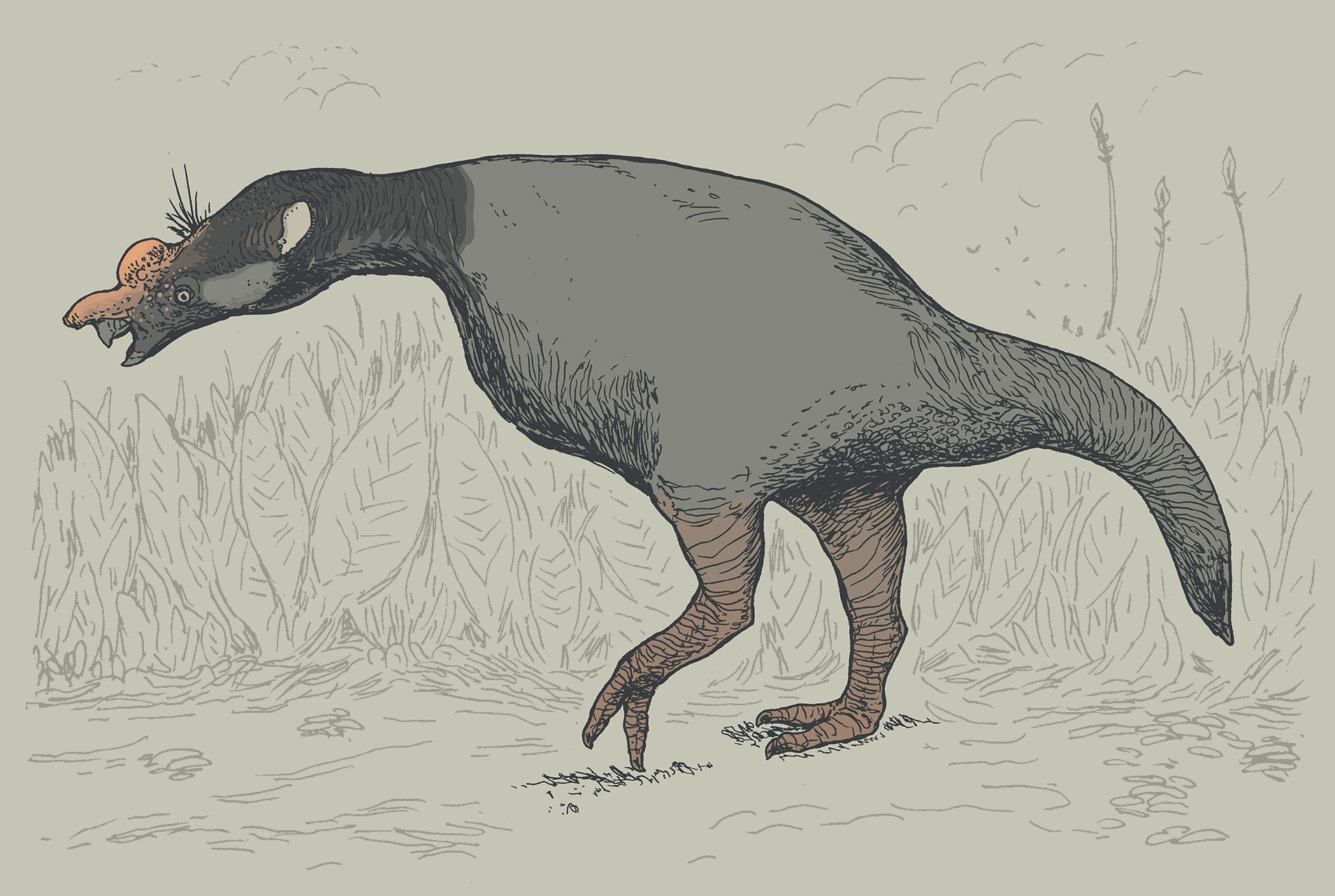
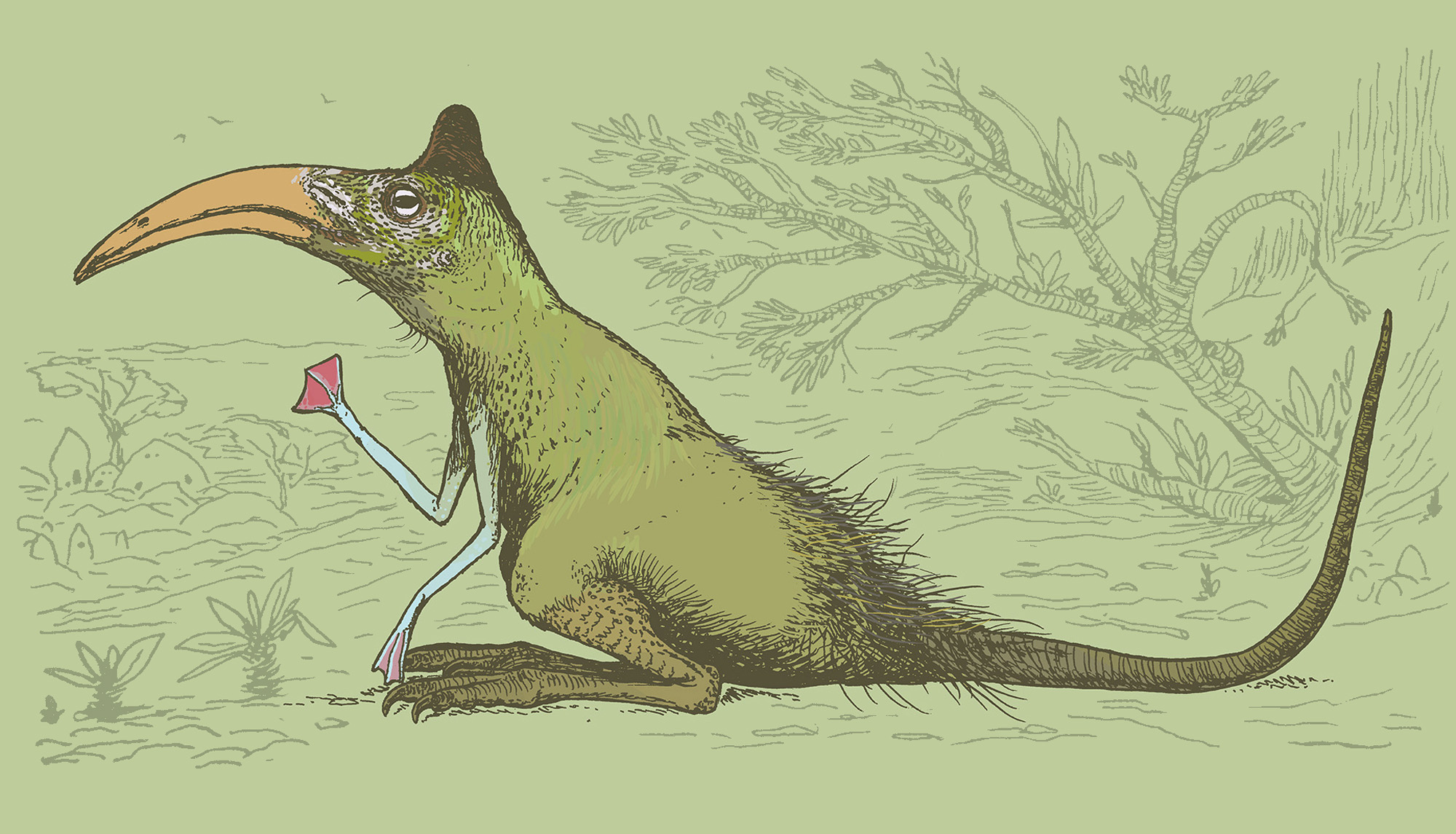
A "flesh-faced bird", Sarcopsidae sp. (above); and a "flaggerbird", Semaphorapterus macrorhynchus; animals that evolved from a lineage of Parareptiles on an alternative Earth. See this link for an extensive look into their evolution.
***
Mediterranean geckos
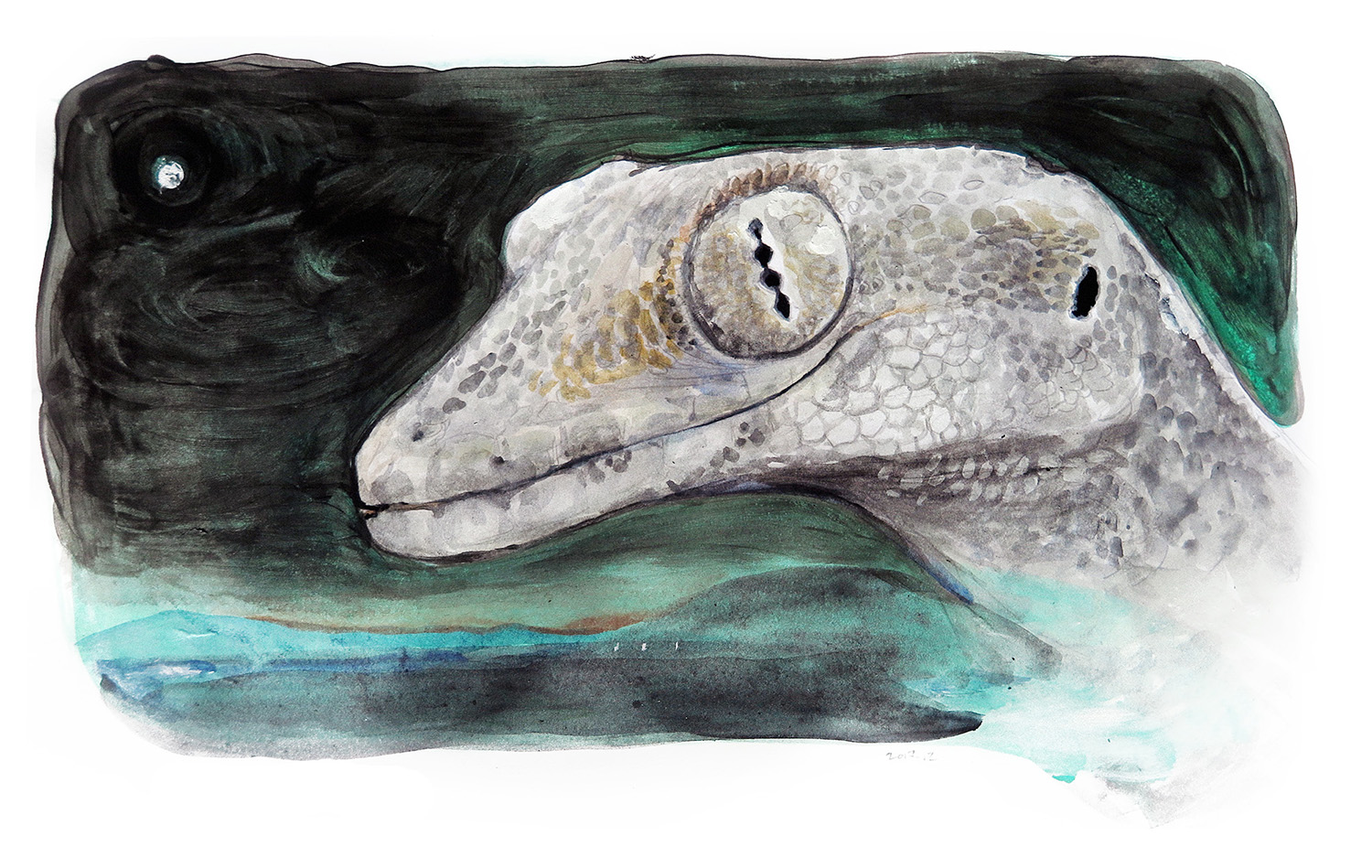
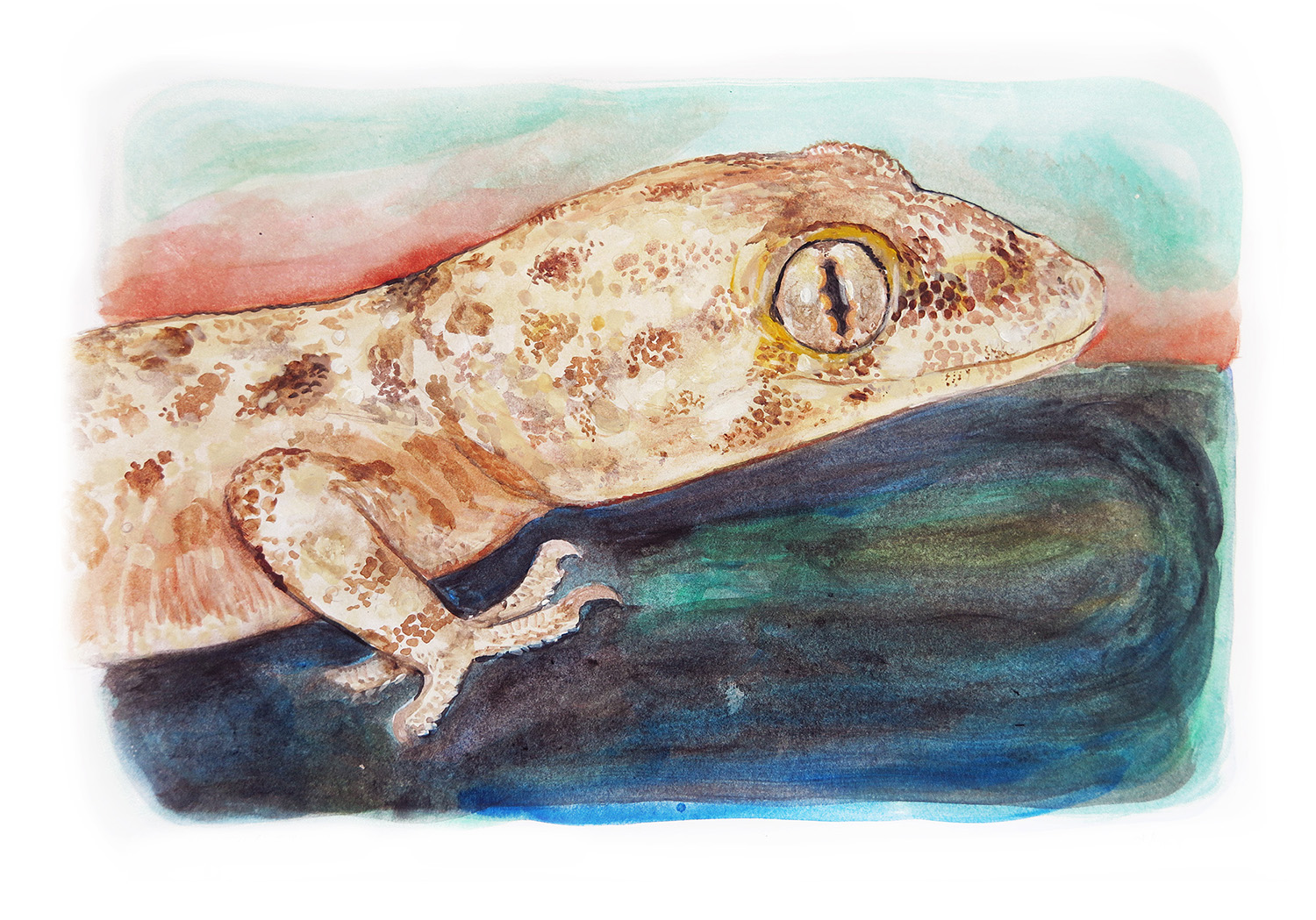
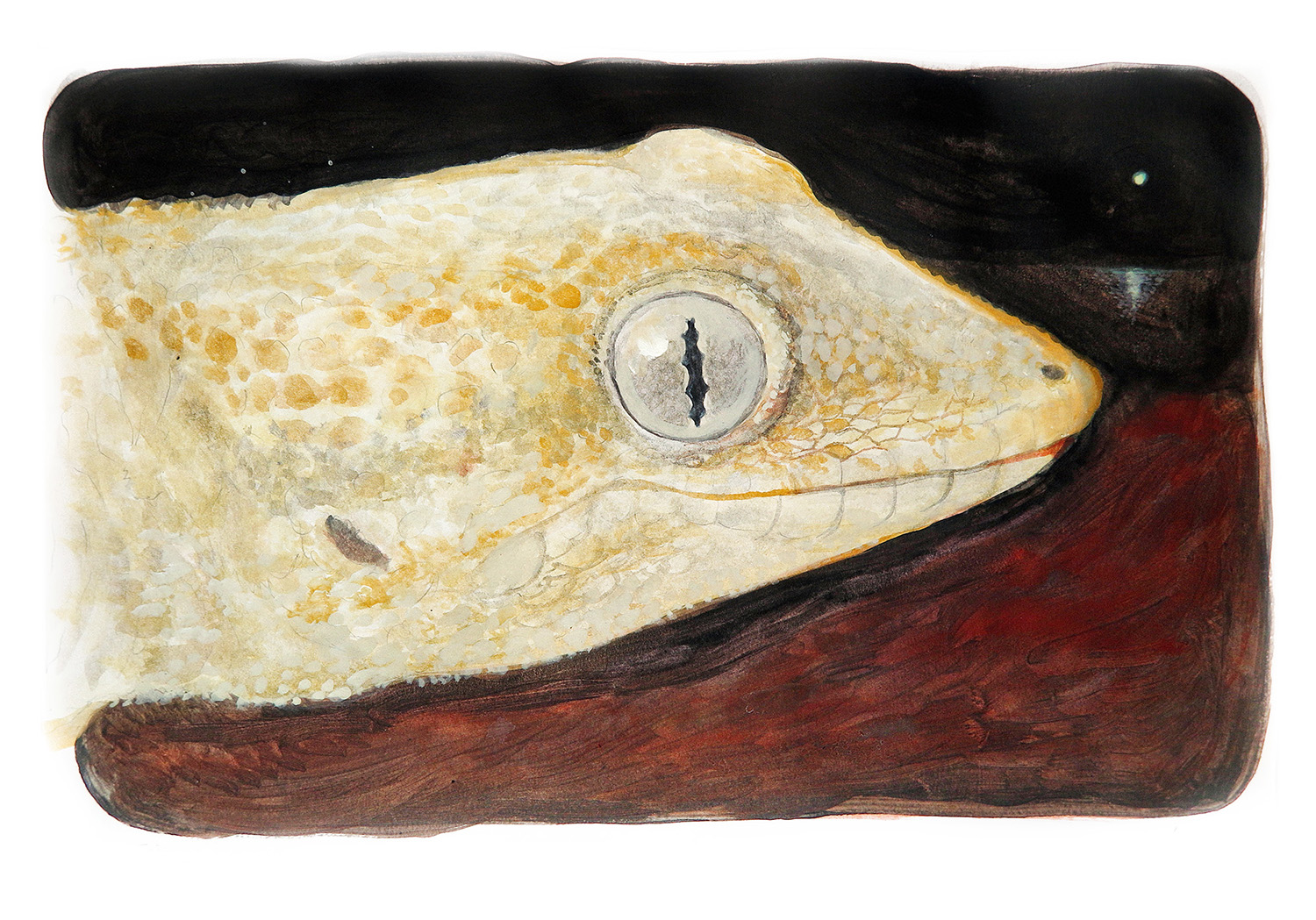 Watercolour and acrylic illustrations of three species of Mediterranean geckos. From top to bottom, they are;
Watercolour and acrylic illustrations of three species of Mediterranean geckos. From top to bottom, they are;
Mediodactylus kotschyi - Kotschy’s bent-toed gecko
Hemidactylus turcicus - Turkish gecko
Tarentola mauritanica - Moorish gecko
***
Snake guns
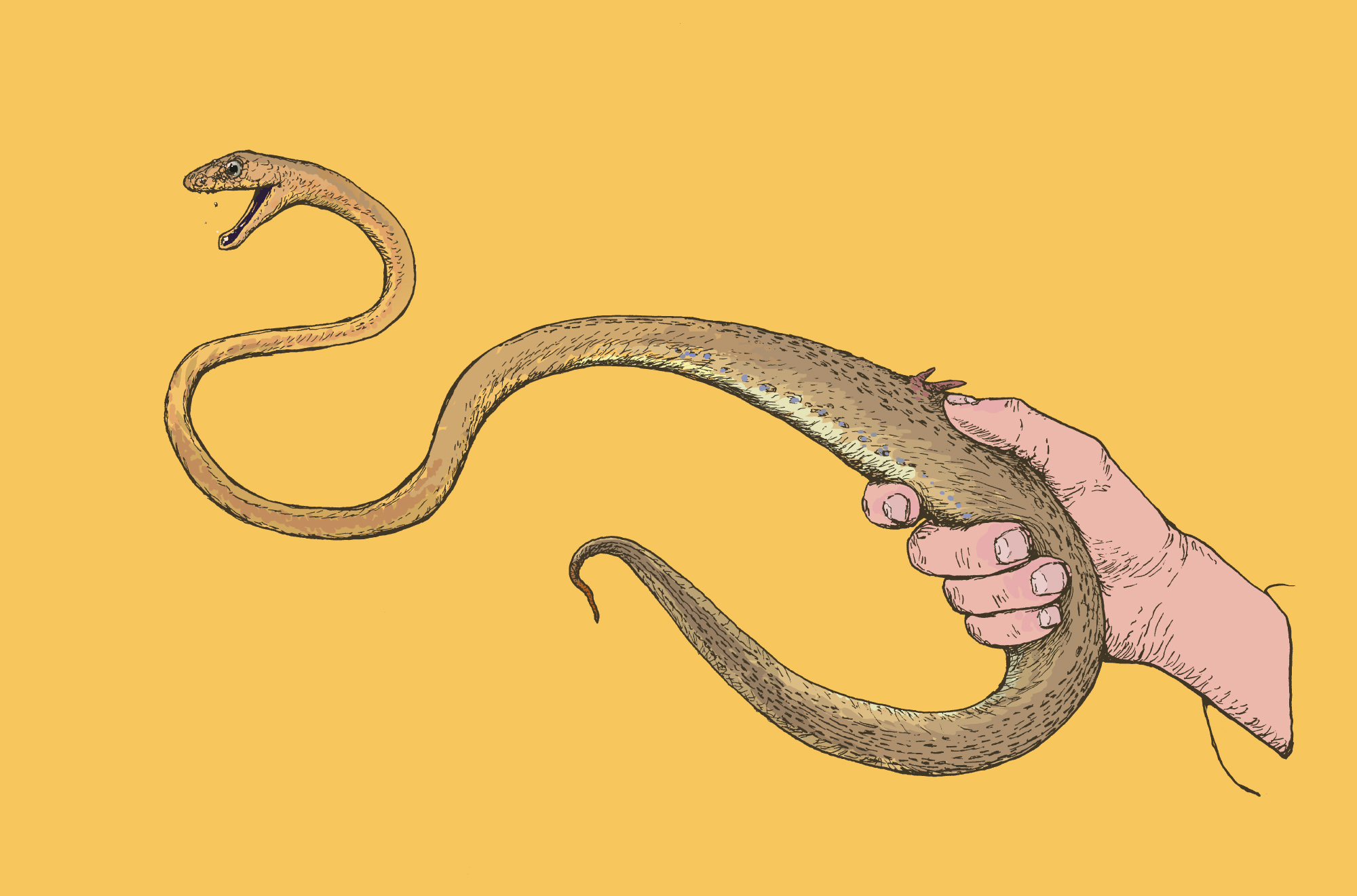
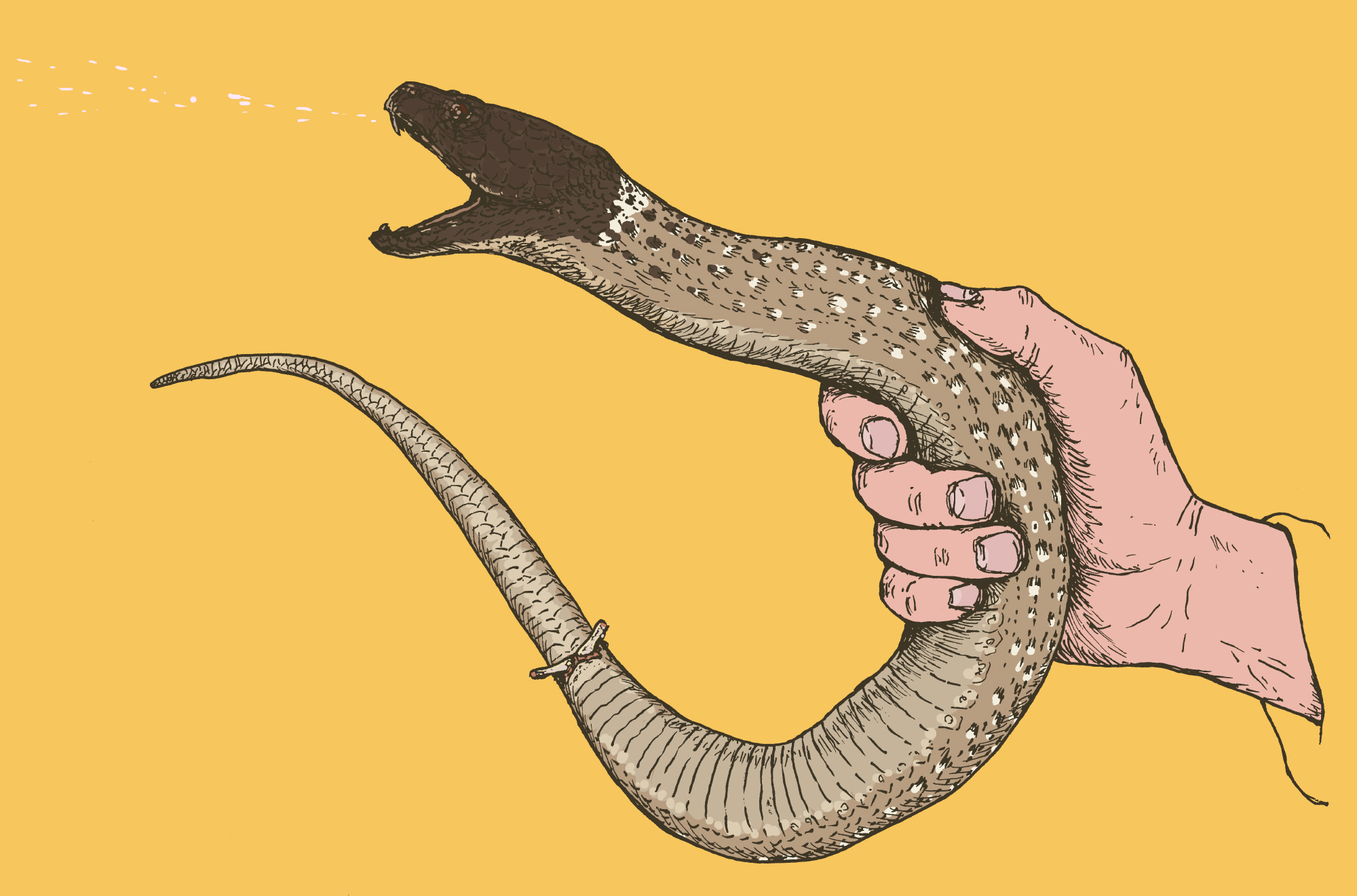
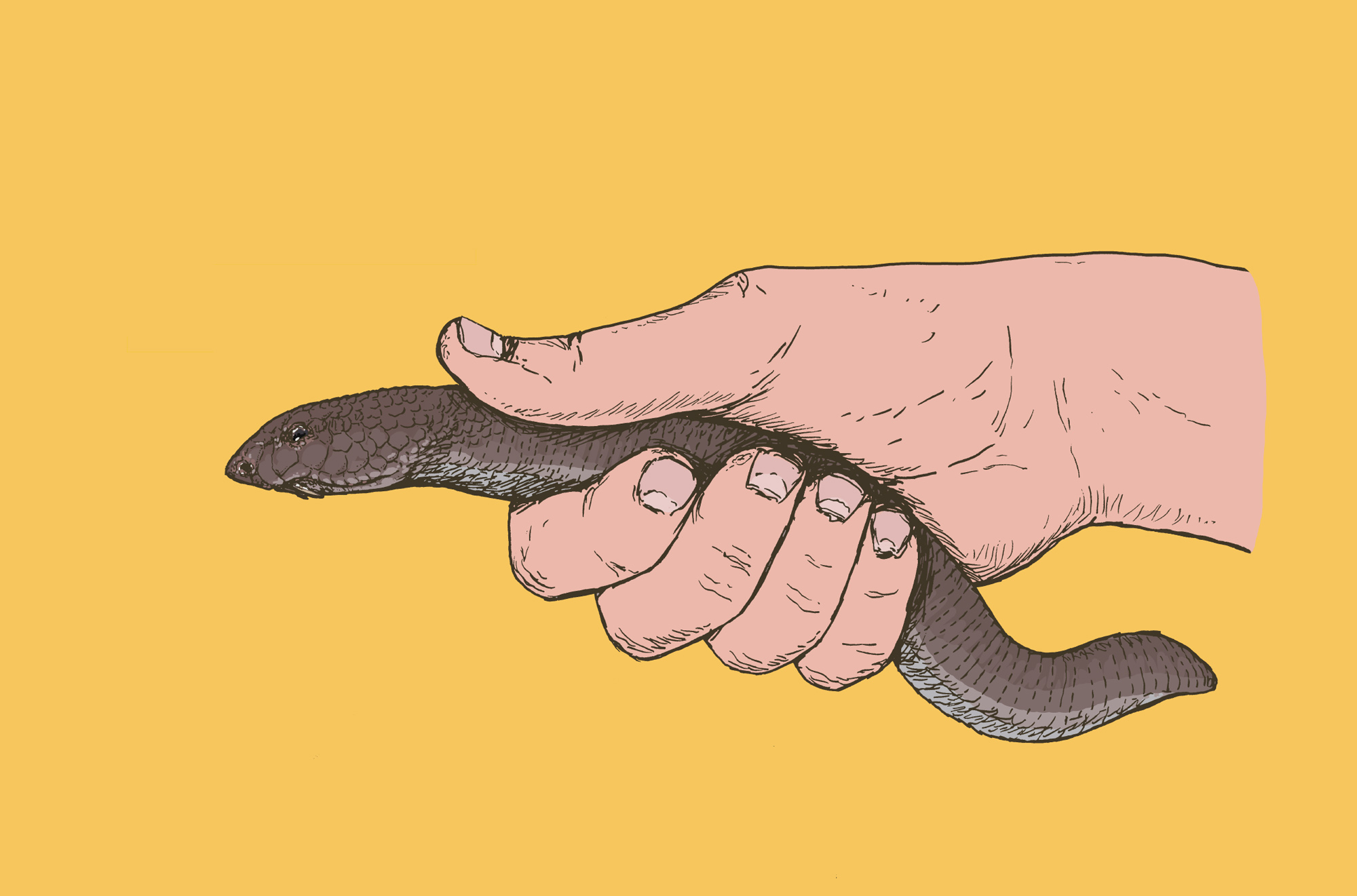
Three fantastic designs for "snake guns" manufactured through extremely advanced genetic engineering. From top to bottom, they are;
A "tagging" weapon derived from a mamba-like snake, triggered by the long scales on its back.
A "spraying" weapon derived from a massively shortened spitting cobra.
A "stabbing" weapon derived from Atractaspis-like mole vipers, which can bite even when their mouths are closed.
***
Childhood aliens re-imagined

As a child I was supremely inspired by science fiction films and made up hundreds of “space aliens” to populate an imaginary galaxy. My brother and I then play-acted adventures set in this fictitious realm.
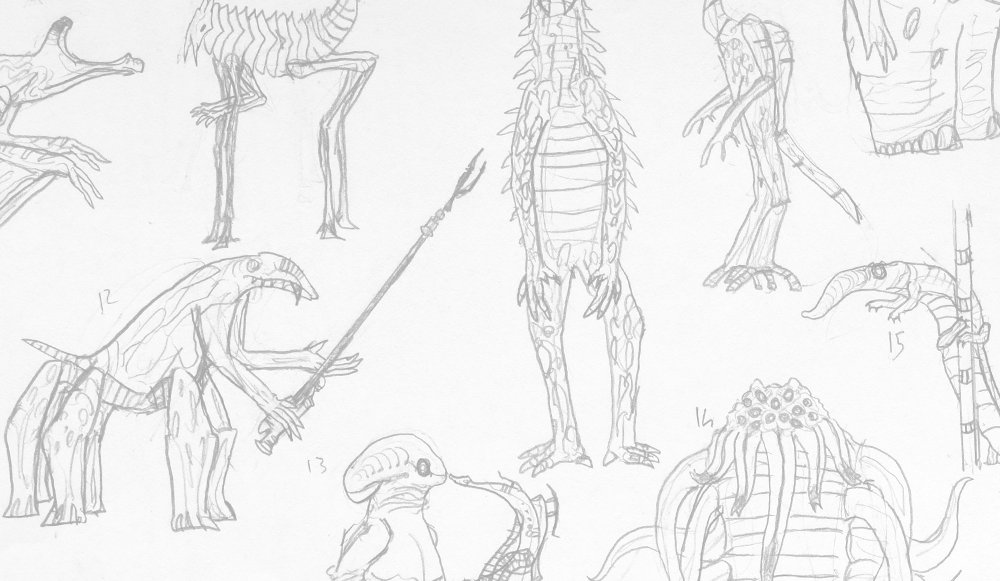
My parents kept all my drawings. There were dozens upon dozens of pages, each populated with multitudes of aliens, complete with descriptions of every species and character.
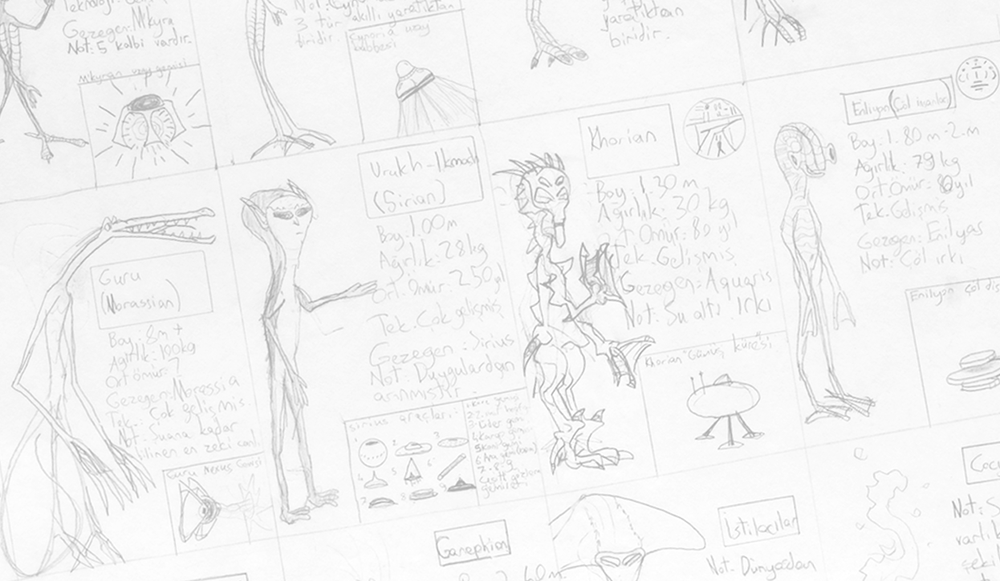
In 2017 I started putting together a portfolio of zany “trope” aliens, with the hopes of designing aliens for a popular animated show. Instead of designing things from scratch, I decided re-draw ten characters from my childhood. Here they are, complete with original drawings and vitally-important attributes and descriptions.
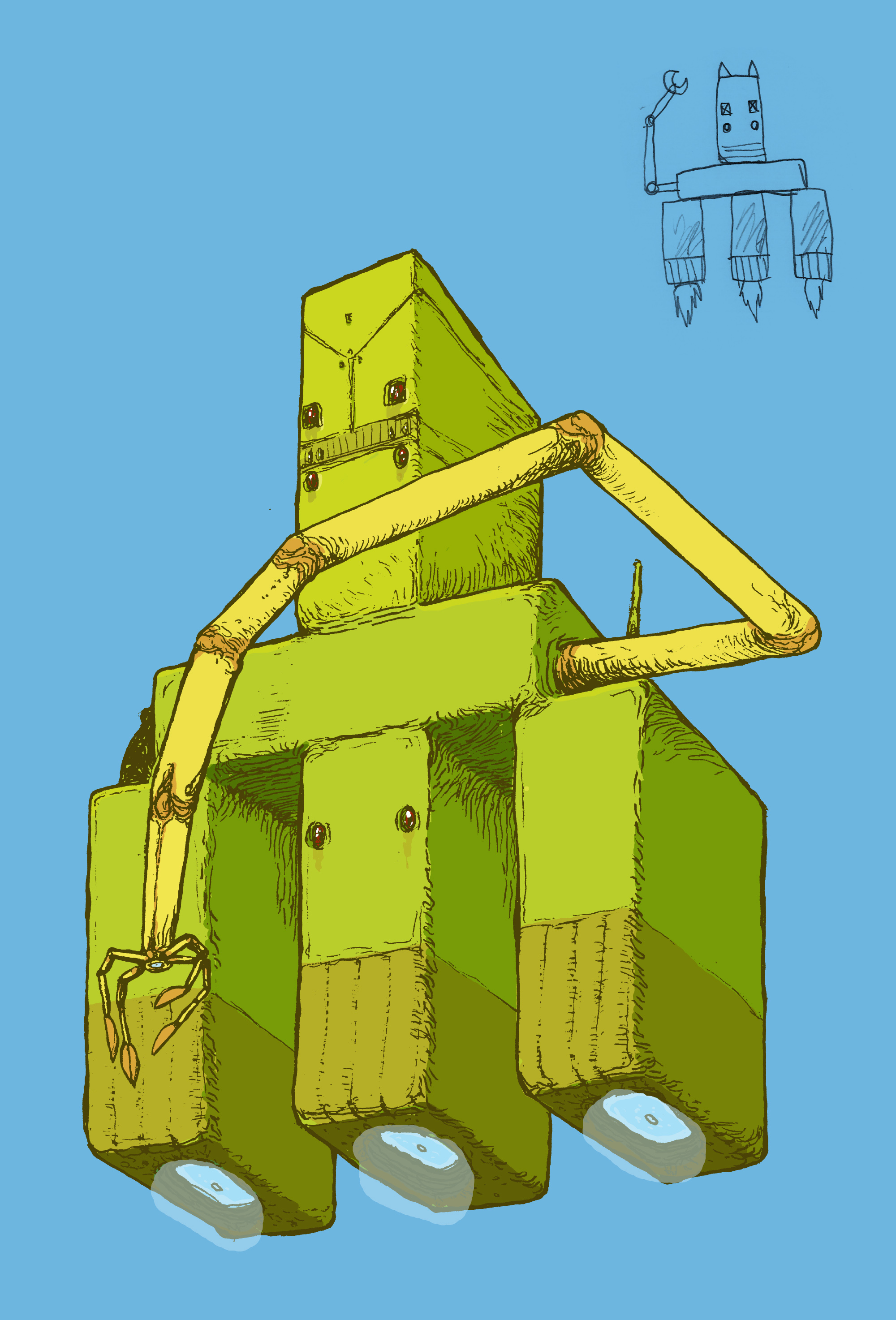
Tri-Bots (1992)
- Actually a lego-like colony of semi-organic robots.
- Head robot gets to be the brain.
- If decapitated, they play a form of robotic “rock paper scissors” to elect the new leader.
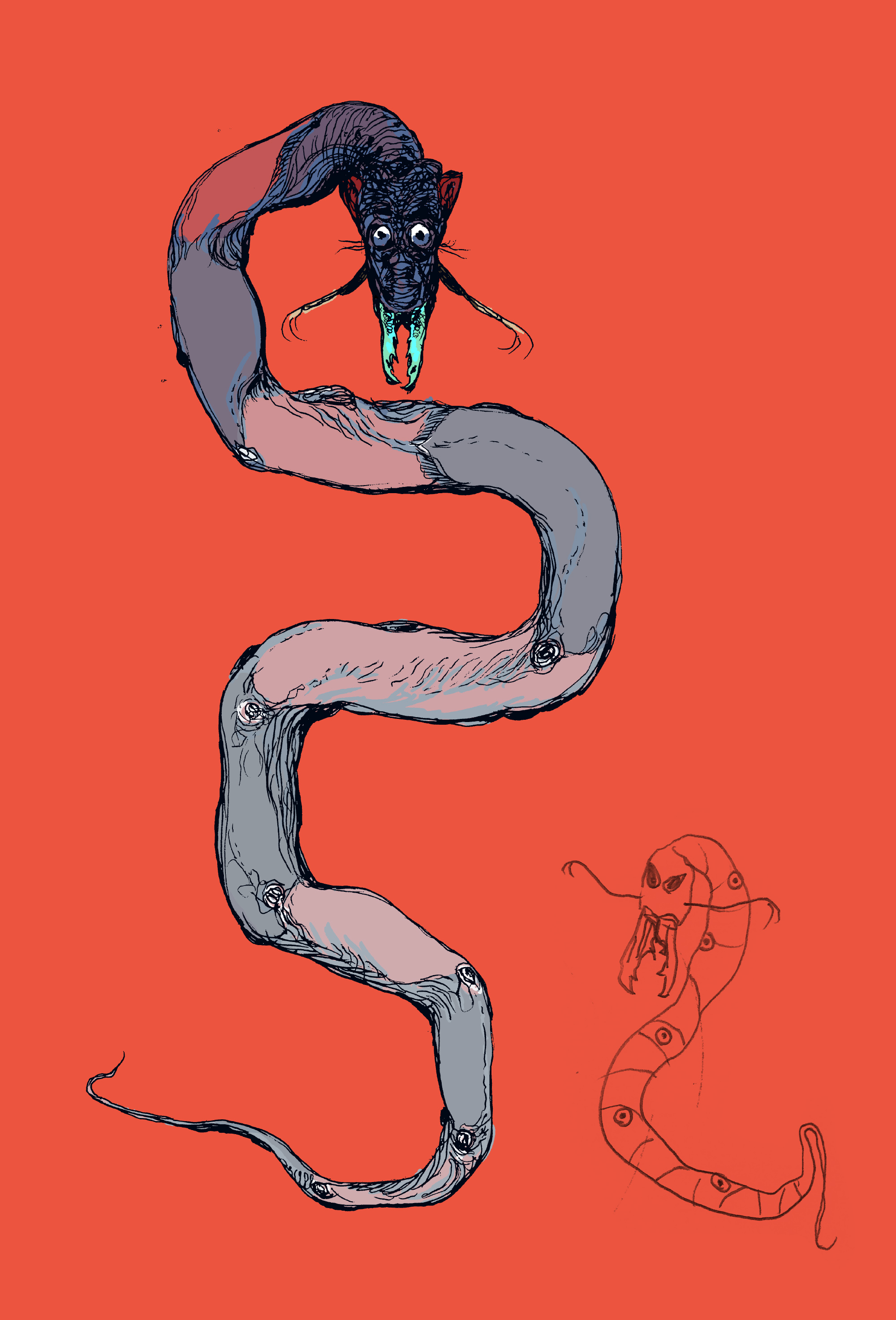
Meta-Snake (1992-3?)
- Not a real snake, but a trans-dimensional entity that can slip between parallel universes.
- Glowing jaws help Meta-Snake open up portals between worlds.
- Its face is a fake face; Meta-Snake’s actual eyes are the pore-like things between its body segments.
- A sardonic character; refers to itself in the third person and speaks in riddles.
- Occasionally speaks backwards because it has a different concept of time.
- Can grant wishes, alter the universe and save you from the most dangerous situations… but can you really trust it?
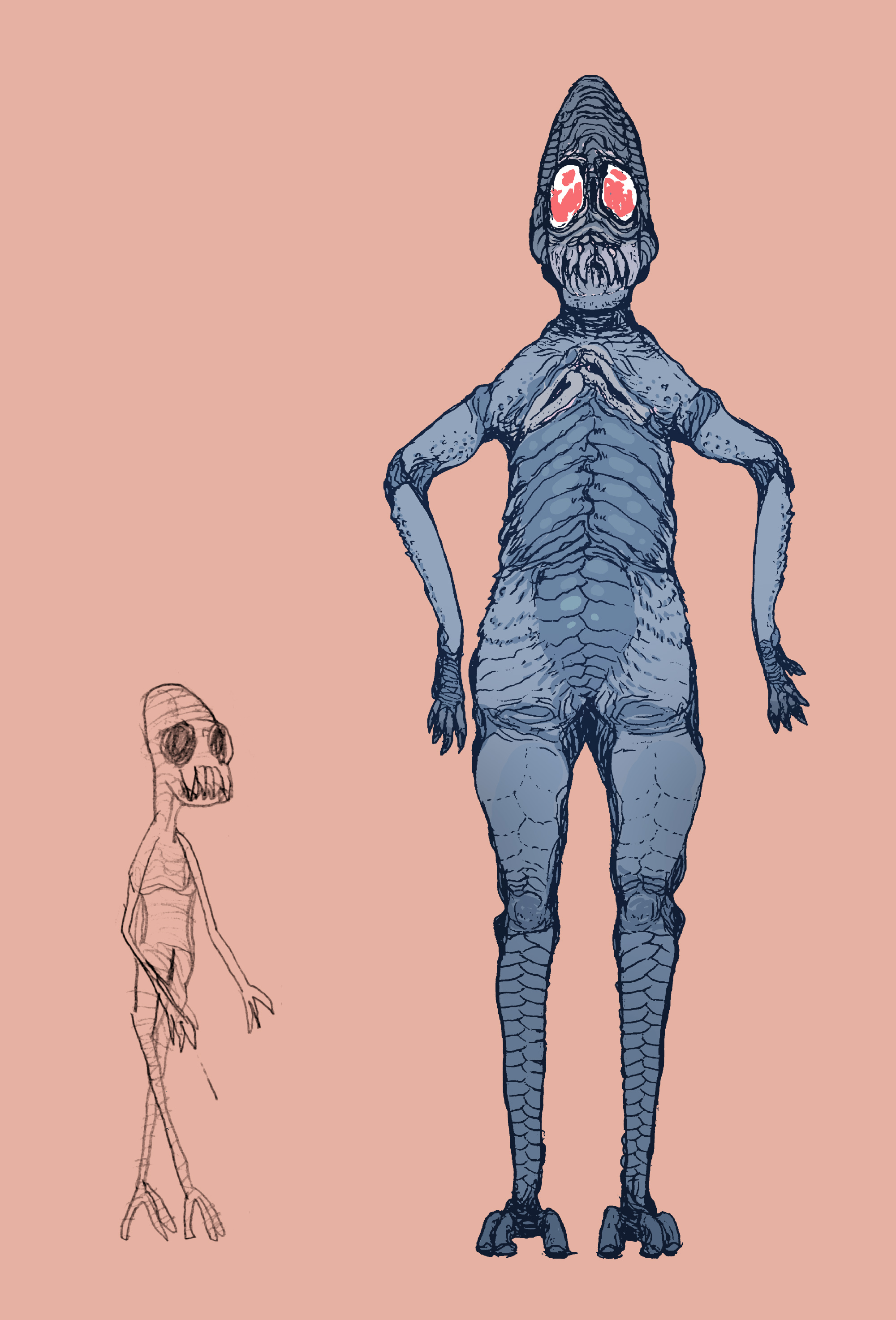
Ogrenas (1995)
- A scary-looking insect-reptile with a heart of gold.
- Misunderstood and shunned, actually very kind and harmless.
- Its species lives in big hives; glowing eyes can project holograms.
- Scary teeth evolved to gnaw on the bark of giant trees.
- Ogrenas is an asexual drone; has no passions and as a result is very naive.
- No one has seen the queen of Ogrenas’ species.
- Glands on its chest secrete a clear goo that Ogrenas must rub all over its body to avoid sunburn. Other species covet this goo as a valuable drug.
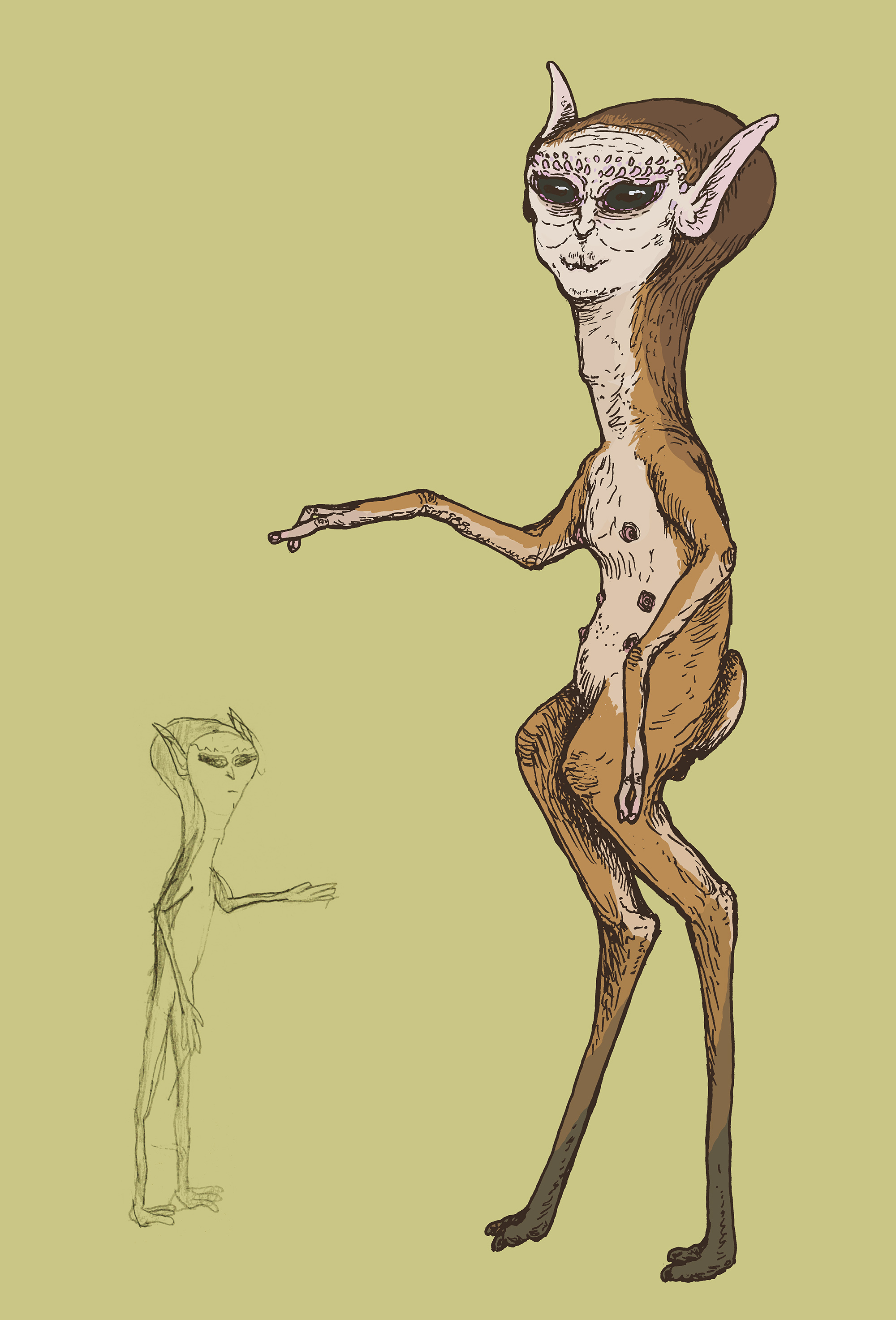
Sirian [Ikmash] (1995)
- Very intelligent fellow, but devoid of feelings.
- Gets a sadistic streak sometimes.
- The classic grey alien but also a bit like a cat.
- Lonely last member of a once-proud master race; vain and pompous personality.
- Makes inappropriate advances to women of all and any species he meets.
- Listed as a sex offender in twelve star systems.
- Operates machines light-years beyond human technology.
-
Can turn light into matter.
-
Once travelled to Earth and met Nikola Tesla.
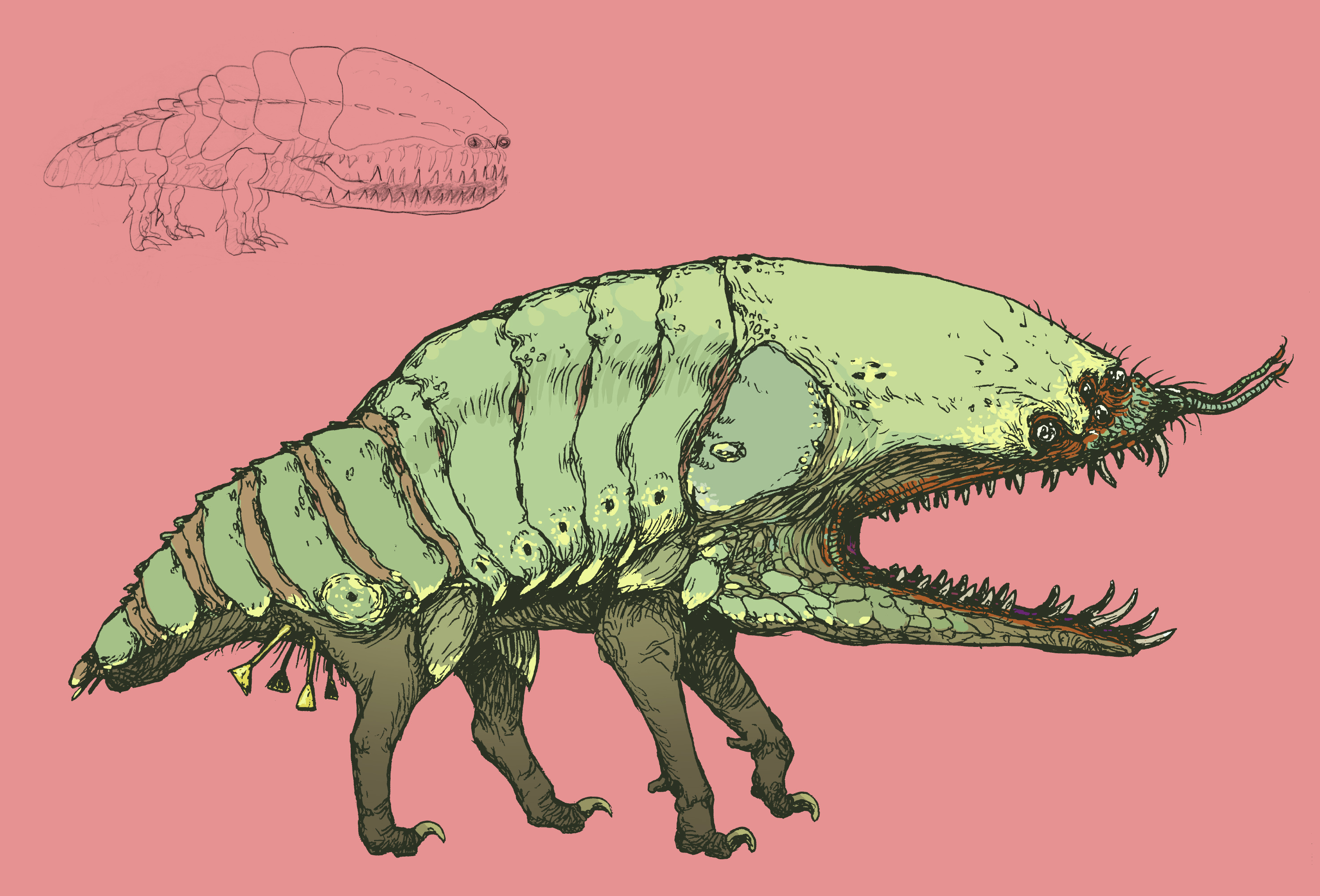
The Sultis Megadon Monster (1995)
- From the same planet as Ogrenas (see above).
- A predatory animal with a hollow head, people can get in via a door-like flap behind its jaws and drive it around like a car.
- Controls inside look like tentacles, pustules and glands, you must tug at them.
- If you crash into someone the Sultis Megadon Monster eats them.
- If two Sultis Megadon crash head on, the larger eats the smaller.
- If they are the same size, they start mating.
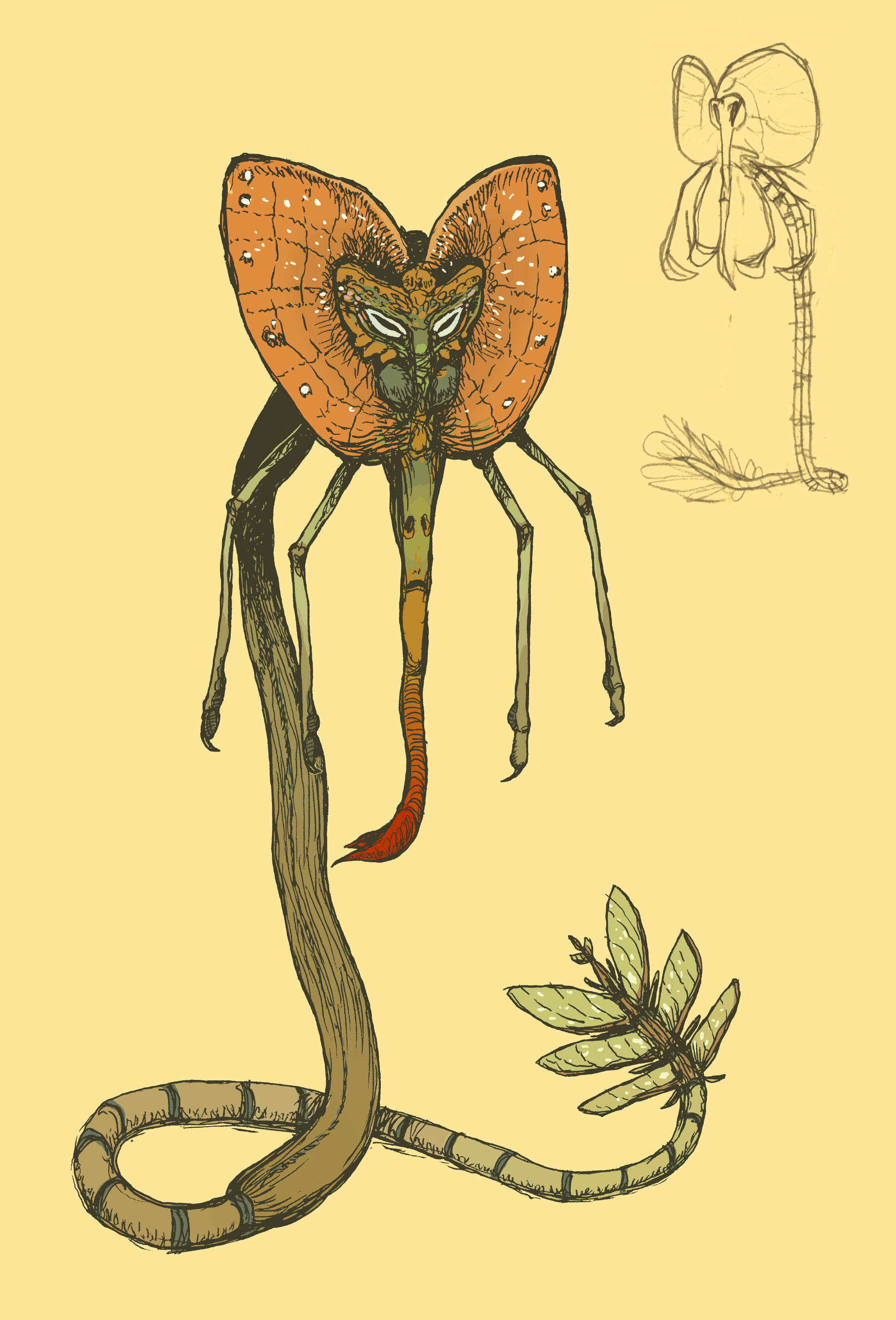
Veridian (1996)
- Cryptic and shy intelligent species, comes in many varieties with different head-frills.
- Their planet is full of snakes!
- Scared of open places and doesn’t like being touched.
- Will sting you to death with its extremely pointed jaw, but does not want confrontation.
- Has no vocal cords, talks by shaking its elaborate, winged tail rattle.
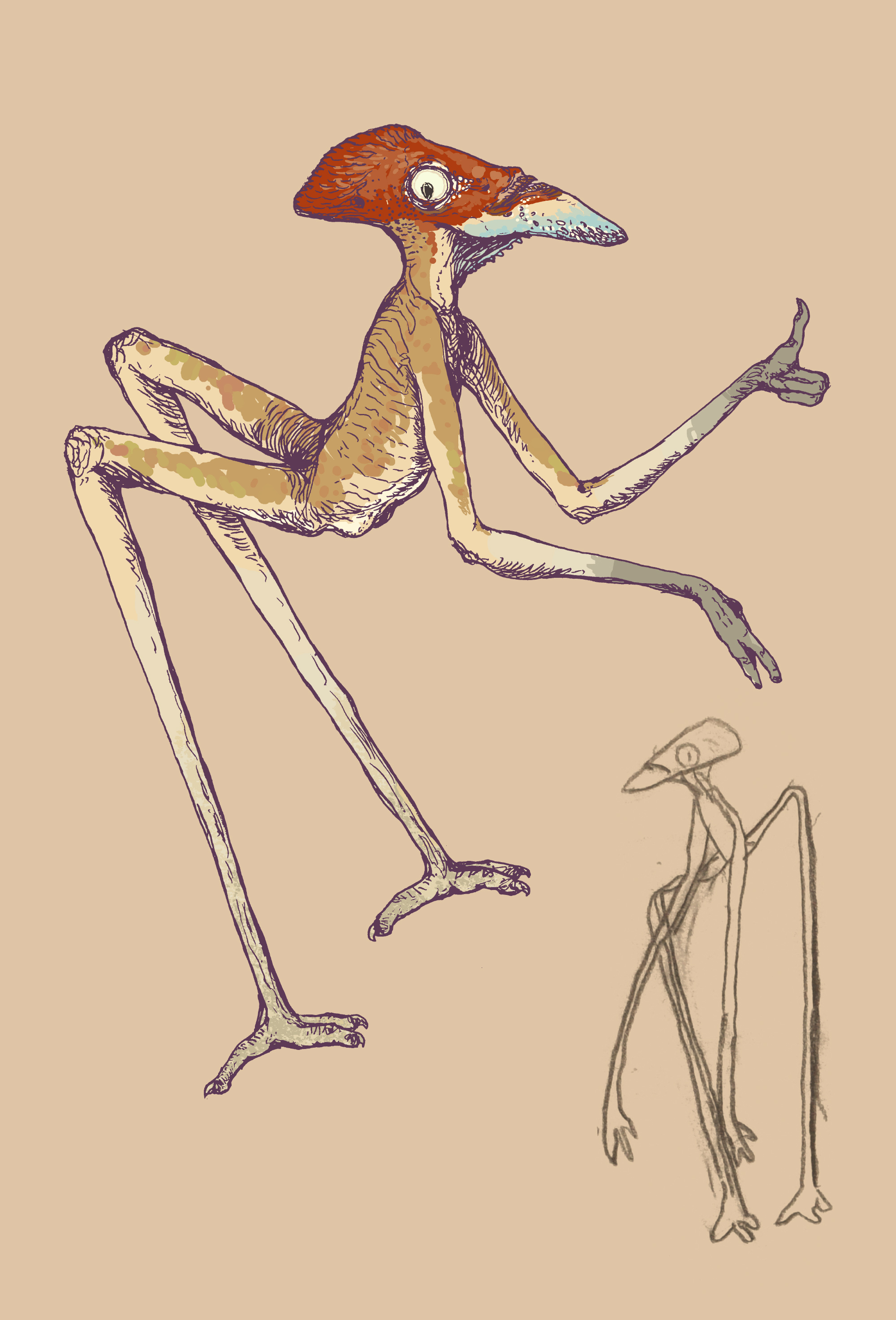
Voidian (1996)
- Friendly but annoying frog character.
- Makes bad jokes and talks too much, but ultimately harmless.
- Has the annoying habit of jumping on people to startle them.
- His attention-hungry behaviour is a result of soul-gnawing lack of self-confidence.
- Its race once lived on trees, but have now been banished to a network of caves.
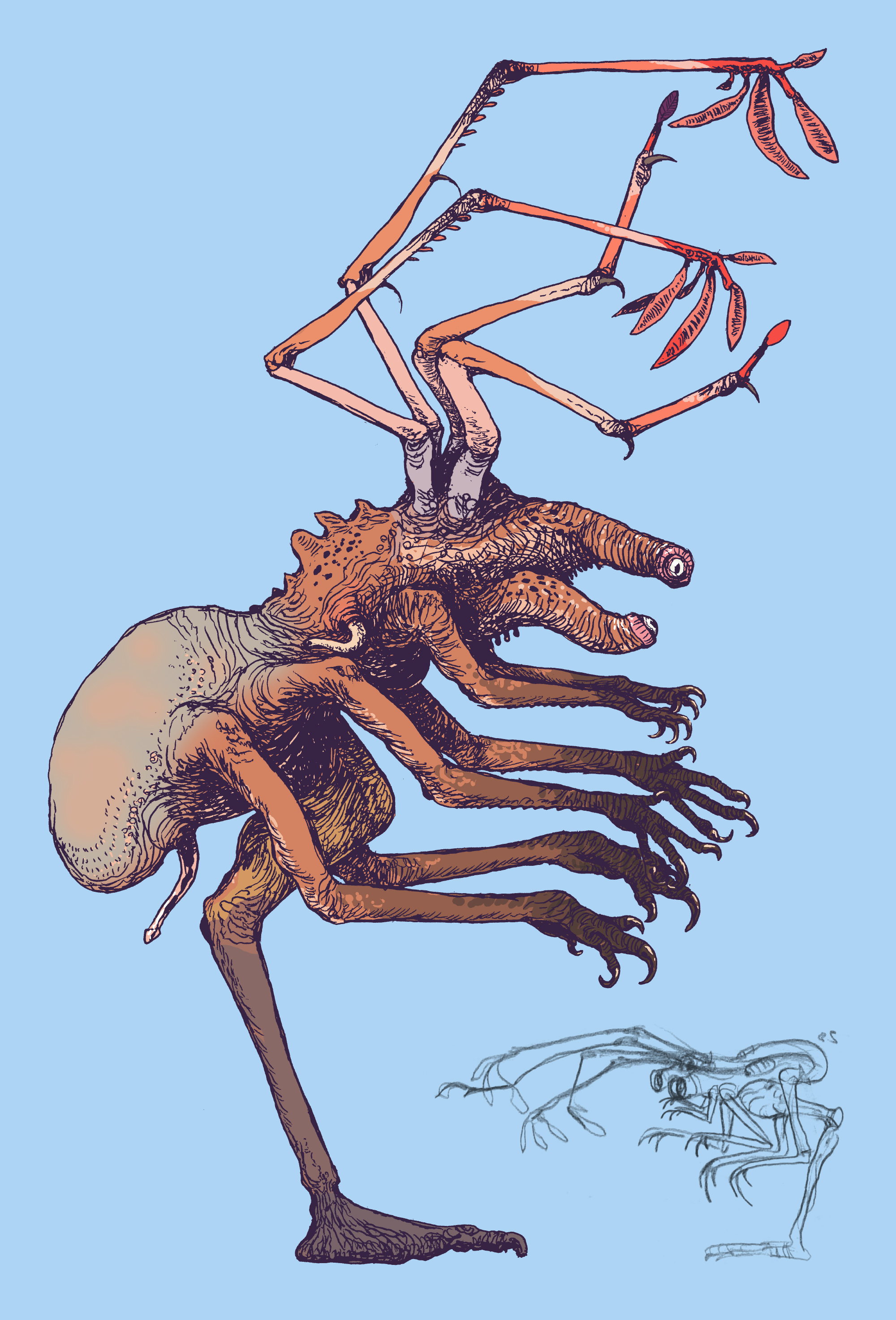
Pudd (1997) (Was ‘inspired’ heavily by Dougal Dixon’s “Greenworld”)
- Cryptic member of a mollusk-spider race where everyone calls themselves “Pudd”.
- In fact that’s the only word they can speak.
- They actually communicate with a very sophisticated sign language performed by their top four limbs.
- Shy characters; only want to play with strange devices they build in trees.
- Scary claws help them climb enormous redwoods. Not predators.
- Skip on the ground from tree to tree on well-developed monopod legs.
- Hermaphrodites: Both lovers get pregnant when they make out.
- Pale spigot on body squirts a kind of defensive ink.
- Salt works like a dangerous drug on them; Pudd will crave it even as it kills them.
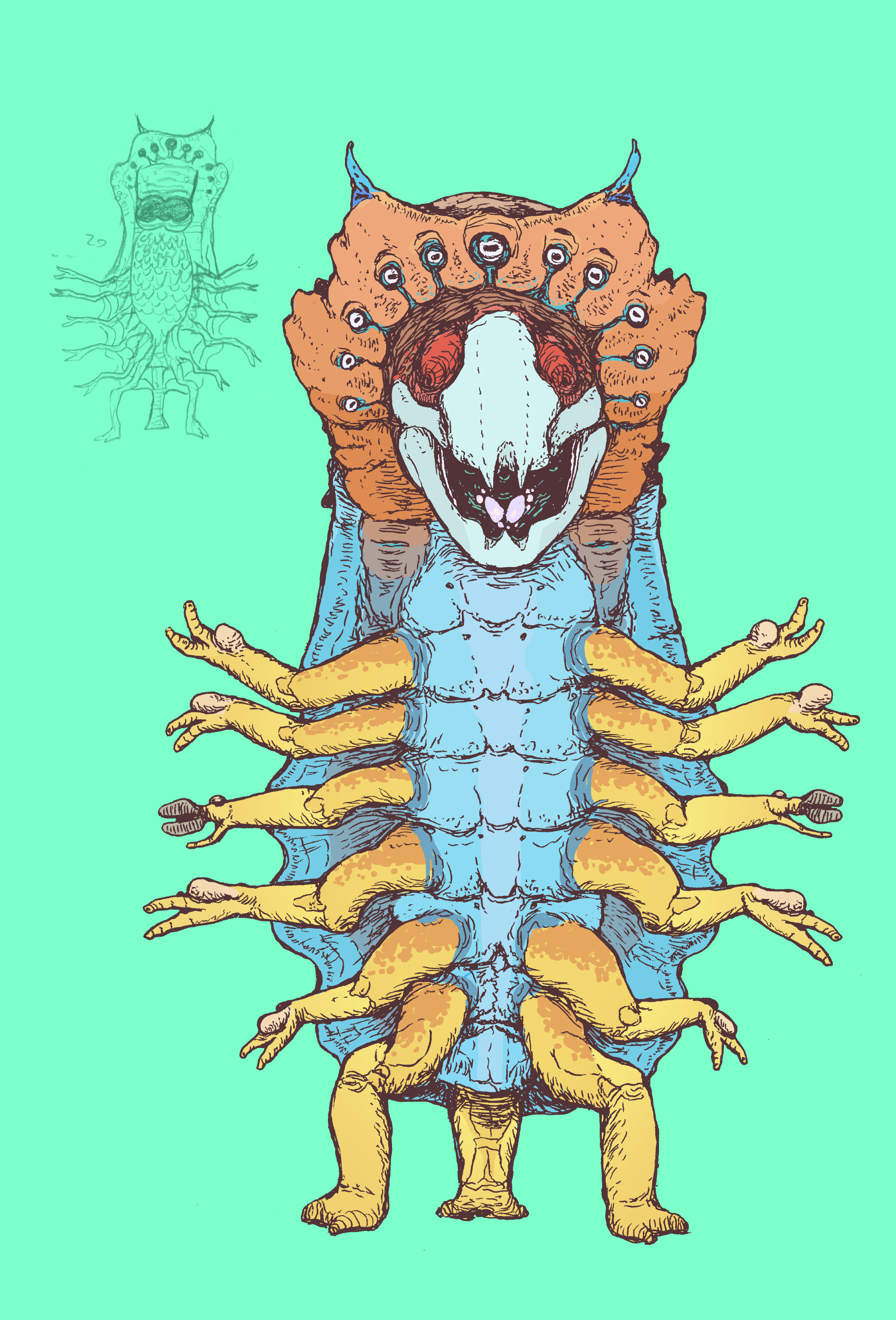
VIXON (1997)
- A gregarious and boisterous space merchant of an unknown race.
- Travels in a flashy spaceship that has many bright lights and chrome polish.
- Enjoys giving people an awkward time.
- Fun to hang out with but he WILL swindle you if you give him the chance.
- Has glowing tonsils as a result of space herpes infection.
- Every arm has a testicle and an ejaculatory pipe that Vixon uses in place of a thumb and forefinger…
-… except the third pair, which has ovaries and other female genitals. But Vixon can’t get pregnant from himself.
- The ratio of male / female genitals on this species’ hands varies from individual to individual and determines their personality. All-dick-hands are alpha males, all-vagina-hands are flaming femmes, and so on.
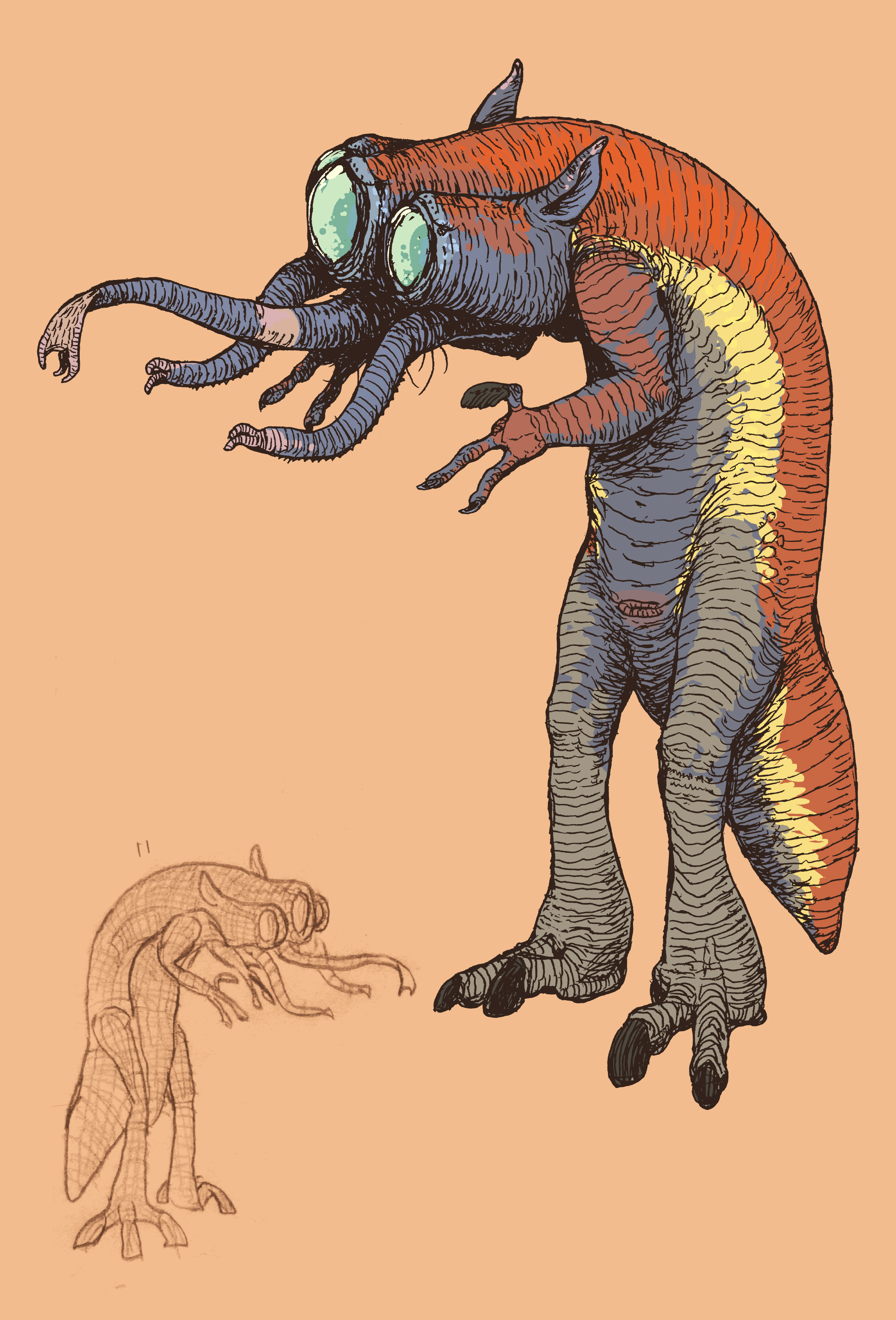
Snirfle (1997)
- Very smart, can hack any device.
- From a backwoods planet; got where she is by sheer hard work.
- Her hands are only used for grooming; Snirfle uses her triple proboscii to type on computers.
- Can digest almost any type of food; prone to binge-eating, keep food away from her!
- Secretly fed up and frustrated by others taking her for granted.
- Sings when no one is looking.
***
Alien war-horse
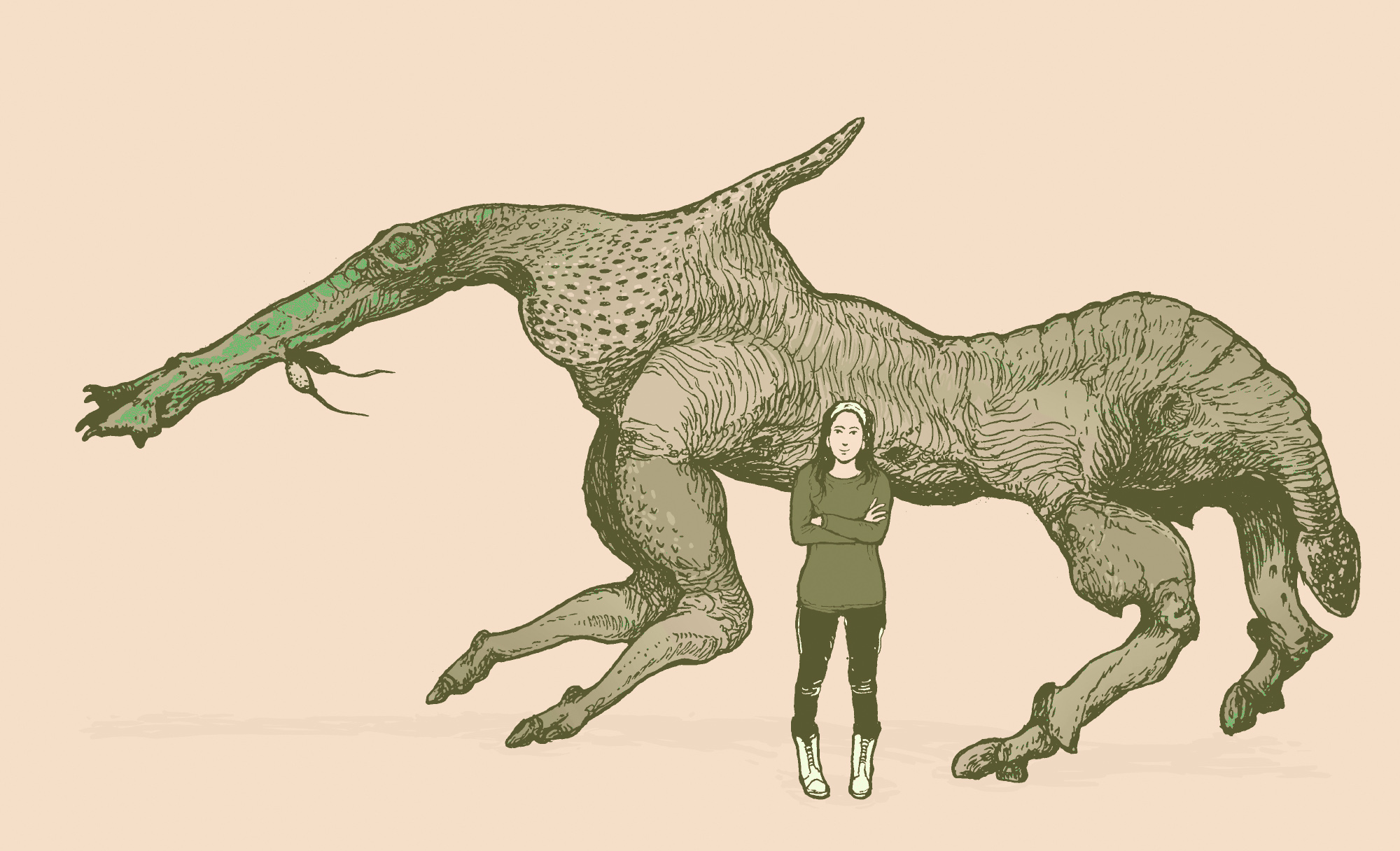
Some sort of an extraterrestrial horse-equivalent in scale with a human colonist.
***
Nuragic warrior
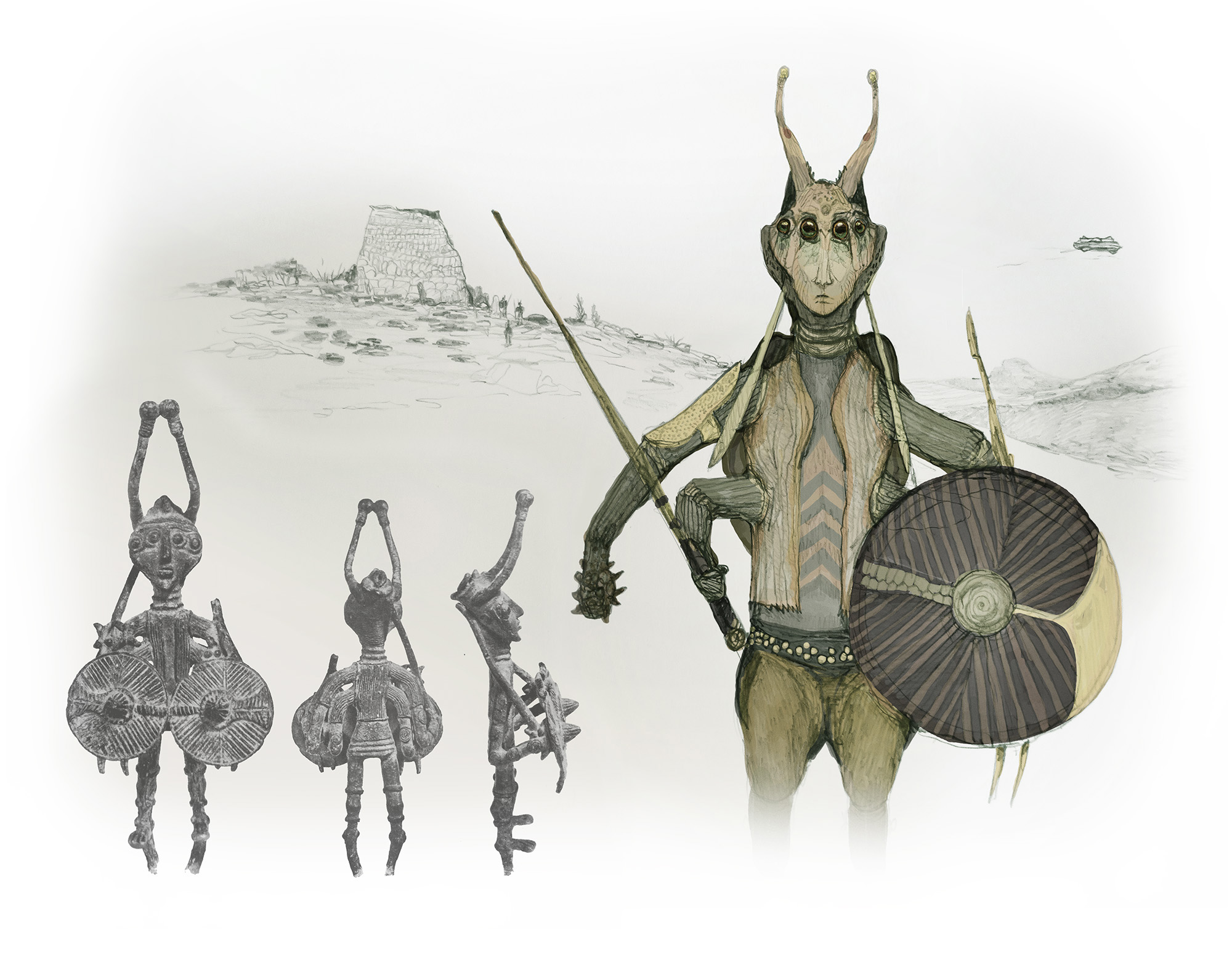
The island of Sardinia is famous for its bronze-age figurines, which include bizarre forms with four arms, four eyes and antennae (see inset). Proponents of "ancient alien" theories have interpreted these statuettes as the evidence of extraterrestrial visitors. I illustrated one such figurine as realistically as possible, and this was the result.
***
An extremely aquatic sloth
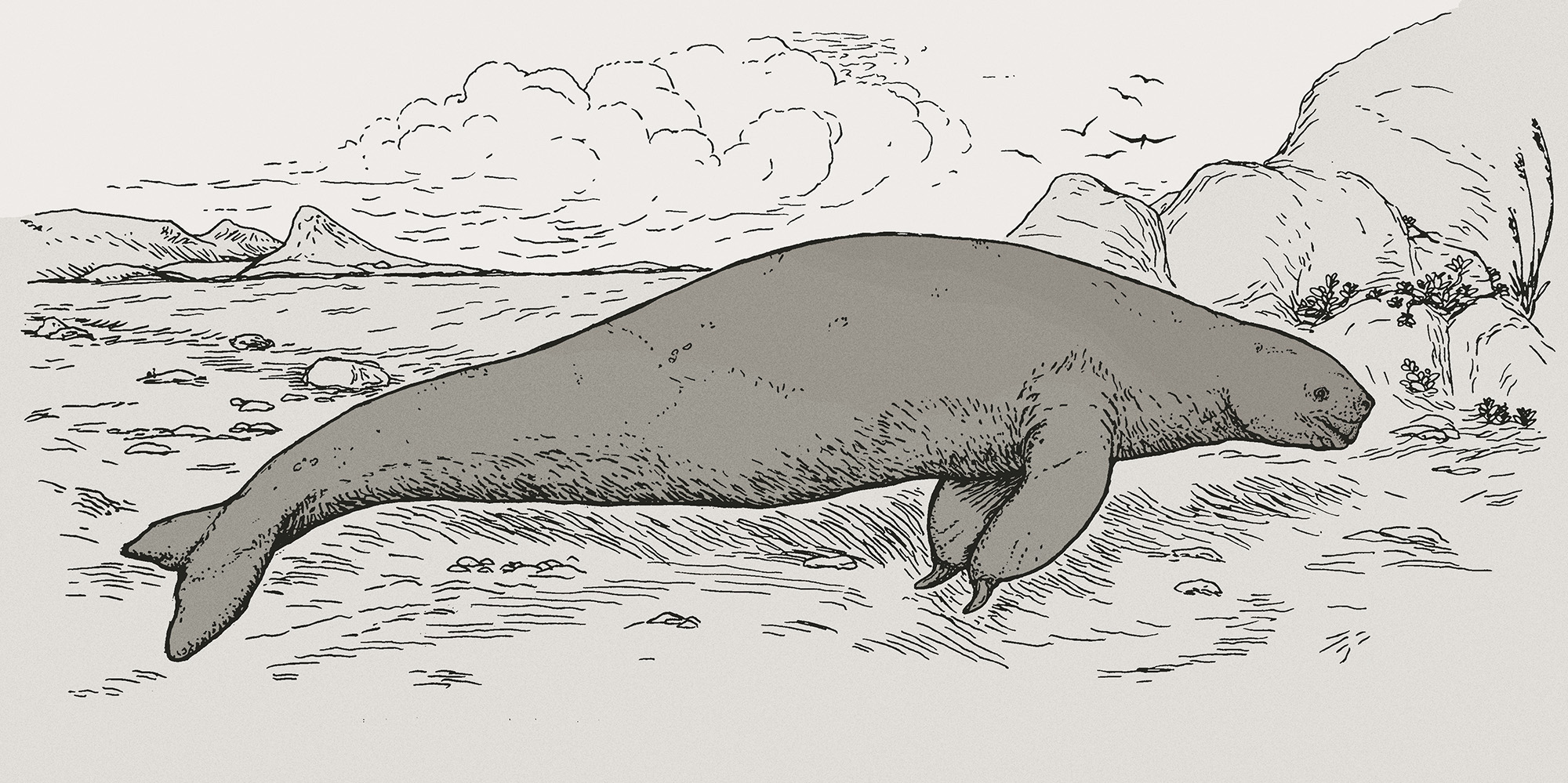
How far could sloths (Folivora) go into water? In the Miocene and Pliocene eras, a series of sloth species known as Thalassocnus evolved semi-aquatic habits before sadly going extinct. I imagined the ultimate outcome of their line of evolution, and came up with this manatee-like marine sloth.
***
Wind eater
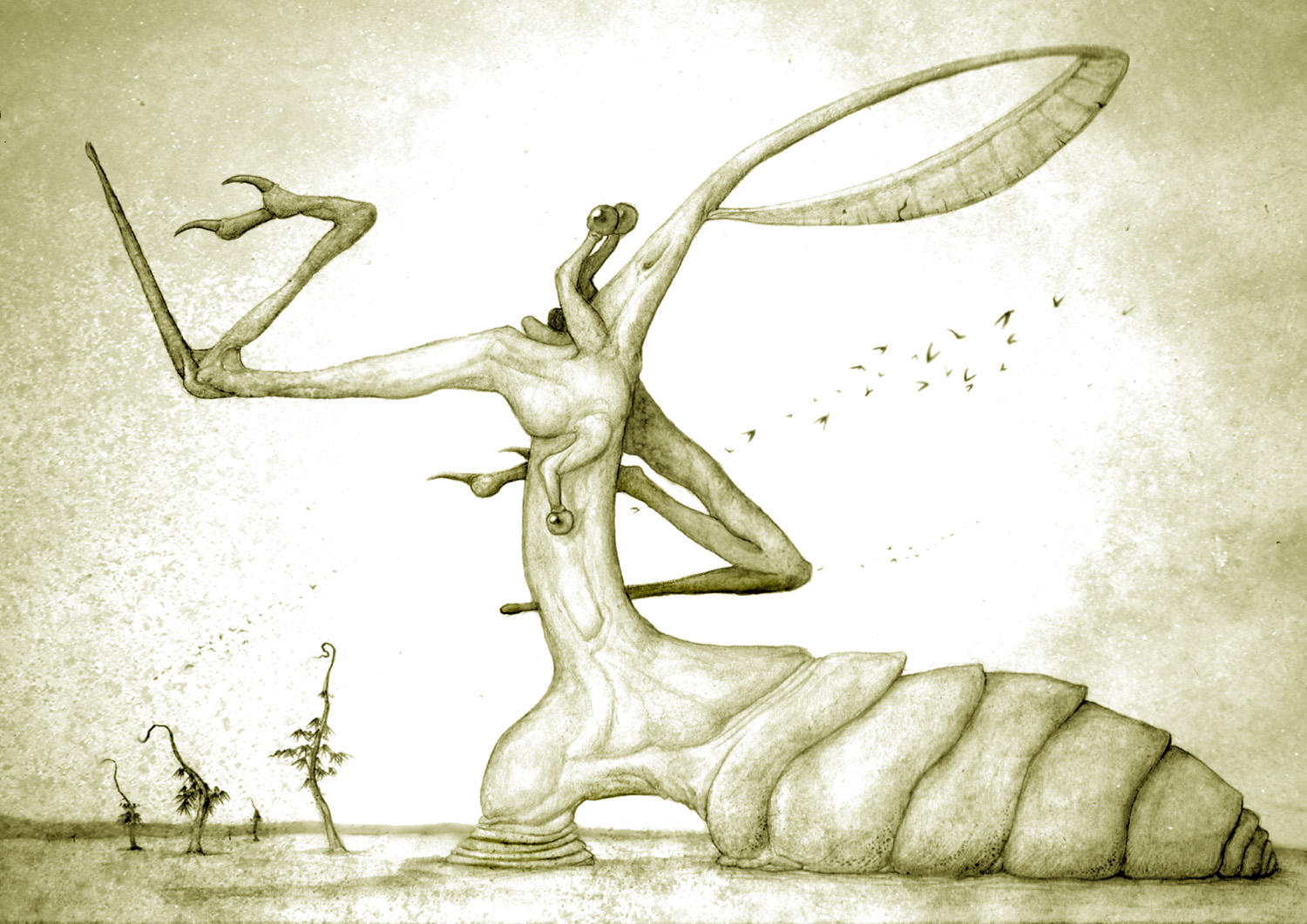
Aerophagus, a fanciful alien organism that "feeds on the wind" (don't ask me how).
***
Secodontosaurus
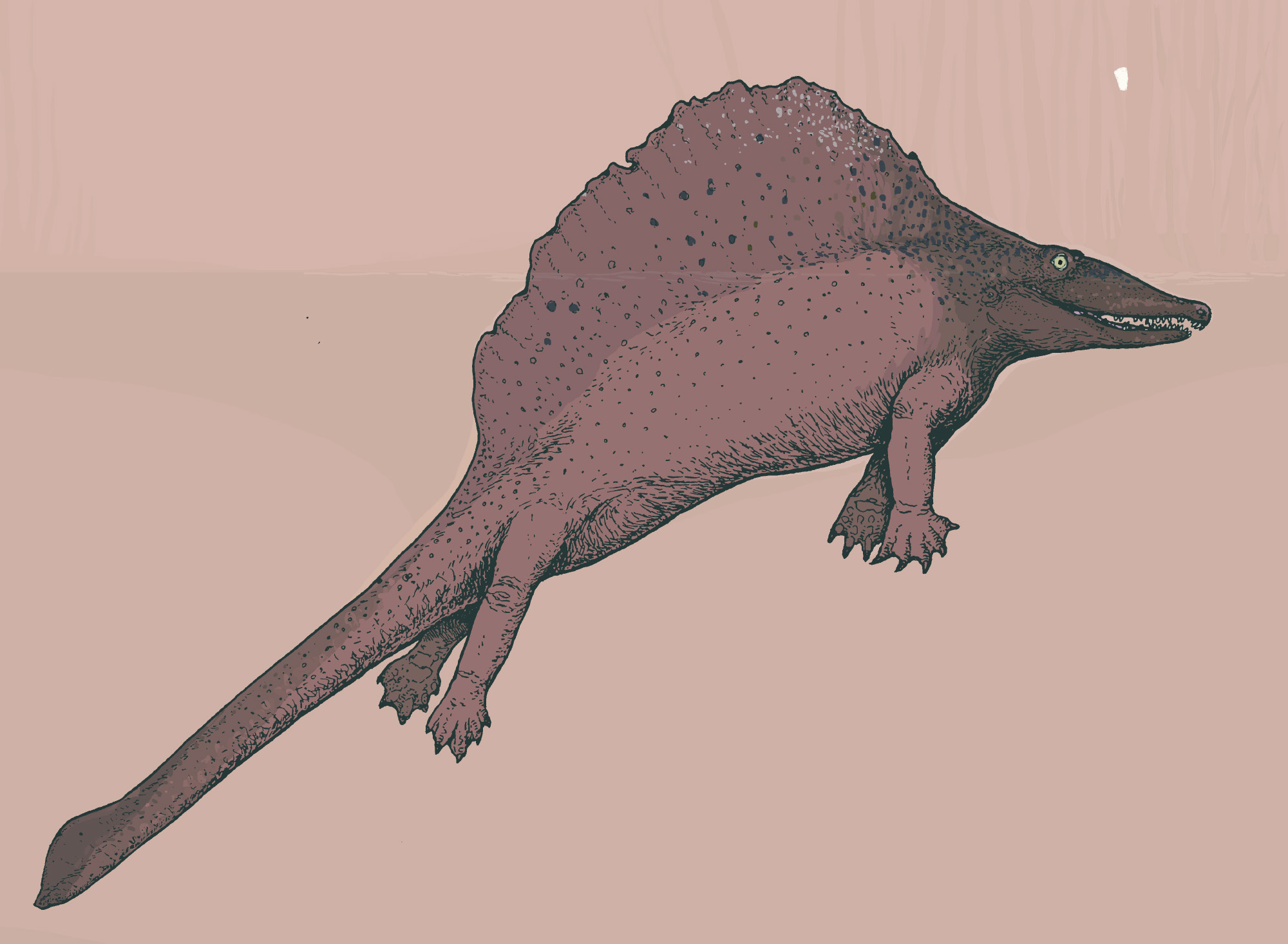
The sail-backed repto-mammal Secodontosaurus was the most likely member of its group to have had an aquatic lifestyle.
***
Australovenator
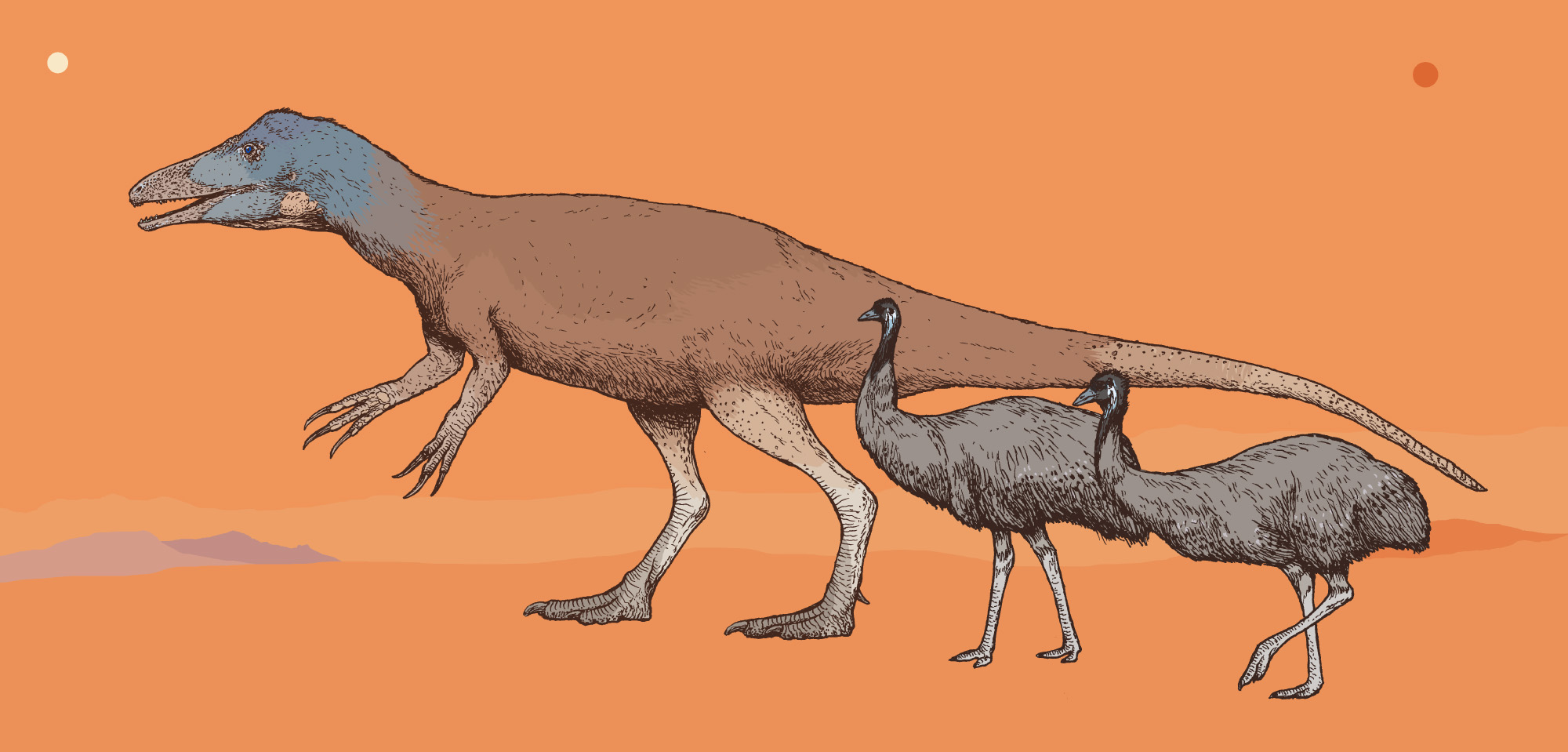
An Australian dinosaur, Australovenator wintonensis, and two modern-day emus, Dromaius novaehollandiae.
***
Skull Crawler
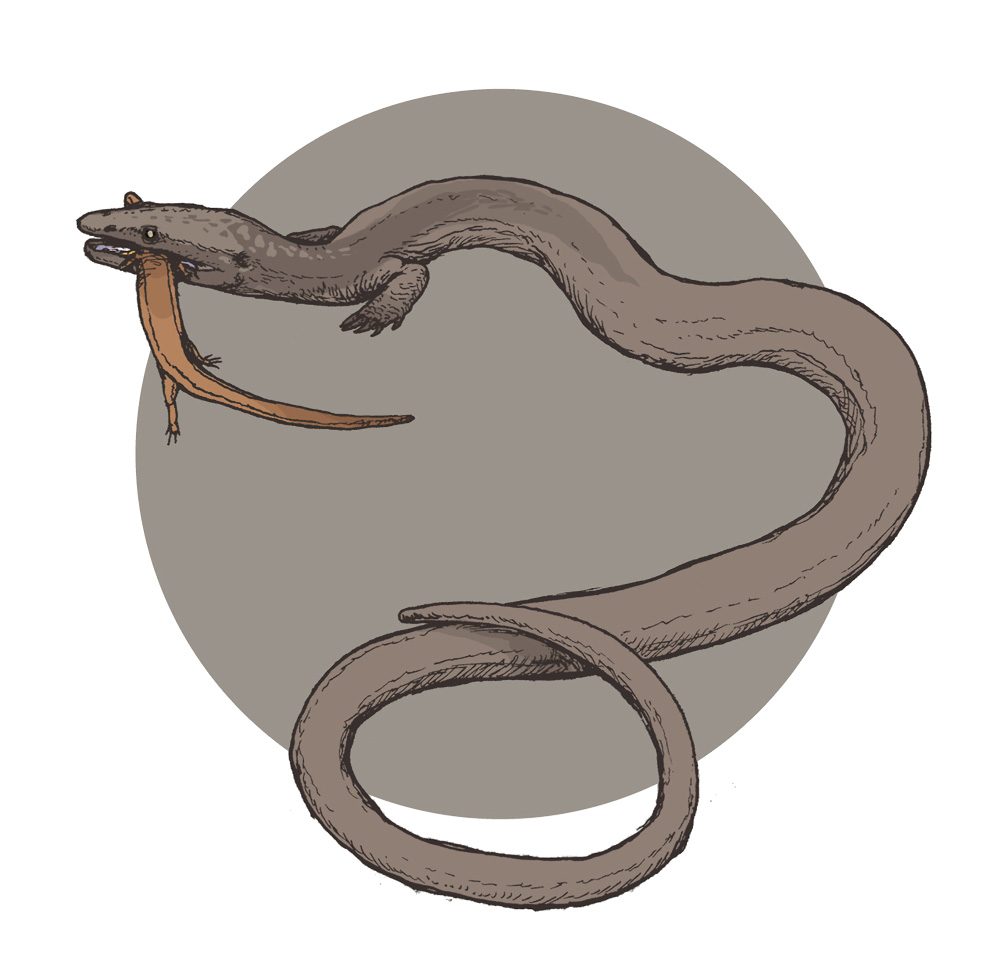
A spin-off from the film Kong: Skull Island (2017); where I re-imagined the infamous “skull-crawler” creature as an obscure, skink-like predatory lizard. This animal is an amalgam of real-life lizards including African legless skinks, Acontias sp; Australian snake-lizards, Lialis sp; the Bajan worm lizard, Bipes biporus; and generic varanids.
***
Two herpetological cryptids
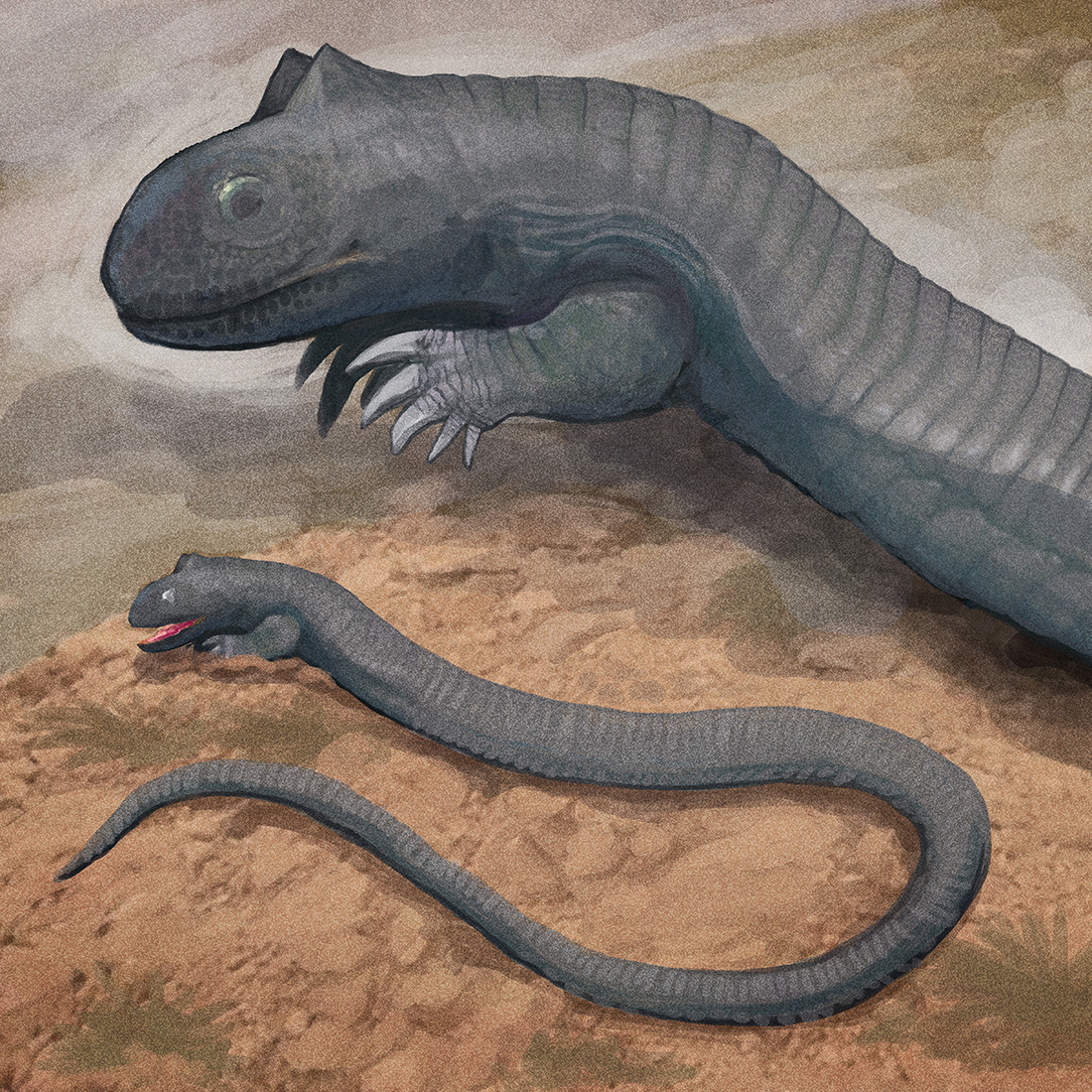
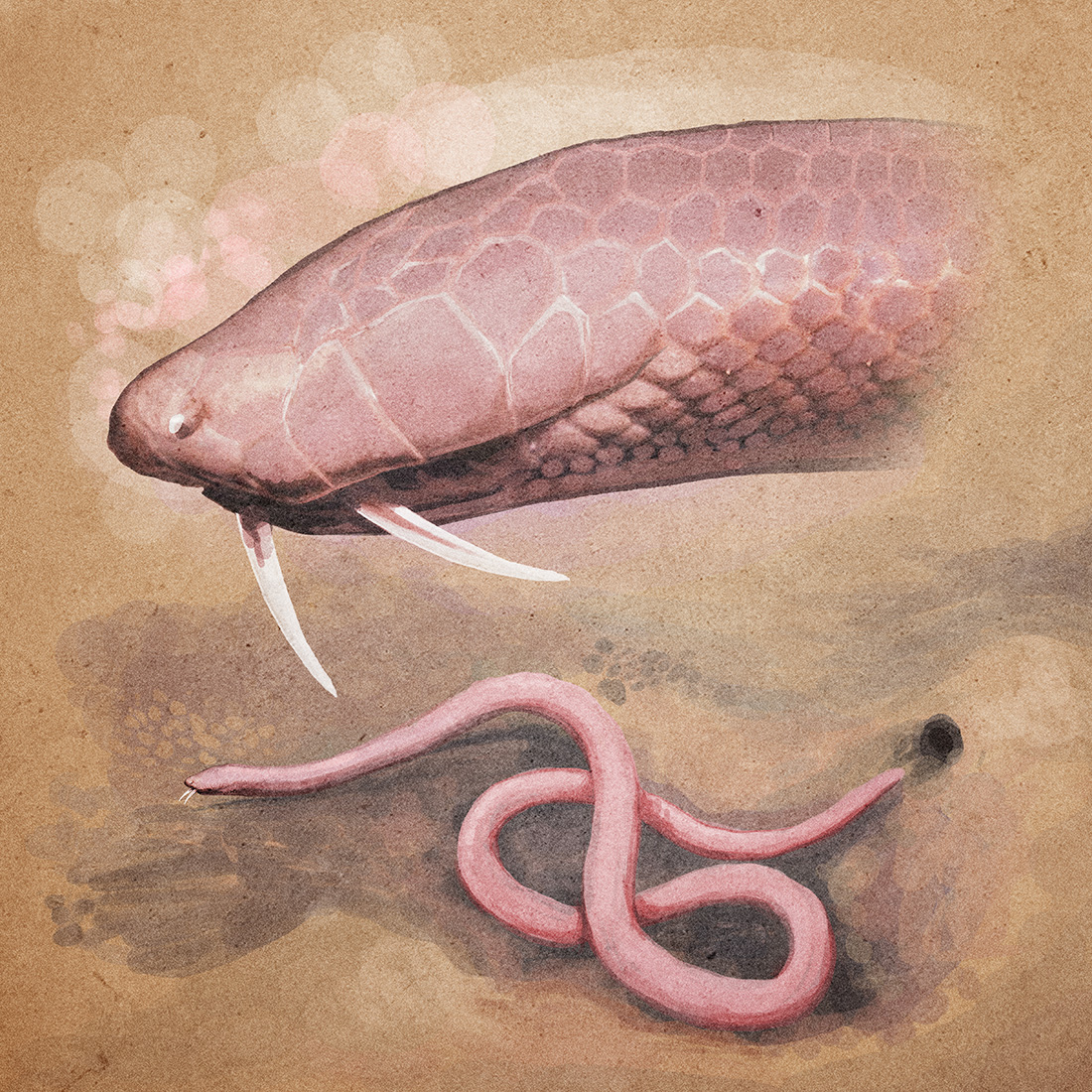
Two animals from cryptozoological folklore, plausibly-re-imagined as snake-like reptiles. First, we have the Tatzelwurm; a dragon-like monster with a cat-like head, reported from Bavaria and Switzerland. I interpreted it as the relative of a mole lizard, Bipes biporus, with cone-like hornlets on its head.
Second, we have the Mongolian death worm, also known as Olgoi-khorkoi; reported as a giant desert worm whose touch causes instant death. I interpreted it as a very large burrowing viper, related to the genus Atractaspis.
***
Emela-ntouka
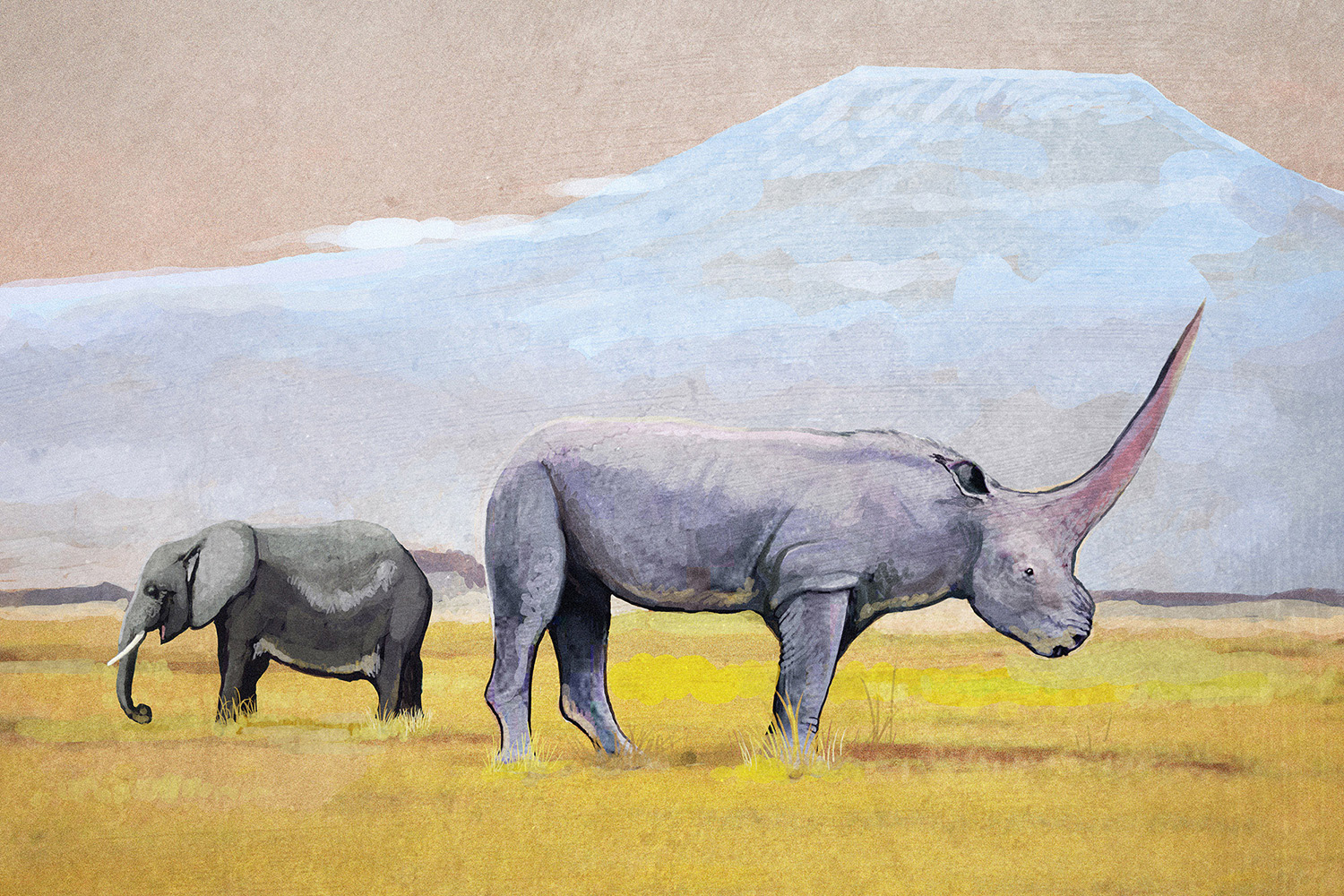
An illustration of Emela-ntouka, a legendary African “cryptid”. This animal is often described as a “dinosaur” with a gigantic horn, but here I interpreted it as a late-surviving Elasmothere relative. Sightings of Emela-ntouka have been reported from Central Africa, but I took the artistic license of posing it in front of Mount Kilimanjaro. It probably won’t matter much, since this animal is clearly not real.
***
Sinosaurus
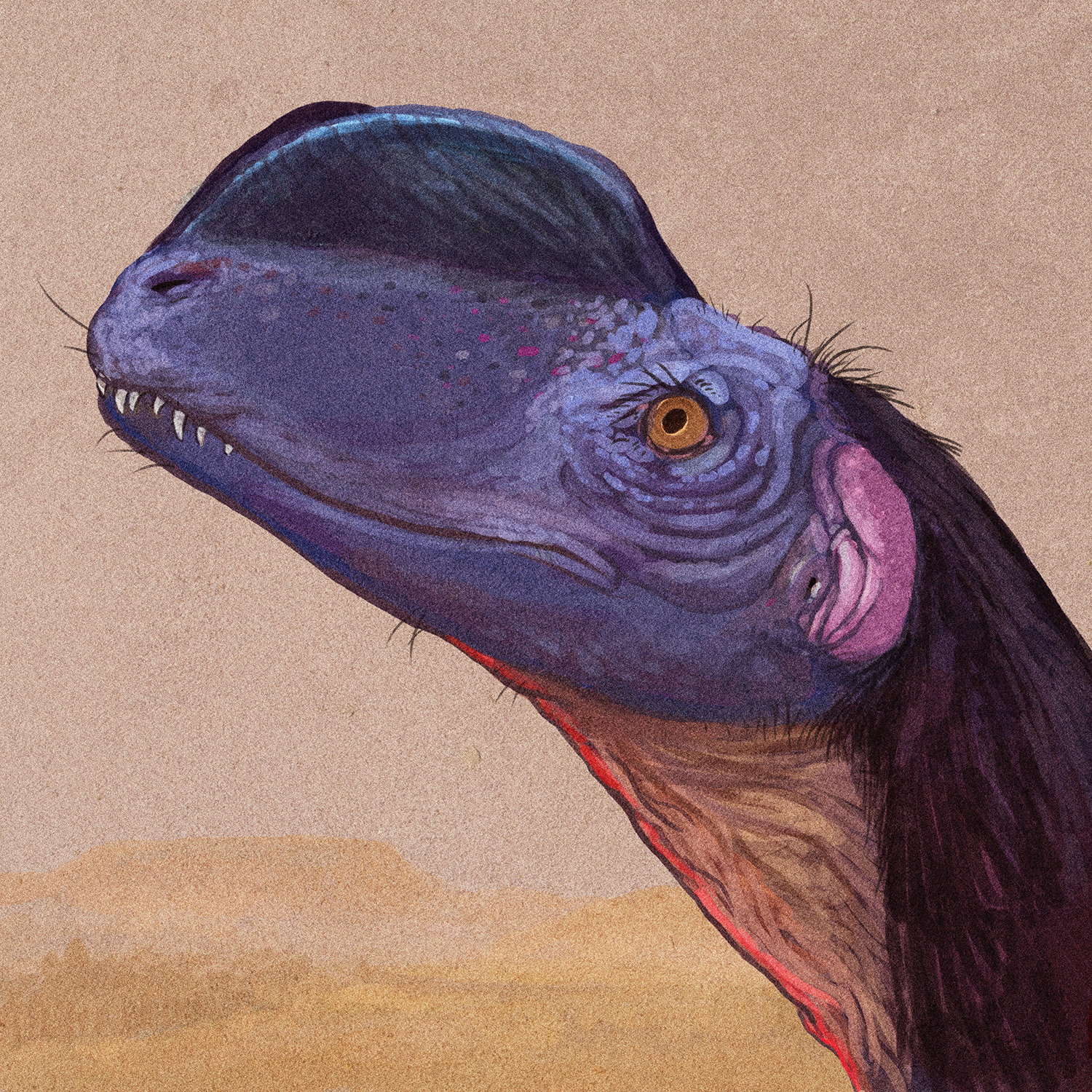
Portrait of Sinosaurus, a meat-eating dinosaur once thought to be a species of the Dilophosaurus. Later research revealed Sinosaurus to be quite a different beast. Its similarity to Dilophosaurus was probably a case of convergent evolution.
***
Megaraptor
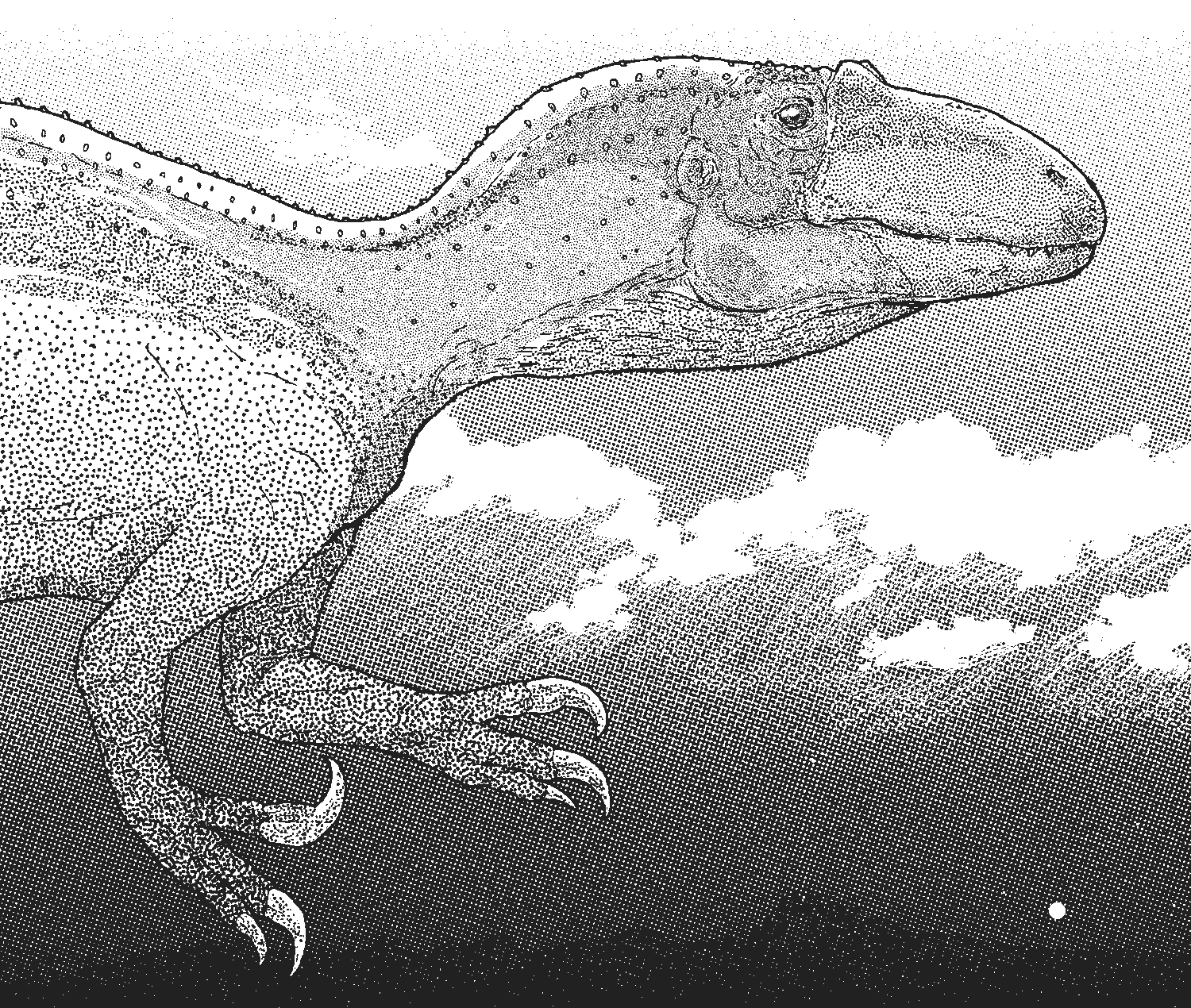
An outdated illustration of Megaraptor, a large-clawed theropod of problematic affinities. This is an obsolete representation, but I still find it neat enough to share here.
***
Brachytrachelopan
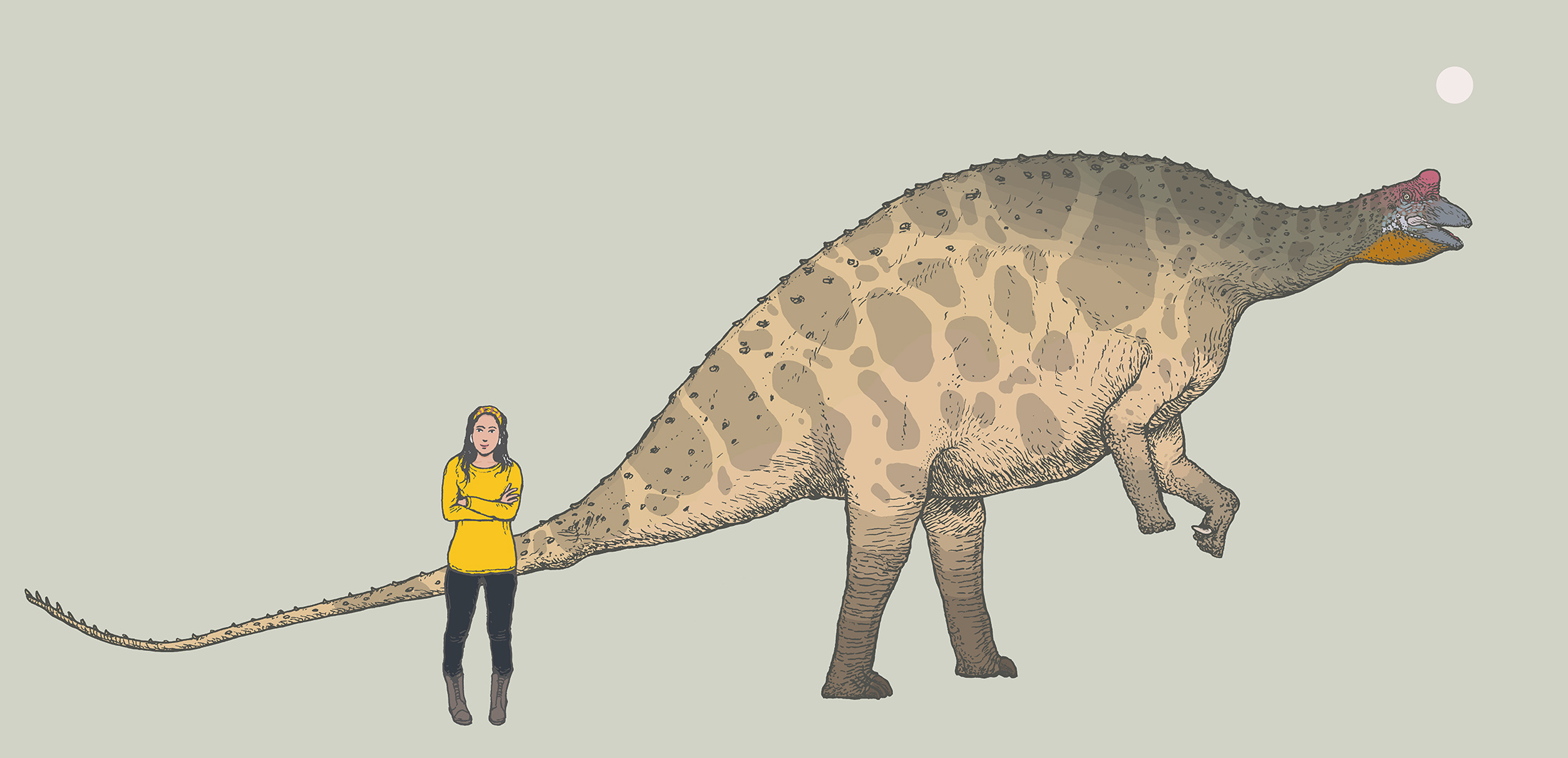
The unusual short-necked sauropod dinosaur Brachytrachelopan, in scale with a modern-day person.
***
Eurhinosaurus
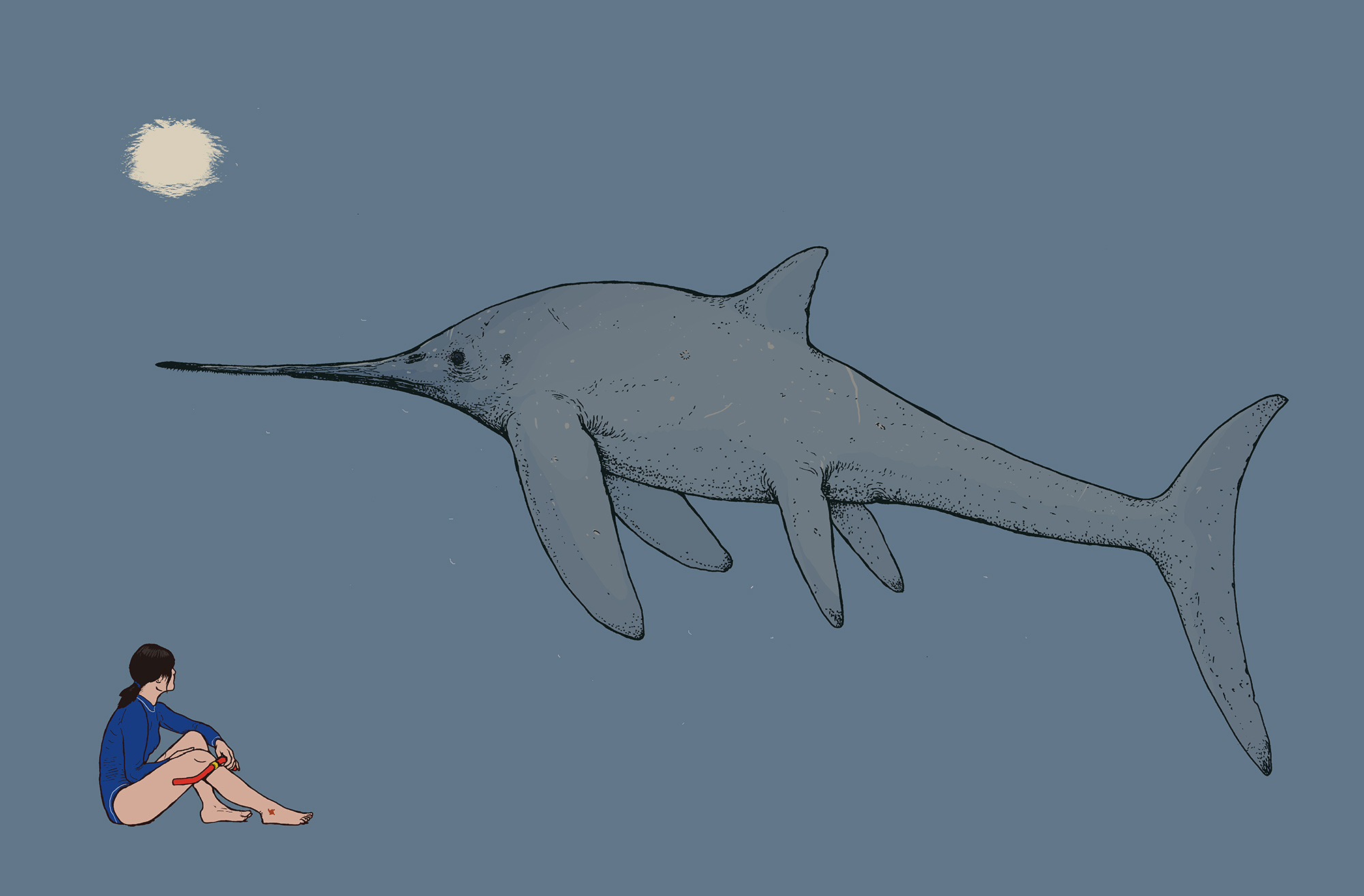
The sword-beaked ichthyosaur Eurhinosaurus has been typecast as a slim, sleek marine reptile; but with a length exceeding 6 meters, it must have been quite a stately creature in real life.
***
A skimming pterosaur
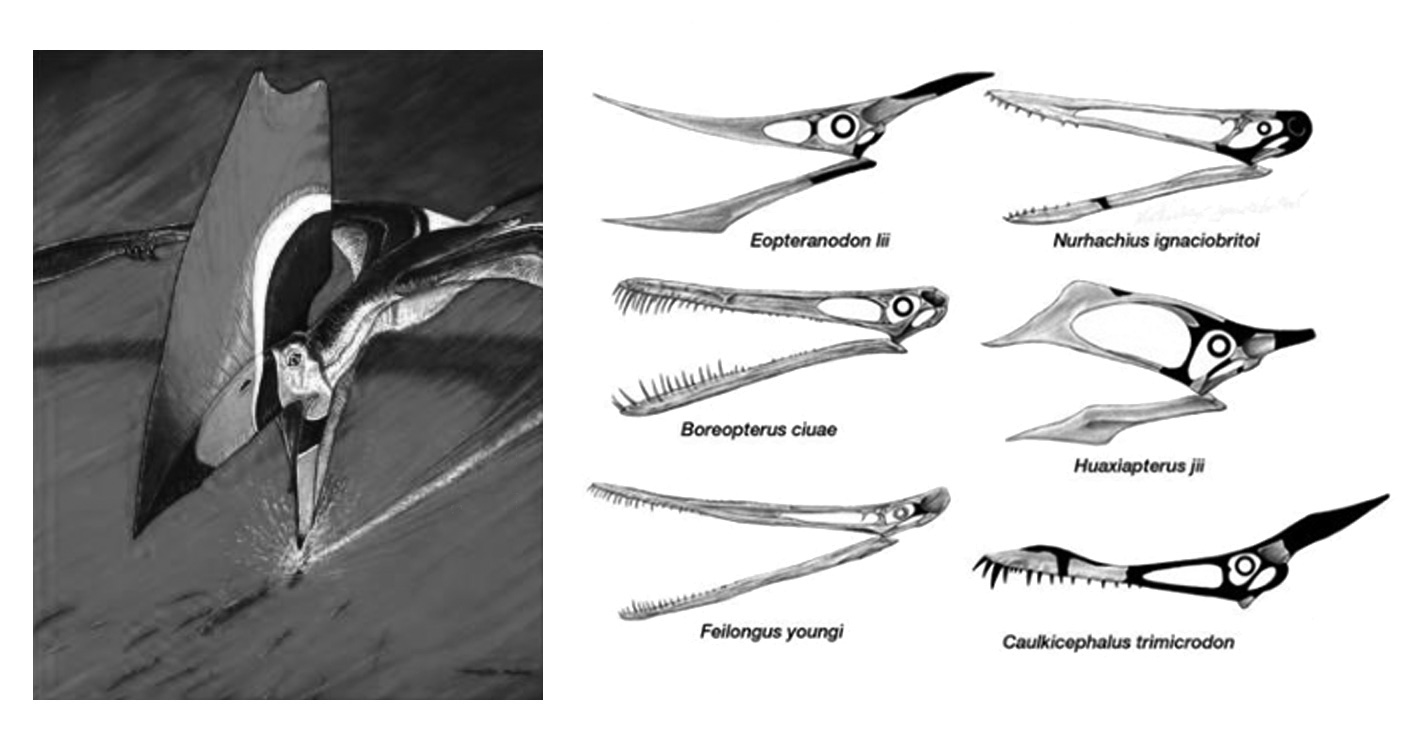
Pterosaurs - especially the more flamboyantly-crested species - have been occasionally pictured as "skim-feeders". However, the skulls of all known pterosaur species lack the extreme specialisations found in present-day skimmer birds, Rhynchops sp. See the images above and below to compare. (The images above are by Maurillio Oliveira and Michael Hanson).
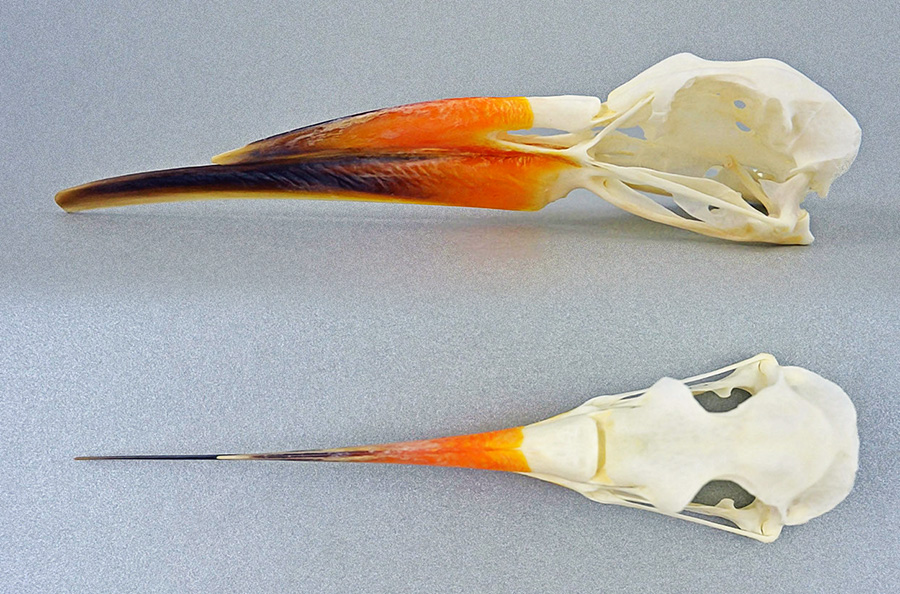
I studied the skulls of skimmer birds, Rhynchops flavirostris, seen above. (Image from skullsite.com). Based on my observations, I then designed a hypothetically-plausible "skimming pterosaur".
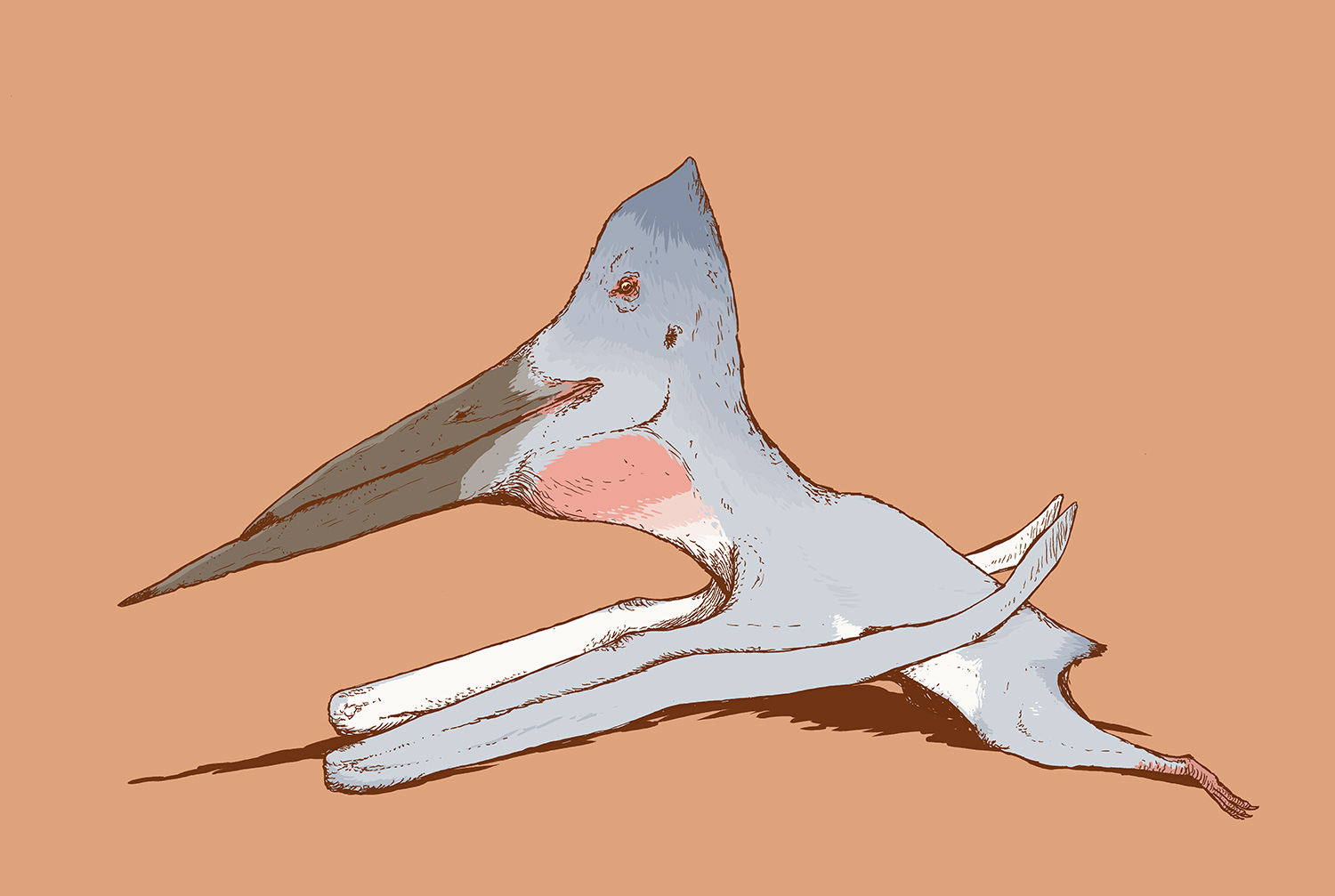
If such an animal lived, it would probably look something like this. This is a speculative animal, related to well-known pterosaurs such as Pteranodon and Nyctosaurus, but smaller. I decided to name it Anomalorhnychus, after its very exaggerated lower beak. It is resting on a sandbar, somewhere in improbable time.
***
Memetic Organisms
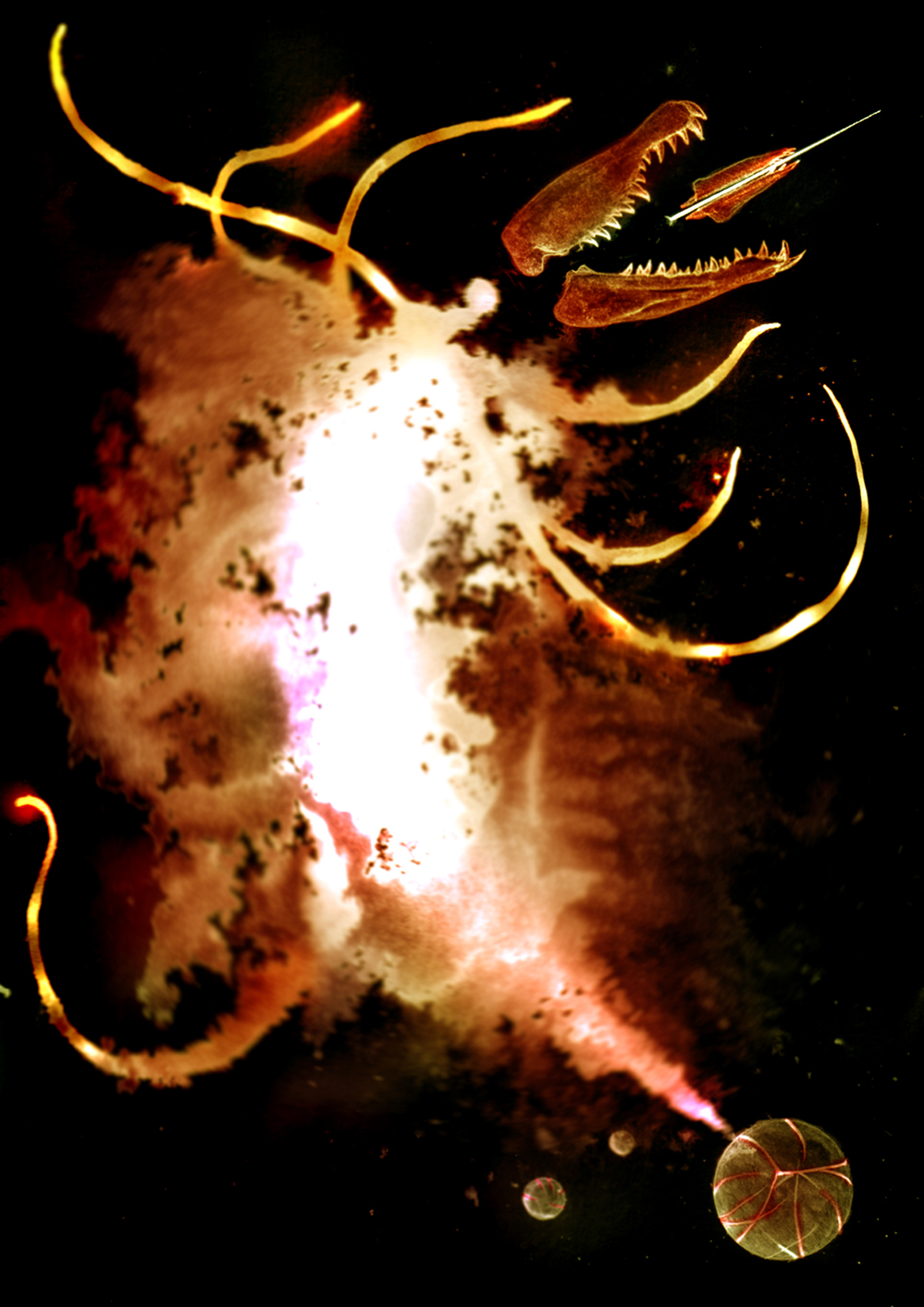
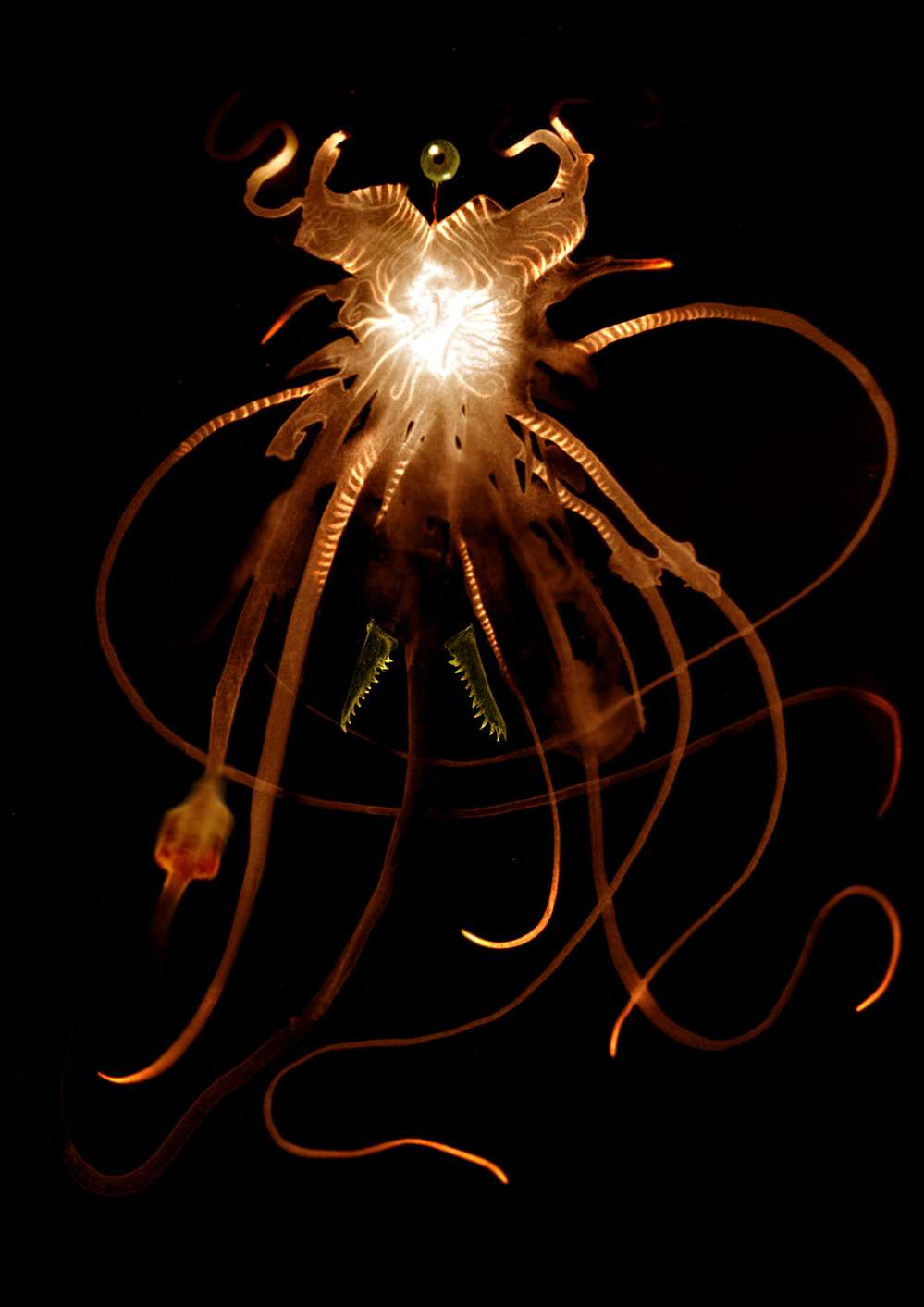
What if memes could be seen like living, breathing, evolving organisms? More than a decade ago I created these ink-and-digital illustrations of mental organisms; speculative, memetic beings I imagined as embodiments of different feelings, ideas and thought-patterns. Click here to access the full gallery.
***
Murrudon
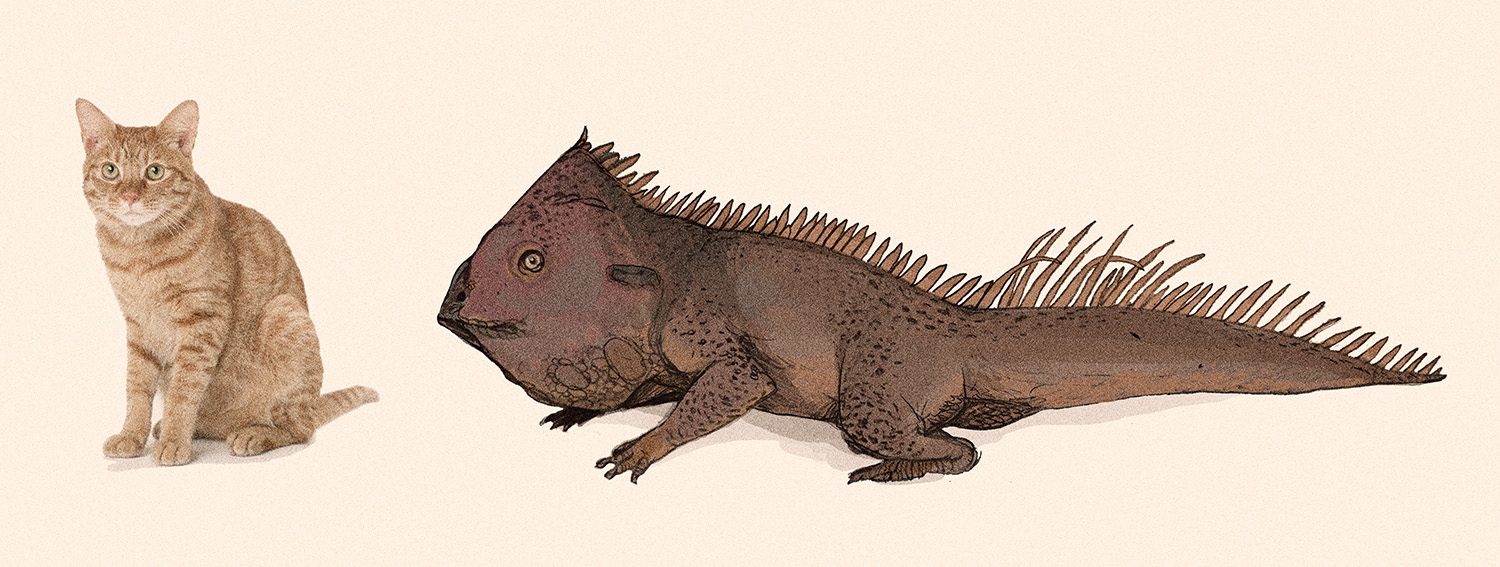
Illustration of Murrudon, a big-headed, coconut-eating lizard species. This animal is not real, it is the product of an exercise in speculative evolution.
***
Creatures from Tyler Rhodes' "Evolution" project
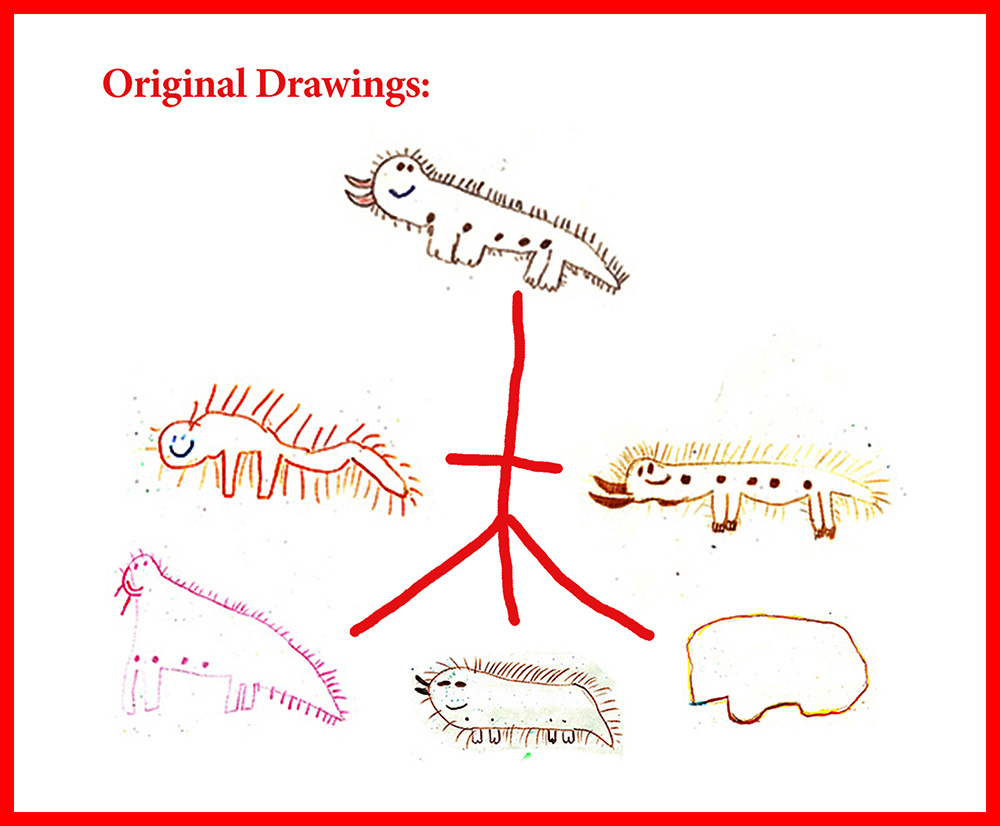
Tyler Rhodes is a talented artist who organises schoolchildren to generate entire faunas of imaginary creatures, by deriving evolutionary patterns through a game of visual Chinese whispers. Kids try to replicate each other's drawings in generations, and the errors they make contribute to the diversity of each consecutive generation. Rhodes then contacts concept artists to render the drawings in a realistic manner. Below are my renditions for a family of hirsutiformes - the "hairy ones".
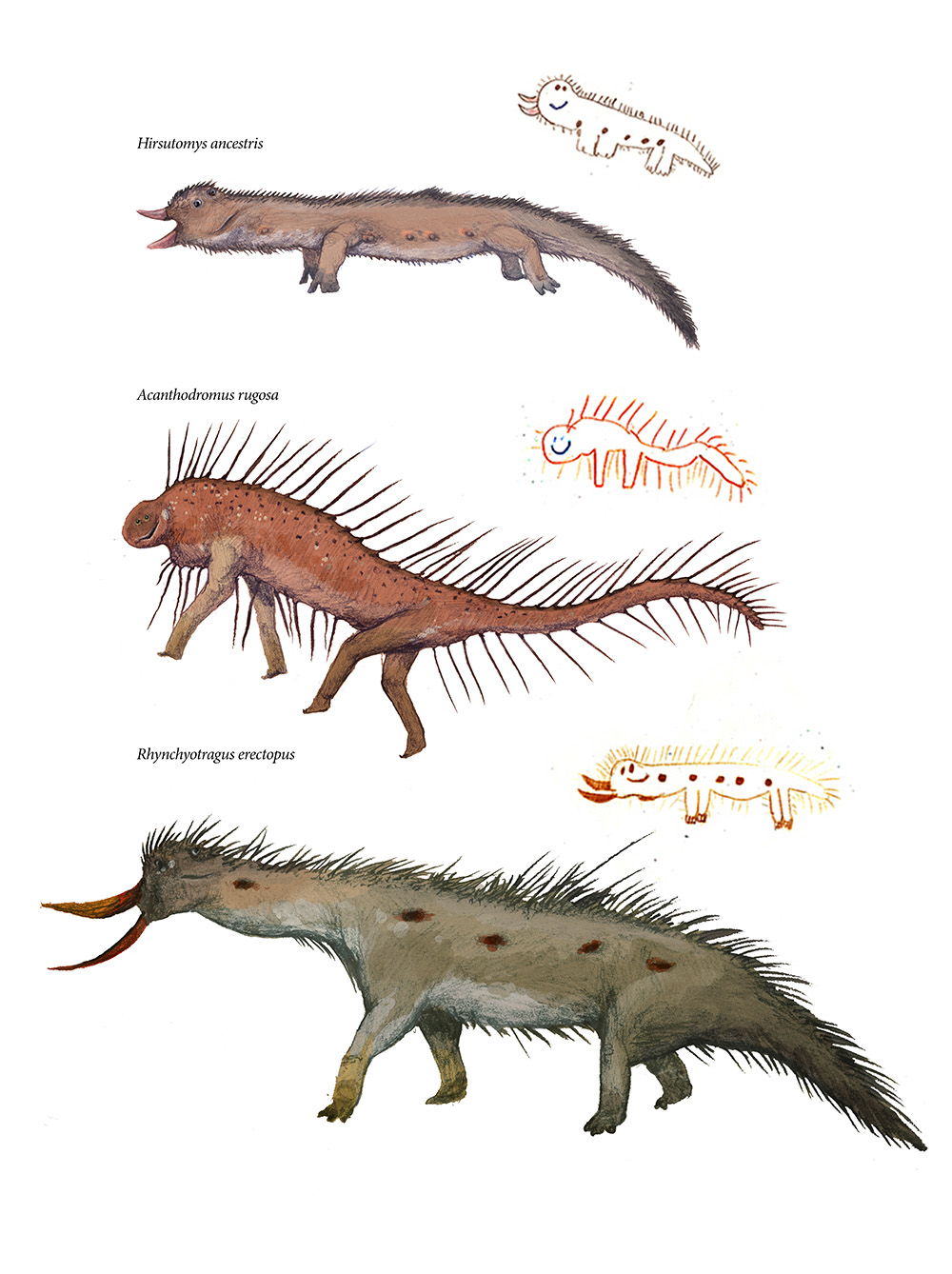
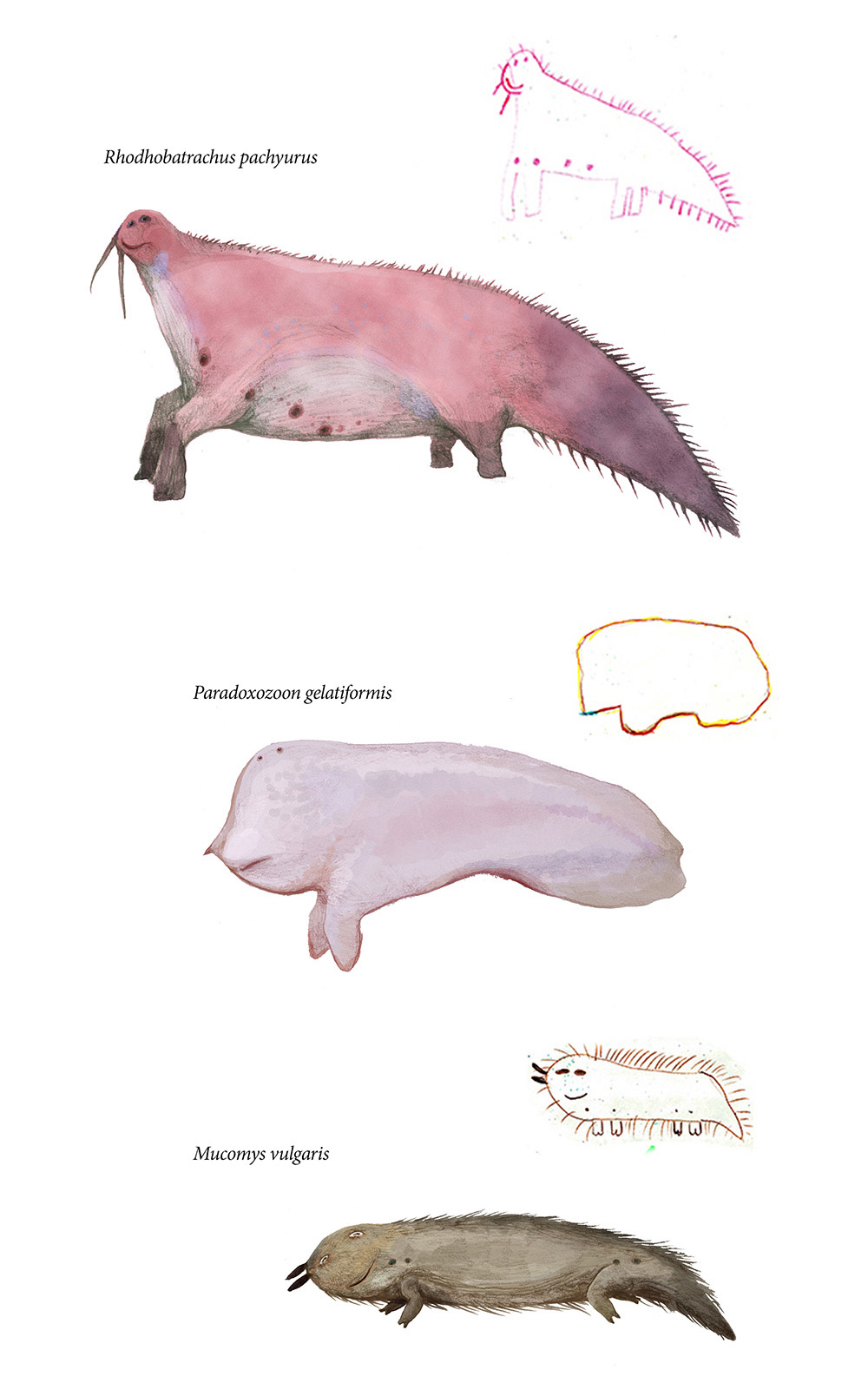
***
Insectoid knight
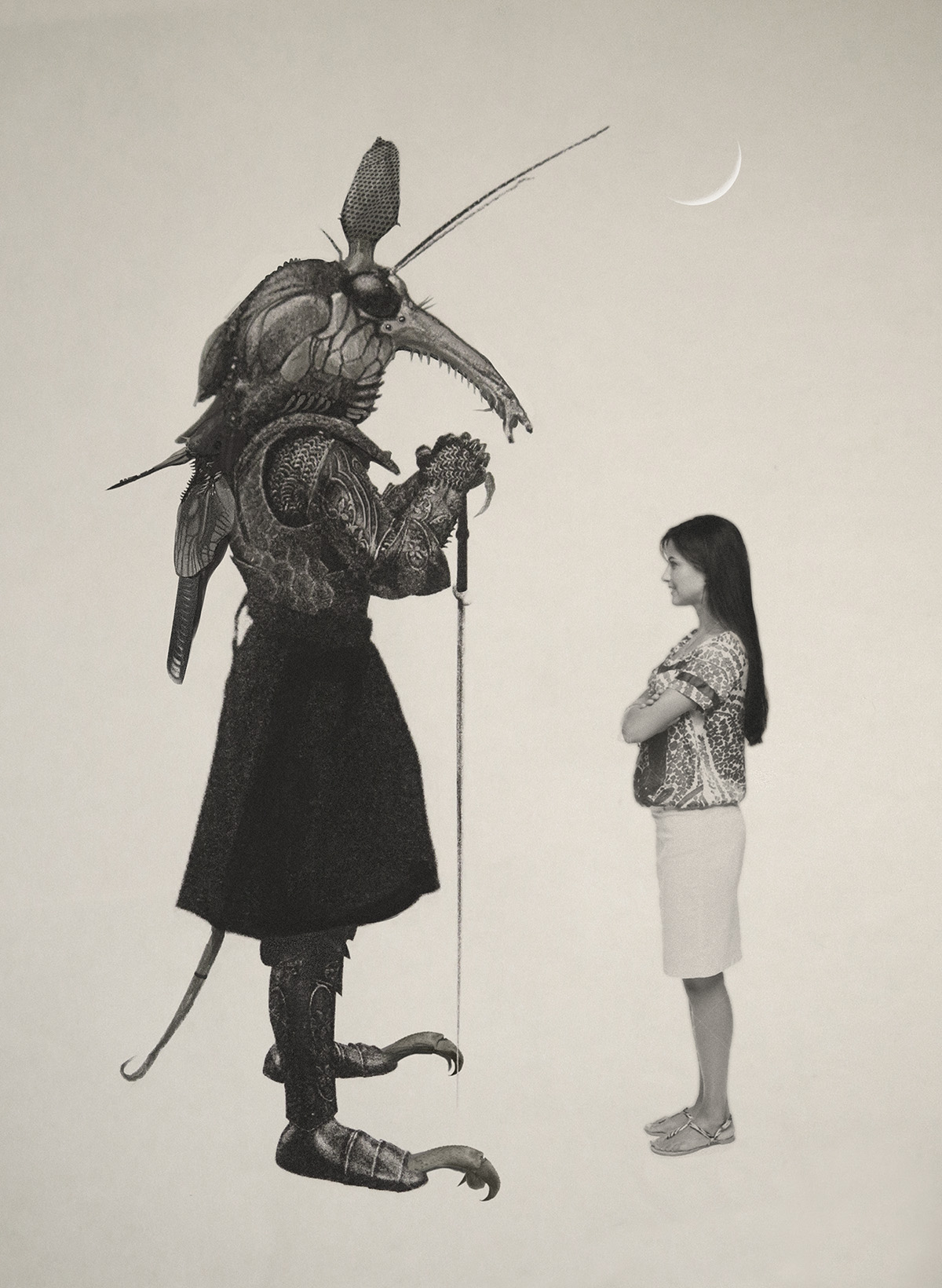
Illustration of a fantastic, insect-like knight in chitinous armour. The image of the woman on the right has been taken from a stock-image website.
***
Tetrapodophis
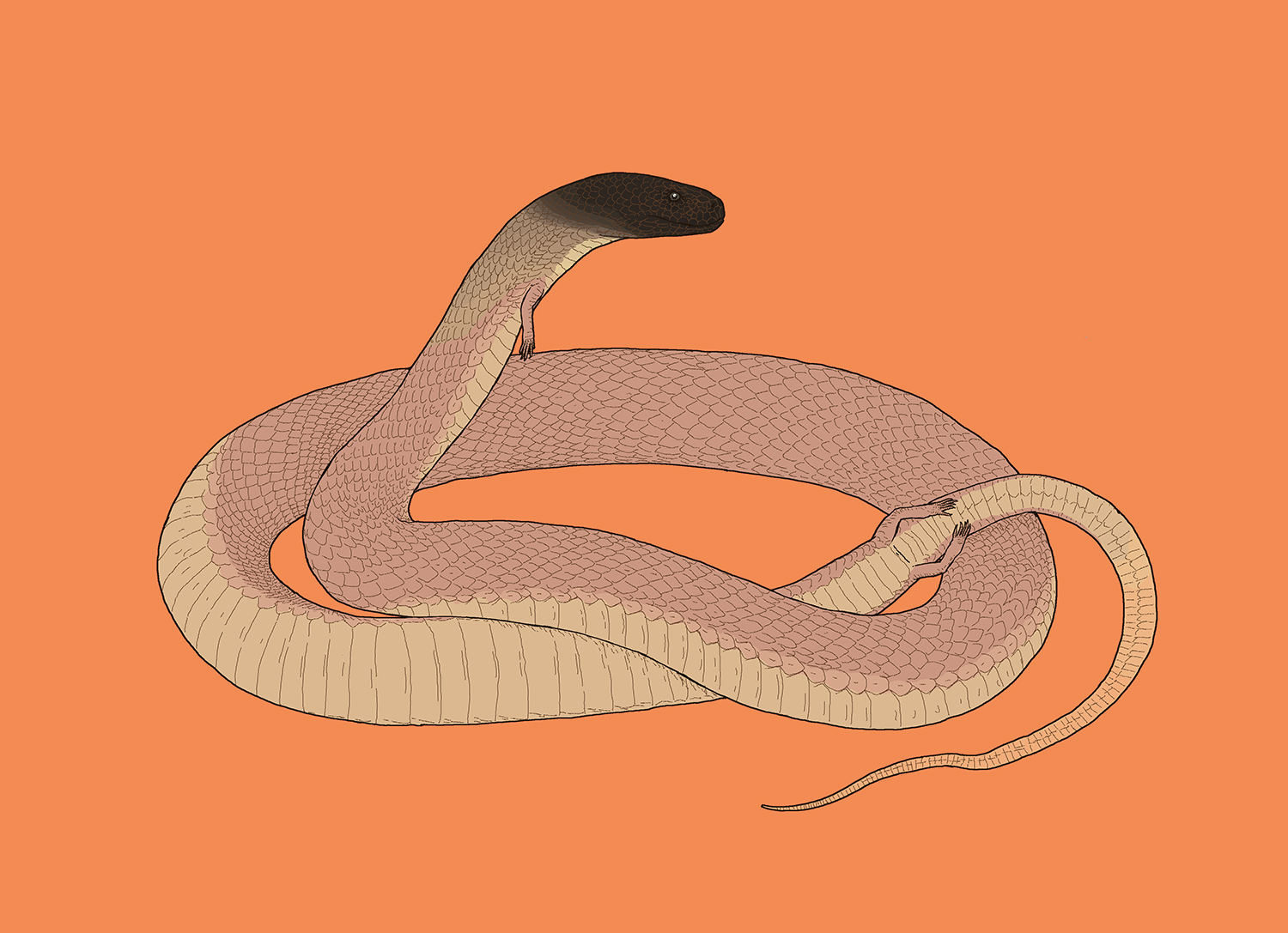
Tetrapodophis, a prehistoric, serpentine animal that may have been an ancestor of snakes. This reptile looked like a snake with four tiny legs.
***
A hypothetical pterosaur ancestor
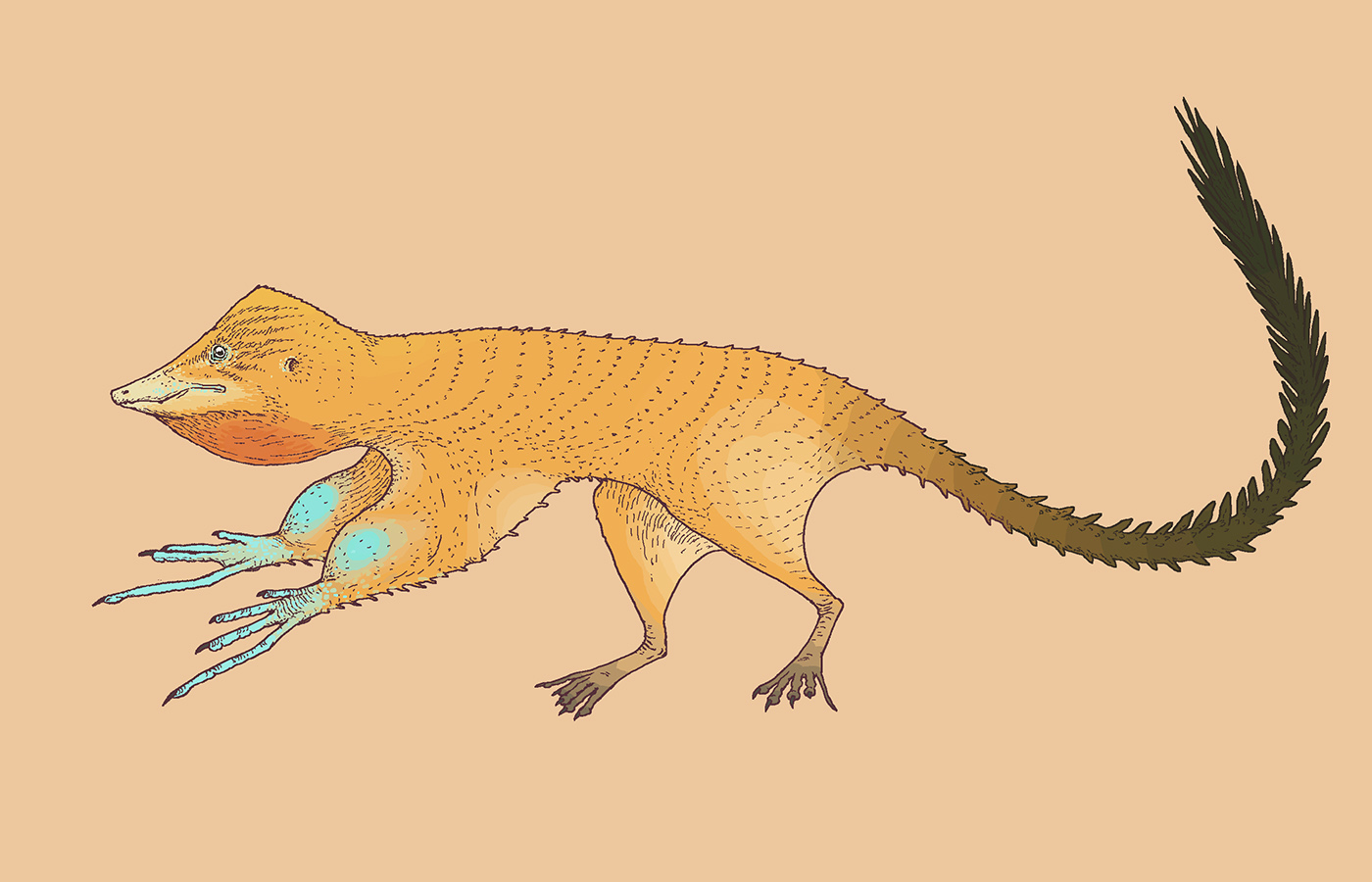
The ancestral form of pterosaurs has never been discovered. I imagined that it may have been something like this; an arboreal ornithodiran with long fingers to climb; arm-bound air sacs used for social displays (they will extend into the wings later); proto-membranes stretched between legs and arms; already covered with filaments and scale-like things. Who knows? Maybe a fossil like this will actually be discovered someday.
***
Balaur, drawn twice
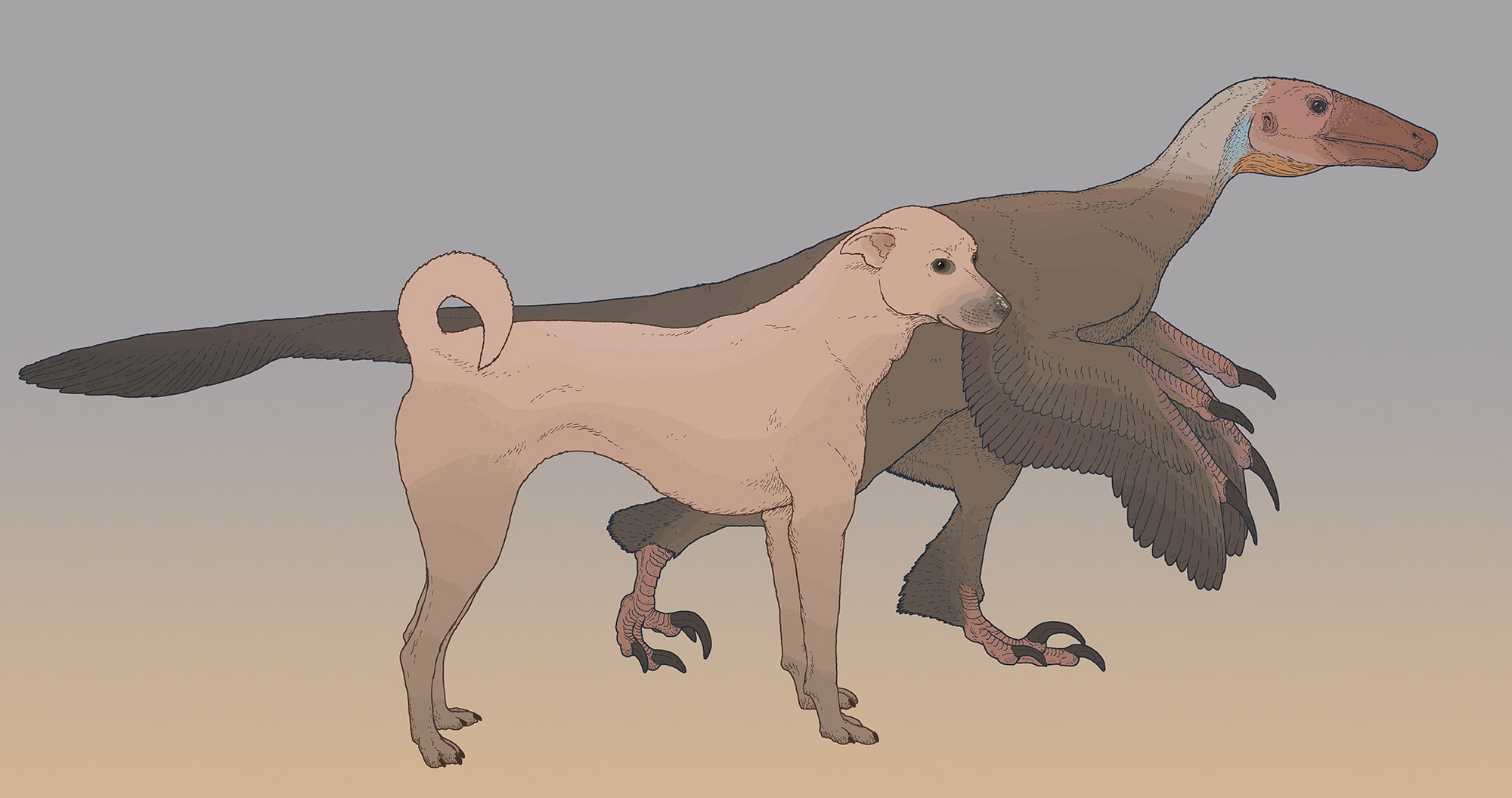
A faulty drawing of the “double sickle-claw” dinosaur Balaur bondoc, from late Cretaceous Romania, compared to a present-day dog. This dinosaur was interpreted as a strange relative of Velociraptor or Deinonychus, but it is now thought to be a unique relative of early birds.
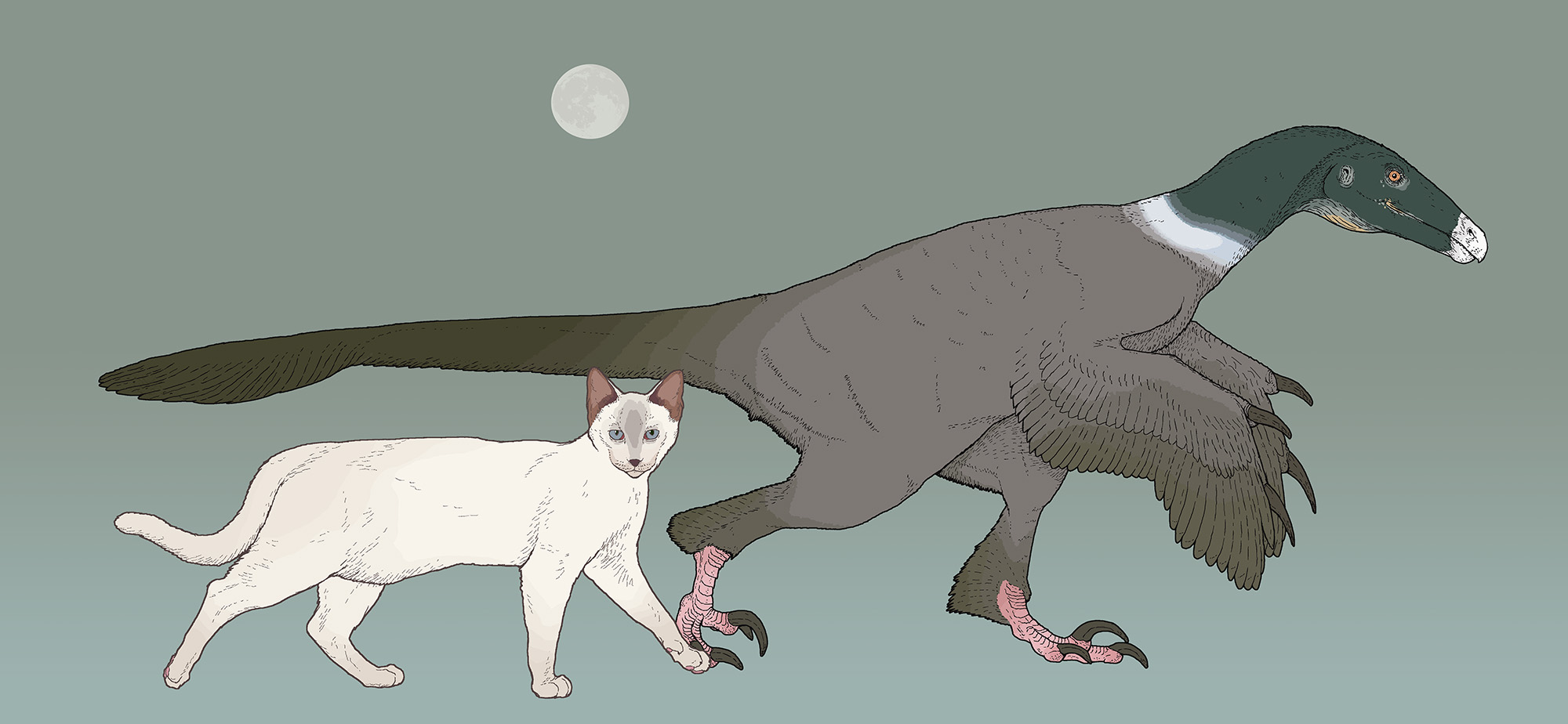
It then turned out the first drawing of Balaur had certain errors. I had drawn it too big, and its hands were less wing-like than generally assumed. So I drew it again, this time in scale with a cat.
***
Qinglongopterus
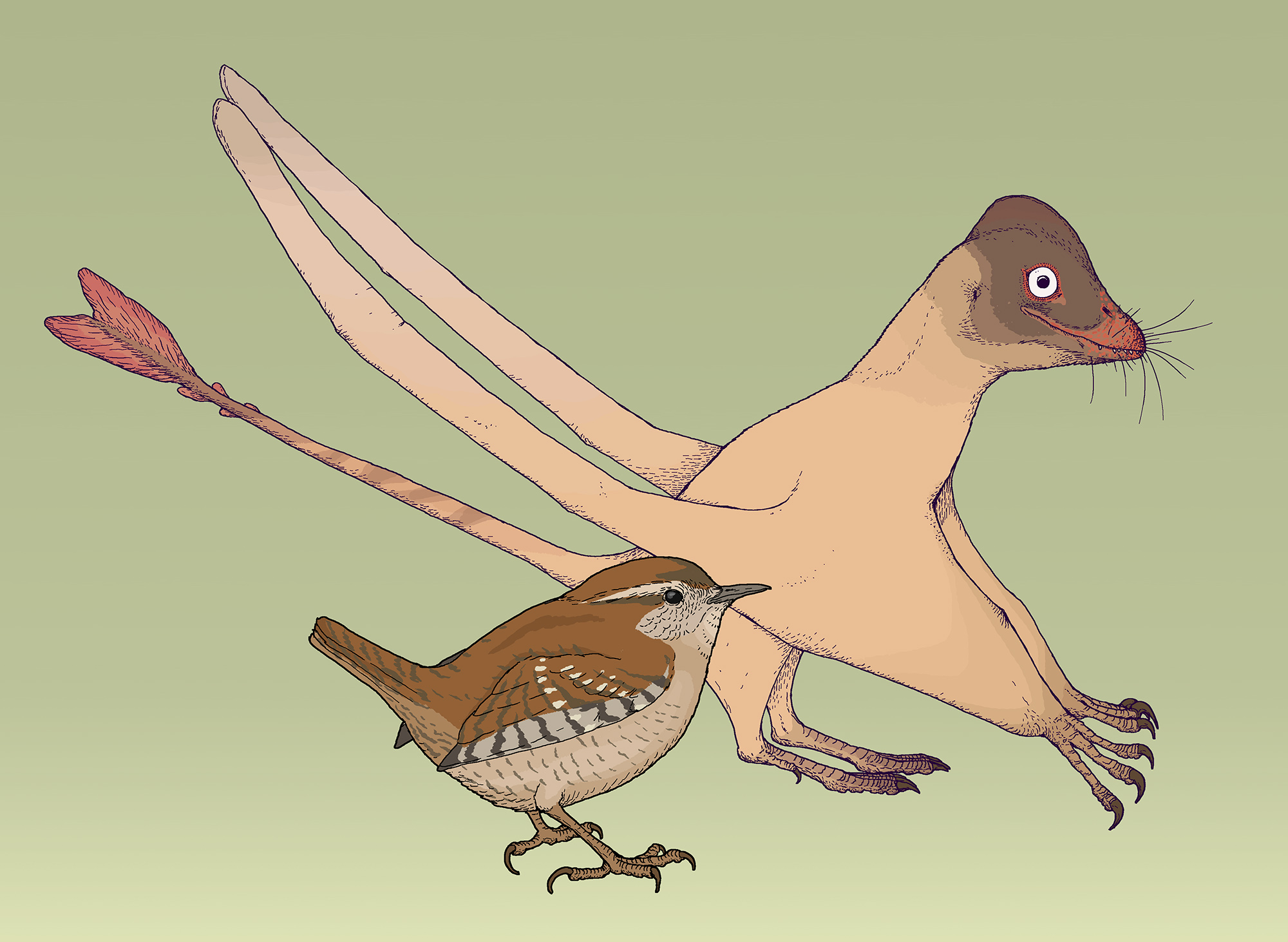
Measured drawing of the small Chinese pterosaur Qinglongopterus, a relative of the better-known Rhamphorhynchus. This flying reptile is known only from the fossil of a very small juvenile - not much larger than the Eurasian Wren, Troglodytes troglodytes living today.
***
Mosasaurs
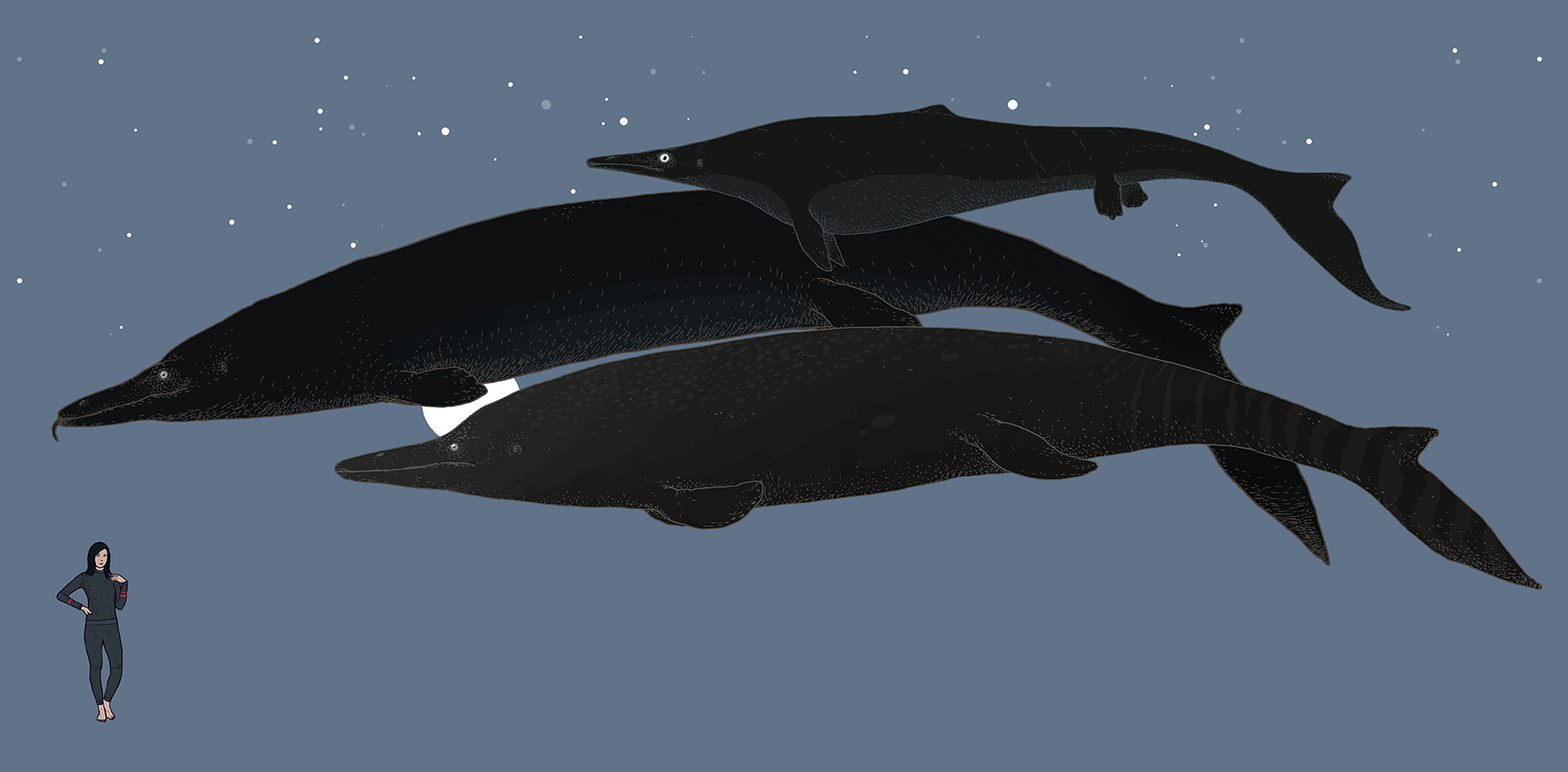
Mosasaurs were sea-dwelling relatives monitor lizards that lived at the time of the dinosaurs. Some of them grew to enormous sizes. I made measured drawings of three mosasaur species. From top to bottom, they are:
Plotosaurus, a marine-adapted species with a more fish-like body, from the Late Cretaceous of California,
Hainosaurus, a gigantic form, from the Late Cretaceous of Europe,
Tylosaurus, from the Late Cretaceous of the United States.
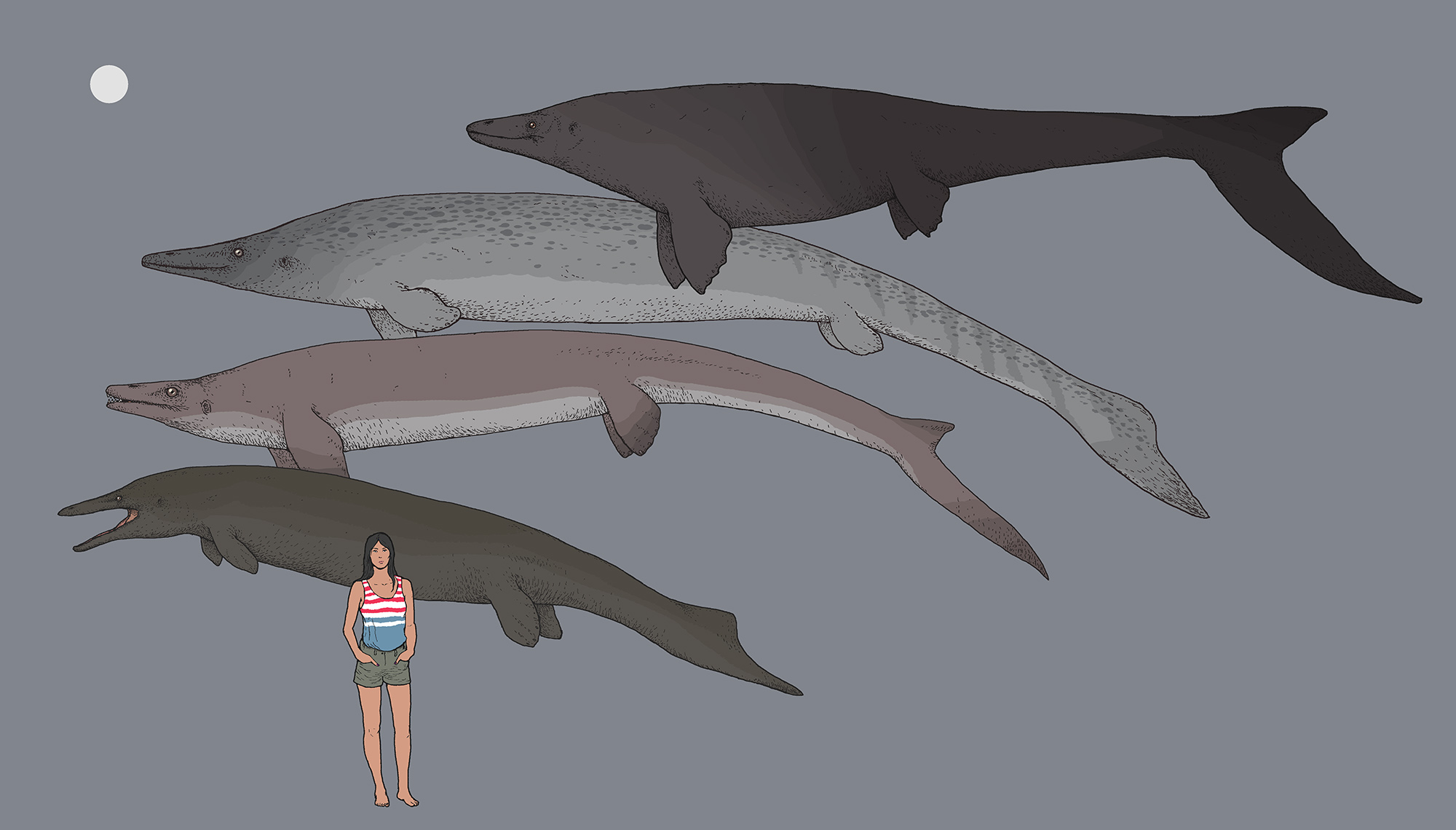
Medium-size mosasaurs, in comparison with a modern-day person. From top to bottom, they are:
Platecarpus, from the Late Cretaceous of the United States,
Clidastes, from the Late Cretaceous of the United States and Europe,
Plioplatecarpus, possibly a deep-diving hunter with large eyes, from the Late Cretaceous of the United States and Europe,
Halisaurus, a small-bodied form from the Late Cretaceous of the United States.
***
Yi qi and a magpie
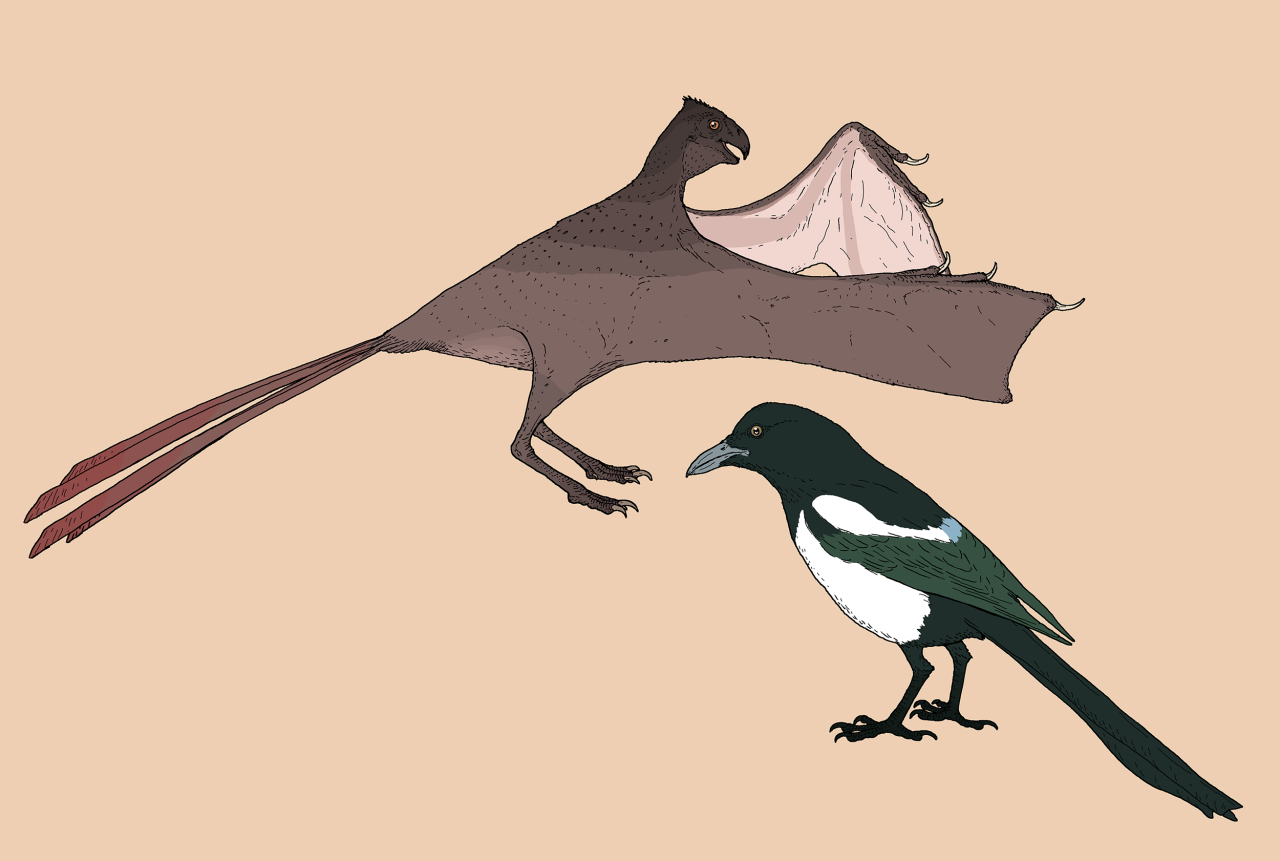
Comparative drawing of the “bat-winged” Yi qi, compared with a modern-day magpie, Pica pica.
***
False reconstructions of present-day animals
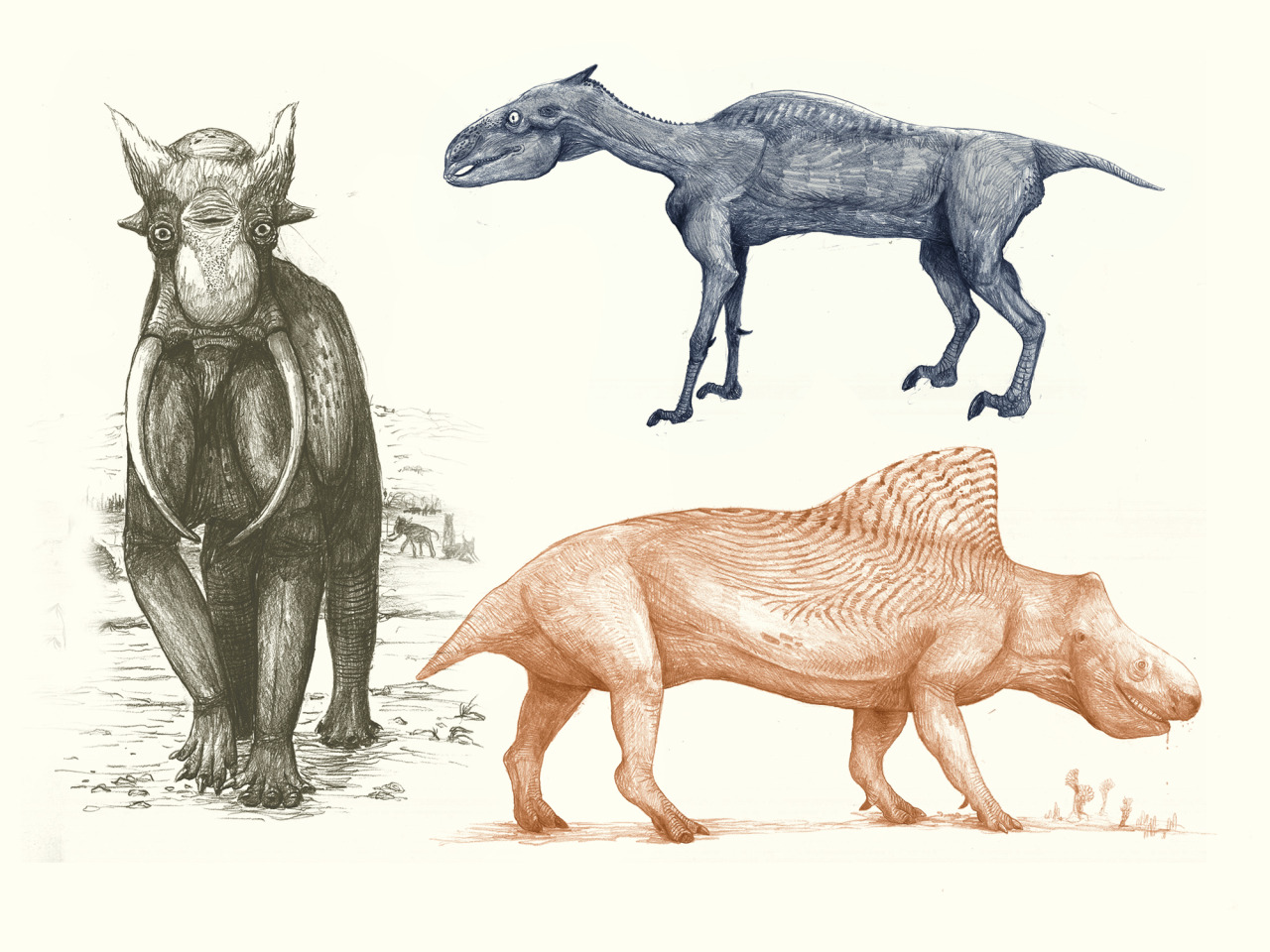
An elephant, a rhinoceros and a horse reconstructed with the mistakes we often see in reconstructions of dinosaurs and other extinct animals.
From my book, All Yesterdays, Unique and Speculative Views of Dinosaurs and Other Prehistoric Animals.
***
Spiders from Mars
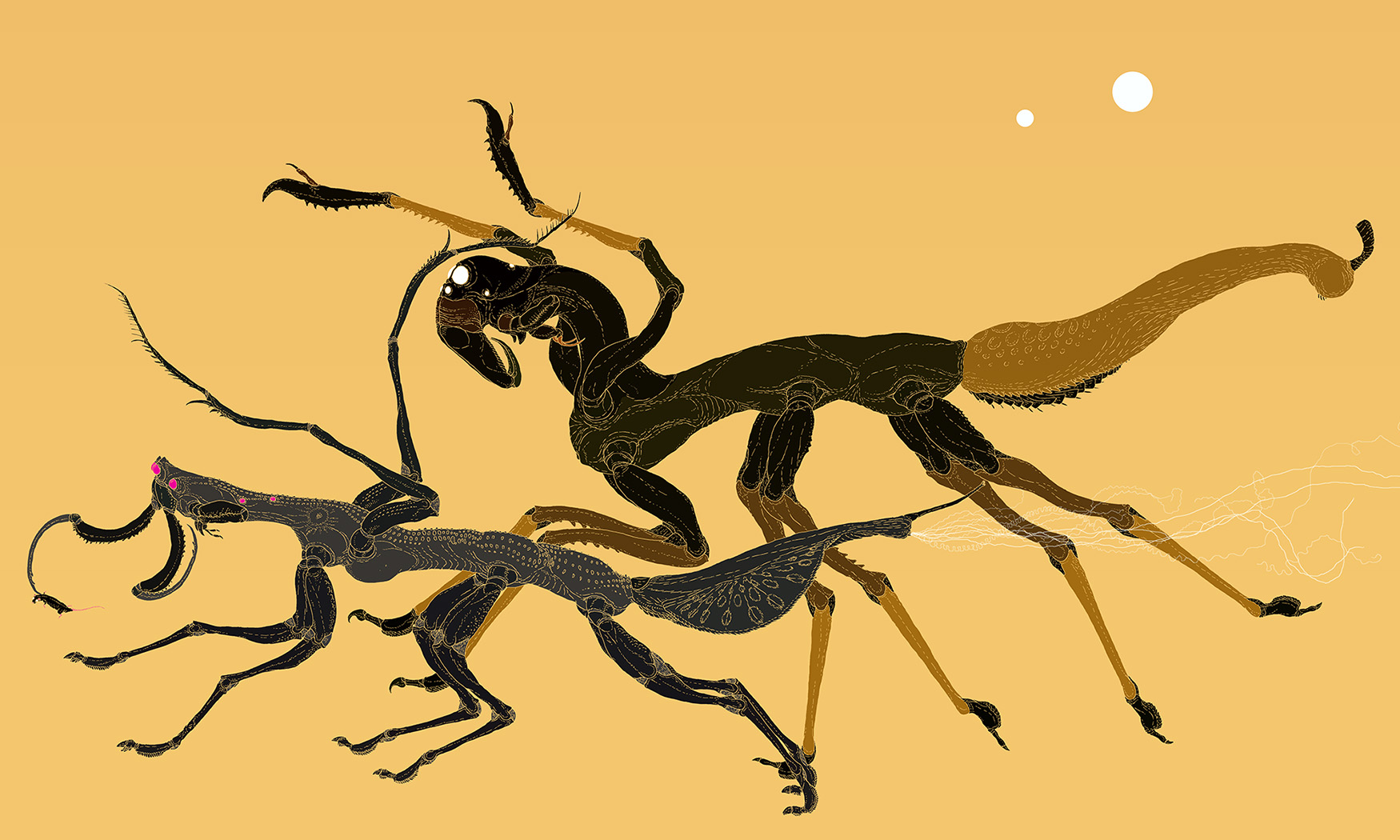
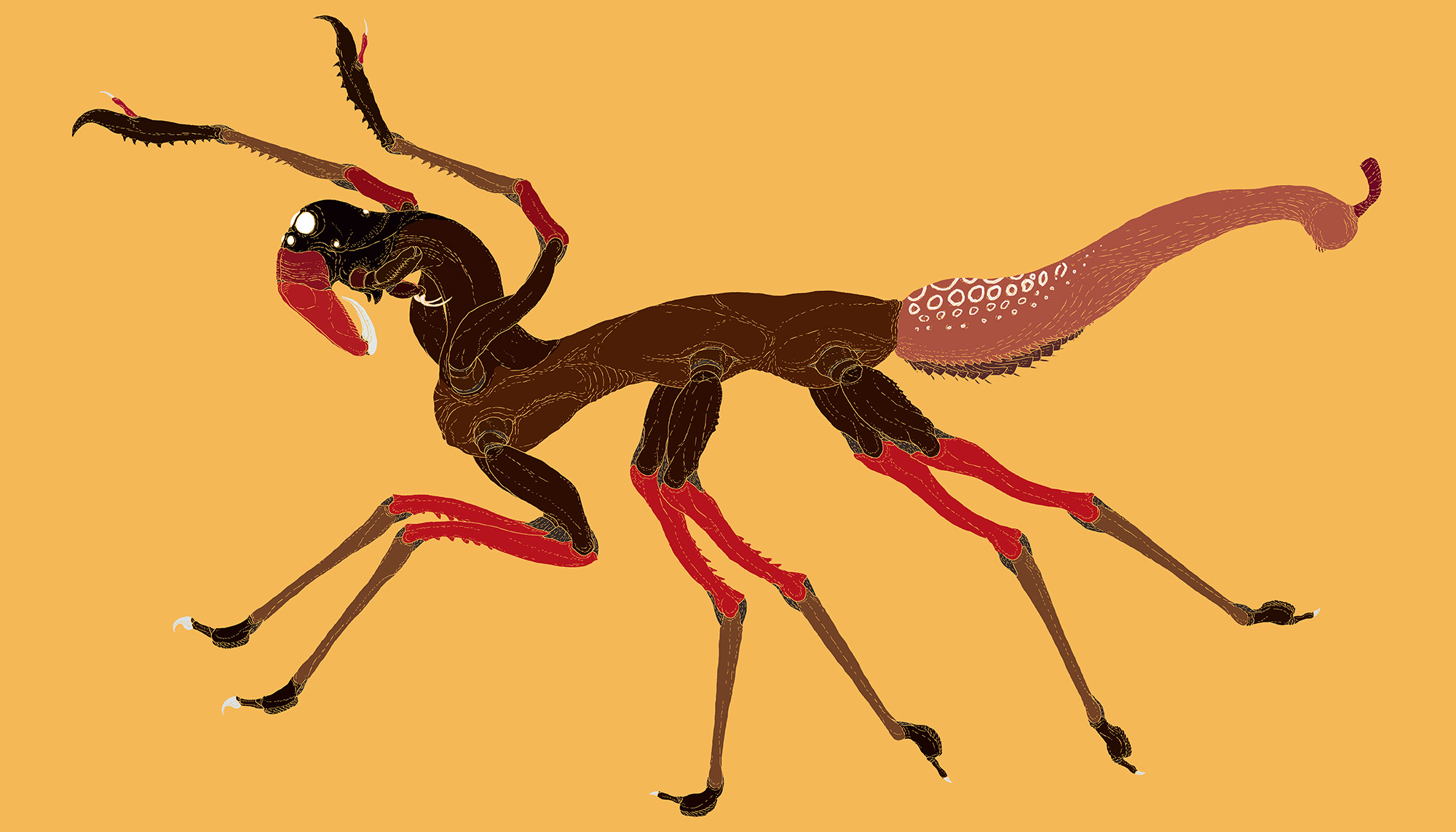
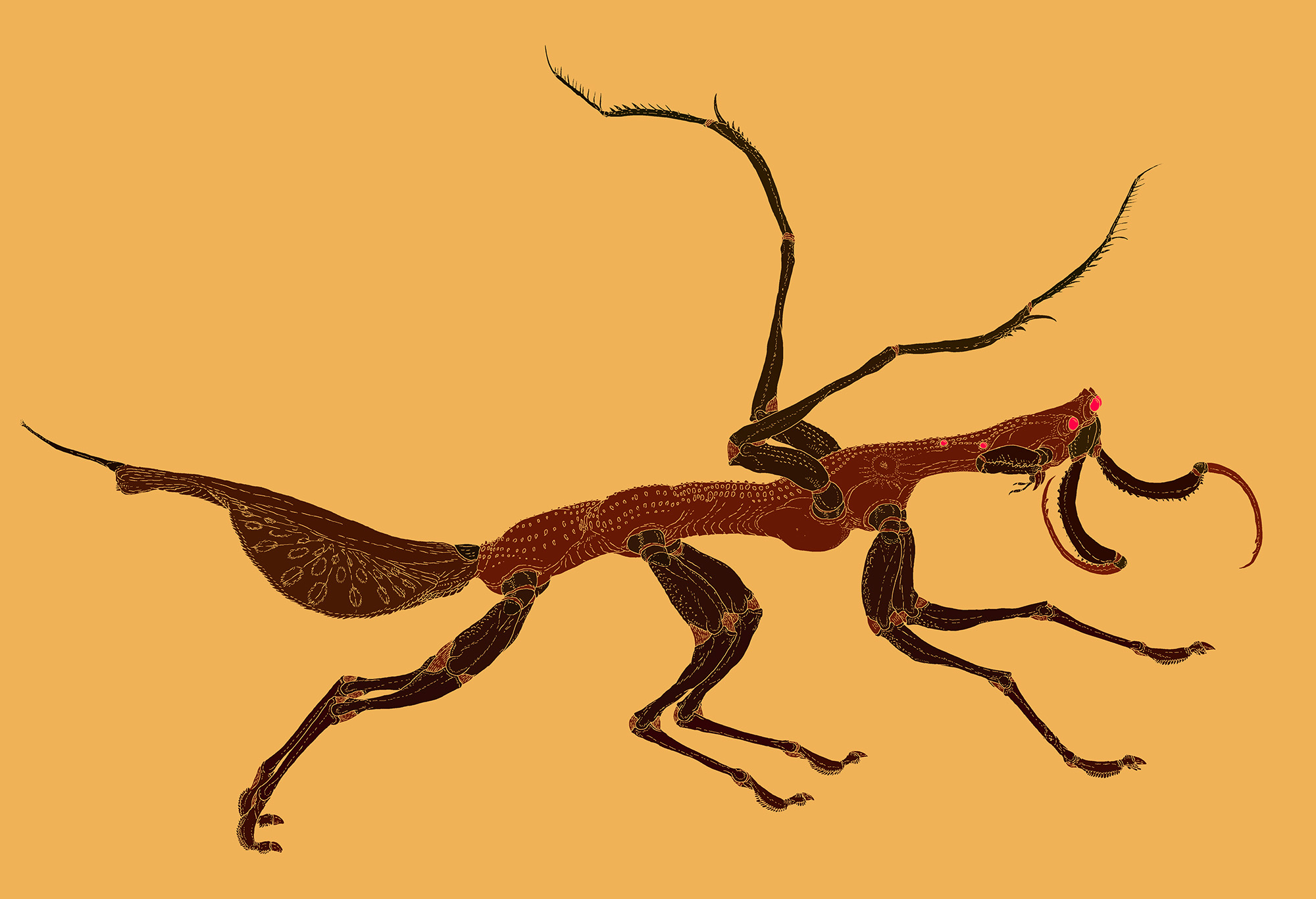
Hypothetical giant spiders that evolved after animals from Earth were transplanted to Mars, a planet with much lower gravity. A fun experiment with stretching and enlarging the arachnid body-plan.
***
Plateosaurus, large and small
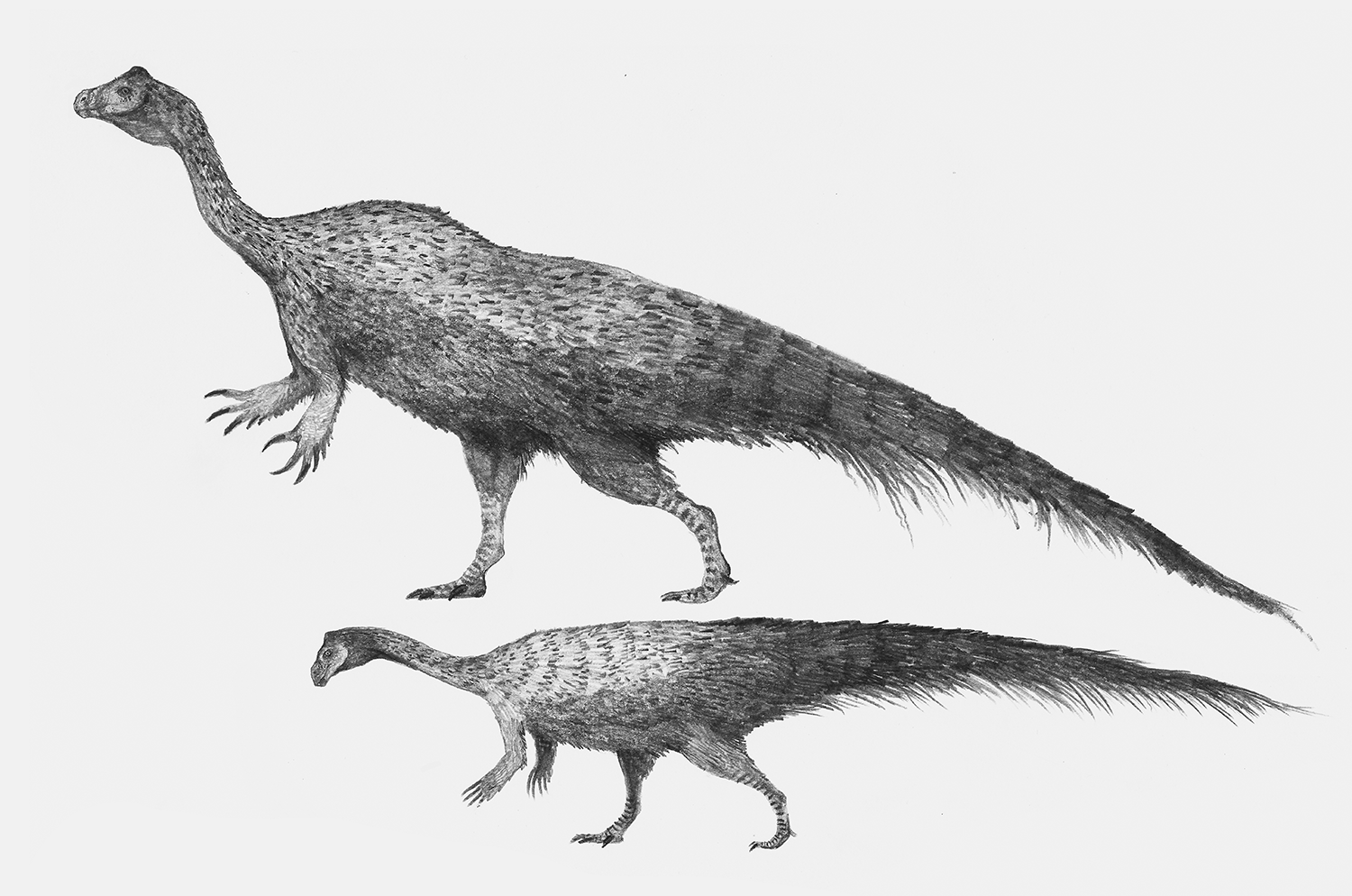
Scaled pencil drawings of large and small forms of Plateosaurus. This early plant-eating dinosaur exhibited a large variety in body size.
***
Massospondylus
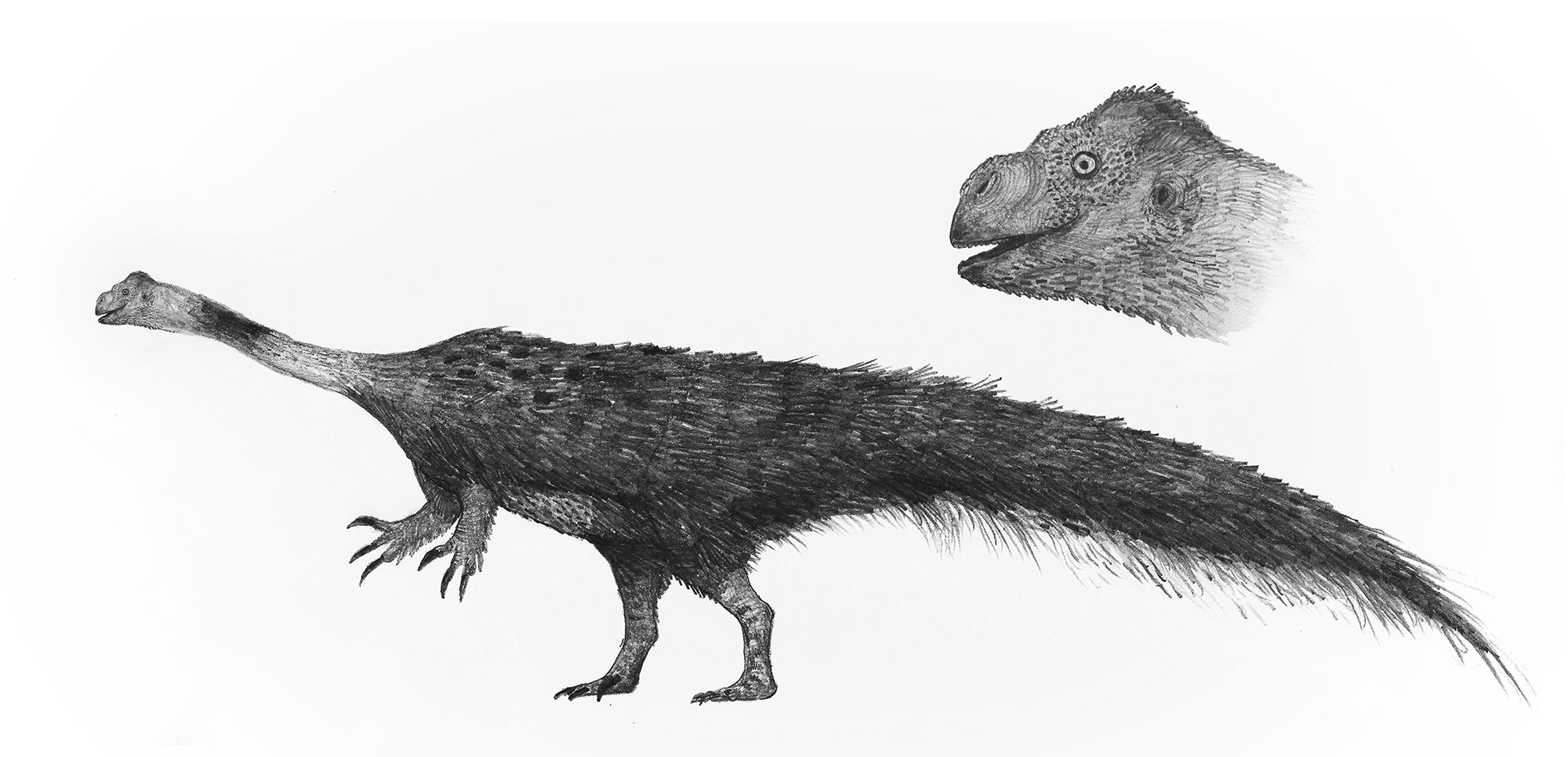
A pencil study of Massospondylus, probably one of the silliest-looking dinosaurs.
***
Atlasaurus
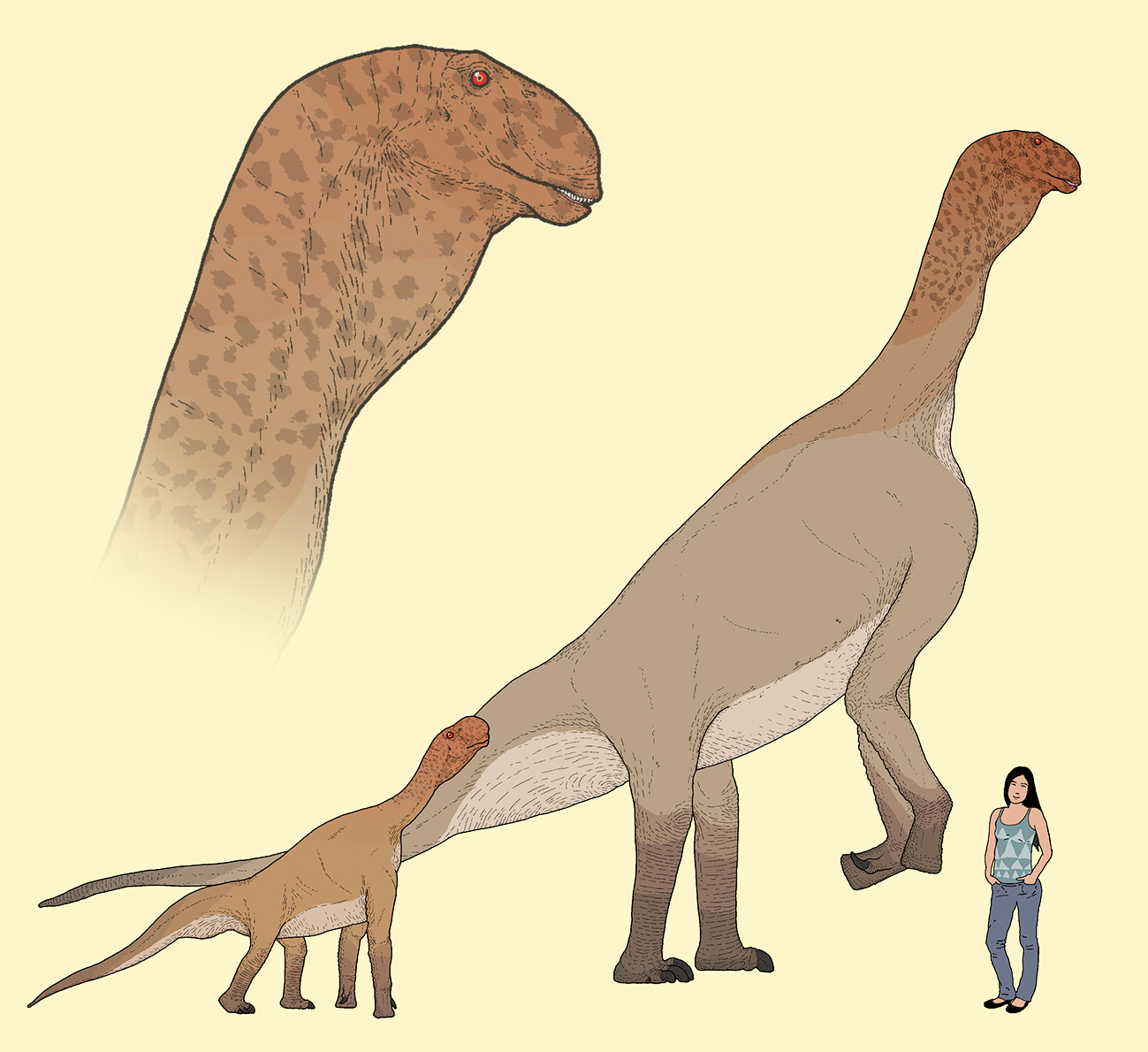
Adult and juvenile Atlasaurus dinosaurs in scale with a modern-day person. This species of plant-eating dinosaur had some of the oddest leg and neck proportions in its lineage.
***
Zalmoxes in speculative integument
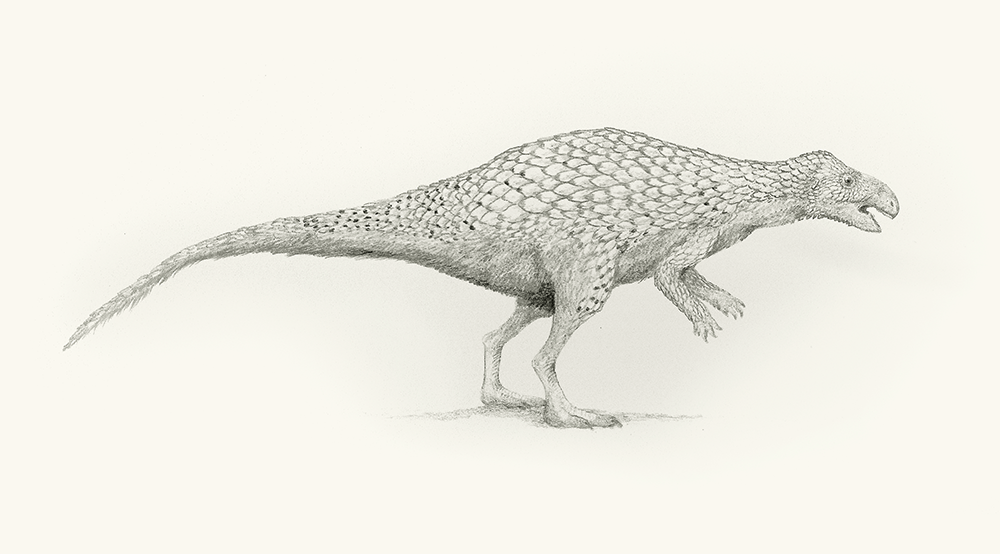
The herbivorous dinosaur Zalmoxes, restored speculatively with a covering of thick, pangolin-like scales interspersed with feathery filaments. Dinosaurs had a very diverse spectrum of bodily integument. I will not be surprised if such a “pangolin dinosaur” is discovered in the near future.
***
Limusaurus couple
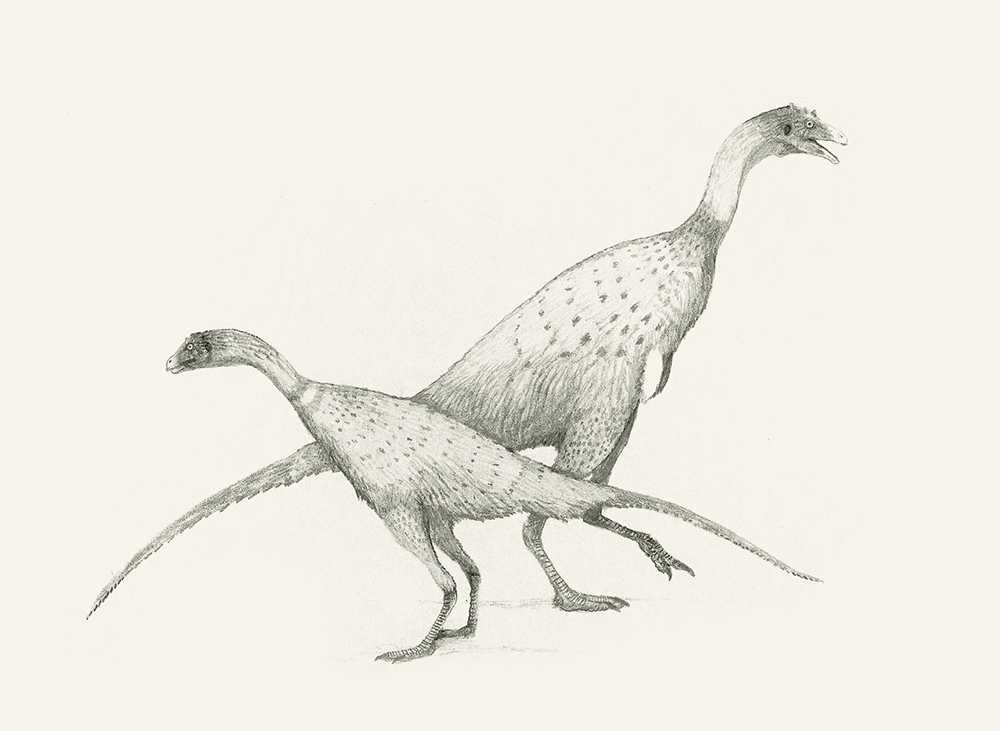
Illustration of male and female Limusaurus dinosaurs. Limusaurus was an unusual, vaguely bird-like form related to the predatory Carnotaurus.
***
Tanystropheus in trouble
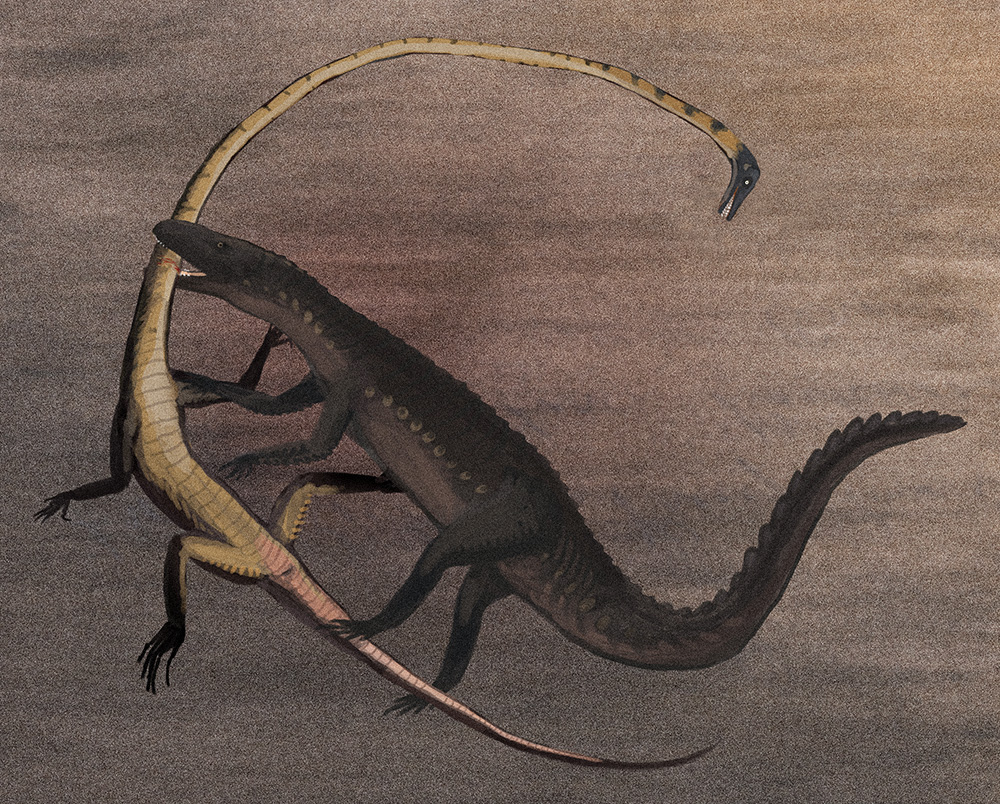
The crocodile-like archosaur Ticinosuchus attacking a long-necked Tanystropheus.
***
Alien encounters
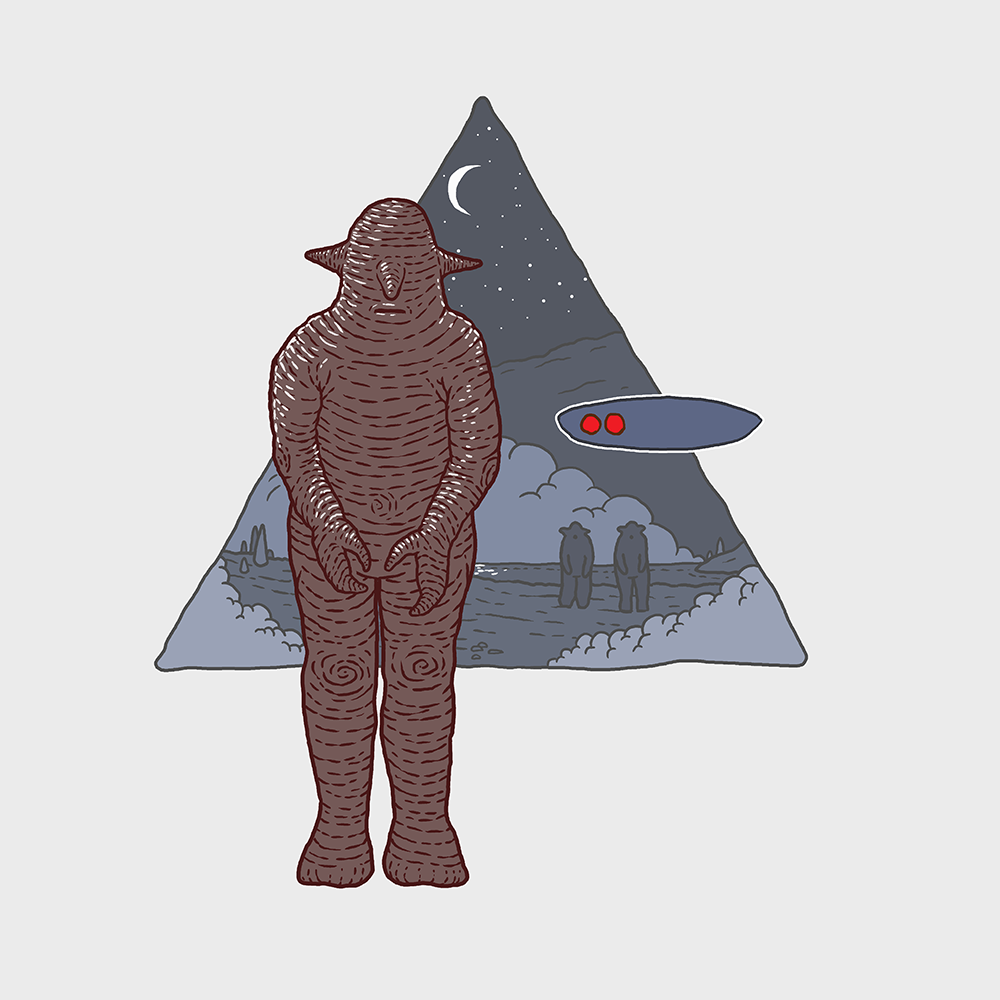
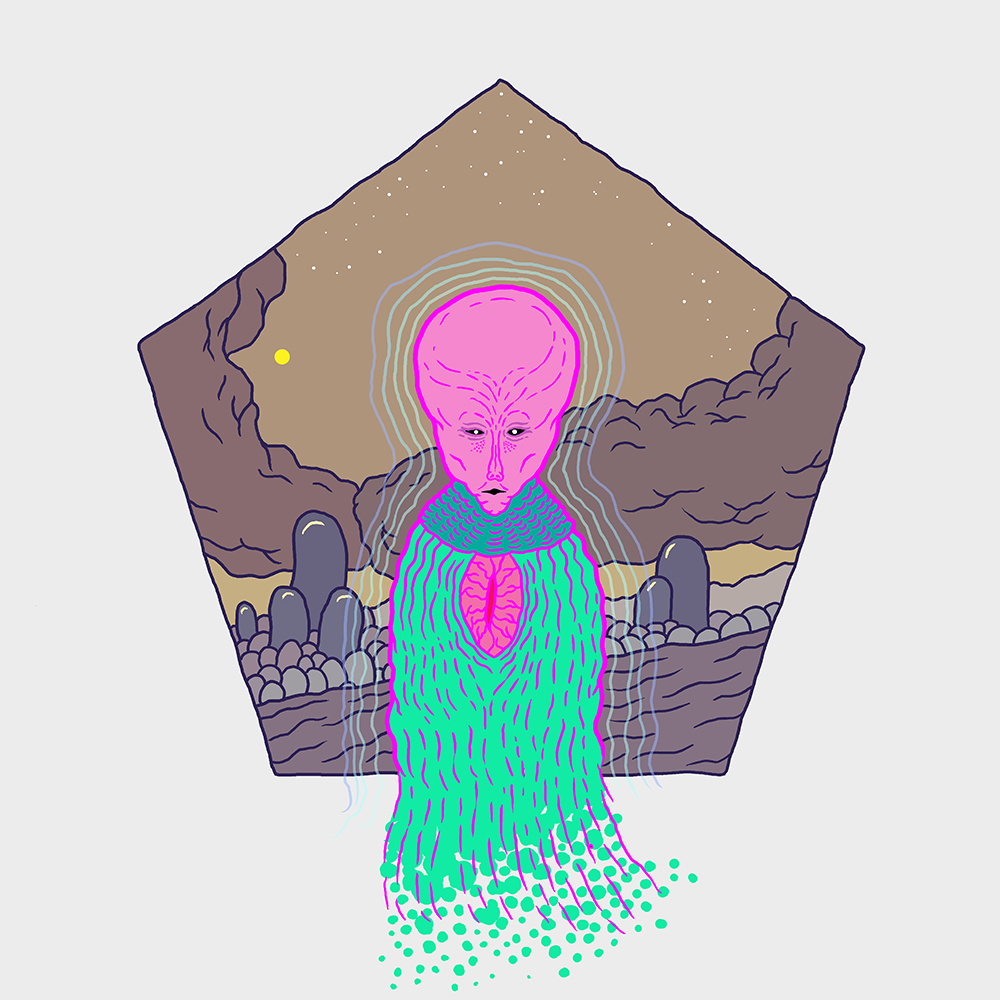
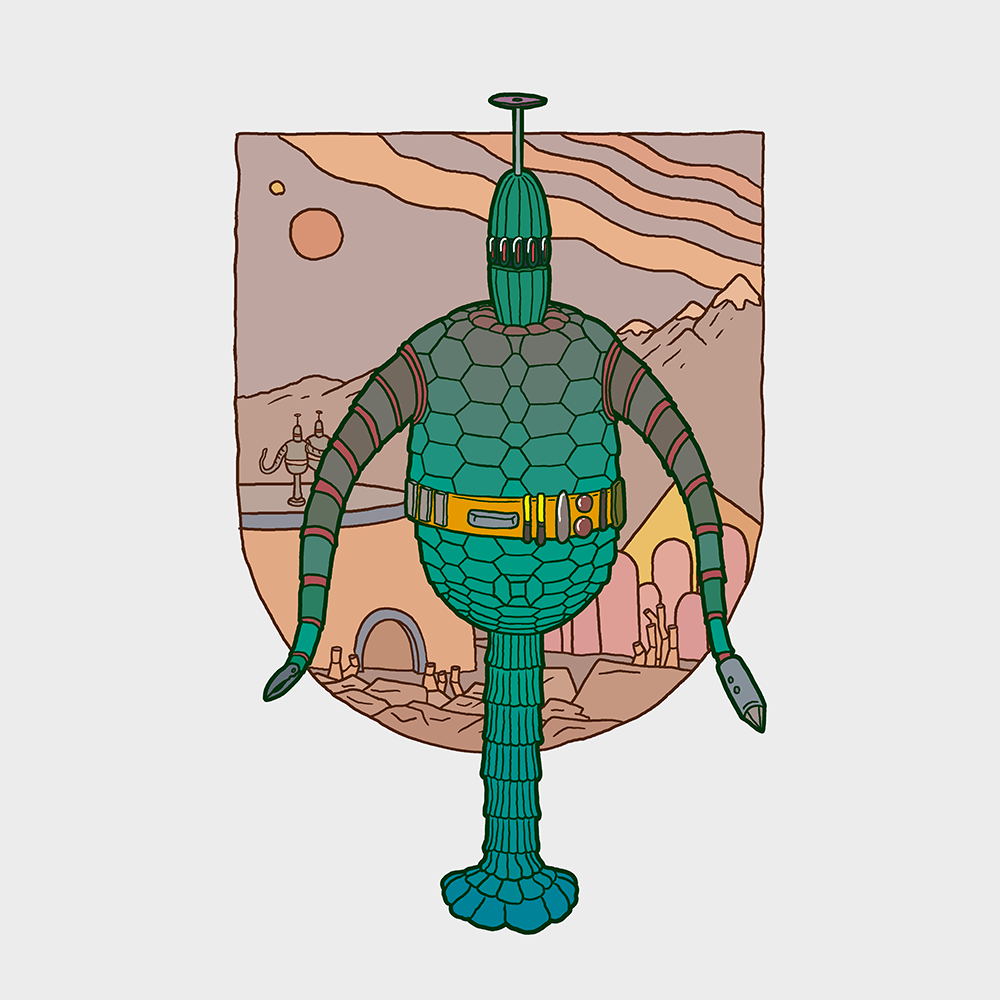
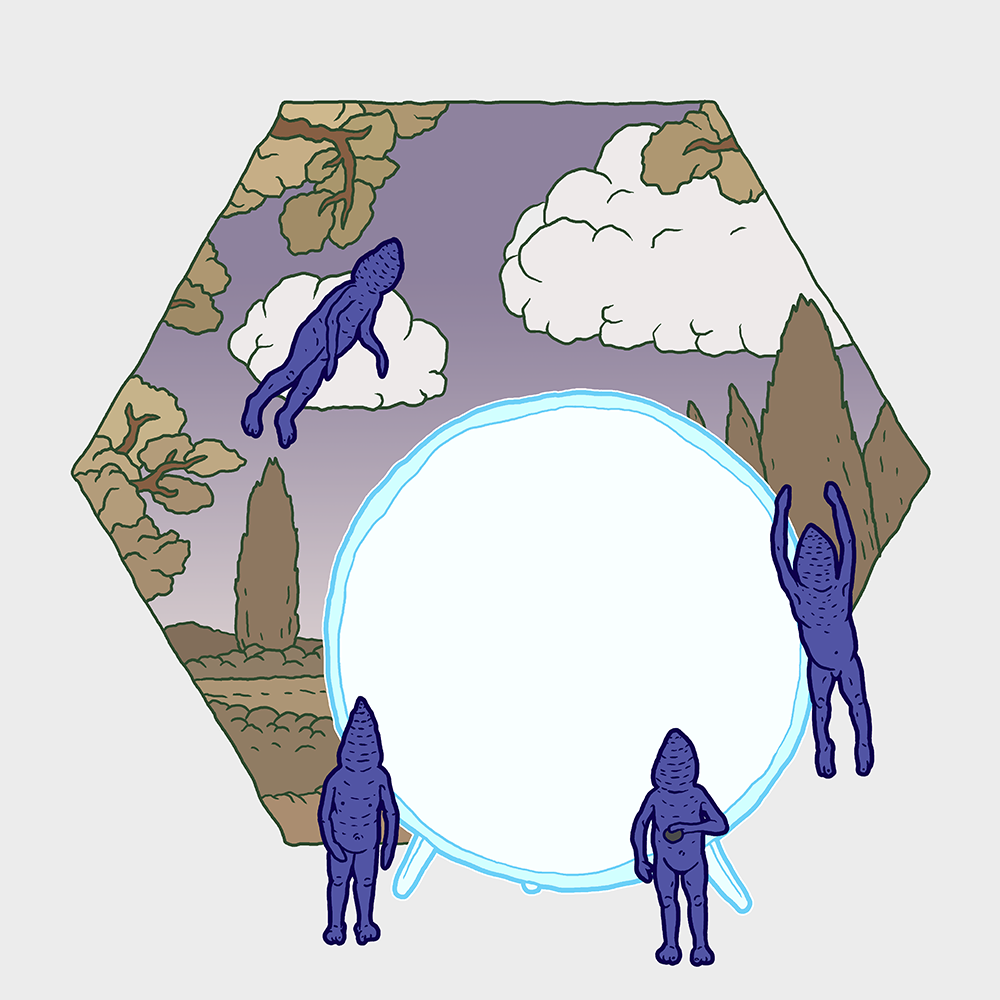
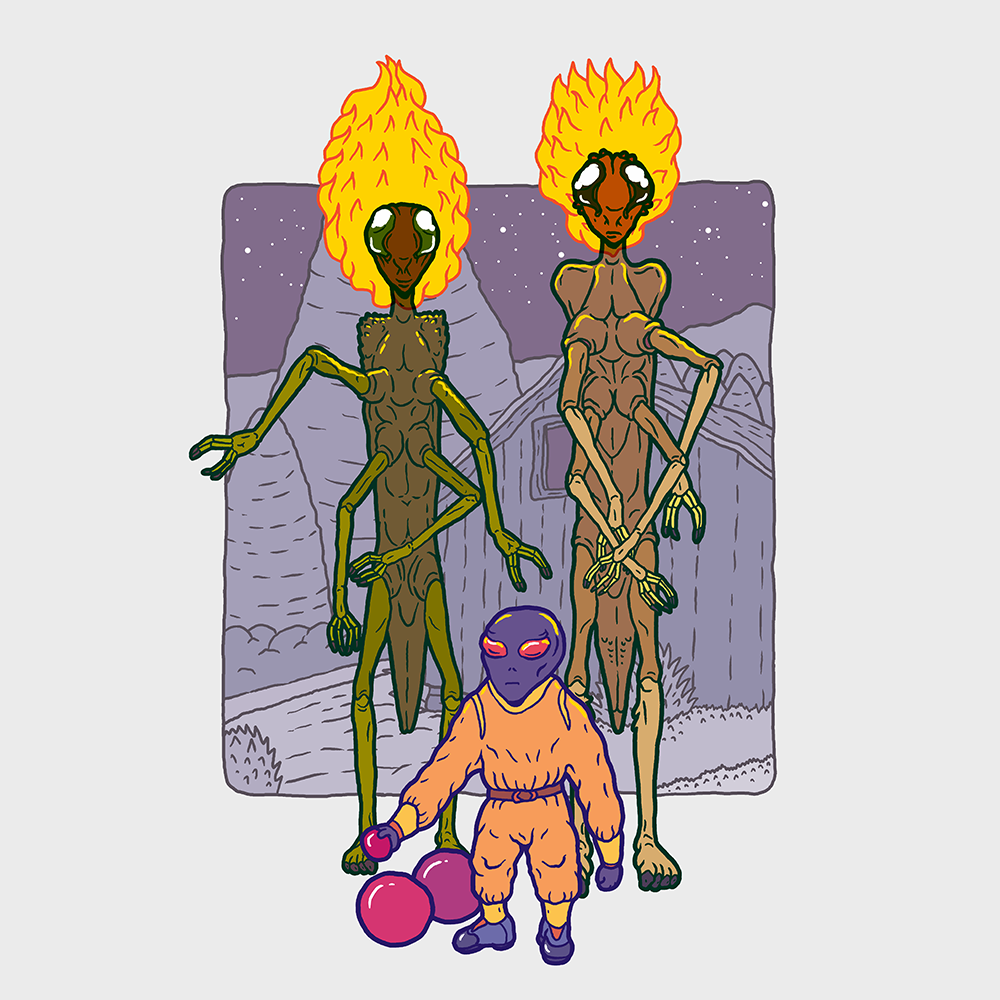
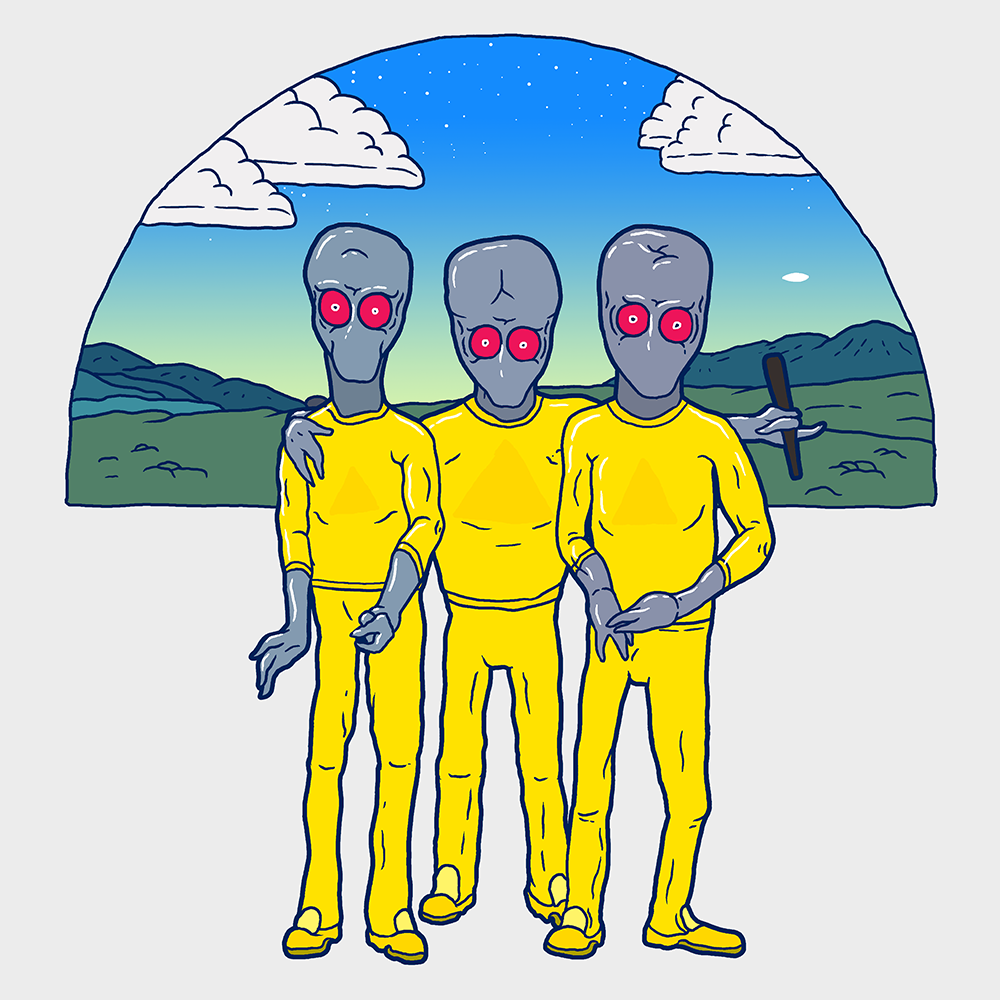
Six colourful illustrations of entities reported in classic encounters from UFO folklore. Can you guess which is which?
***
Chunky Polycotylus
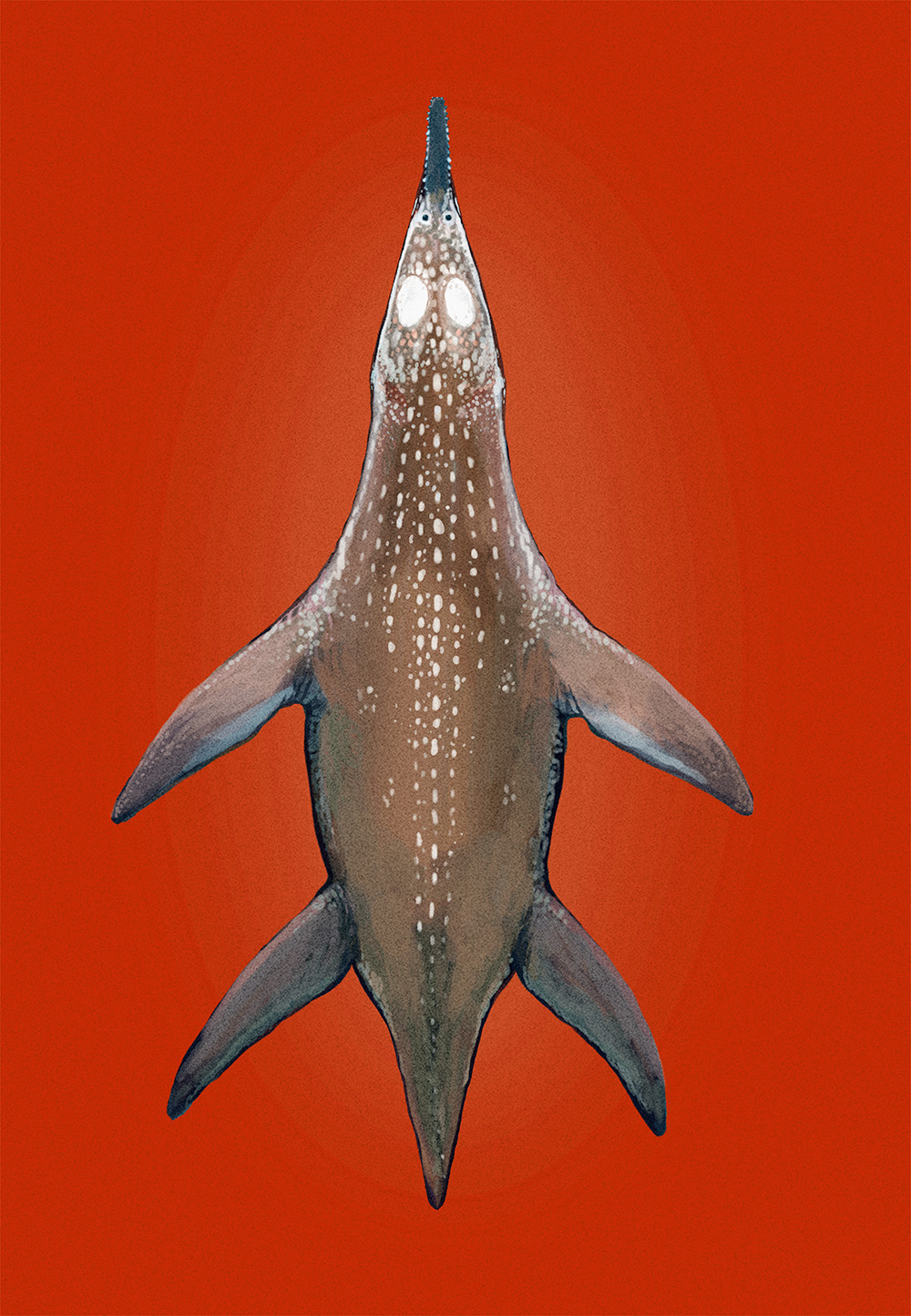
The swimming reptile Polycotylus, viewed from the top. New discoveries indicate these prehistoric marine reptiles were quite chunky - more like seals and walruses than snakes or crocodiles. Polycotylus was a distant relative of the enormous Kronosaurus.
***
Insect succubus
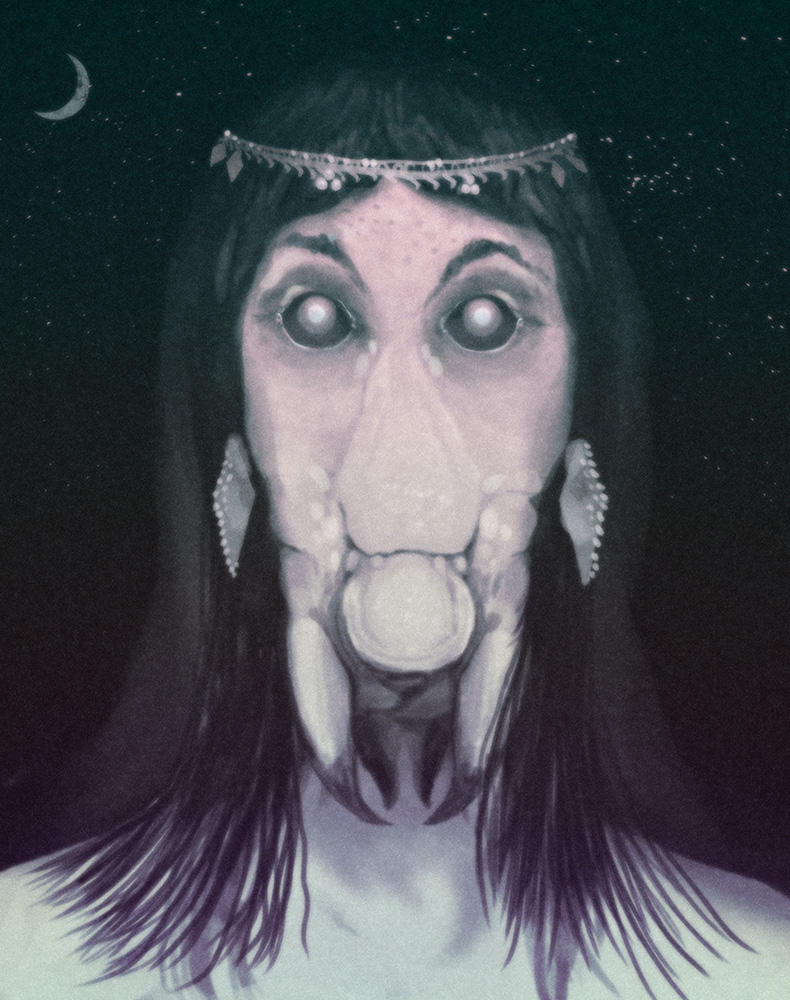
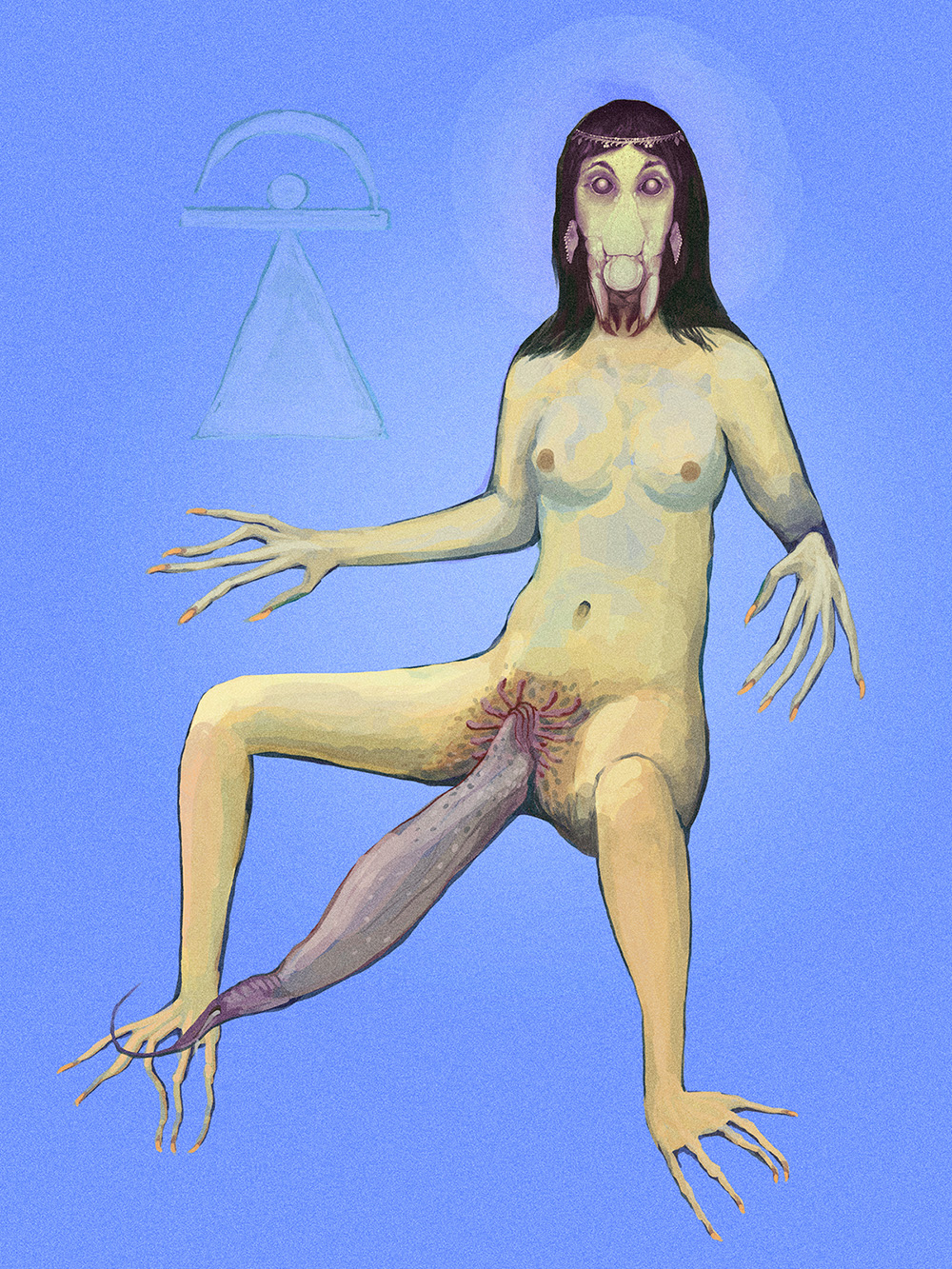
Fantastic illustration of a lustful succubus with the face of an insect.
***
An Infernocyon from Snaiad
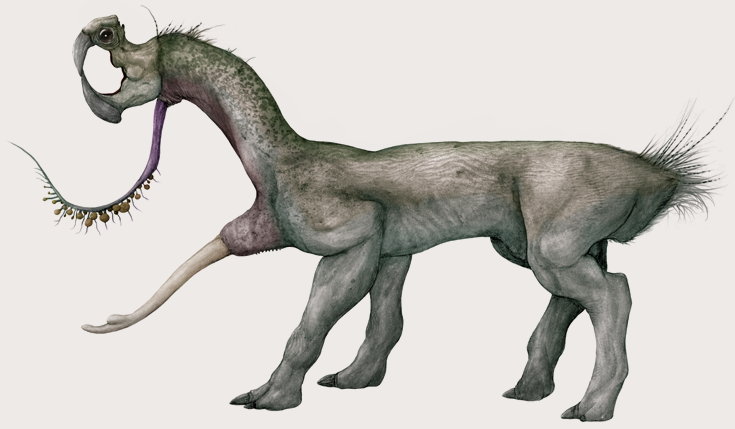
An Infernocyon, a nocturnal predator of small animals from the planet Snaiad; my world-building and speculative zoology project. You can visit Snaiad through this link.
***
Dimetrodon
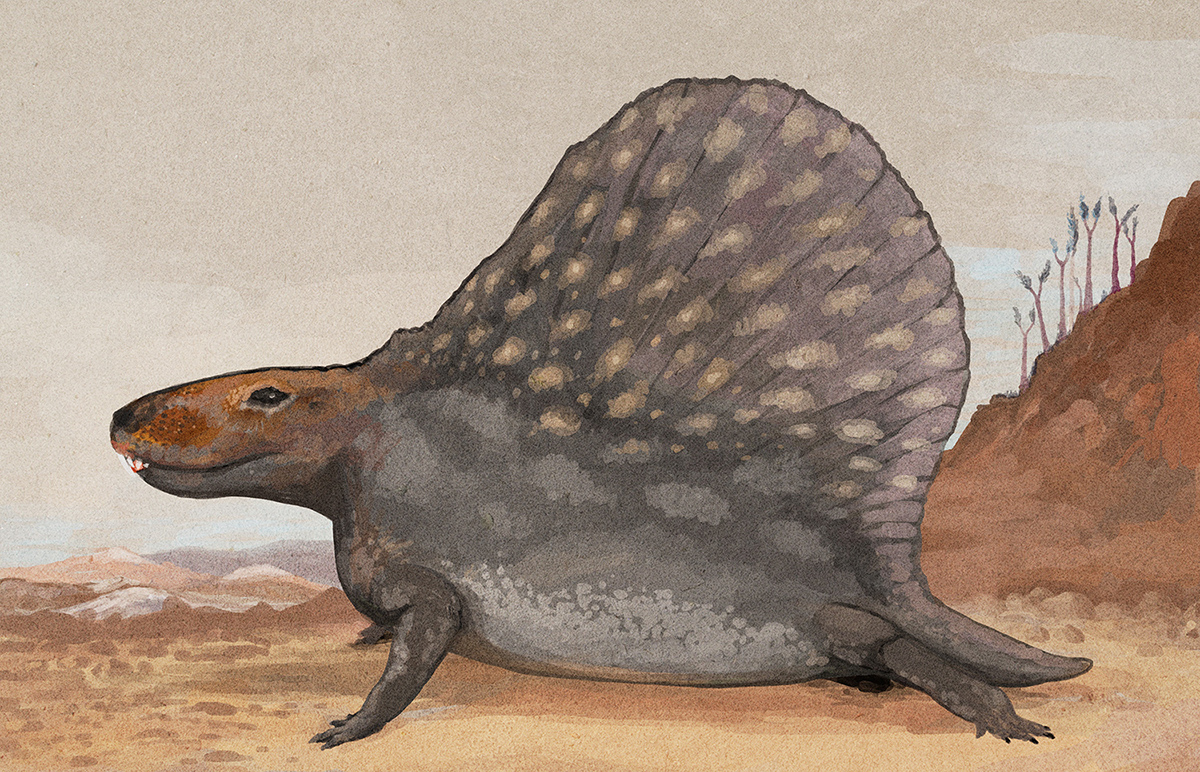
A short-tailed form of the popular sail-backed repto-mammal Dimetrodon. The background on this image is inaccurate. These animals mostly inhabited swamps and jungles.
***
Diplodocus

A bull Diplodocus briefly walks on two legs while on a beachside excursion, as his kind often does.
***
The Visitor
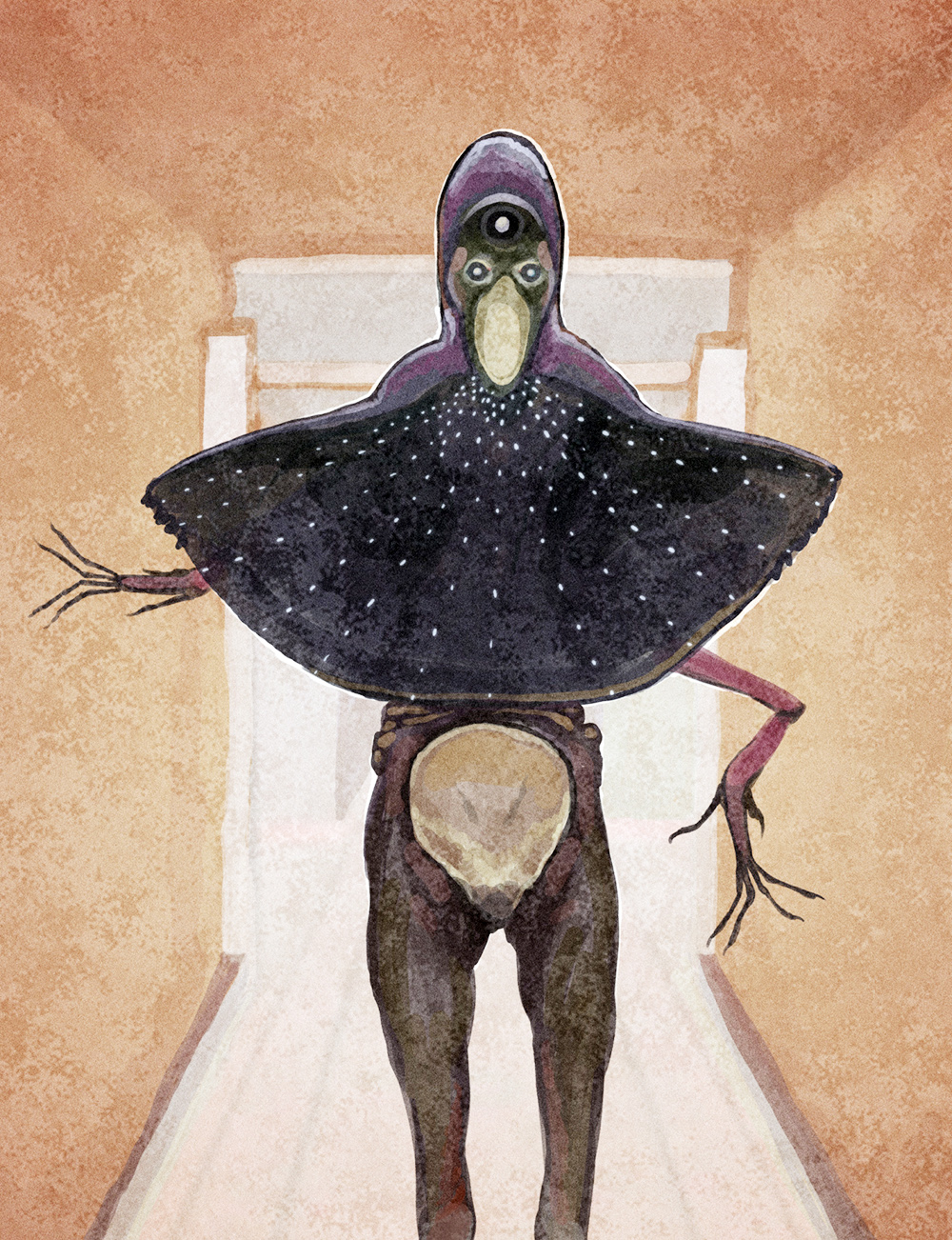
Imagine a knock at your motel room door at the dead of the night. The Visitor is standing there to take you, accompanied by a buzzing noise like a million metallic bees.
***
A Ceratosaurus compilation
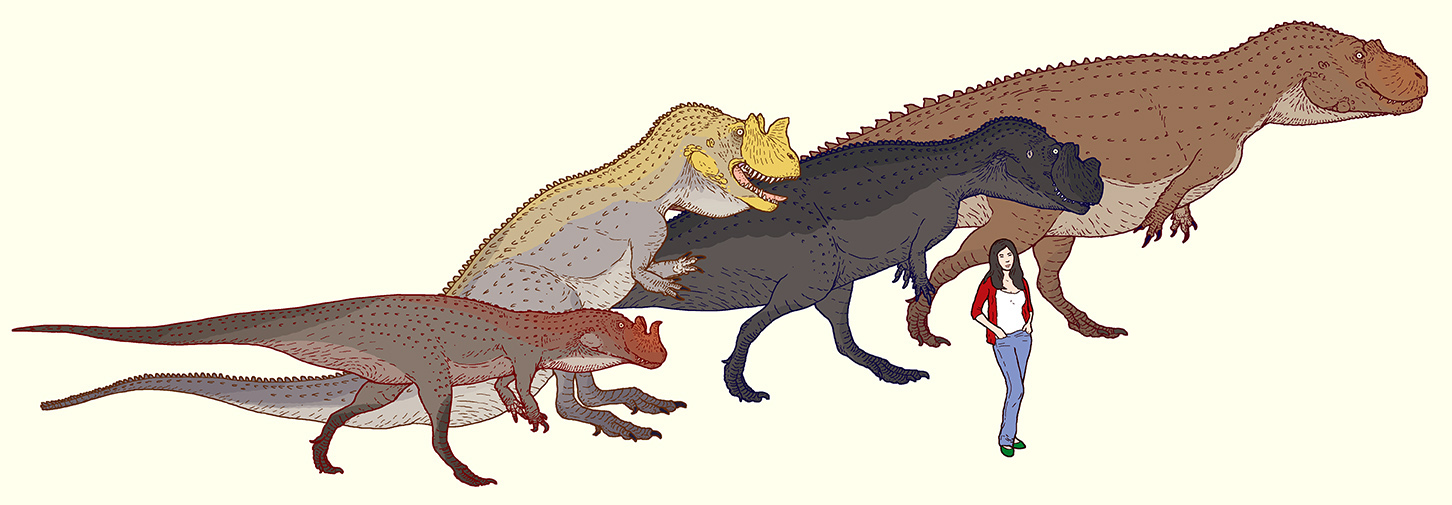
Various species of Ceratosaurus in scale with a human being. From the right to left, C. dentisculatus, C. nasicornis, C. magnicornis, and a juvenile specimen.
***
Nanuqsaurus and Albertosaurus
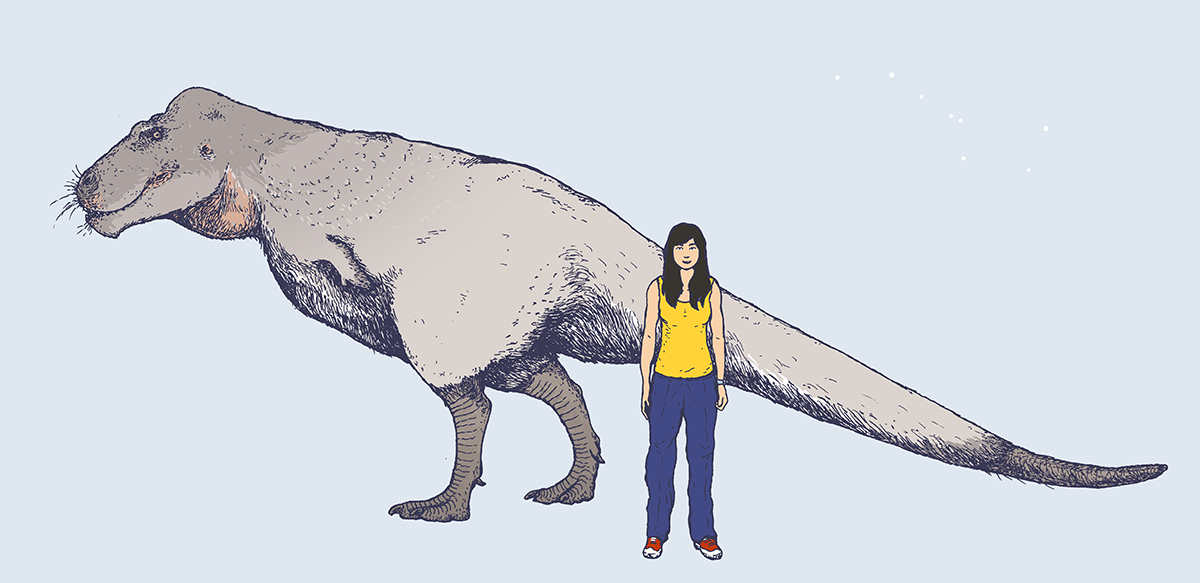
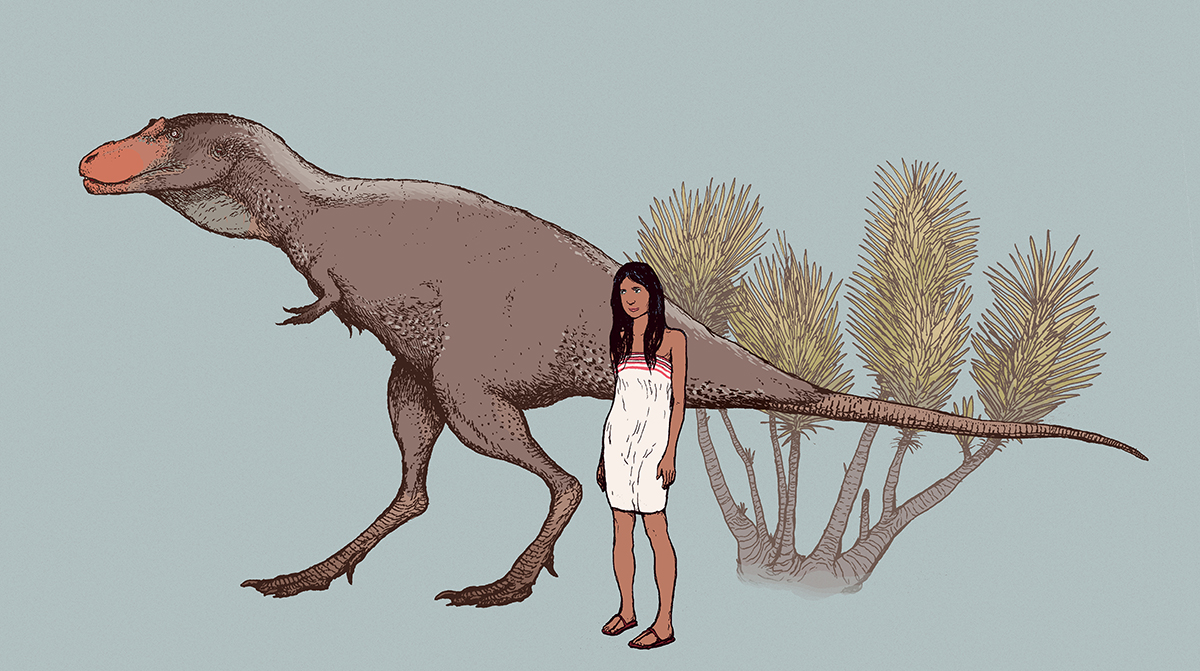
Scaled drawings of two kinds of tyrannosaur dinosaurs; the polar Nanuqsaurus (above); and the fast-running Albertosaurus (below).
***
Pterodactylus
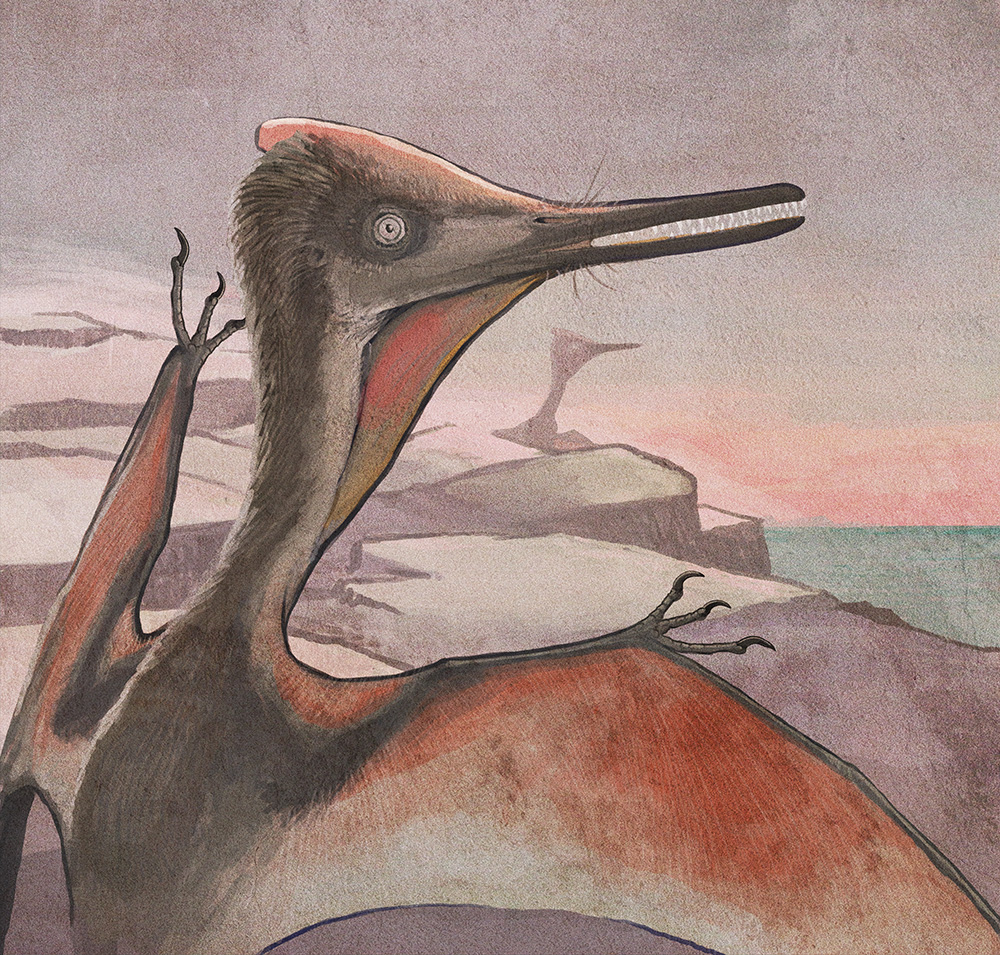
A fledgeling Pterodactylus flapping about.
***
A Moganopterus couple
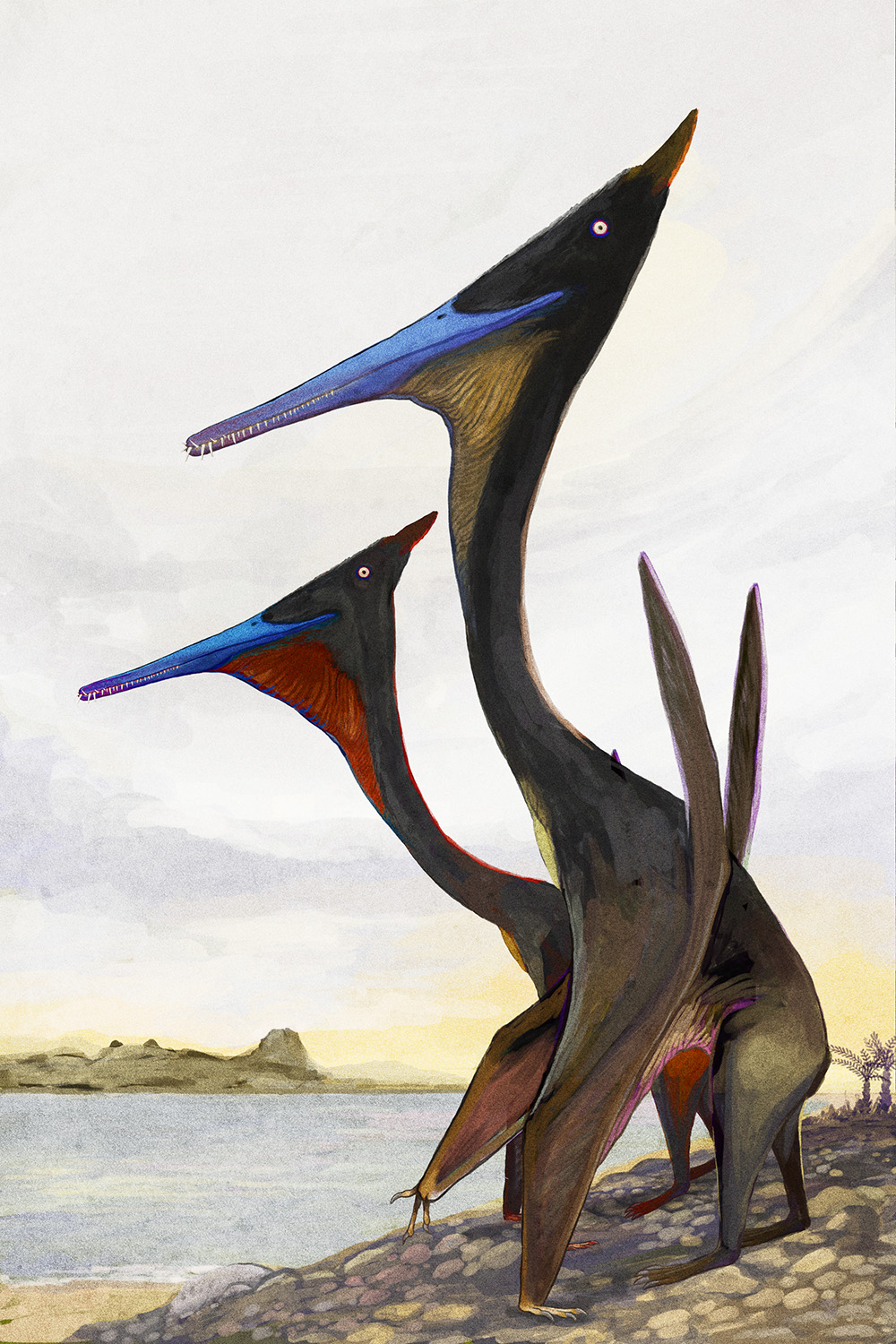
Two lanky Moganopterus pterosaurs strolling on an ancient seashore. Moganopterus was one of the largest species of toothed pterosaurs.
***
Darwinopterus
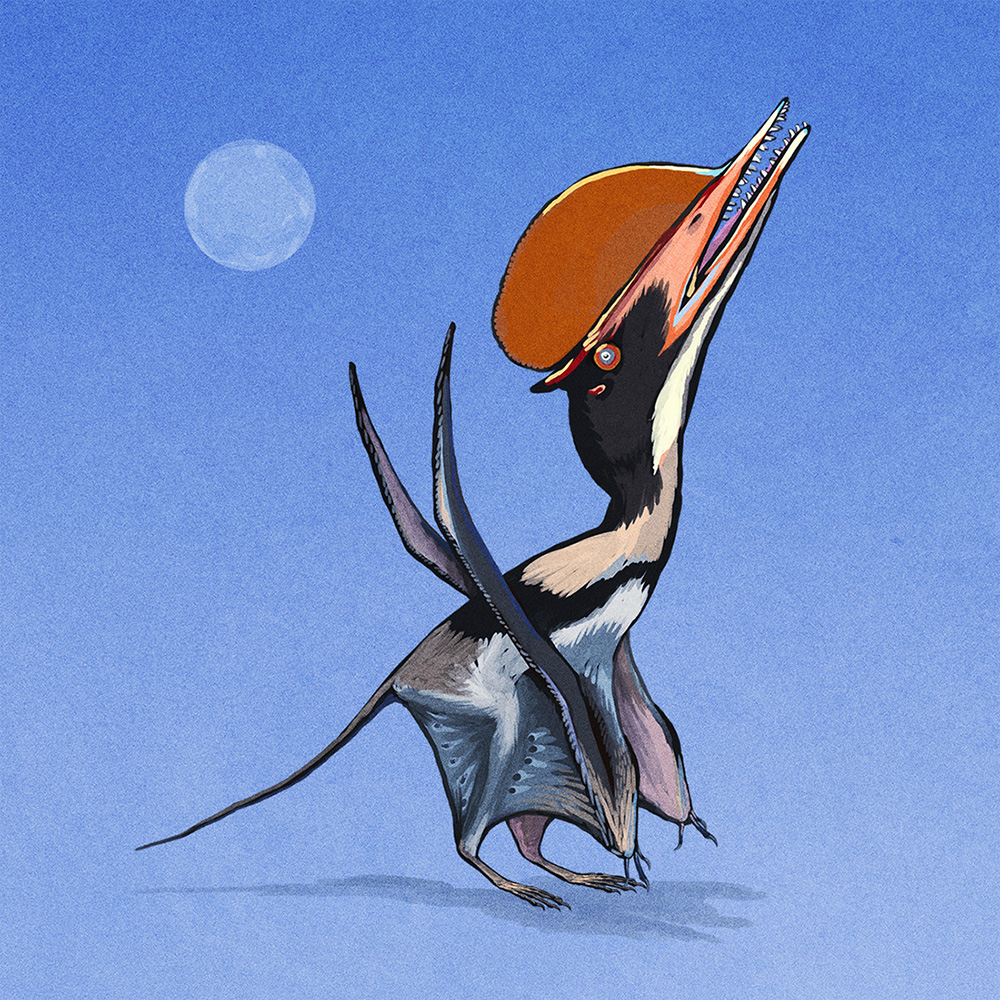
The transitional-form pterosaur, Darwinopterus modularis, flashes its red crest for a potential mate.
***
Two species of Torvosaurus
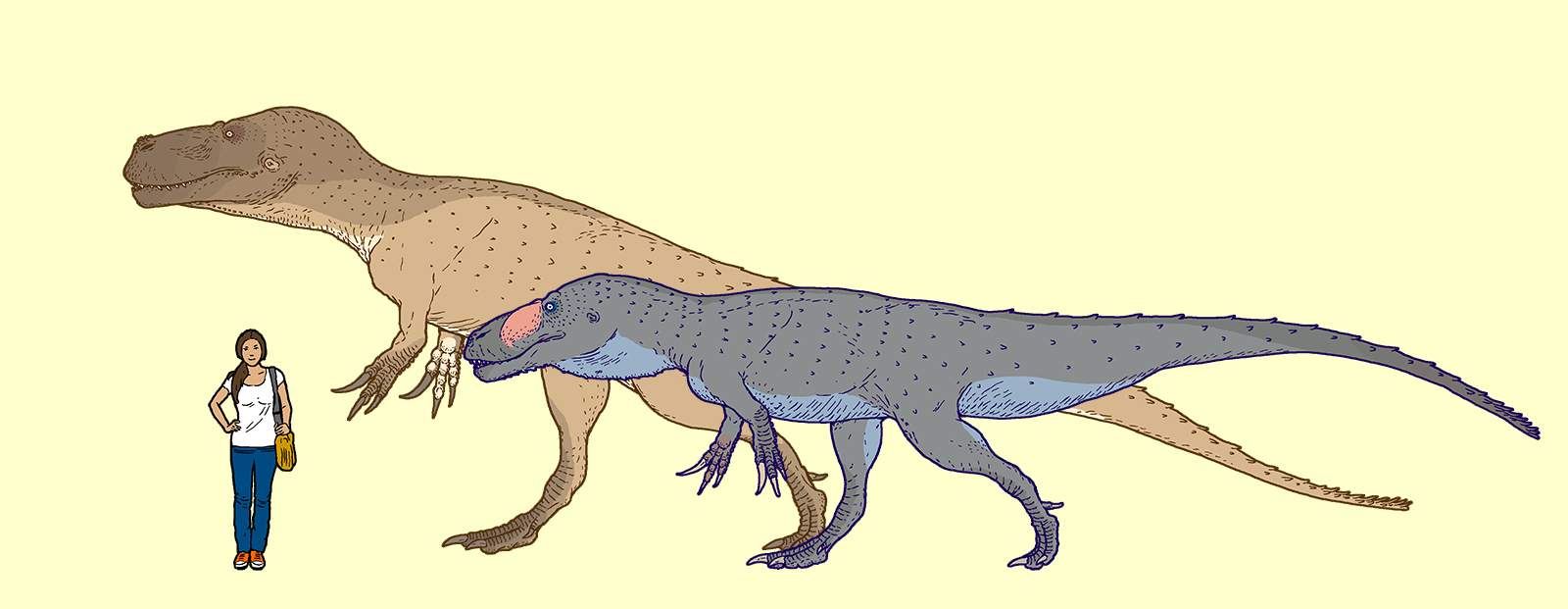
Torvosaurus gurneyi, one of the largest meat-eating dinosaurs known from Europe; in scale with Torvosaurus tanneri, its American relative; and a present-day human.
***
Giganotosaurus
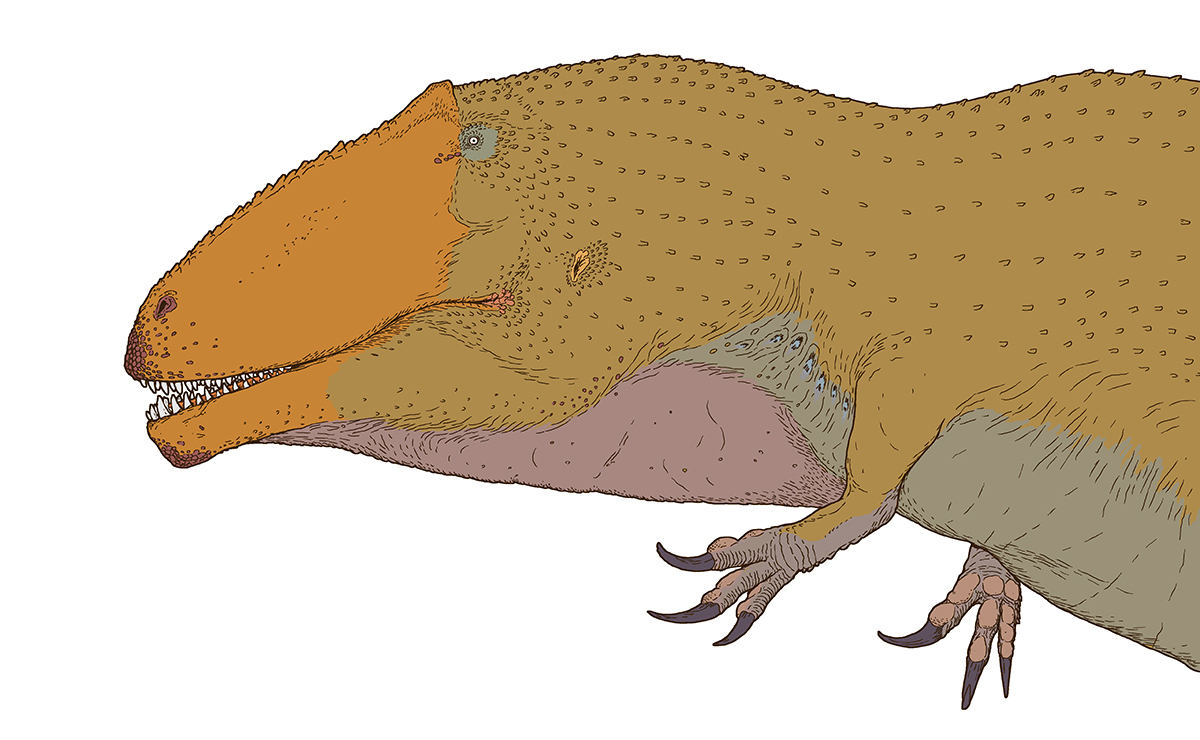
The giant meat-eating dinosaur, Giganotosaurus, here restored with a throat sac. This animal had tiny arms that terminated in hook-like claws. Perhaps it used them like mouthparts, to manipulate food items.
***
Massospondylus and the ruins of the Ancient Ones
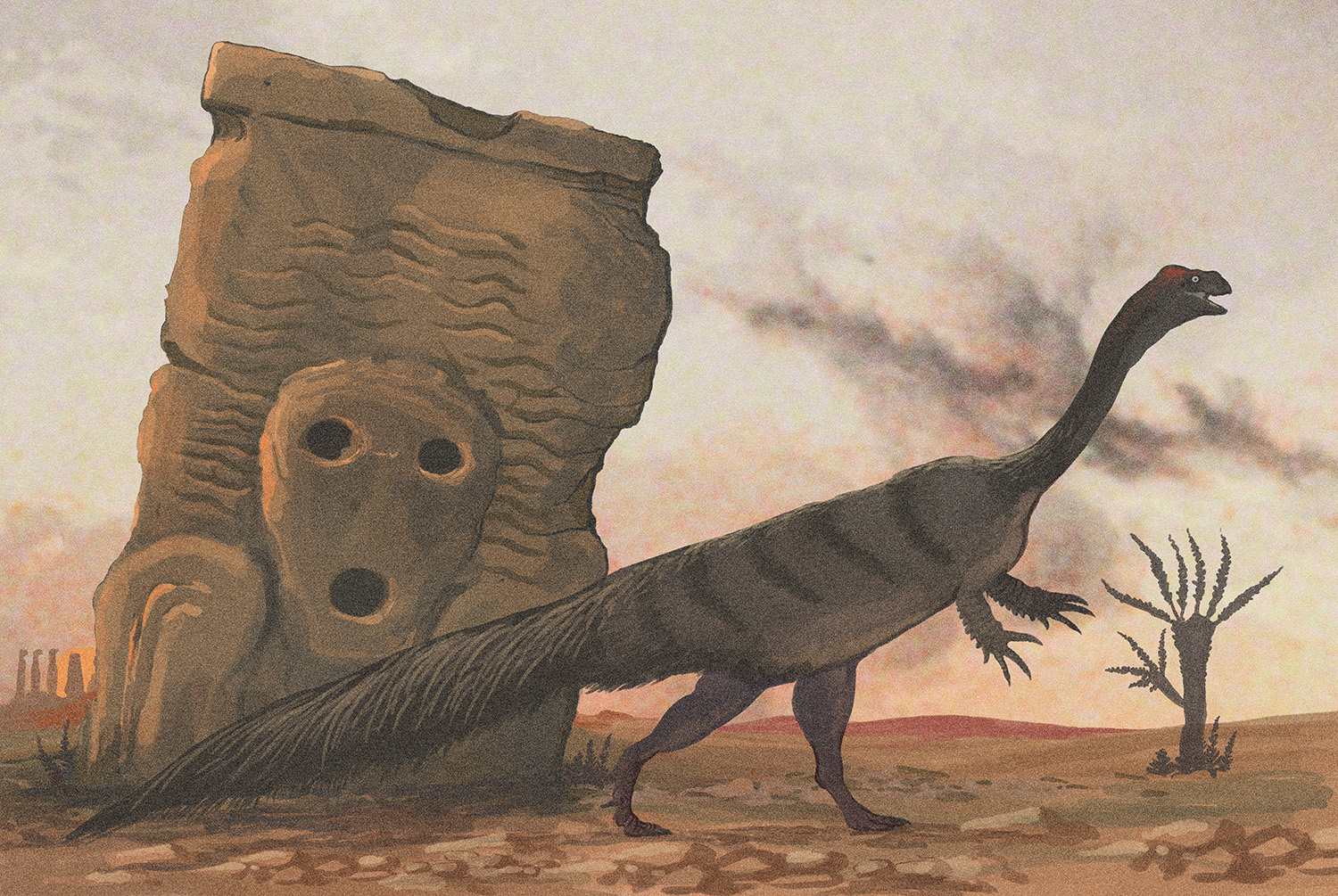
What if there was an intelligent species on the planet before us? Here, an early plant-eating dinosaur known as Massospondylus walks through the silent monuments of The Ones Before Men.
***
Ctenospondylus
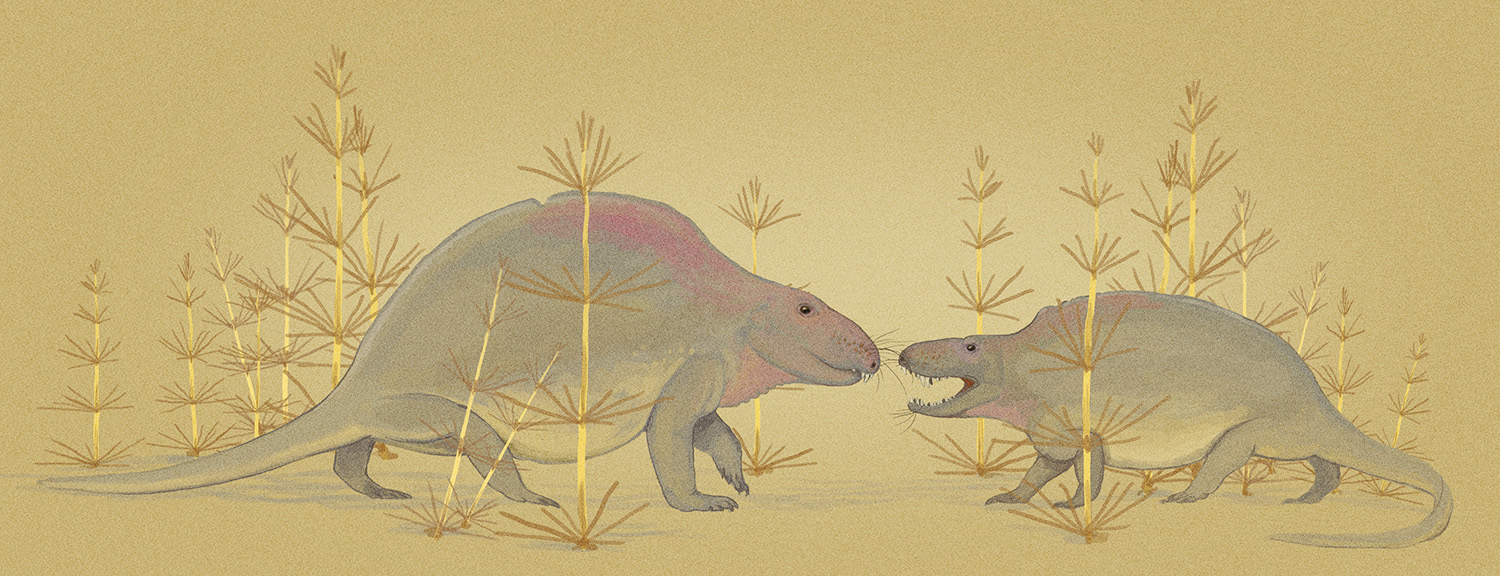
A male Ctenospondylus faces down a smaller opponent because his back is not humpy and red enough.
***
Ceratosaurus and the lost city
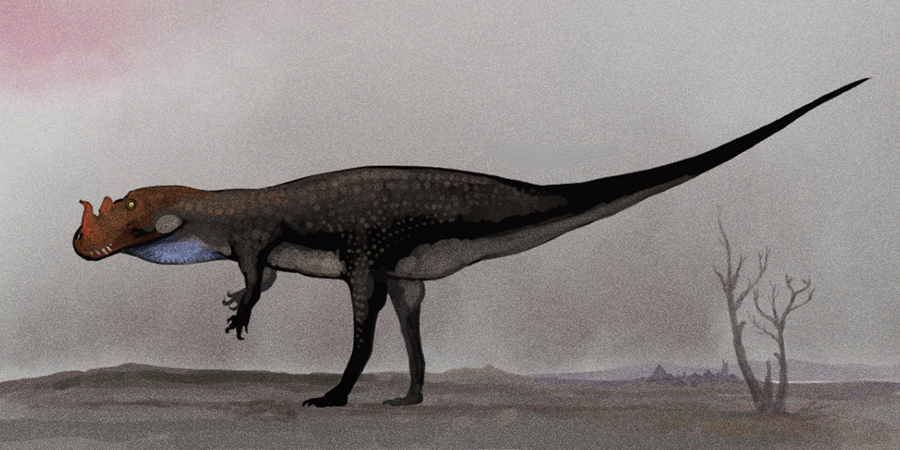
The predatory dinosaur Ceratosaurus looks for prey around the ruins of a dead city built by an intelligent species lost to our knowledge. Ceratosaurus was an actual dinosaur that lived in the Jurassic period; the lost city, obviously, is an artefact of speculation.
***
Post-human tracker
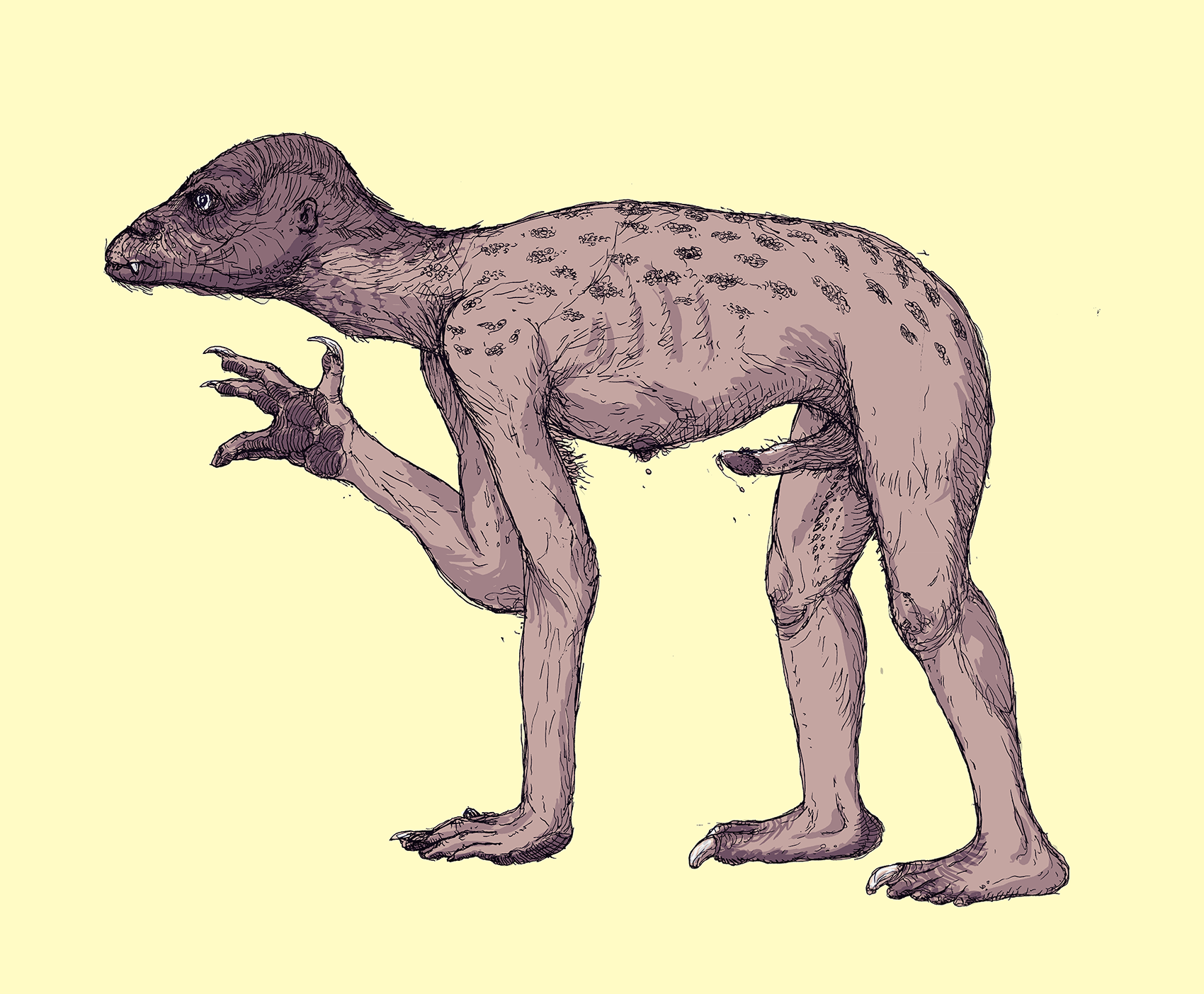
Sketch of a posthuman selectively bred for the purpose of tracking down and capturing other people. For an old comic-story project with the inimitable Simon Roy.
***
Two alien predators

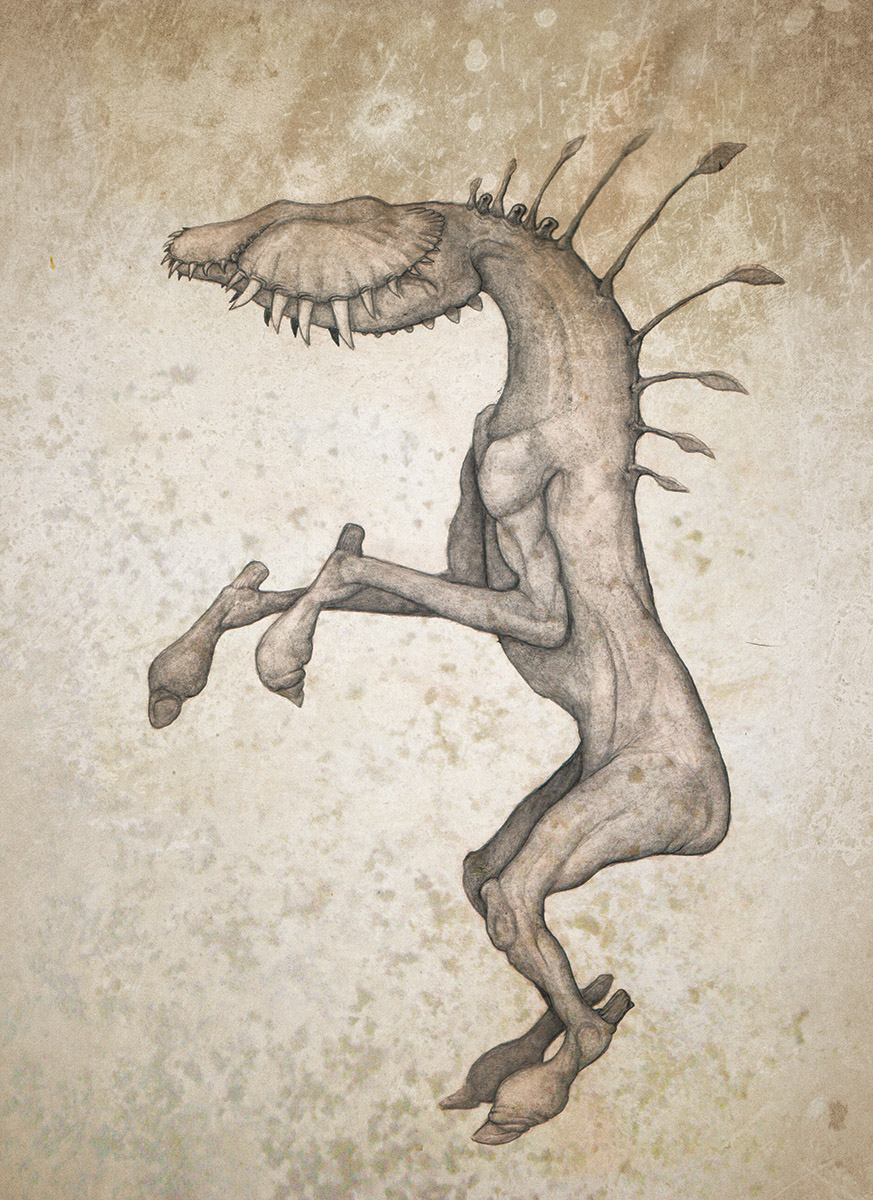
Illustrations of two alien predators, each from a different planet. The creature on the left attacks its prey with machete-like forelimbs; and the one on the right runs down its victims and captures them in its trap-like jaws.
***
Crystalline life
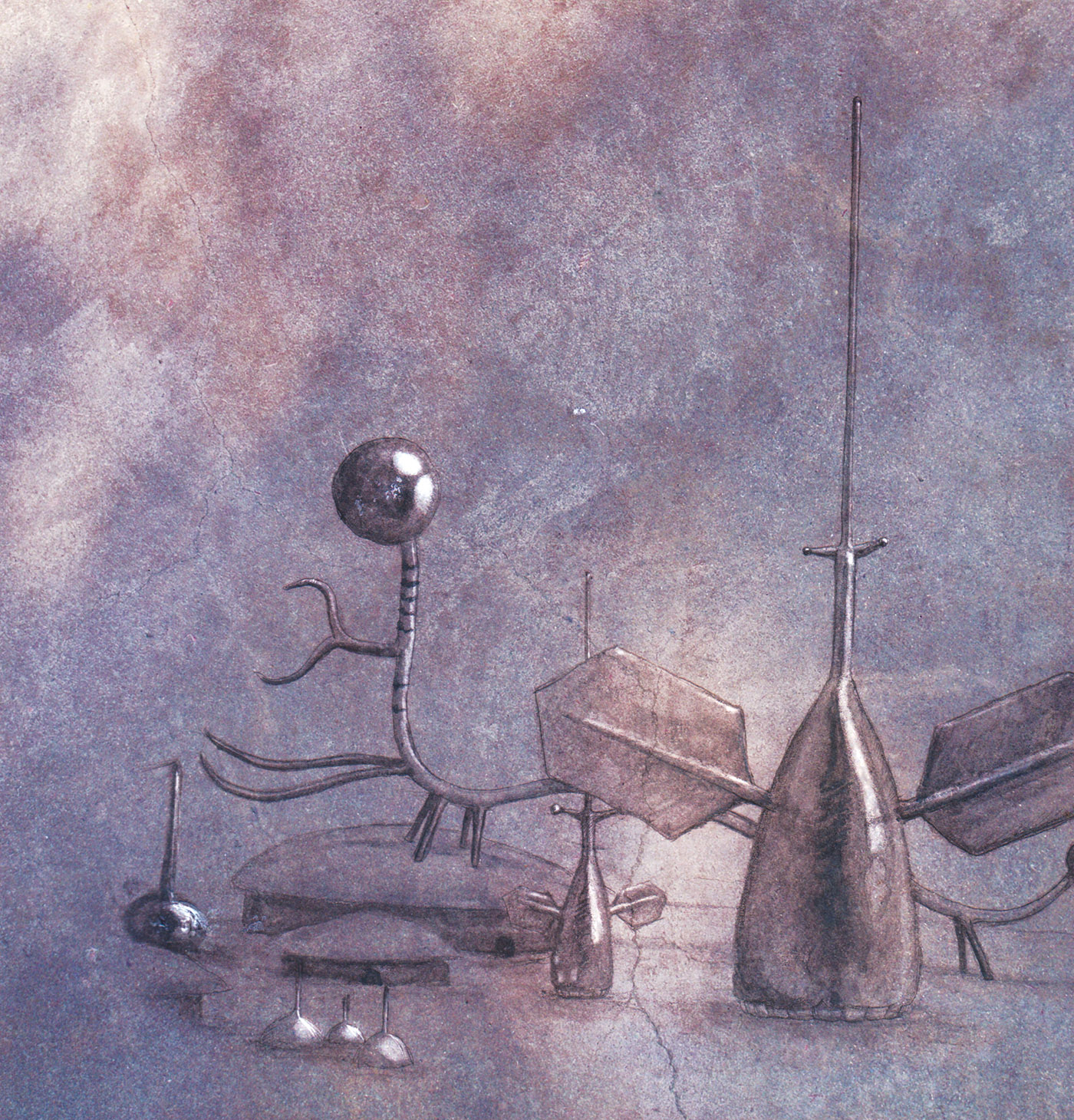
A vision of crystalline lifeforms descended from self-replicating nanomachines. From the right to left, two antenna-carrying "animals" that graze on radio waves; a predatory, snake-like "animal" that captures its prey by smashing its globe-like head against its victims; and various dome and chalice-shaped “plants” that transform sunlight into energy.
***
Deinonychus
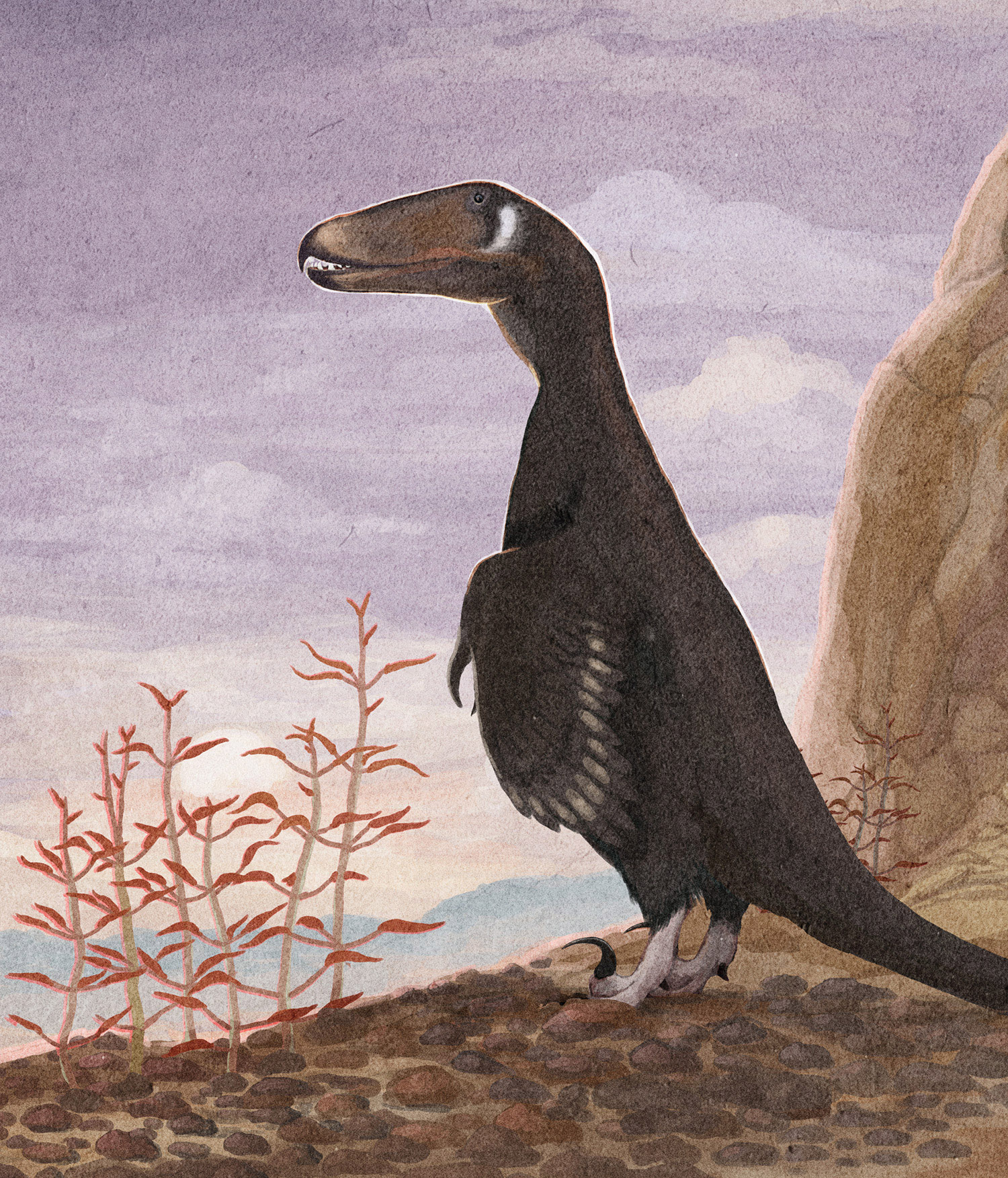
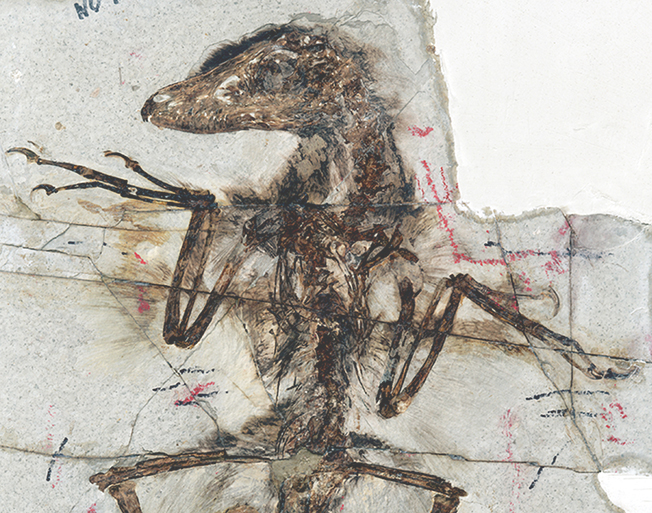
The extremely bird-like predatory dinosaur Deinonychus, reconstructed speculatively with a beak-like mouthpart after the fossil of a related form, Sinornithosaurus, seen below.
***
Gorgosaurus and Edmontosaurus
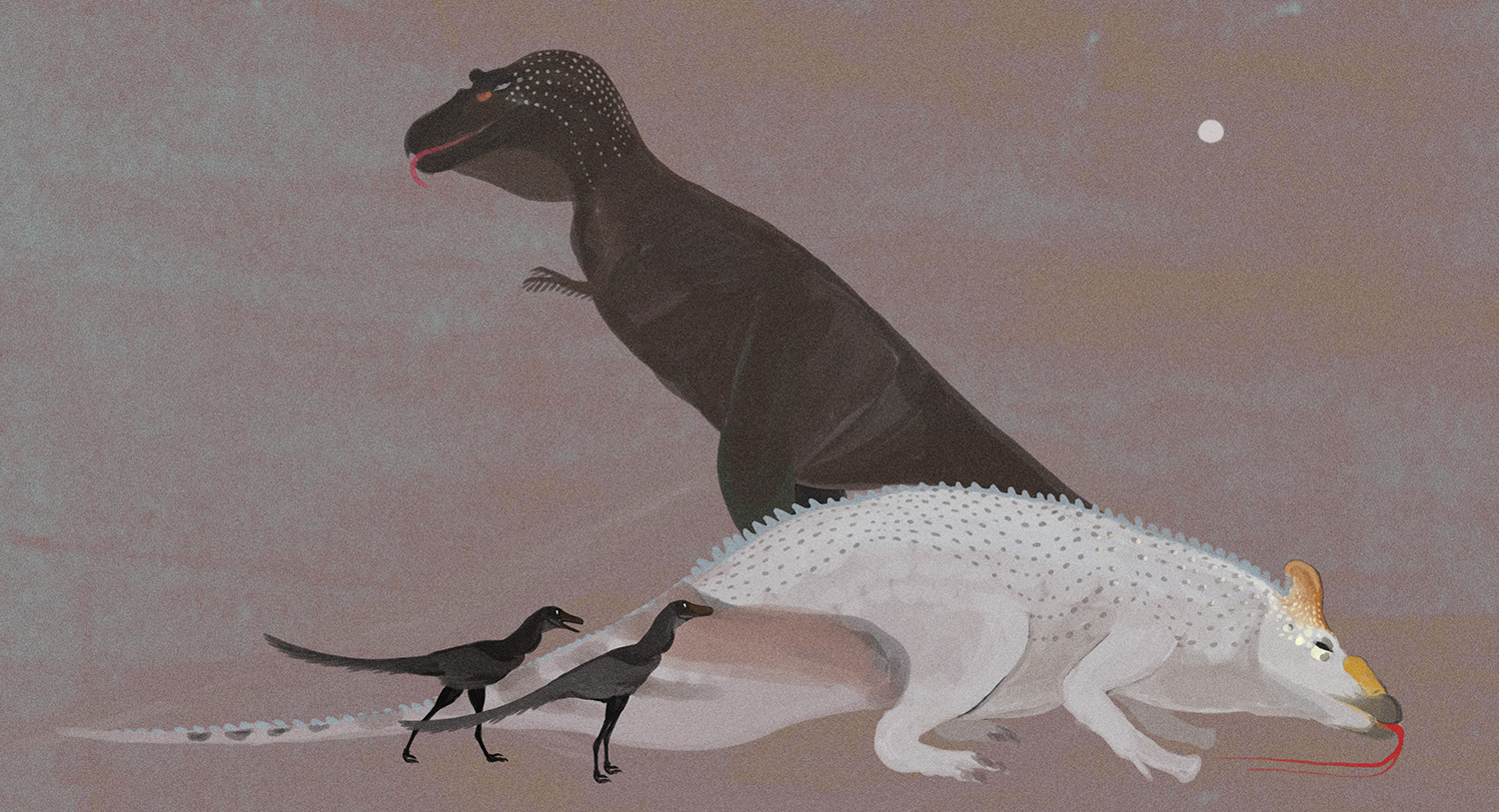
An experimental, cave-art-like rendition of dinosaurs. The mid-size tyrannosaur, Gorgosaurus, has just killed an Edmontosaurus-like herbivore, two bird-like Troodonts are closing in to share the kill. There is more than enough to go around for everyone.
***
Majungasaurus
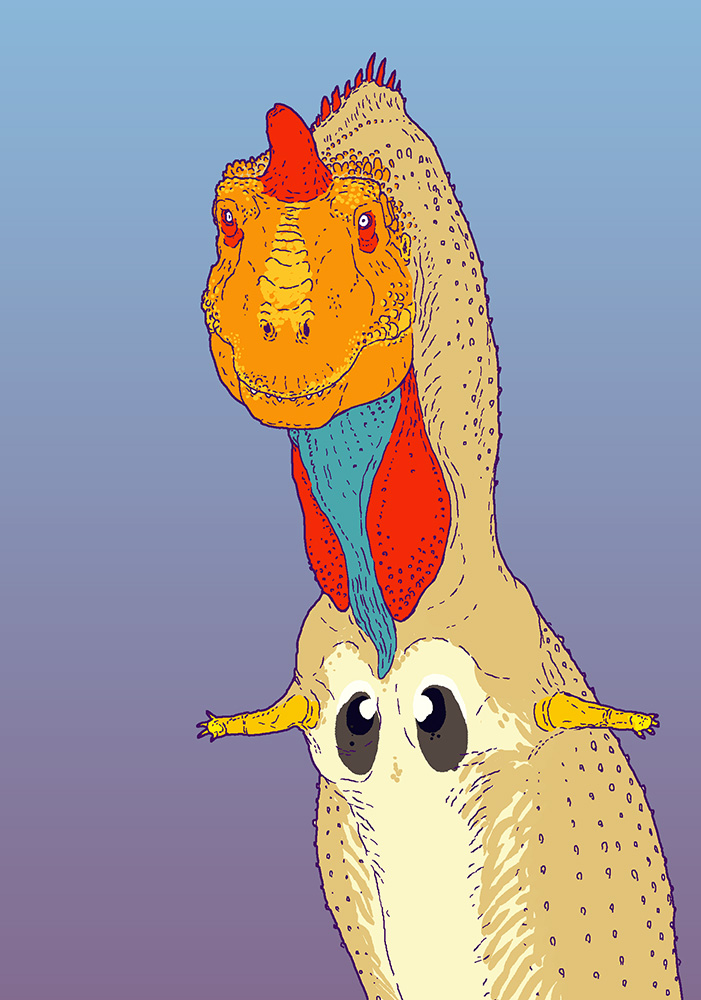
The stubby-armed dinosaur, Majungasaurus, displays with its flamboyant neck wattles, chest patches and crest. From All Yesterdays, my book with John Conway and Darren Naish.
***
Swans and other birds
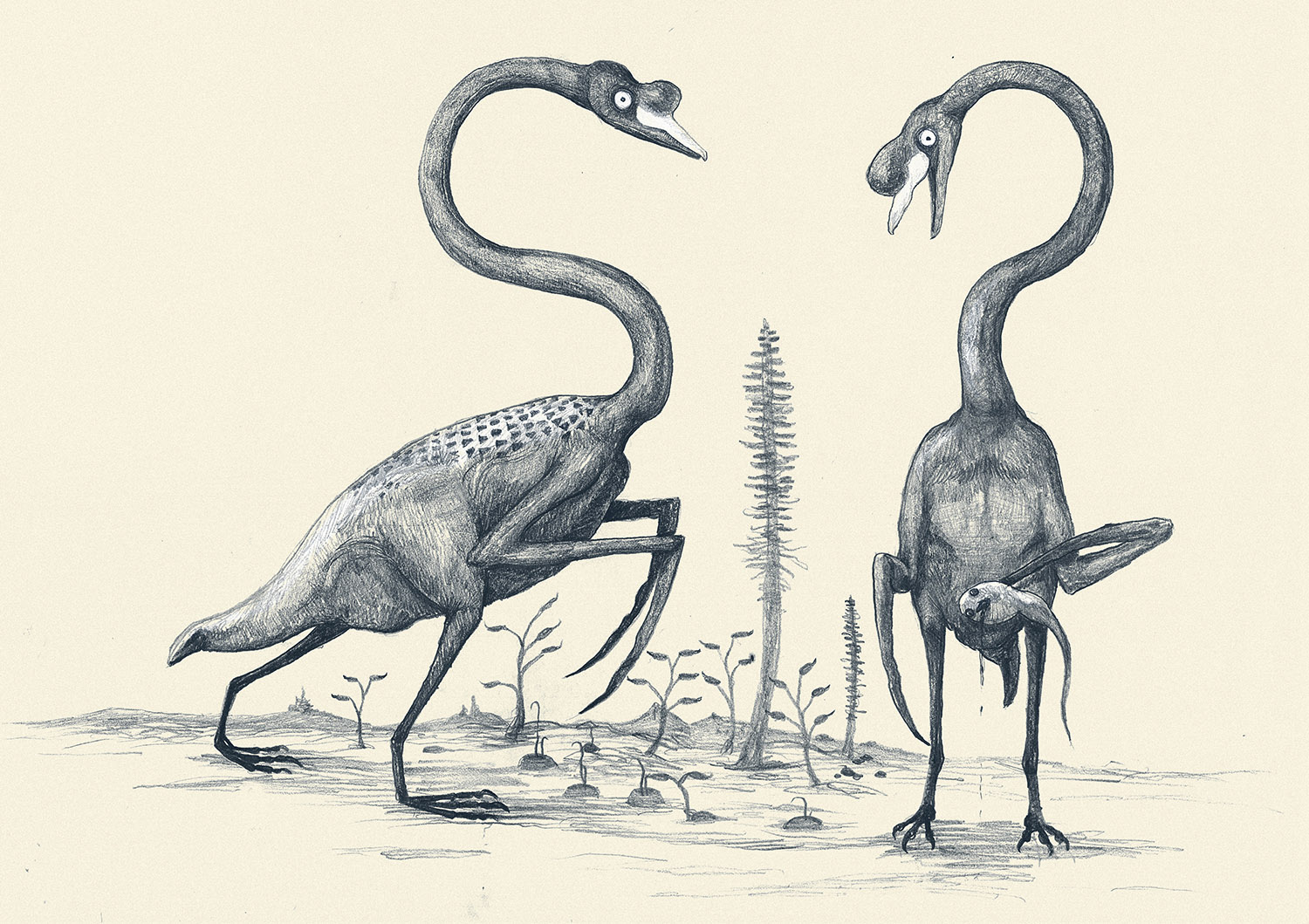
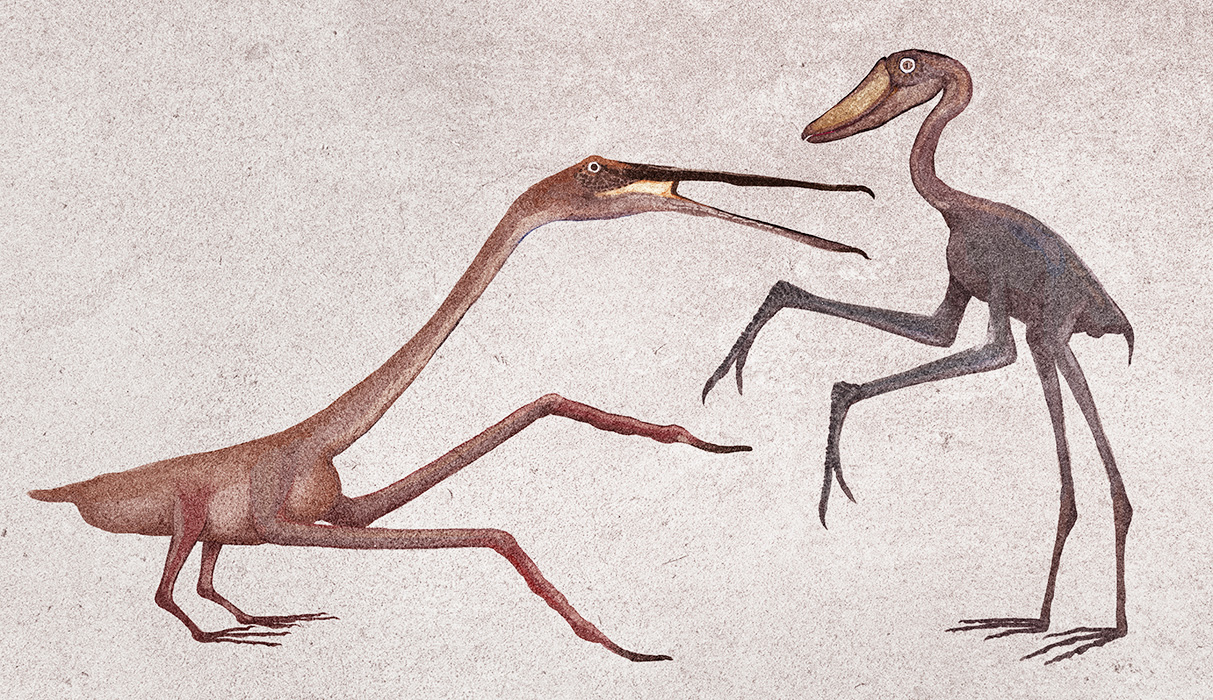
How would future palaeontologists reconstruct birds if they didn't know about feathers, wings, or body fat? Here are a couple of swans (above) and a pelican with a shoebill stork (below), reconstructed with the same monstrous mistakes we see in mainstream palaeontological art. From my book, All Yesterdays.
***
Stalker
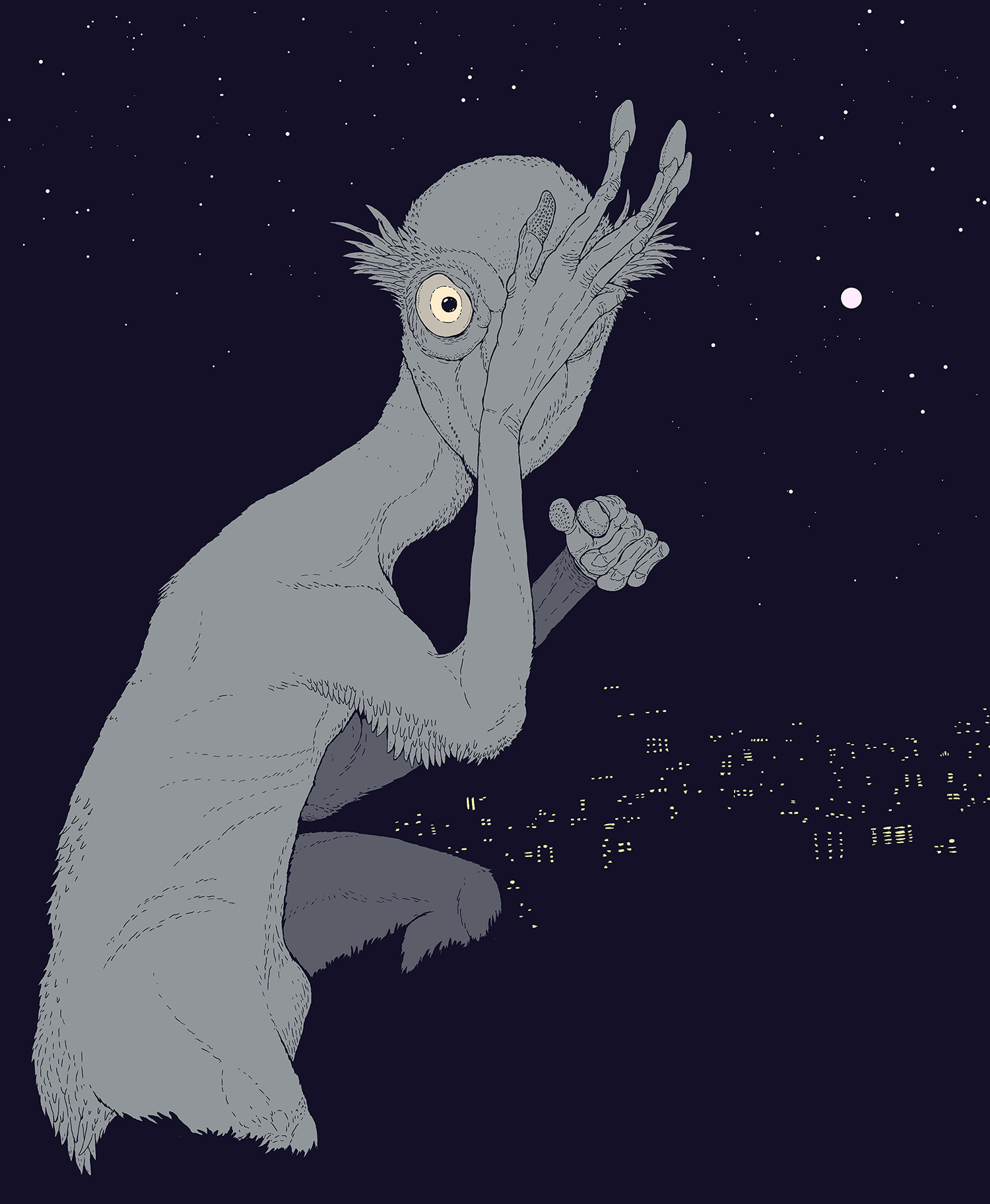
A fantastic "stalker" creature.
***
Livyatan
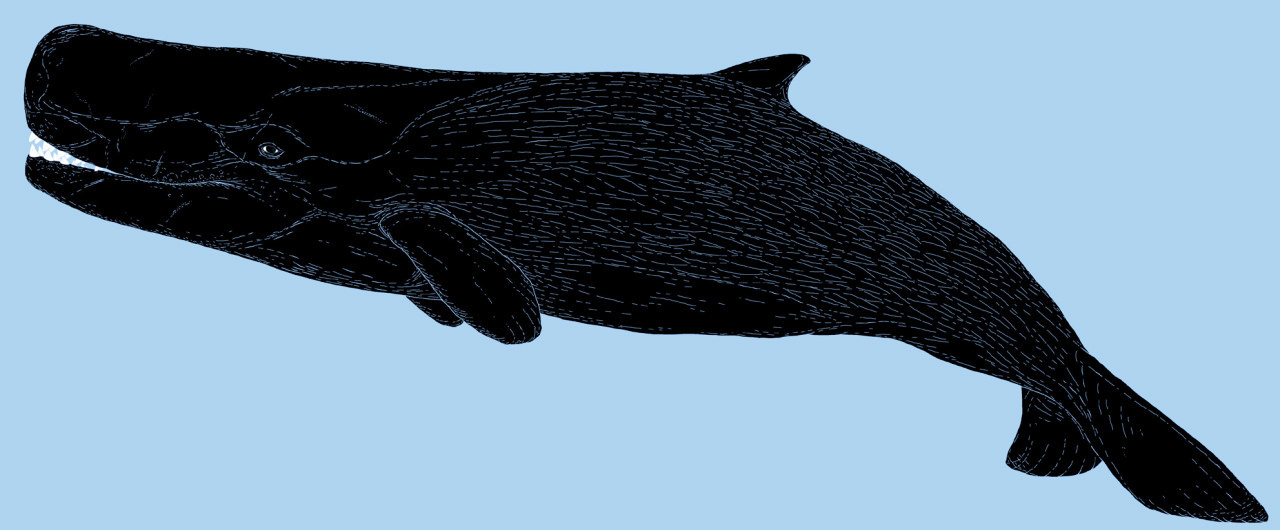
The giant, macropredatory sperm whale, Livyatan melvillei, which lived around 12-13 million years ago. Each teeth of this animal was the size of a small shoe.
***
Eoraptor
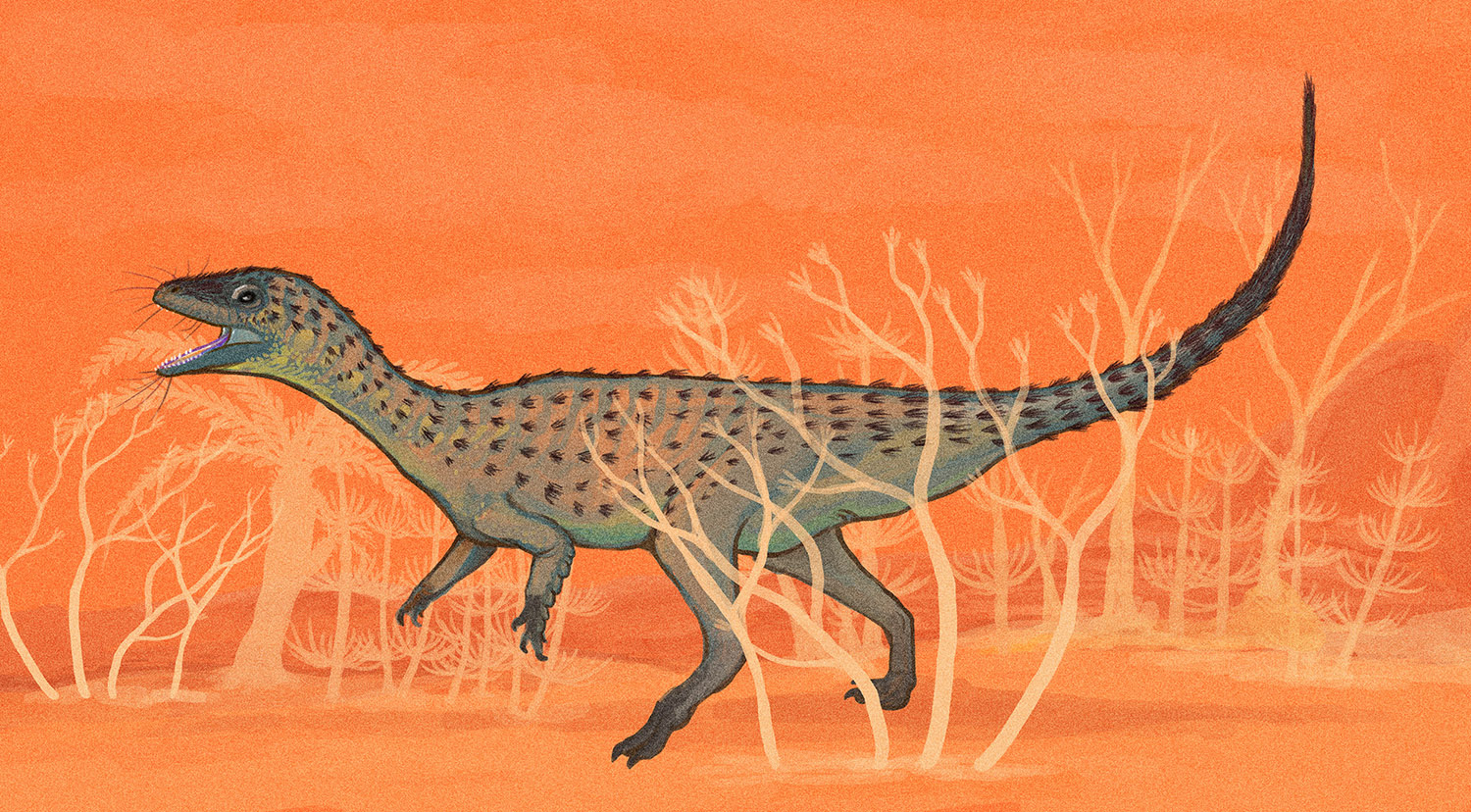
The early dinosaur, Eoraptor, runs through a psychedelic forest, its body already bristling with tuft-like structures ancestral to feathers.
***
Acamptonectes
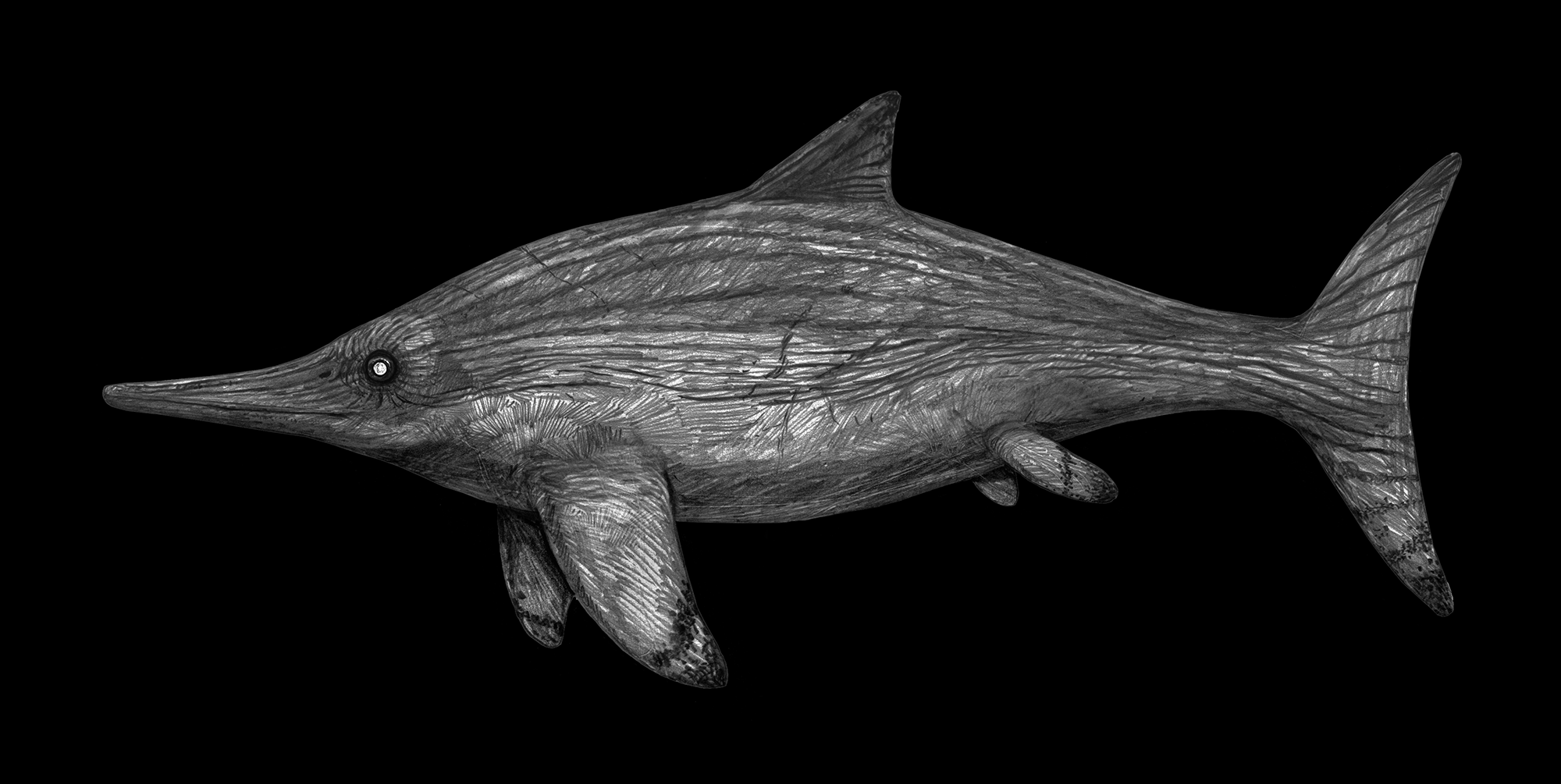
Pencil illustration of the ichthyosaur Acamptonectes.
***
Nocturnal humanoid
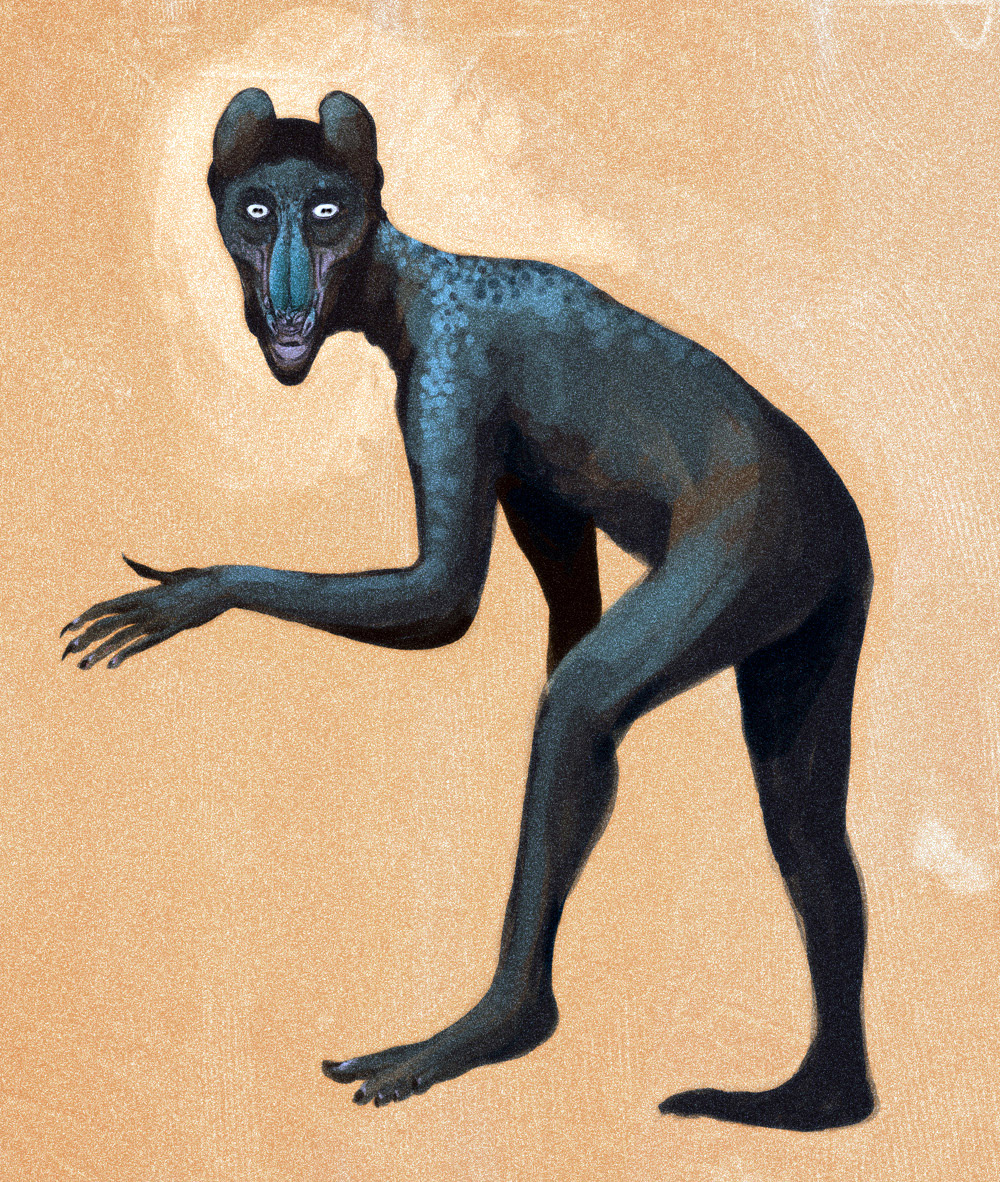
Illustration of a nocturnal humanoid creature. Not a real being, but a work of speculative evolution.
***
Imaginary beings
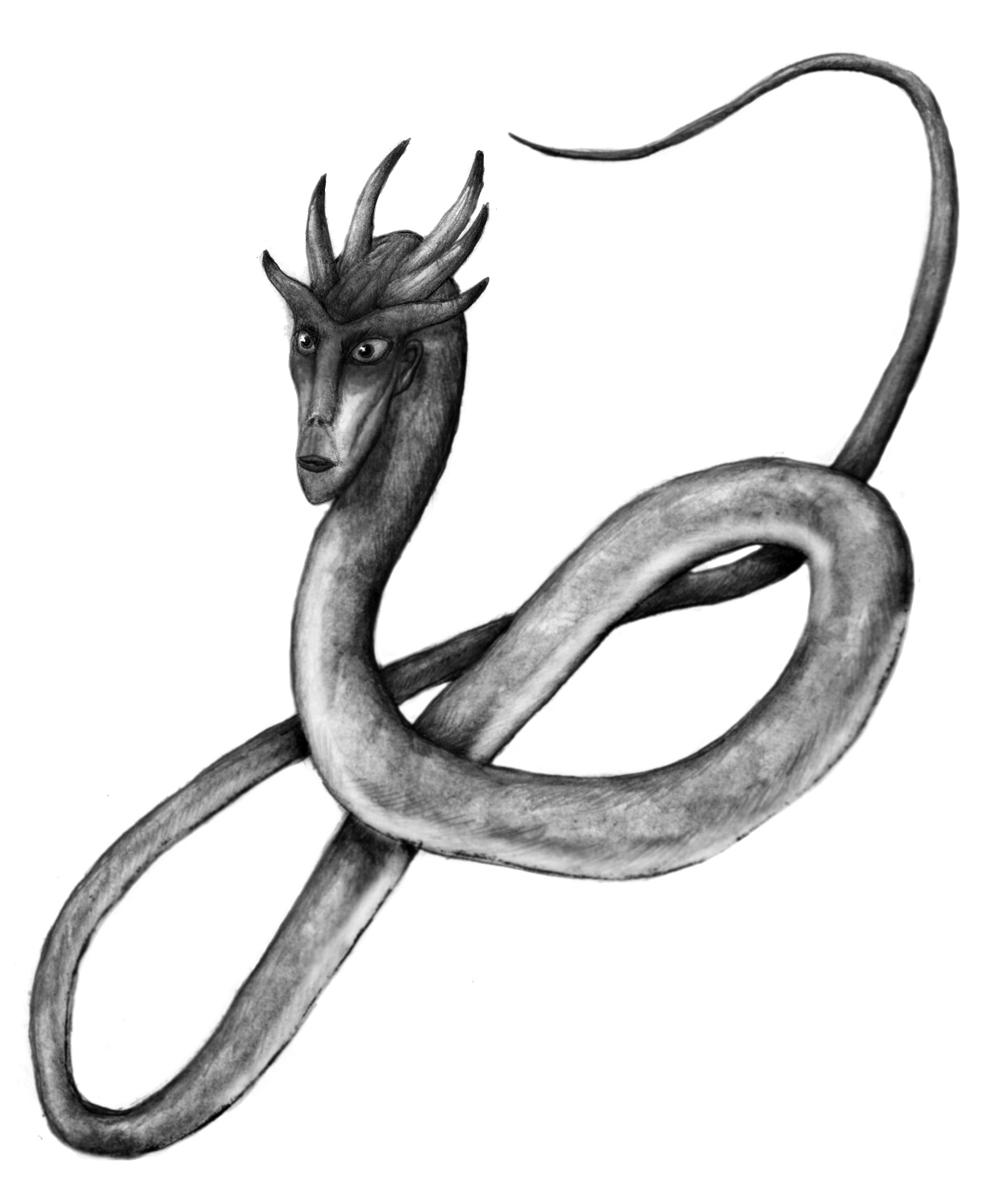
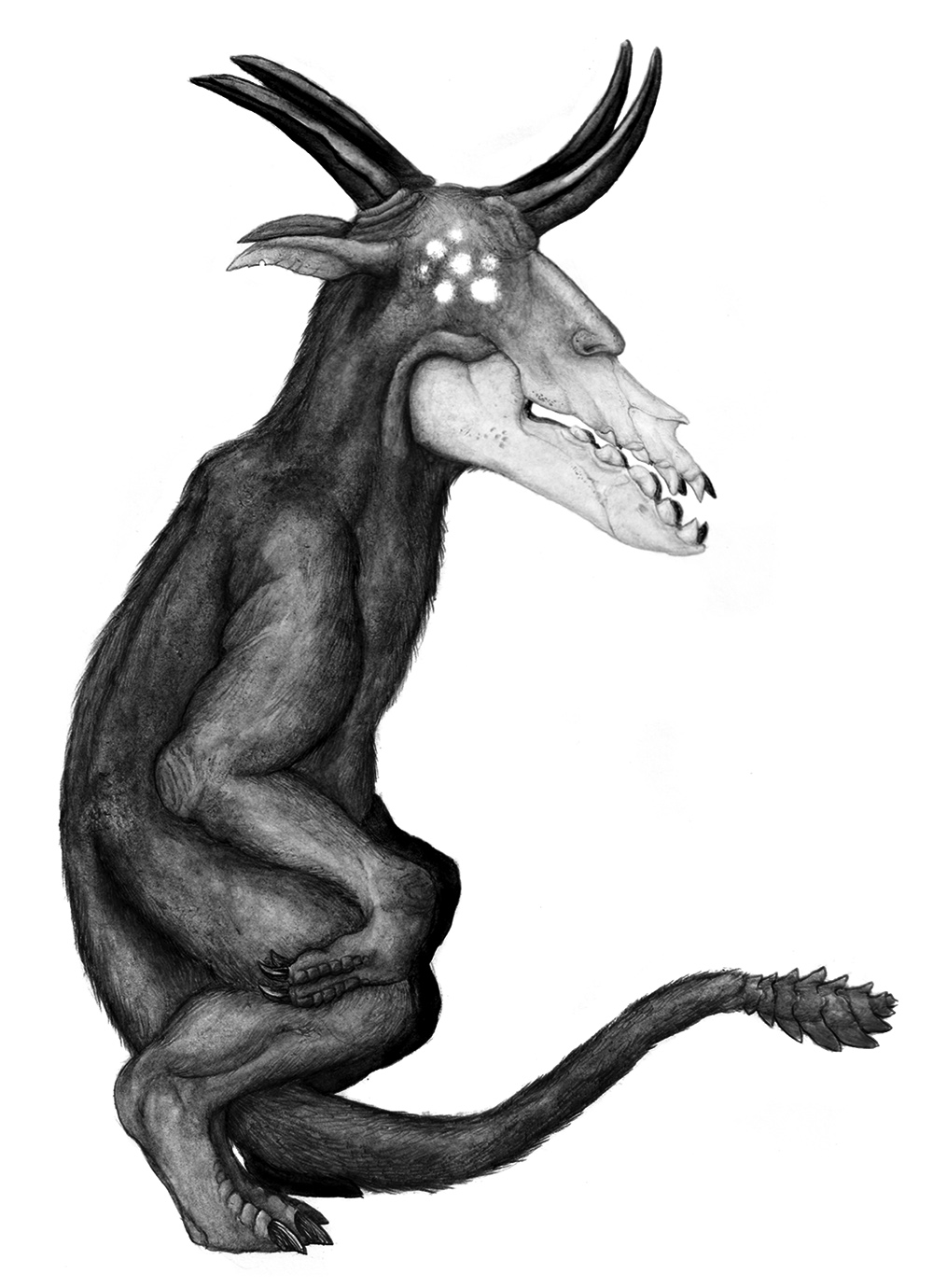
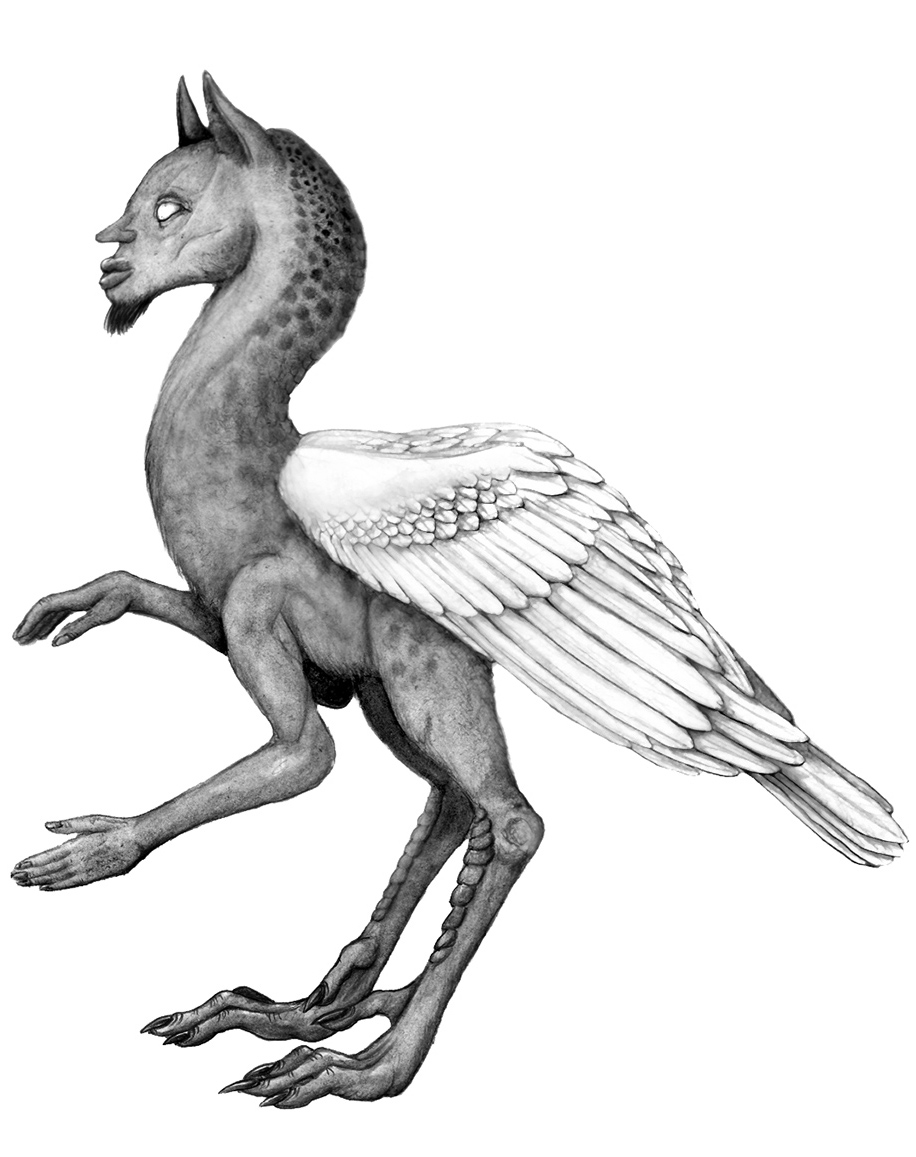
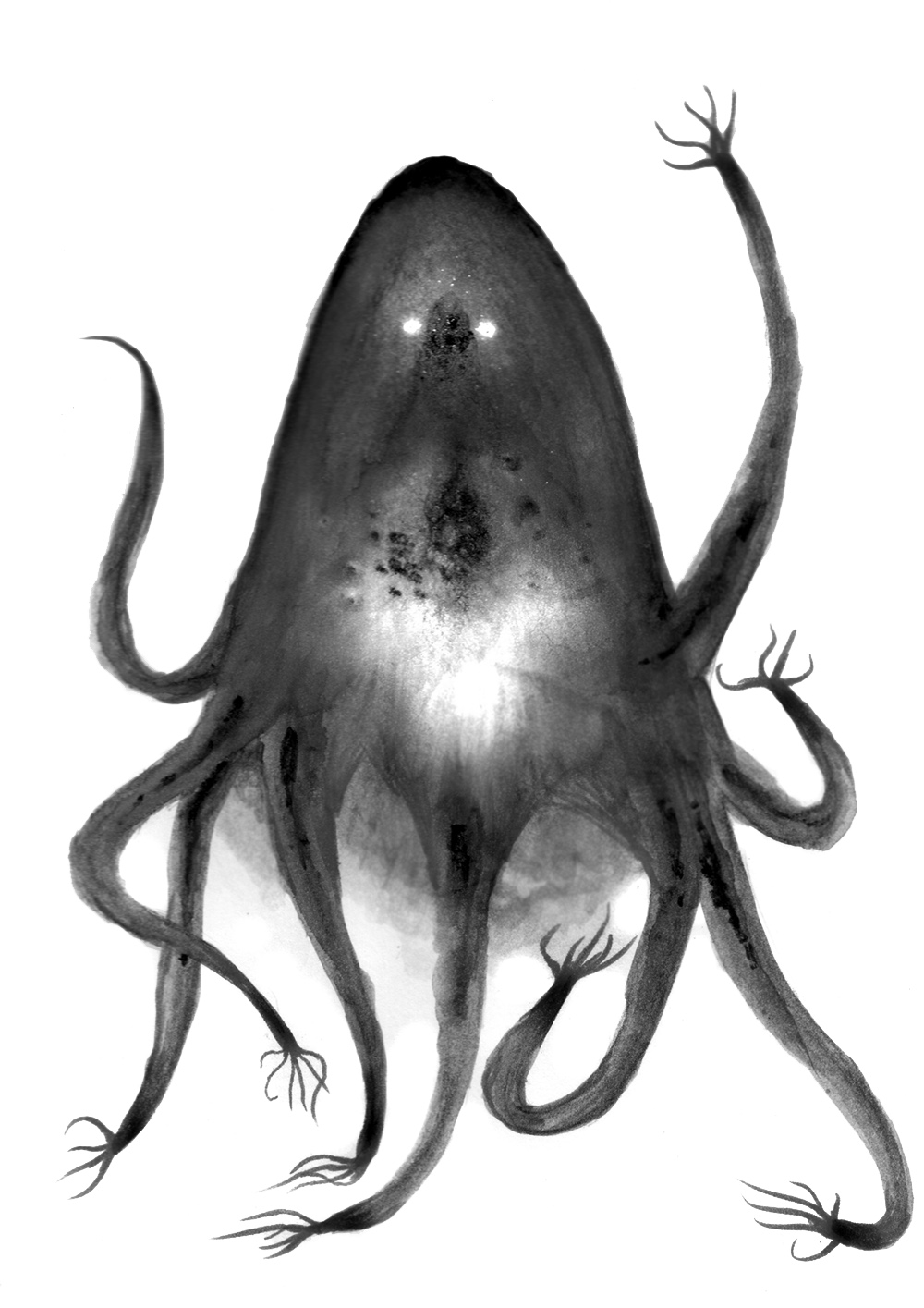
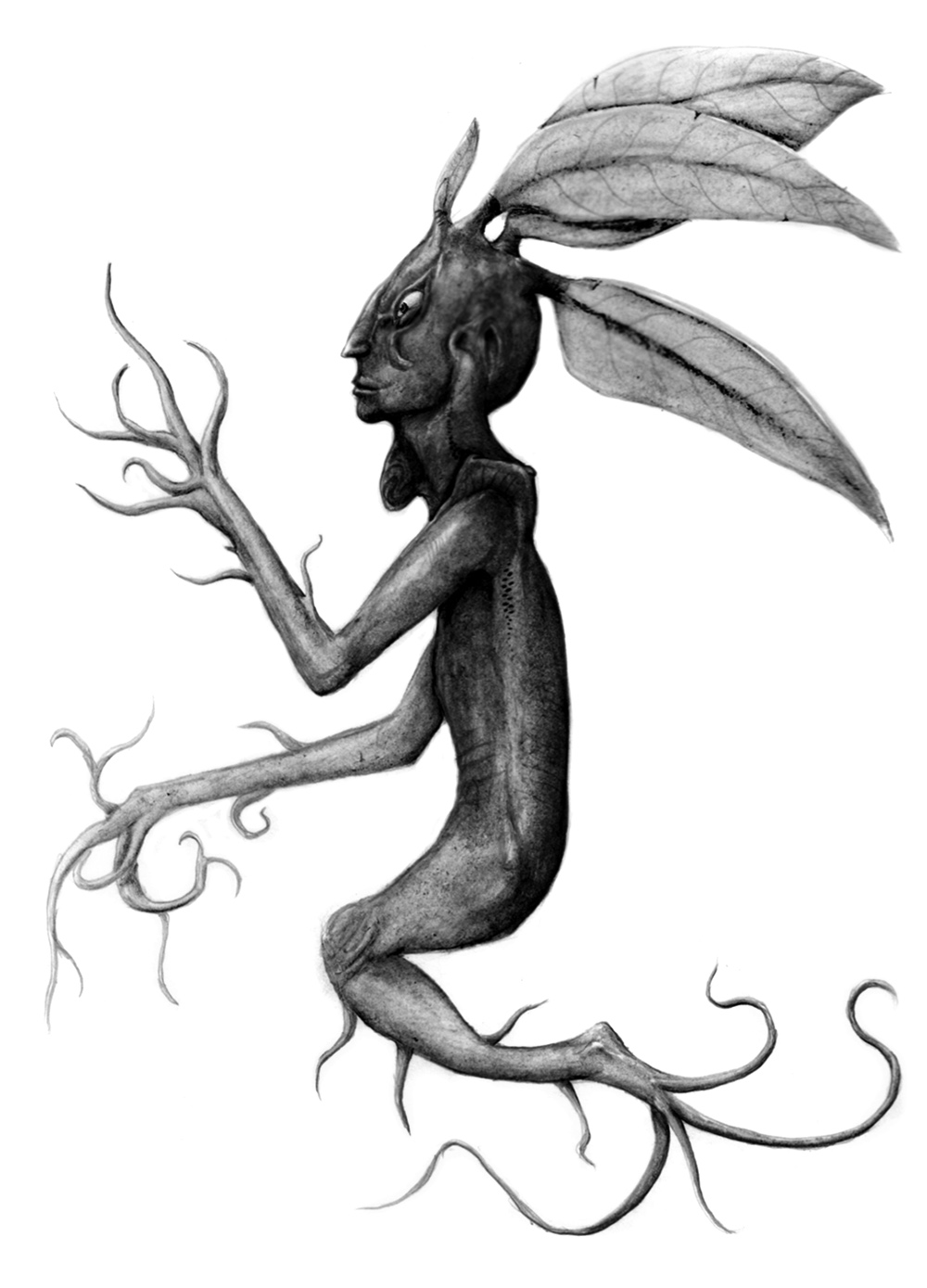
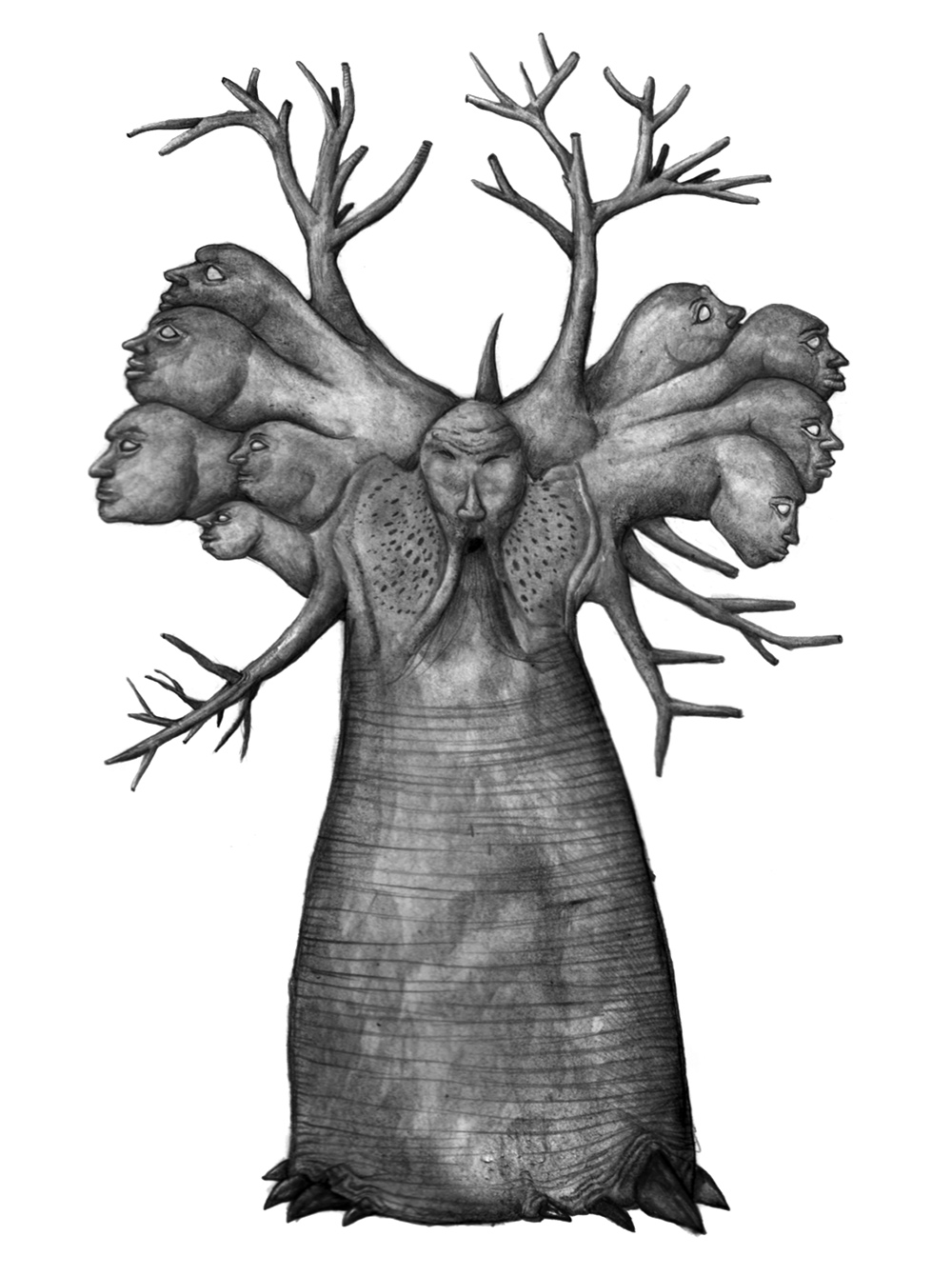
Illustrations of fantastic creatures for an old and disowned book project.
***
Future human species from All Tomorrows
Select illustrations from All Tomorrows, an old, self-published illustrated science-fiction e-book that chronicled humanity's future evolution.
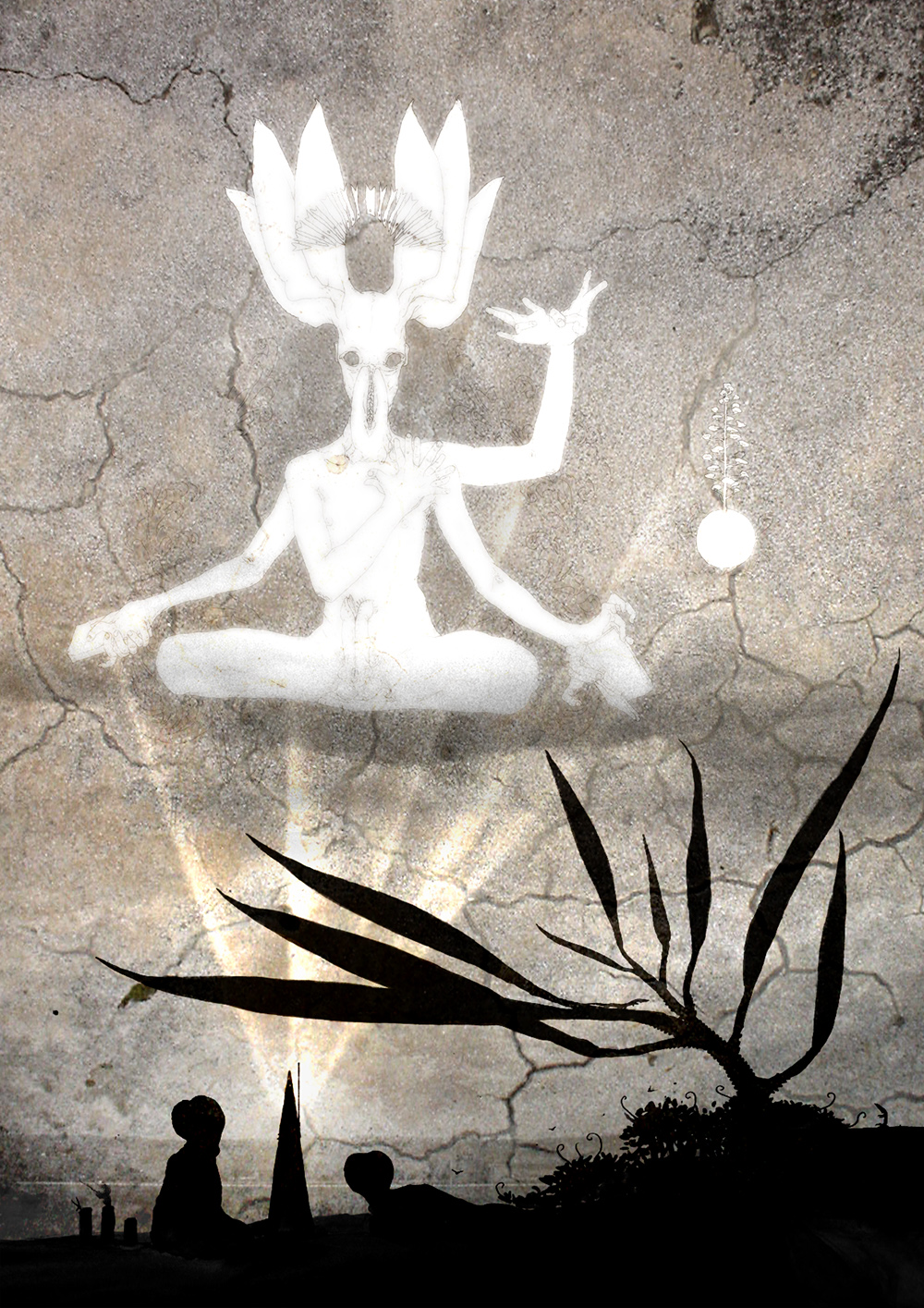
Future humans watch a holographic projection on a colonised planet.
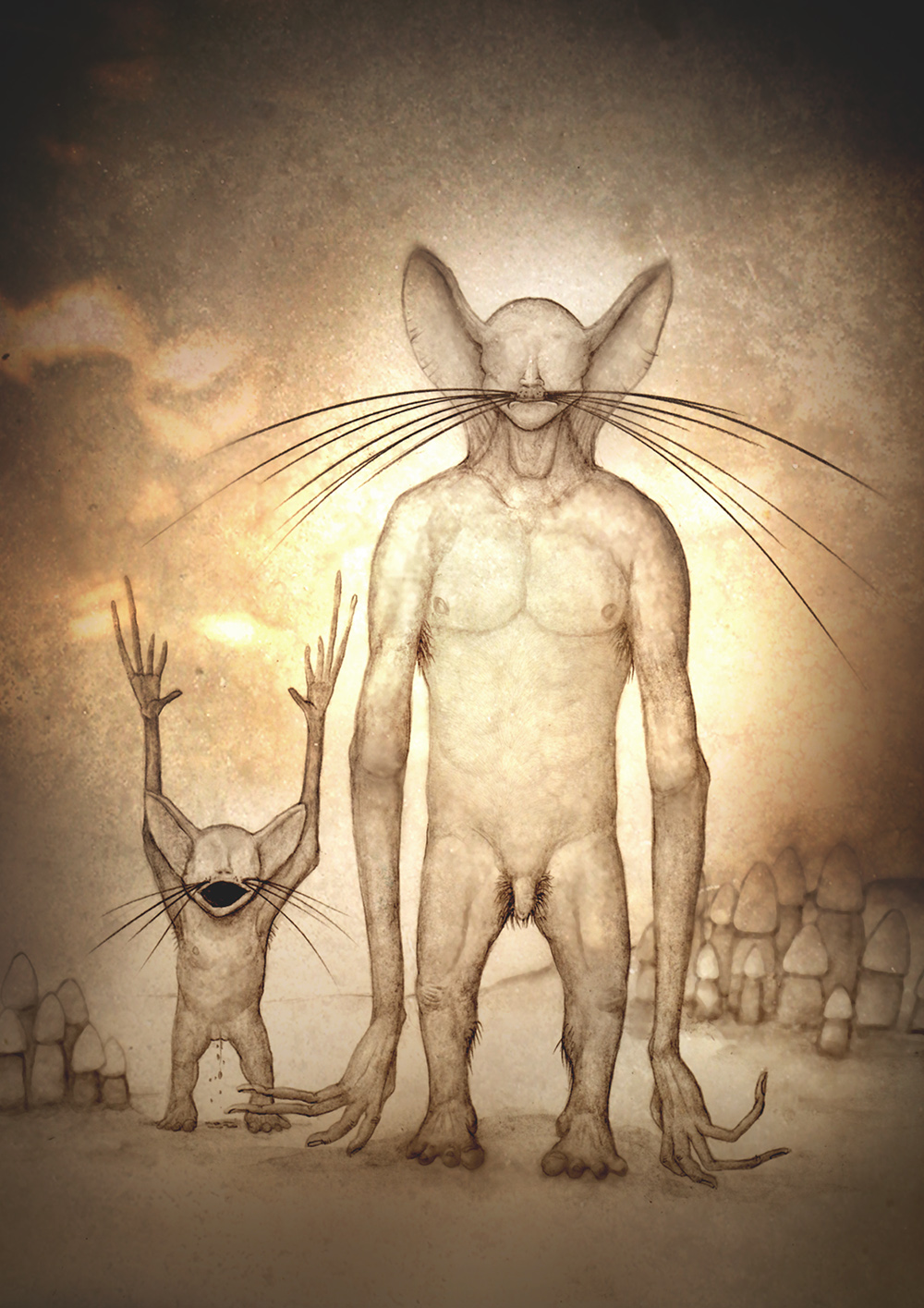 Blind people that evolved to live in caves.
Blind people that evolved to live in caves.
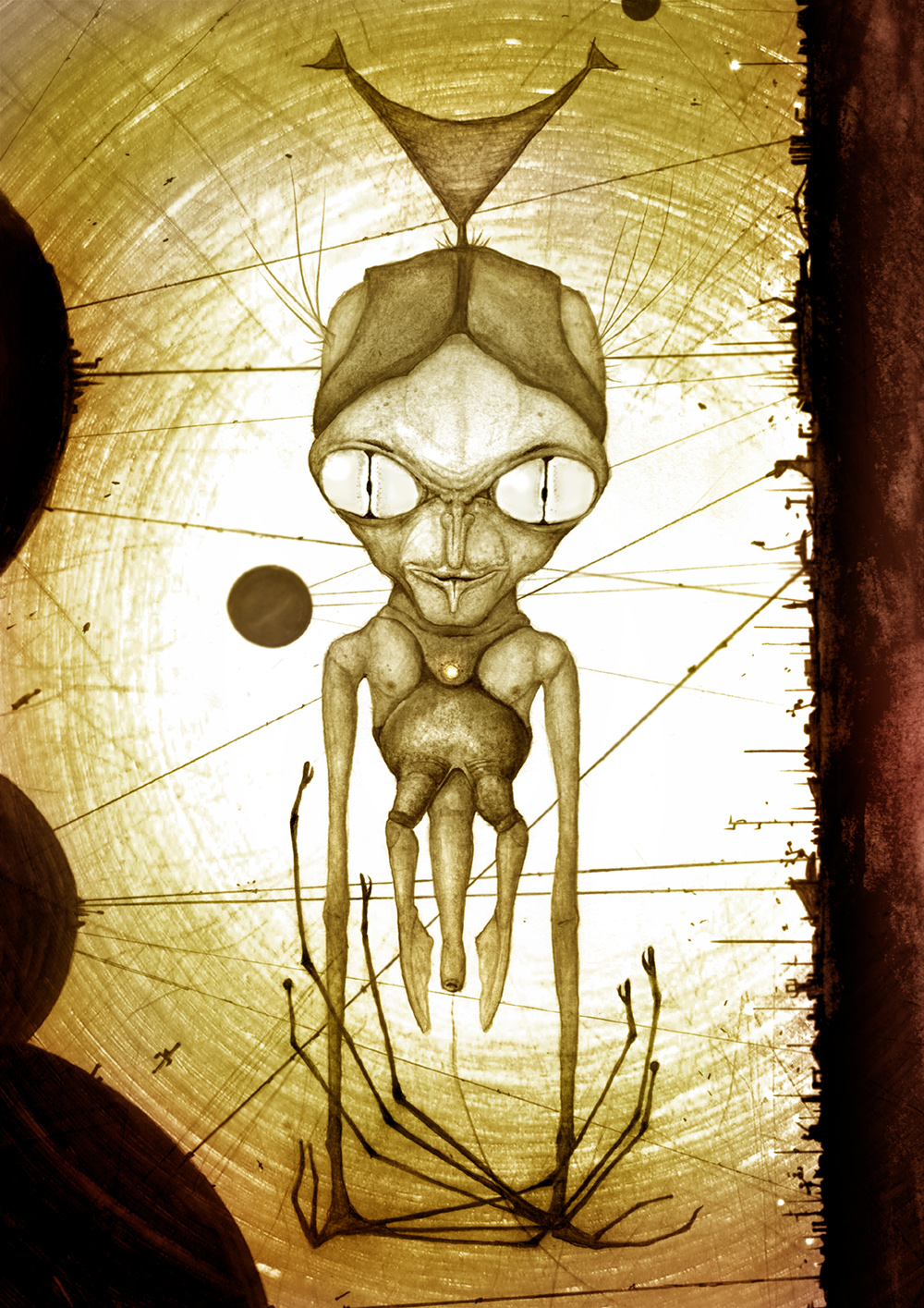 A super-intelligent future human adapted to live in artificial, gravity-free habitats.
A super-intelligent future human adapted to live in artificial, gravity-free habitats.
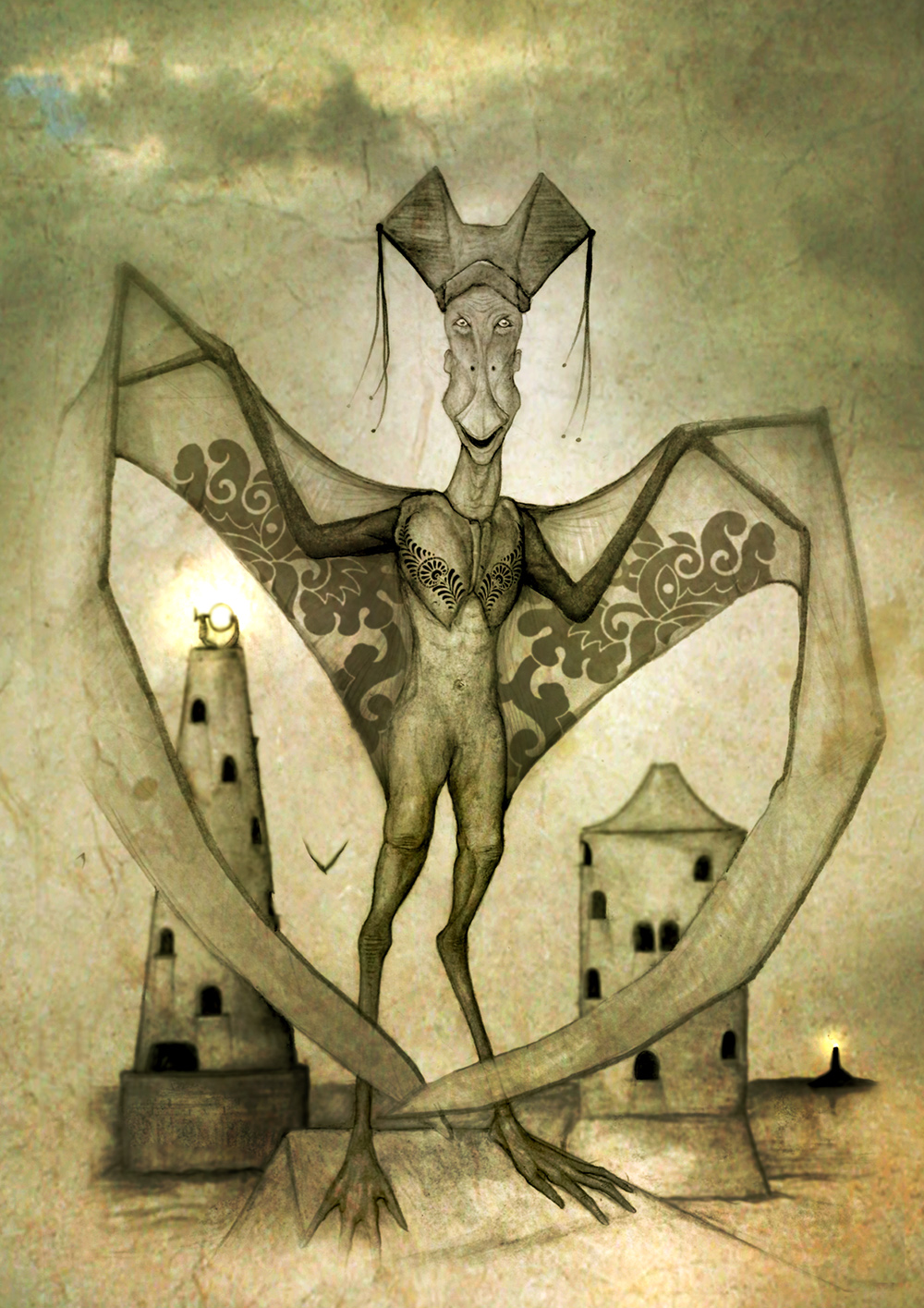 A flying human species adapted to life on a low-gravity planet.
A flying human species adapted to life on a low-gravity planet.
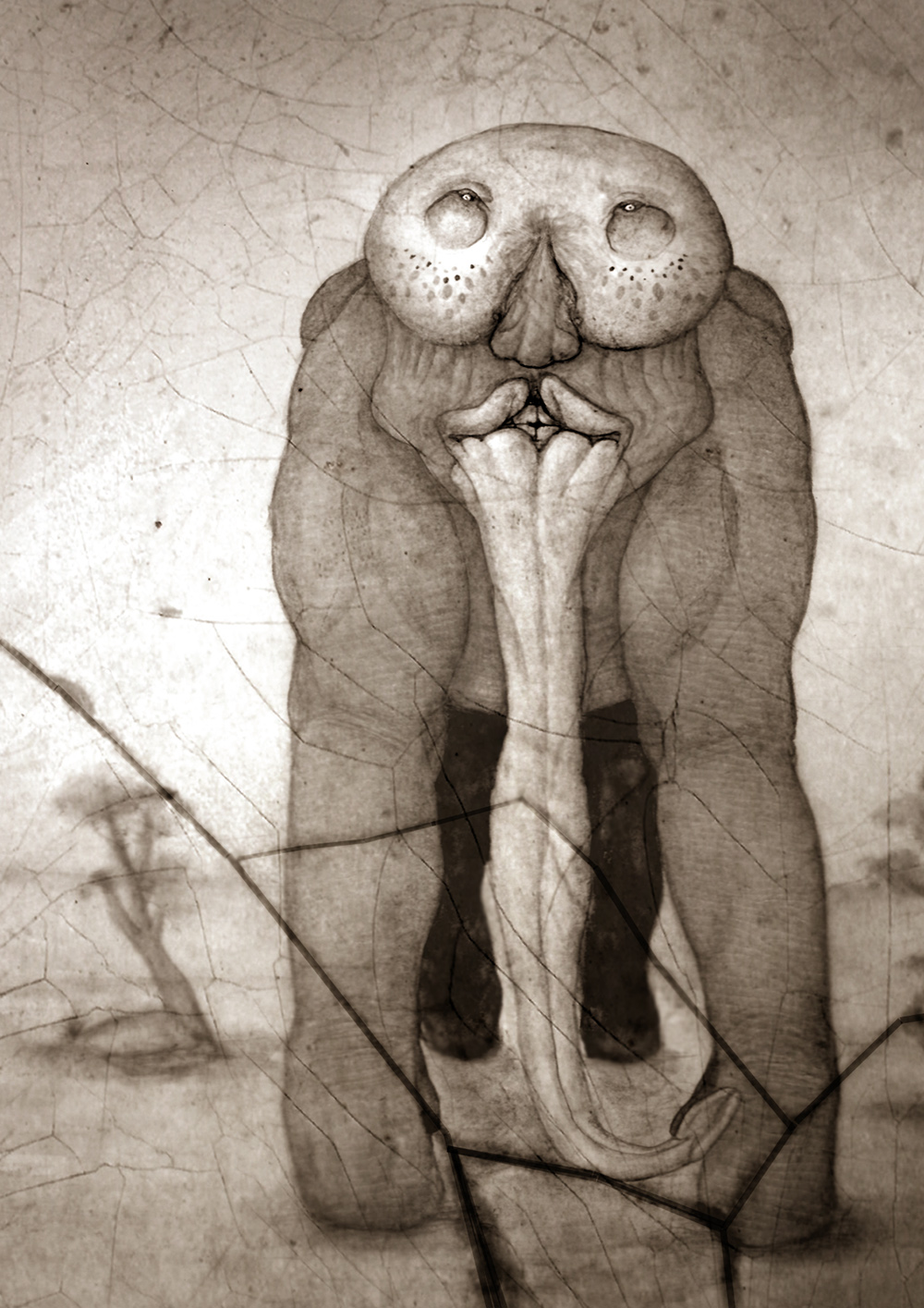 A giant, elephantine post-human that has regressed to an animal existence.
A giant, elephantine post-human that has regressed to an animal existence.
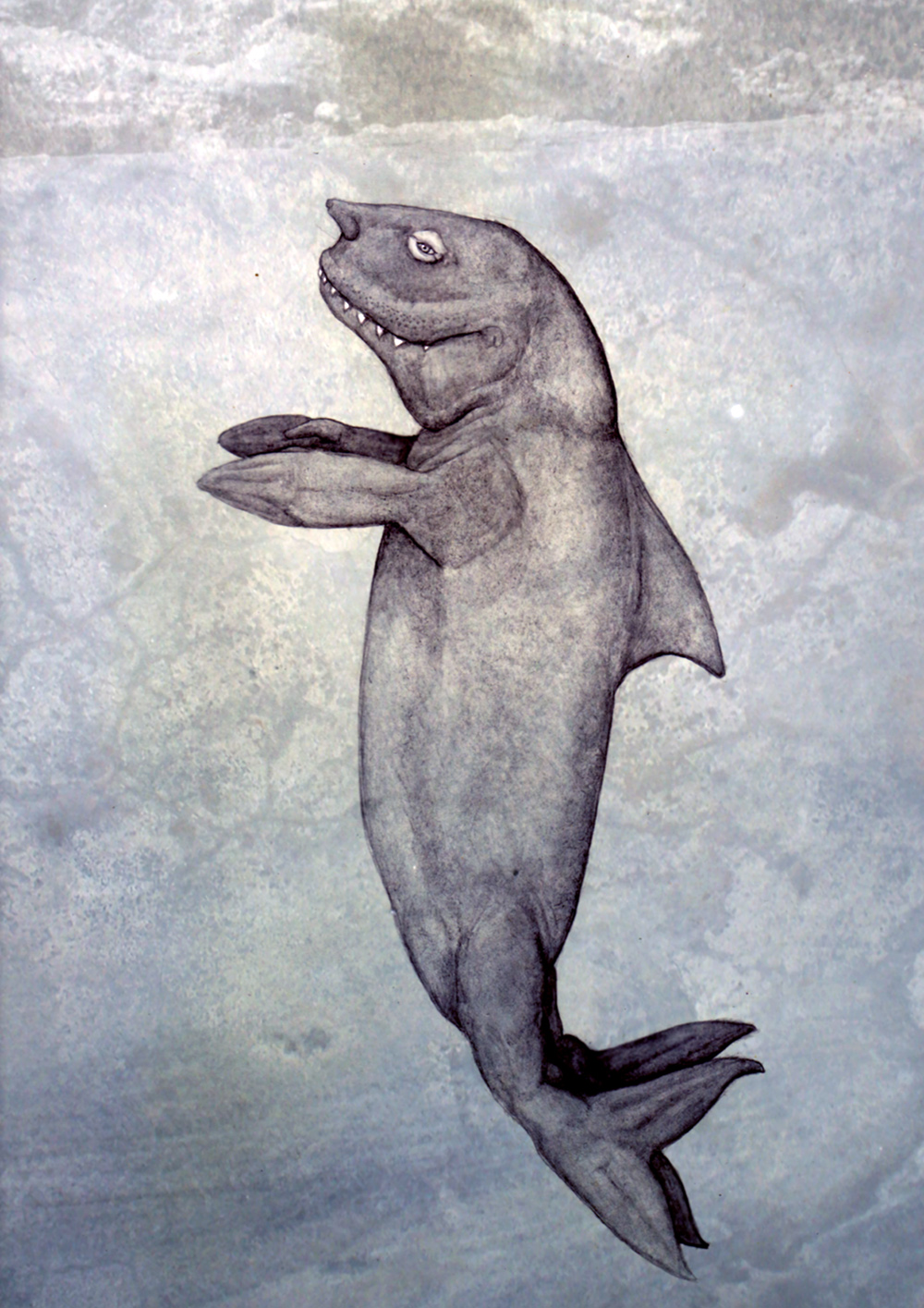
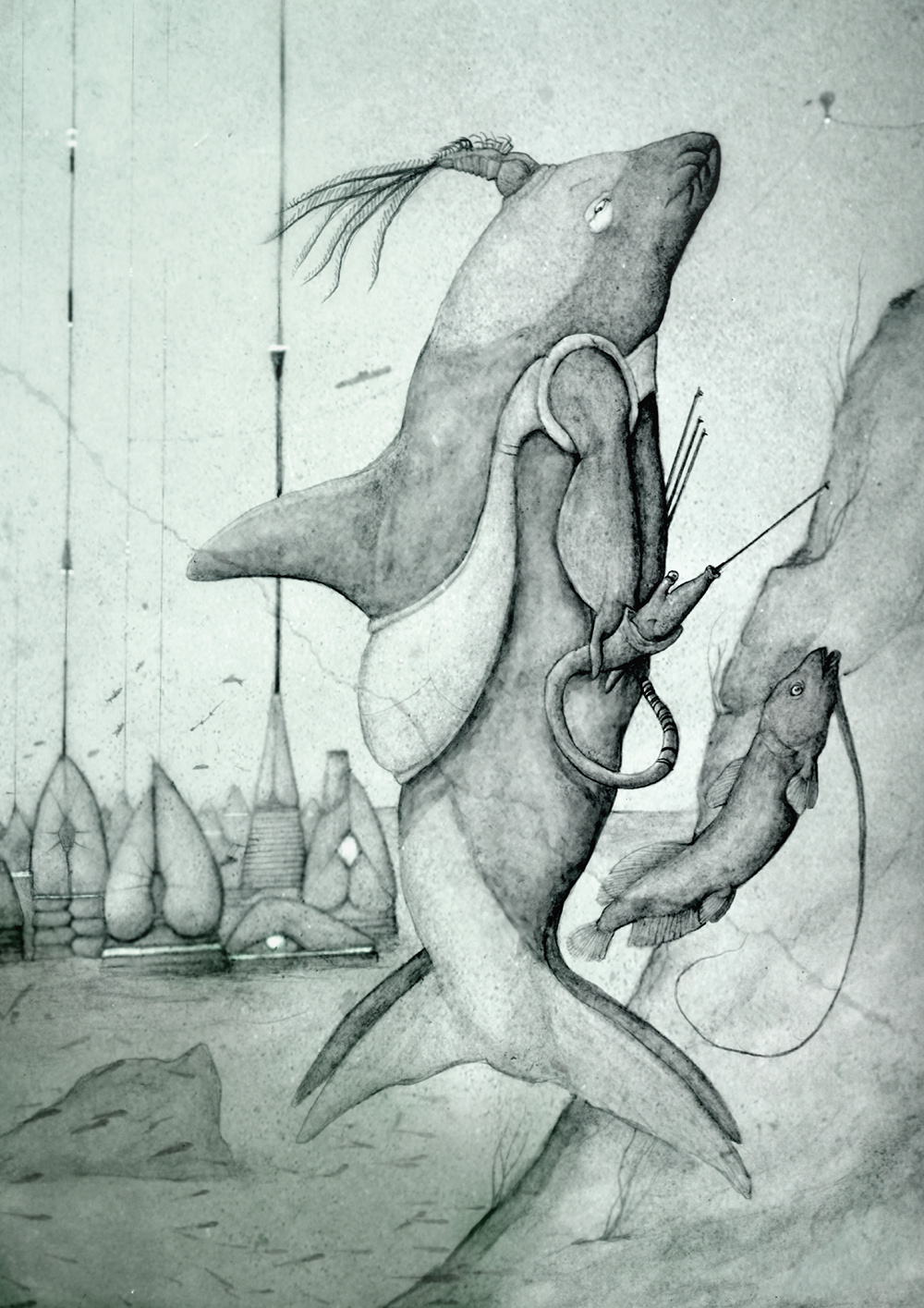 Wild and evolved stages of aquatic human beings which developed a biotechnology-based civilisation in the absence of fire and complex metals.
Wild and evolved stages of aquatic human beings which developed a biotechnology-based civilisation in the absence of fire and complex metals.
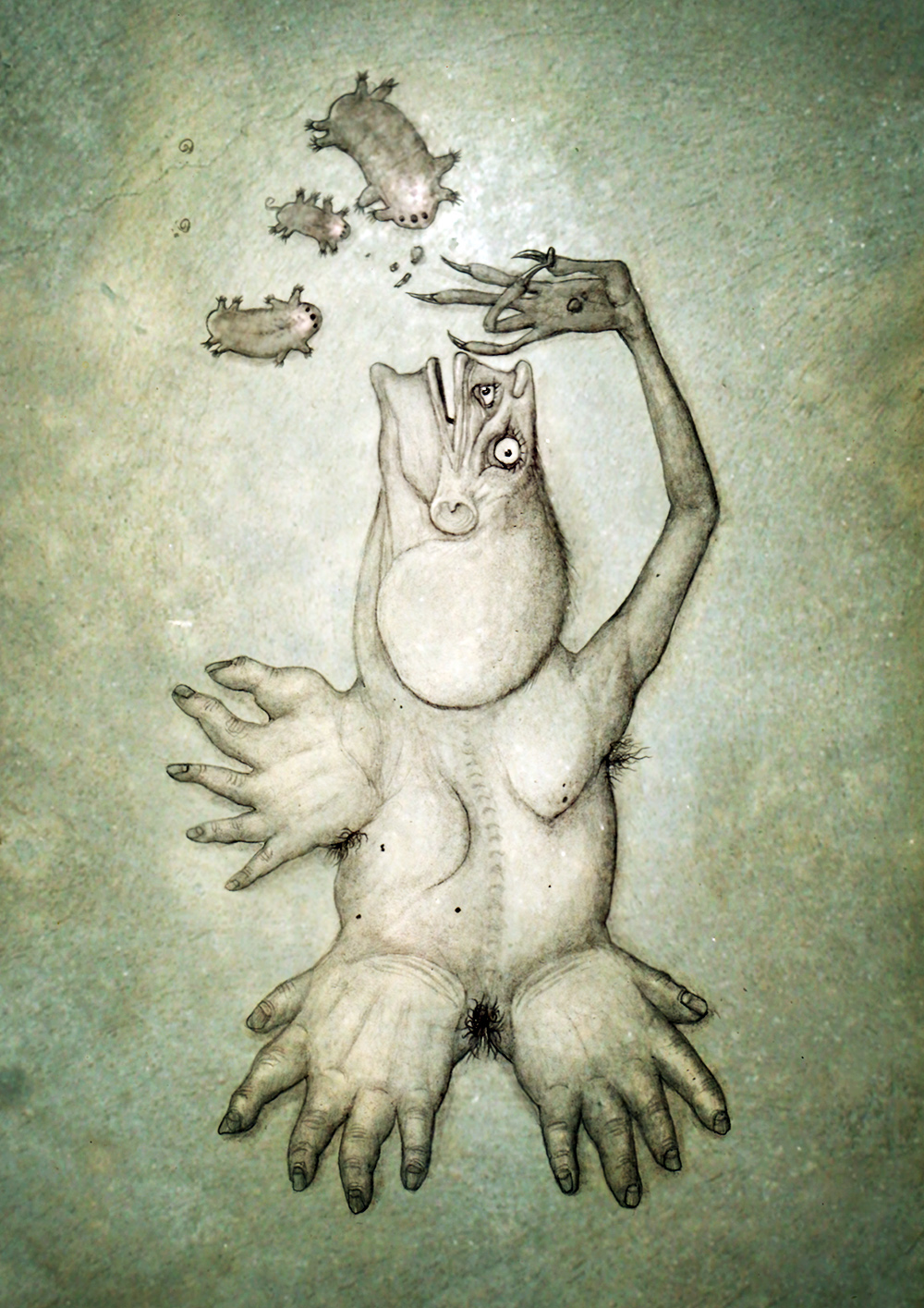 A far-future species of flatfish-like humanoid adapted to life on an extreme-high-gravity planet.
A far-future species of flatfish-like humanoid adapted to life on an extreme-high-gravity planet.
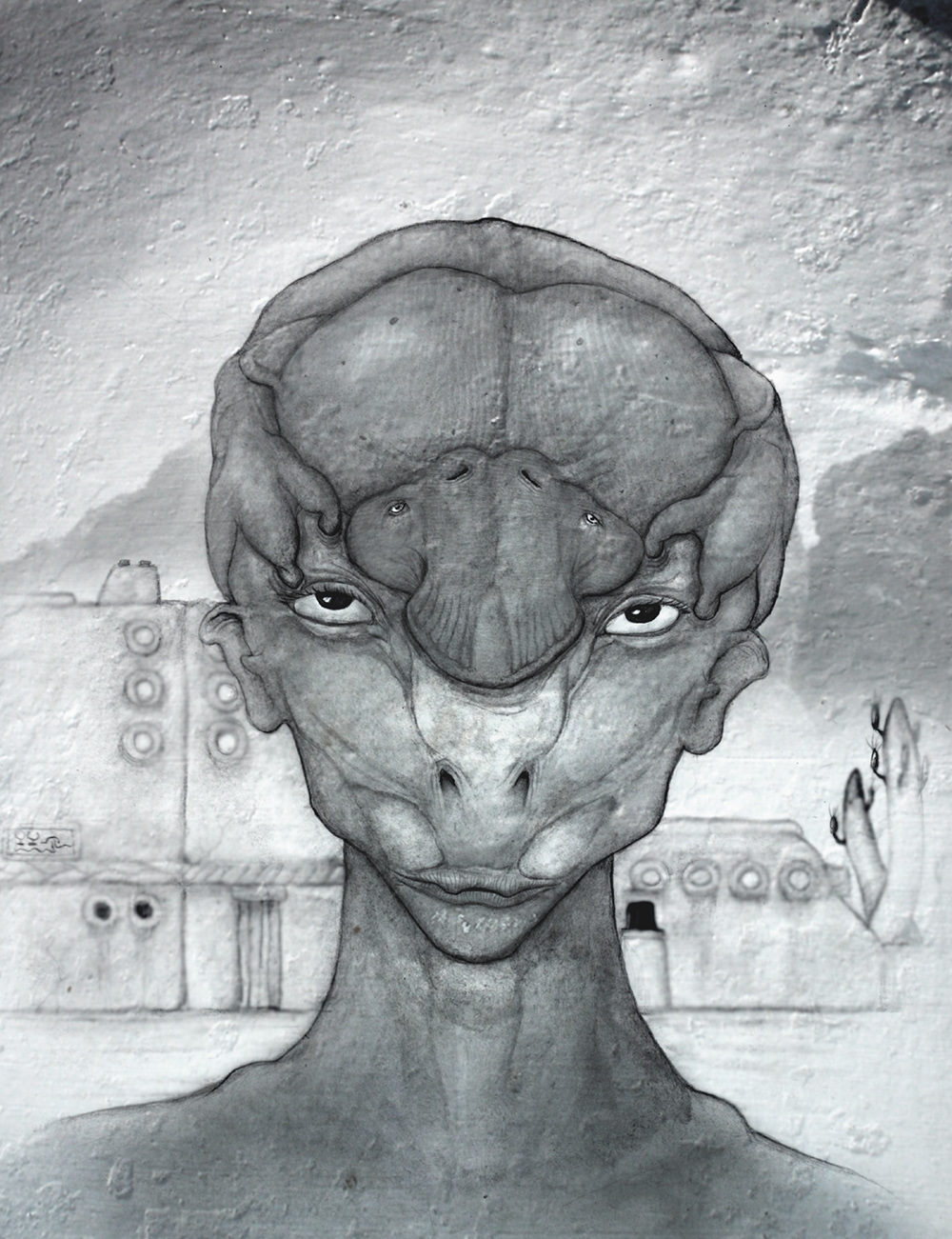 A future symbiont that rides on, and controls
humanoid hosts.
A future symbiont that rides on, and controls
humanoid hosts.
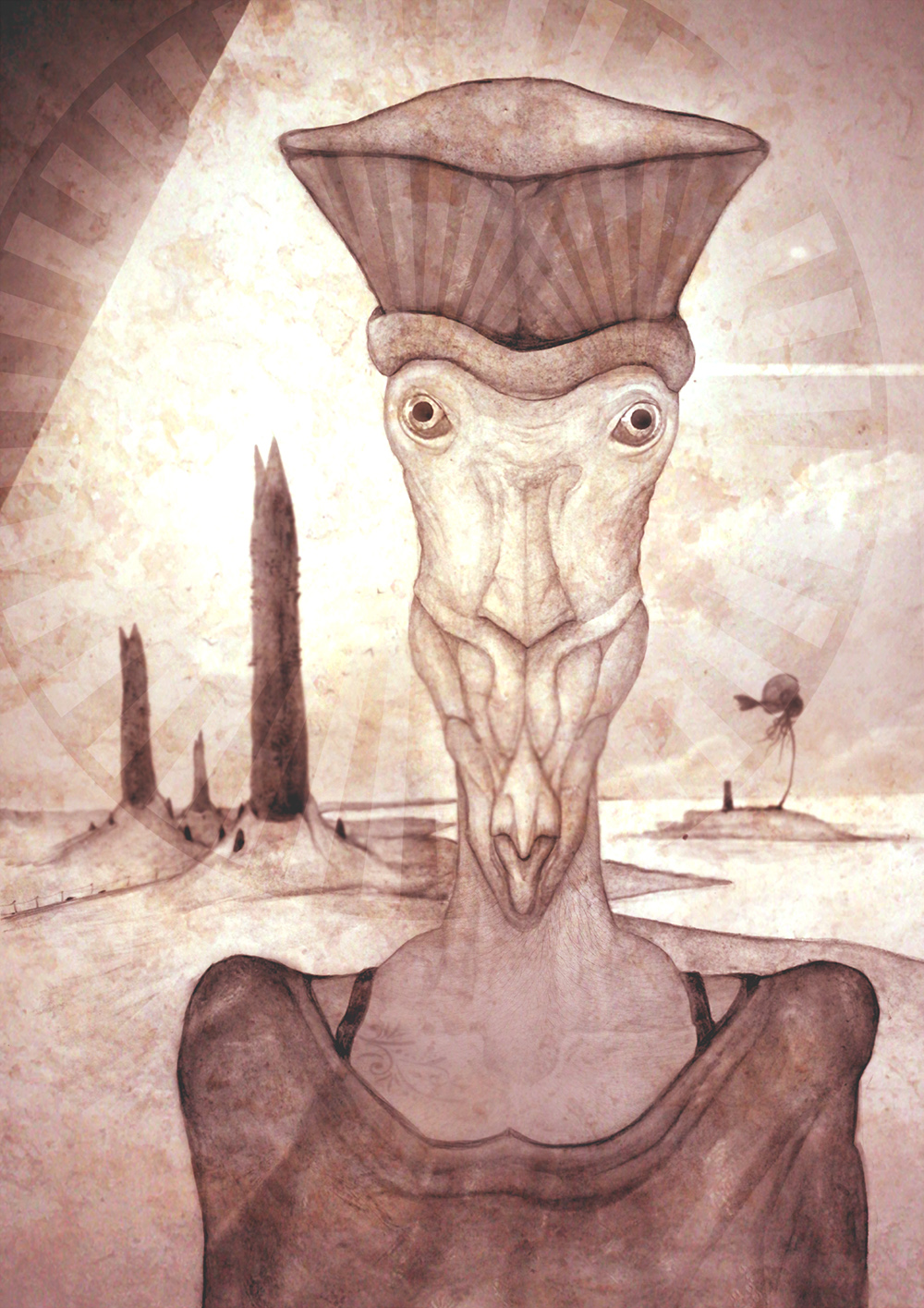 A distant-future species of human that now resembles an insect after long and torturous evolutionary processes.
A distant-future species of human that now resembles an insect after long and torturous evolutionary processes.
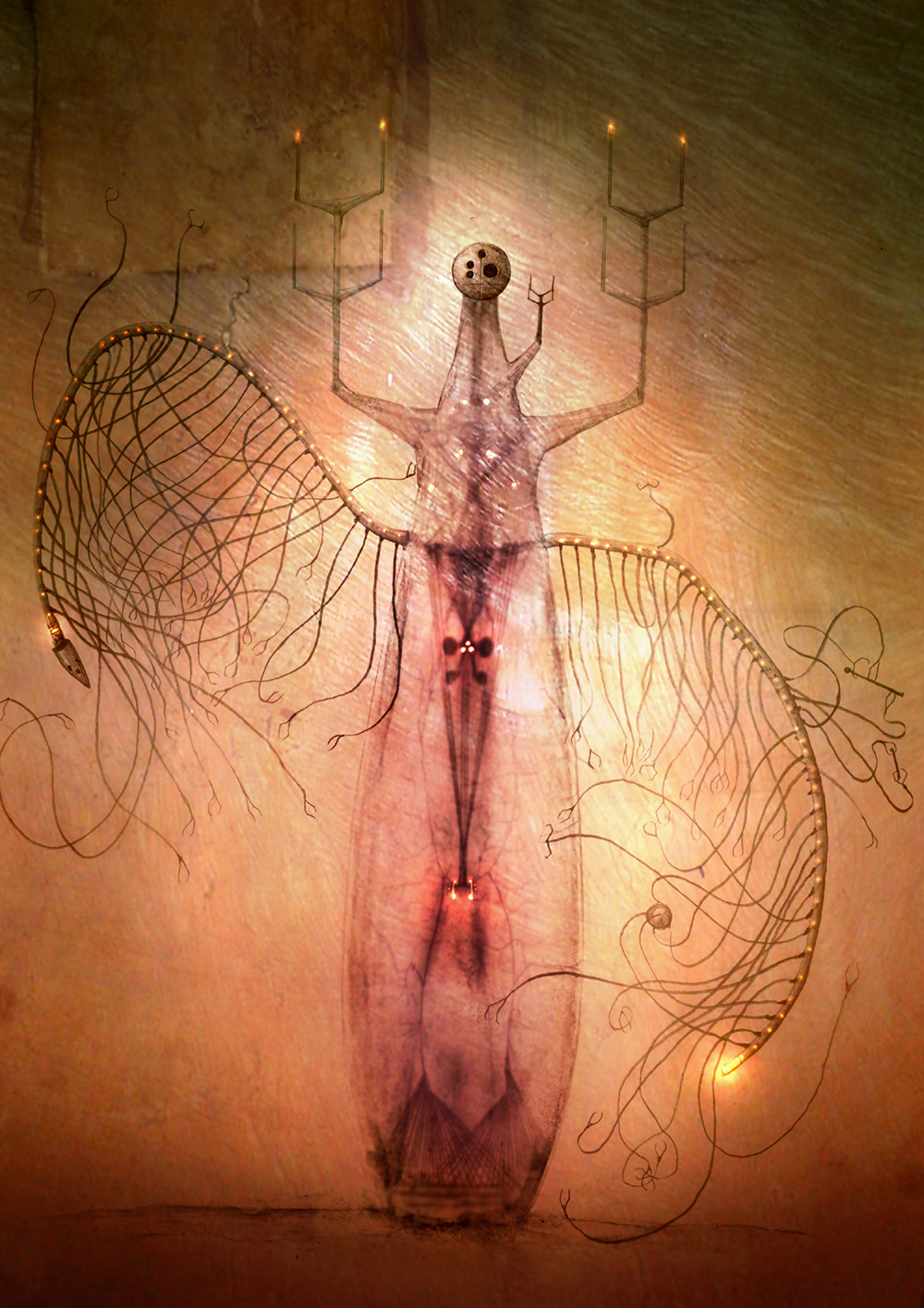 A far-future machine descended from artificial intelligences developed by earlier species of humans.
A far-future machine descended from artificial intelligences developed by earlier species of humans.
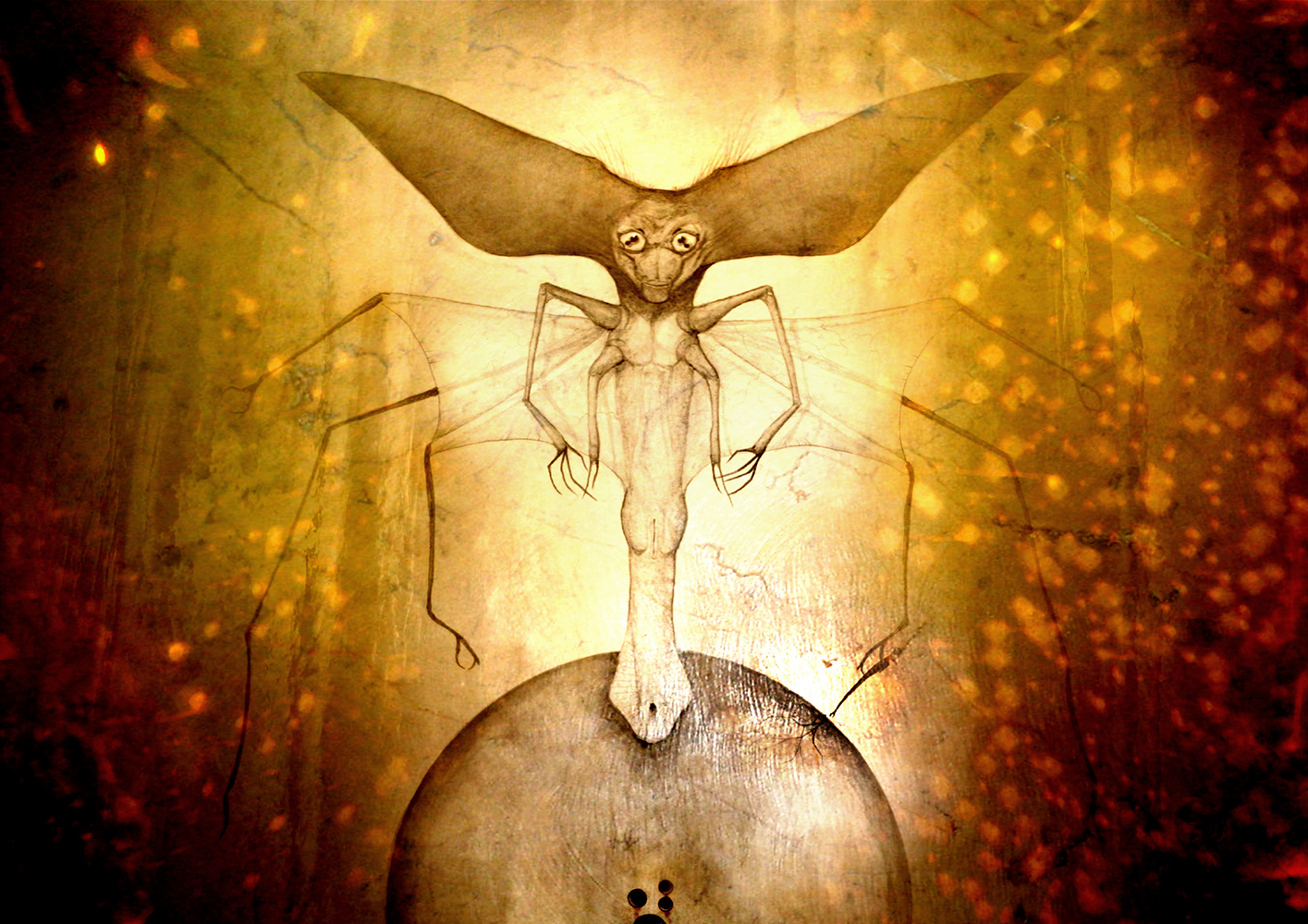 A far-future of zero-gravity human species; with insect-like limbs evolved from its fingers; and giant, wing-like brain lobes. A descendant of the zero-gravity human species illustrated above. Download All Tomorrows for an extended gallery and additional details.
A far-future of zero-gravity human species; with insect-like limbs evolved from its fingers; and giant, wing-like brain lobes. A descendant of the zero-gravity human species illustrated above. Download All Tomorrows for an extended gallery and additional details.
***
Intelligent descendants of dinosaurs and relatives
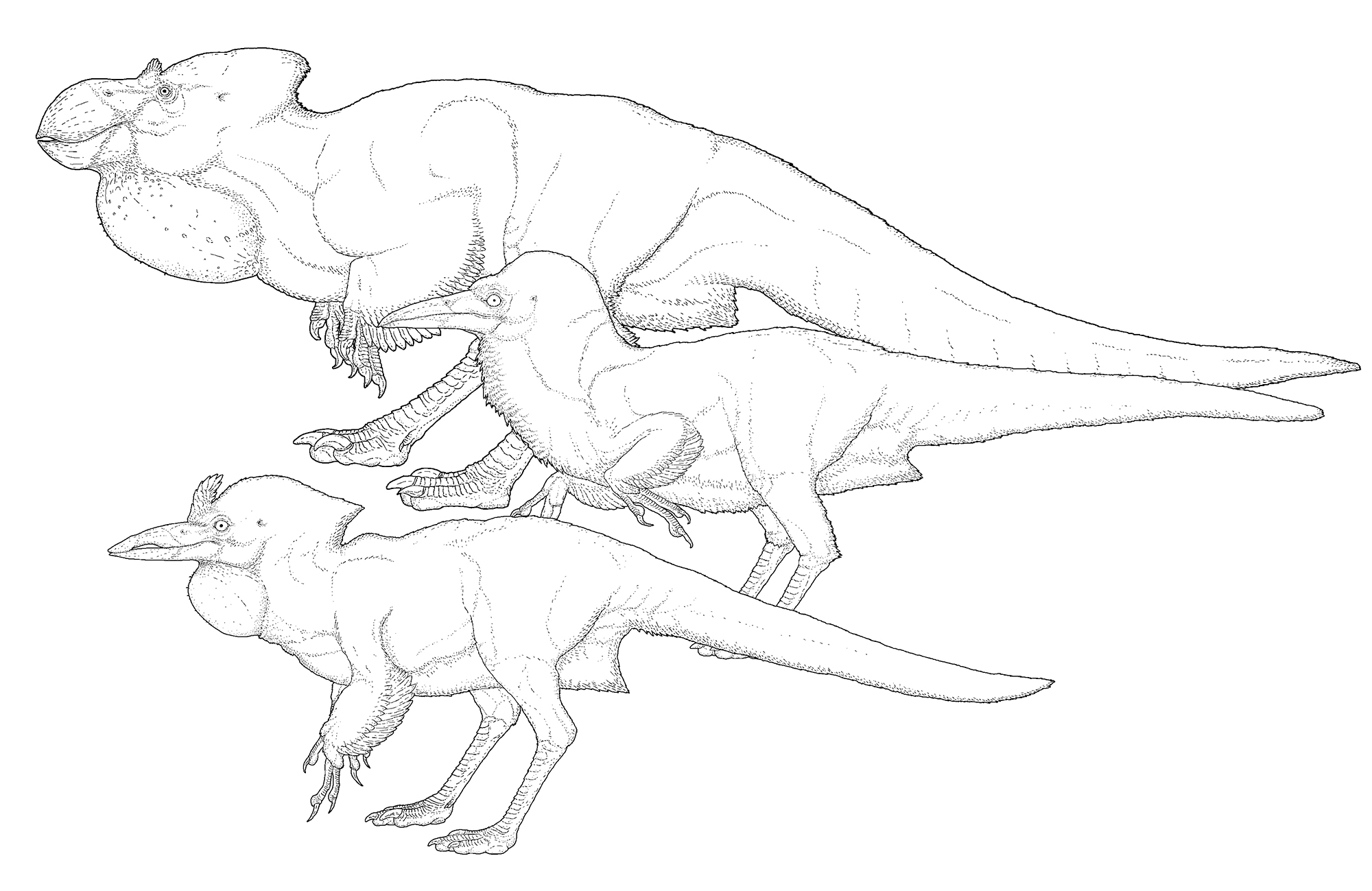
In 2010 I designed a series of intelligent species descended from dinosaurs and their relatives.
Above, from top to bottom: Enkidusaurus sylvanus; a giant form of forest-dwelling intelligent theropods, mainly herbivorous.
Avisapiens migrator; a species of migratory, slave-keeping, omnivorous intelligent theropods.
Avisapiens saurotheos; a related species, localised in many places across Eurasia and Africa.
These three species were imagined to live in the same timeline.
Each species shown below, on the other hand, hails from its own speculative timeline.
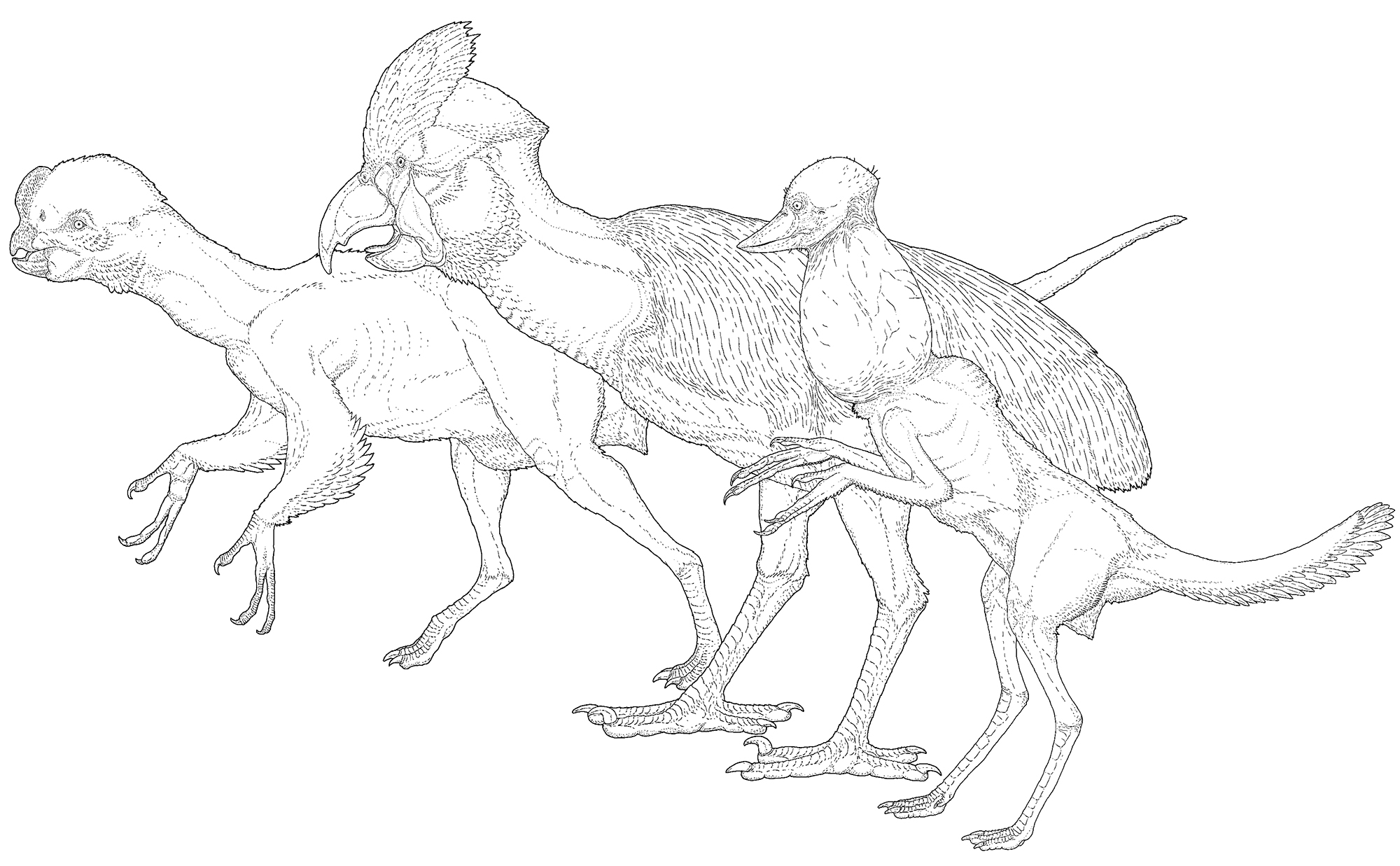
Above, from left to right: Ovisapiens dextromanus; an oviraptorosaur-descendant with reduced wing feathers that enable it to manipulate objects.
Psittacosapiens australis; a giant, flightless, intelligent species of parrot, from an alternative Australia.
Anthropornithoides erectus; a vaguely humanoid species descended from basal birds.
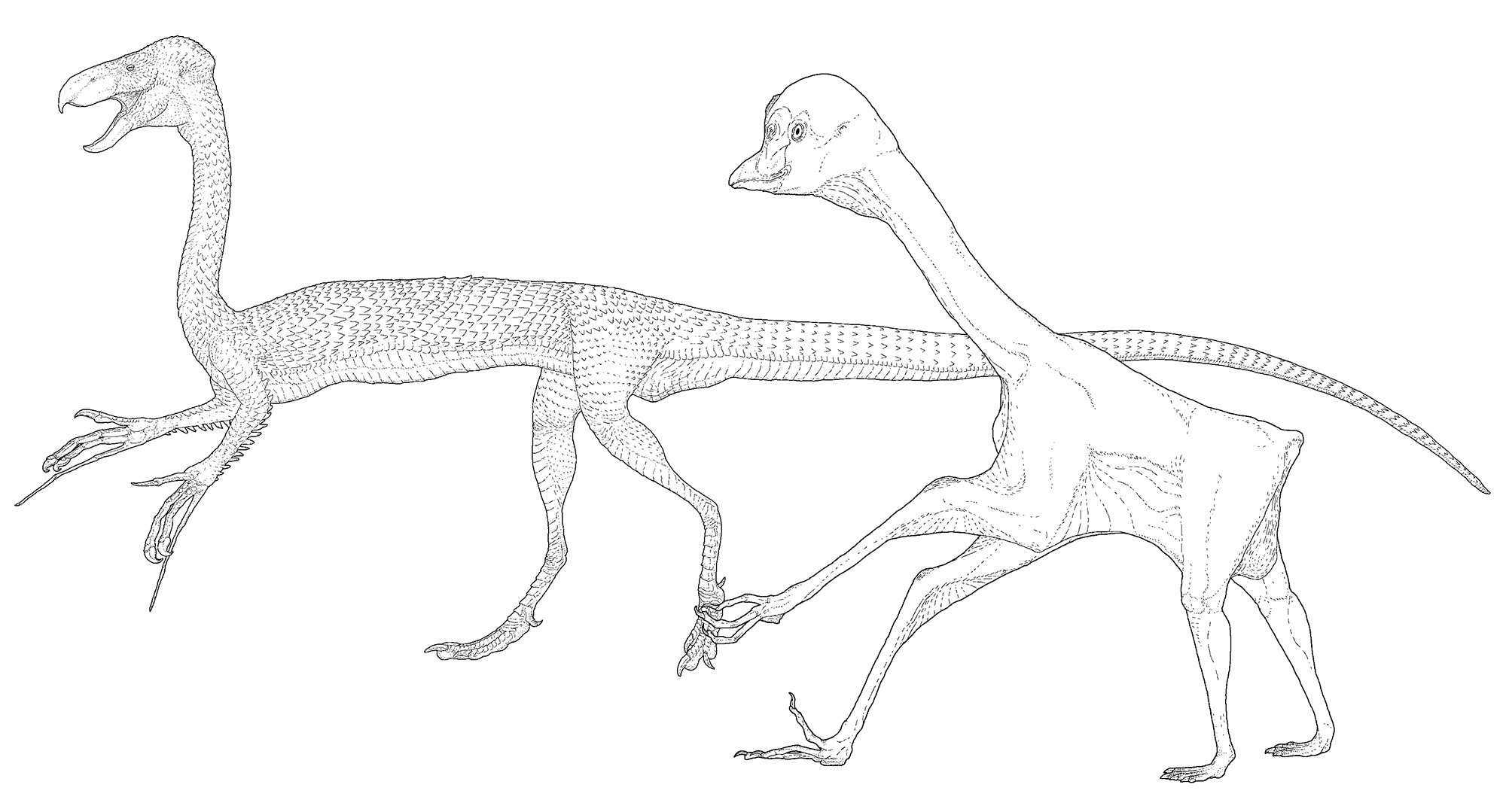
Extremely divergent forms, from left to right: Lacertania aberromanis; a descendant of prolacertiform reptiles, from an alternative Triassic era.
Sophoazhdraco apterus; an intelligent species descended from flightless pterosaurs.

Finally, Barosapiens titanis; a giant, herbivorous intelligent species descended from sauropod dinosaurs. Obviously, no being shown in this selection is a real creature, living or extinct. Instead, they are results of an exercise in speculative evolution.
***
A confused Stegosaurus
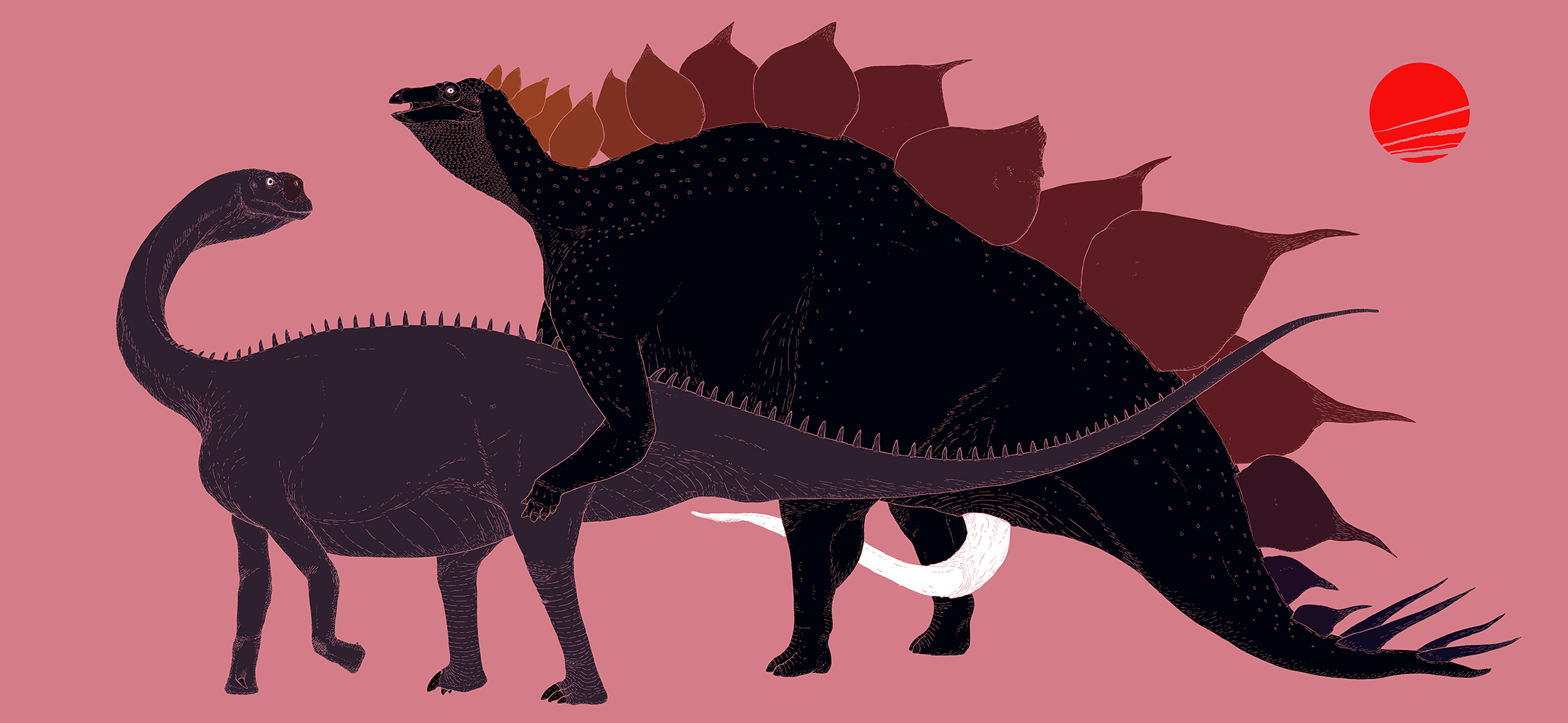
A bull Stegosaurus tries to mate with a Haplocanthosaurus in a fit of confused sexual rage. In the present day, sexually frustrated male elephants have been observed trying to mate with rhinos and hippopotami in a similar manner. From All Yesterdays.
***
Future animals
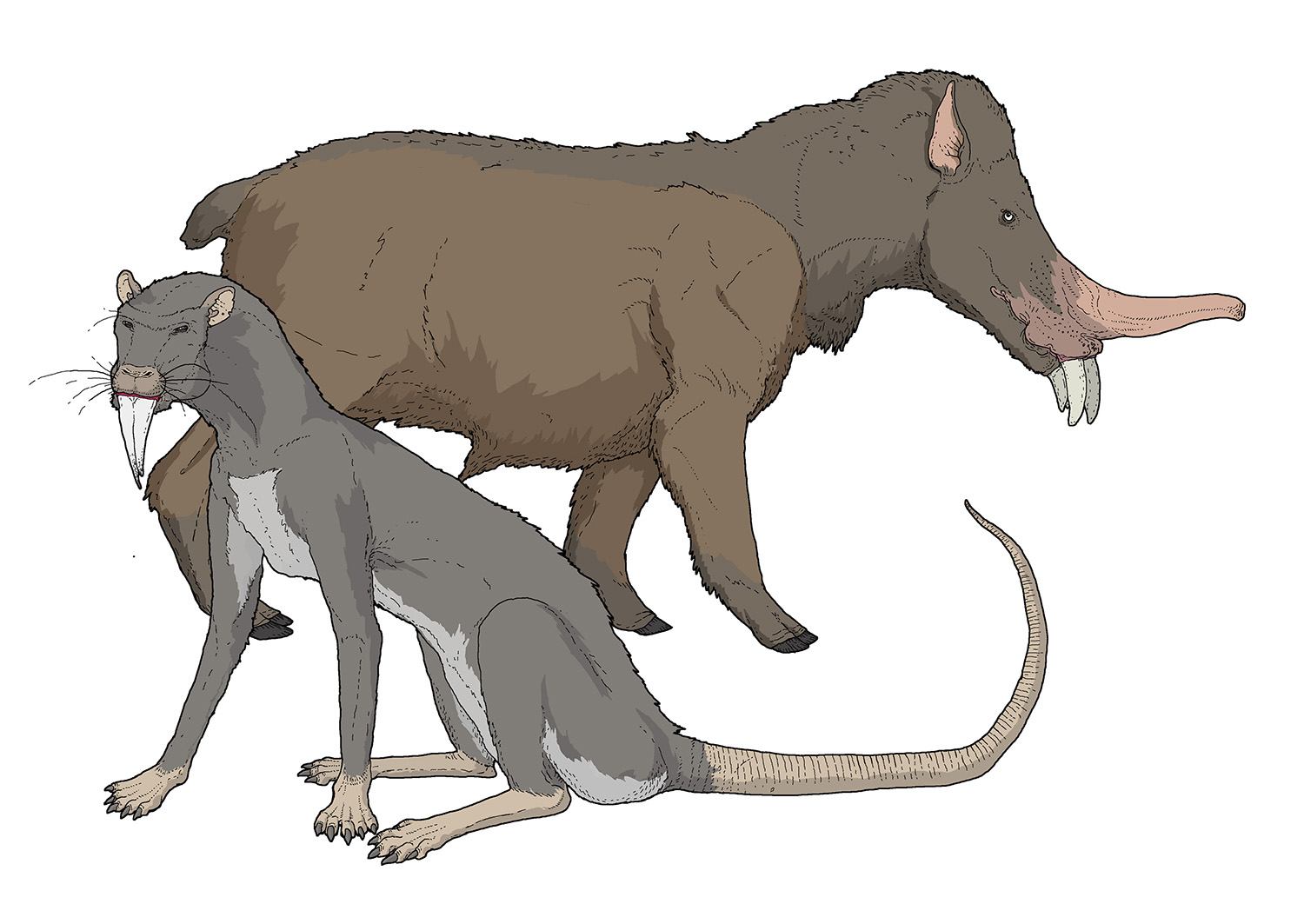
Old illustrations of a predatory sabretooth rat; and a tapir-like animal descended from pigs, results of an exercise in speculative evolution.
***
Doswellia
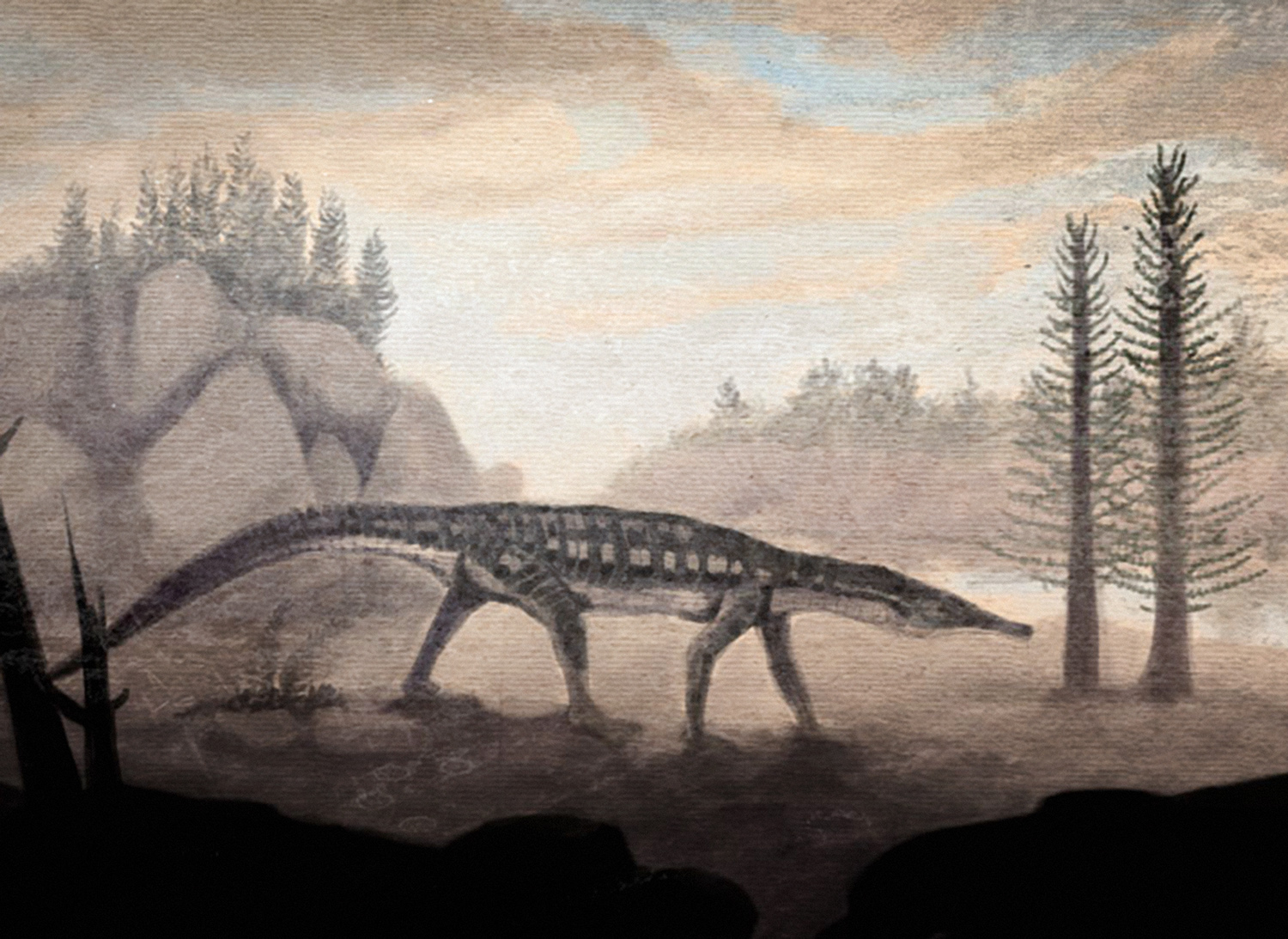
A collaborative illustration with my friend John Conway of Doswellia; an unusual prehistoric reptile distantly related to dinosaurs and crocodiles.
***
Interpretations of Pterodactylus
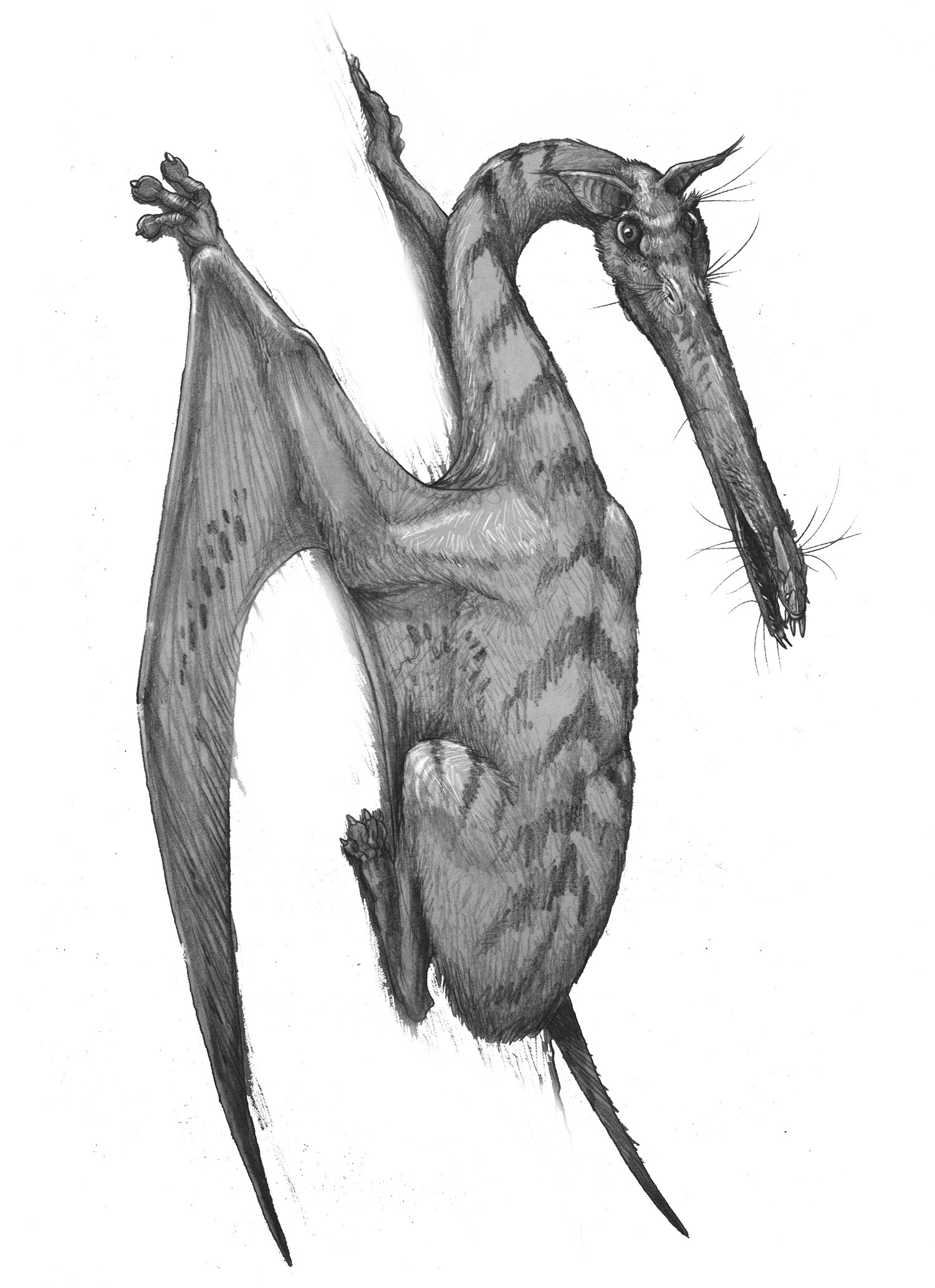
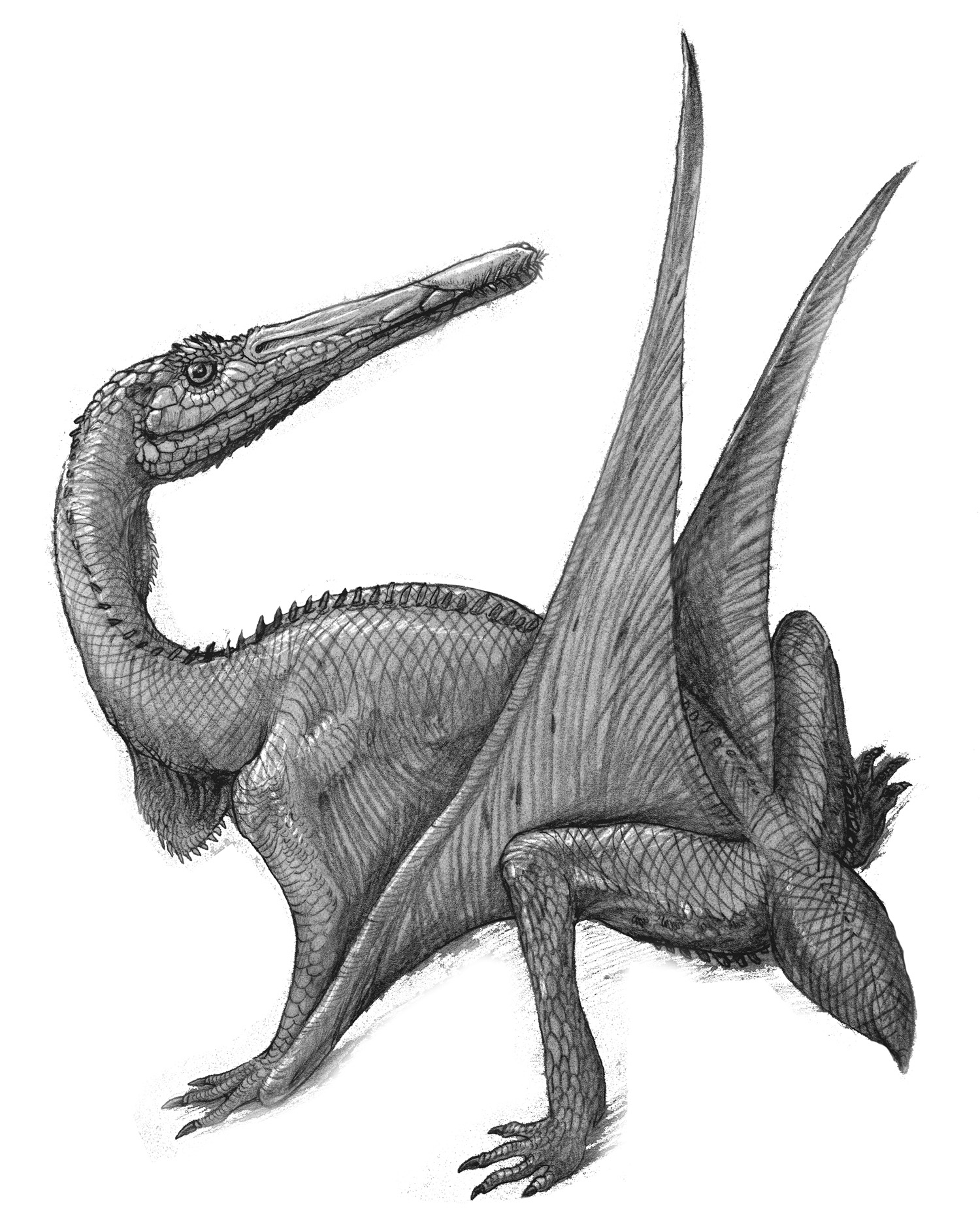
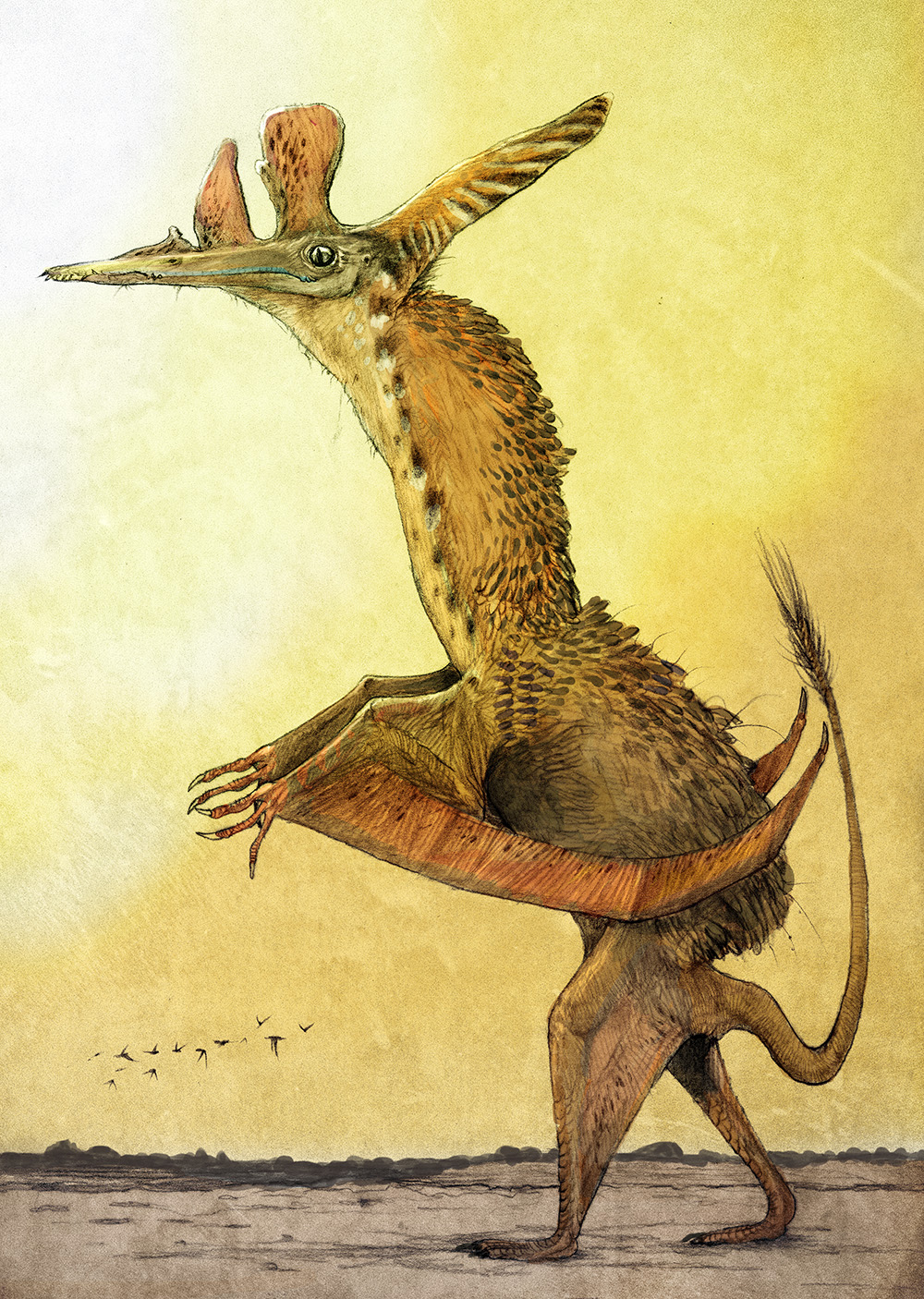
The flying reptile Pterodactylus, like many other fossil organisms, has been interpreted as wildly-different forms over the years. From top to bottom, these illustrations show interpretations of Pterodactylus as a bat-like marsupial, as proposed by English naturalist Edward Newman in 1843; a sluggish, gliding lizard - the standard view for the majority of the 20th century; and as a strange, crested squamate-derivative, as proposed by heterodox researcher David Peters in the mid-2000s.
***
Pixel evolution

Cladogram of hypothetical "pixel organisms" made in MS Paint; illustrating the emergence of complex forms and diversity from simple beginnings, through minor alterations.
***
***
Copyright laws protect all content associated with this site.
Contact c.m.kosemen@gmail.com for inquiries.
***
